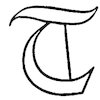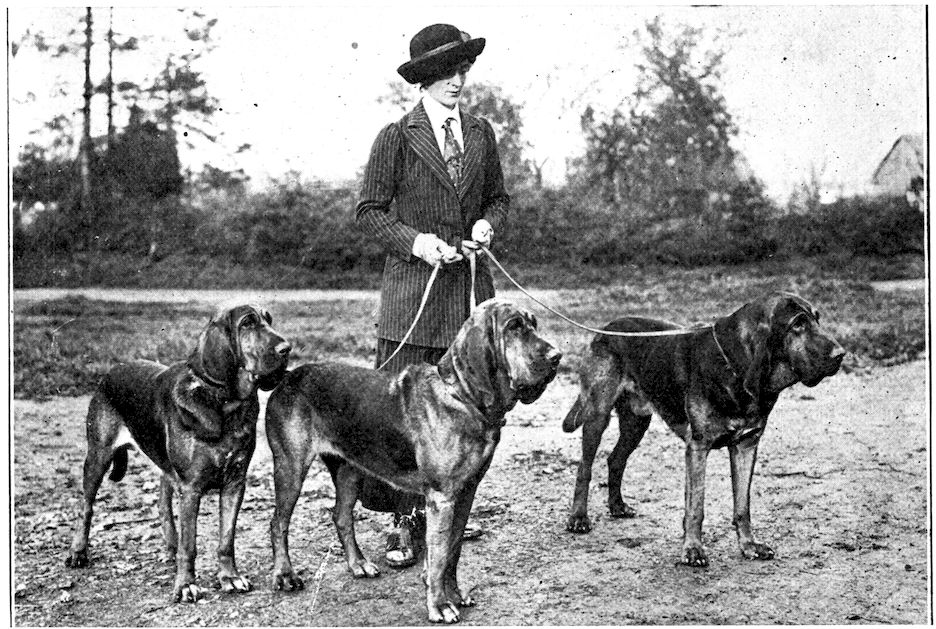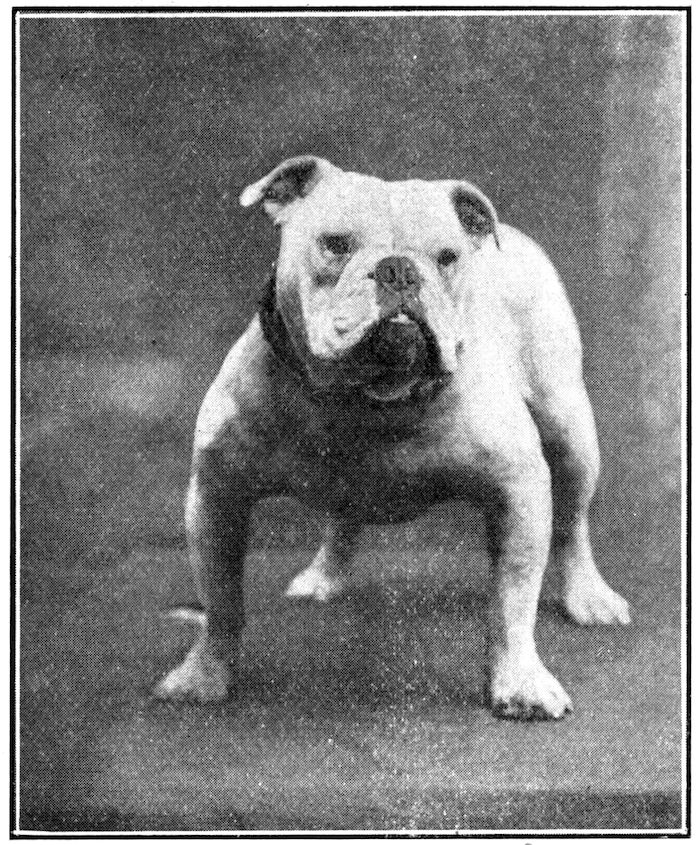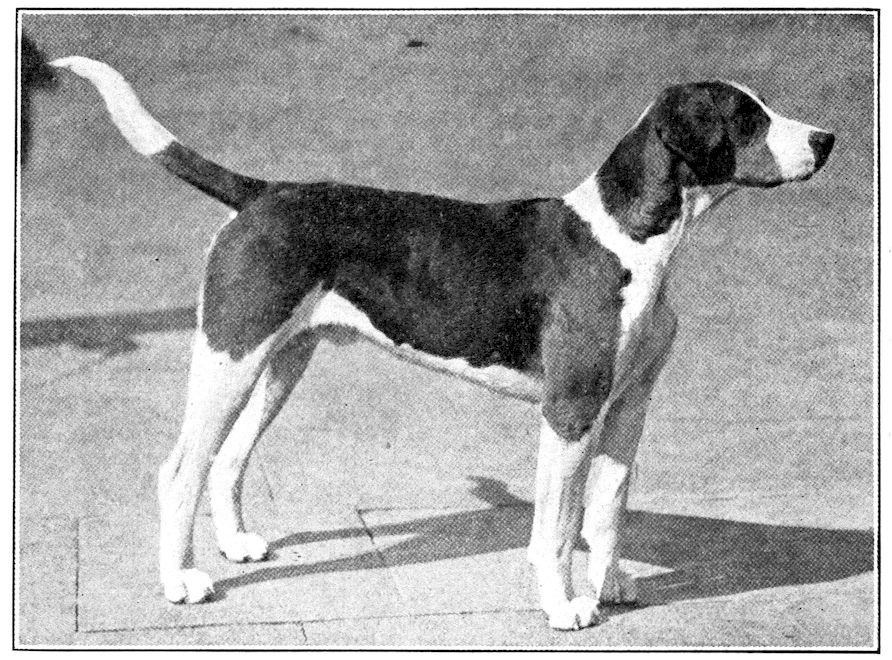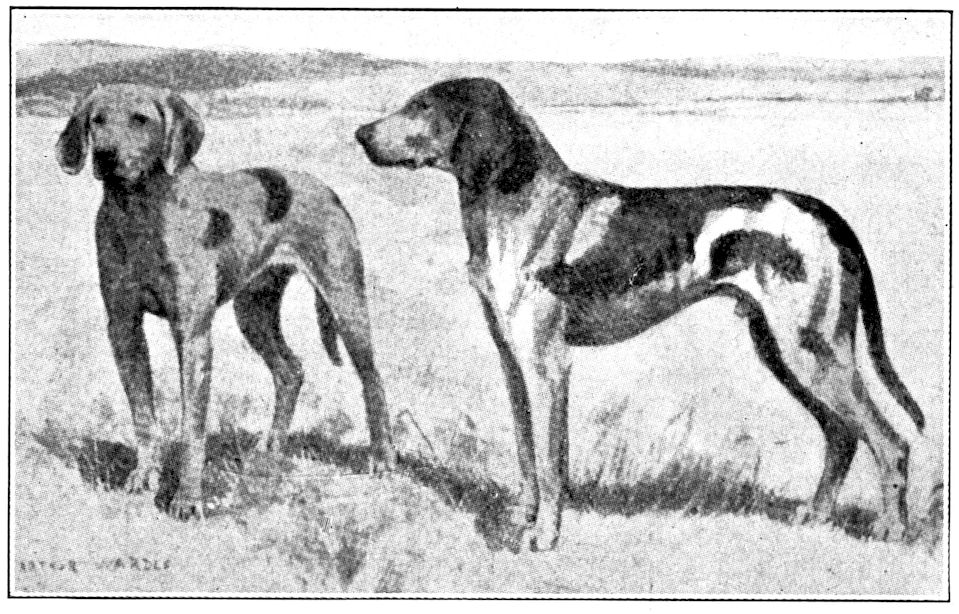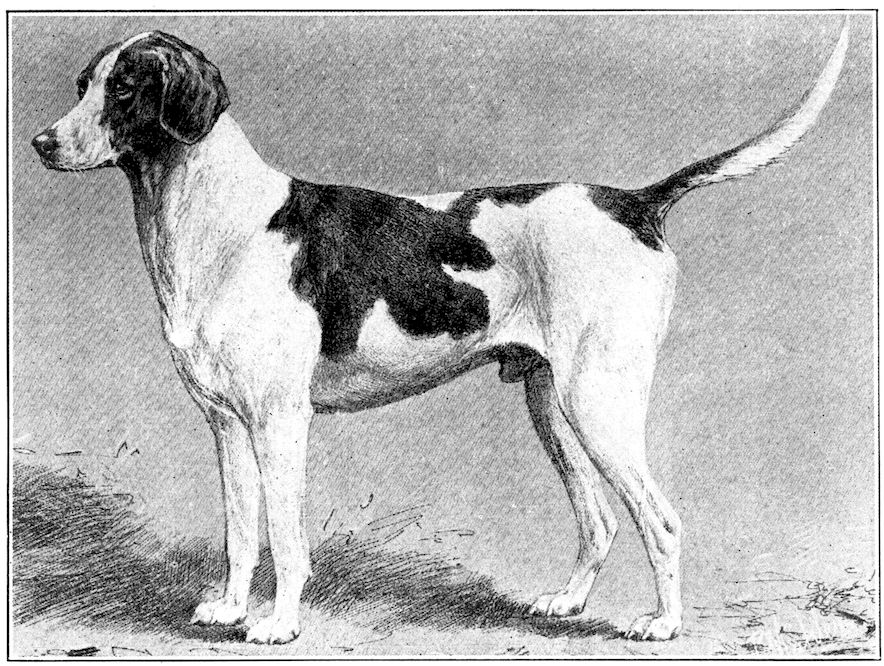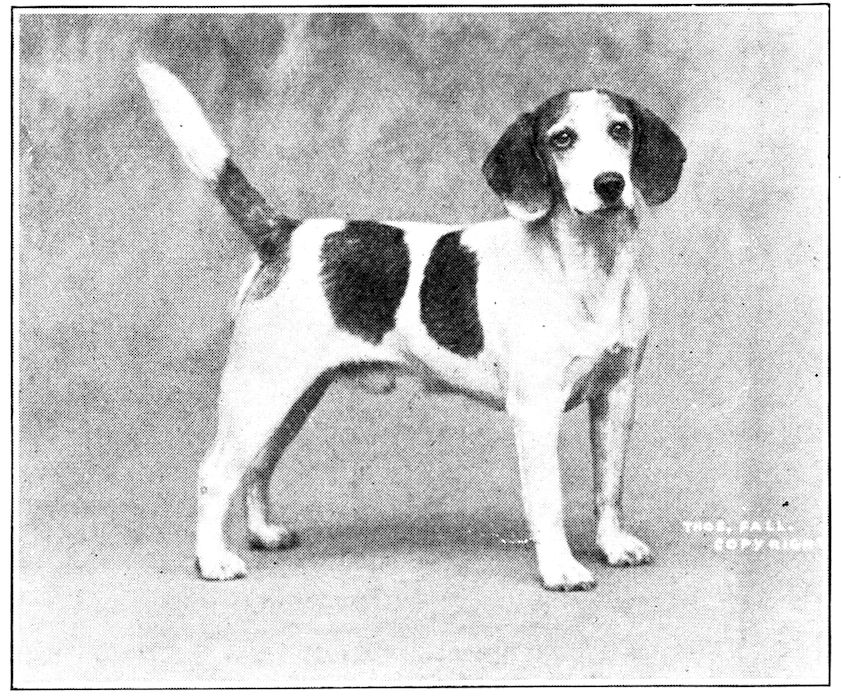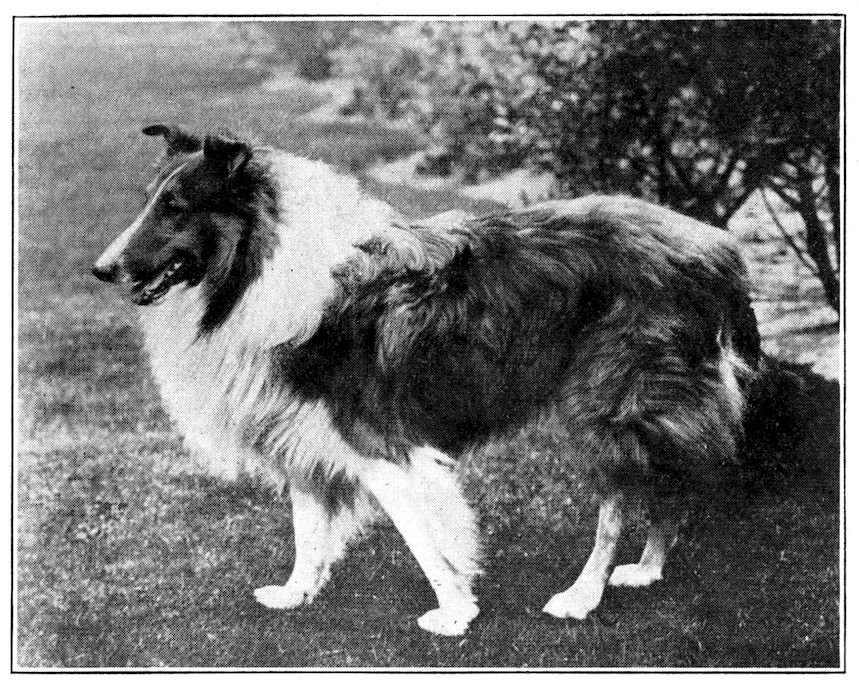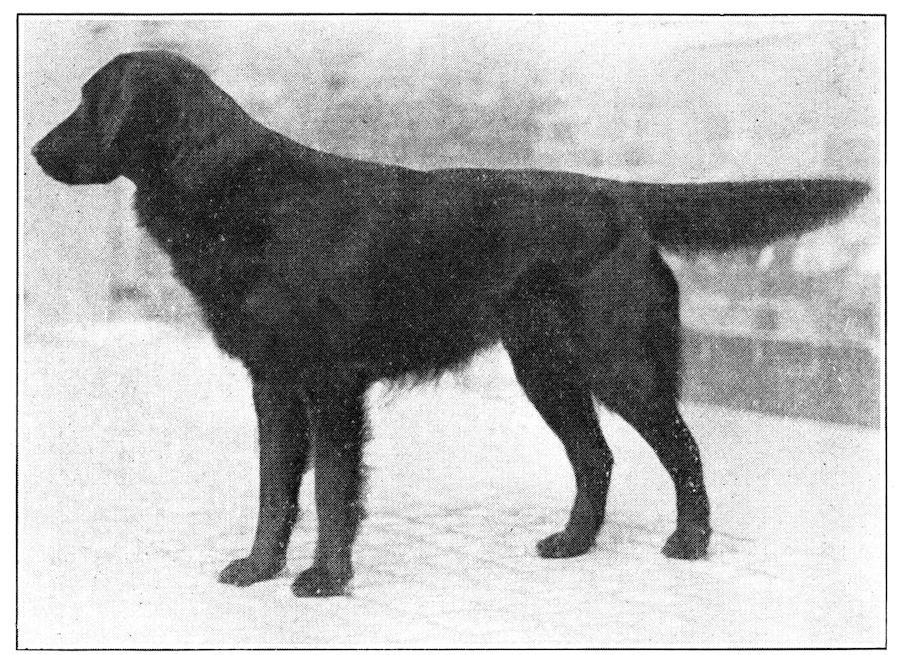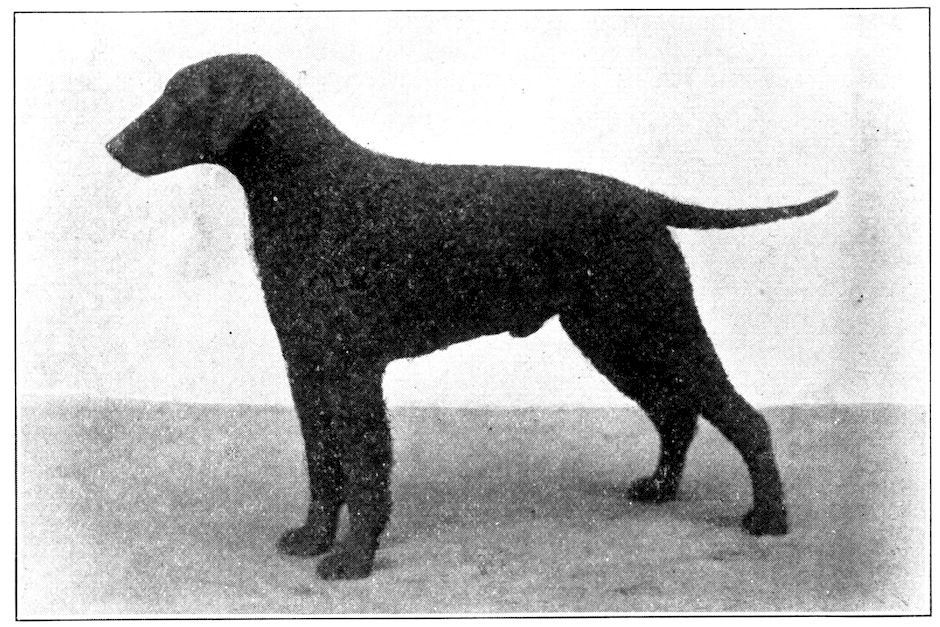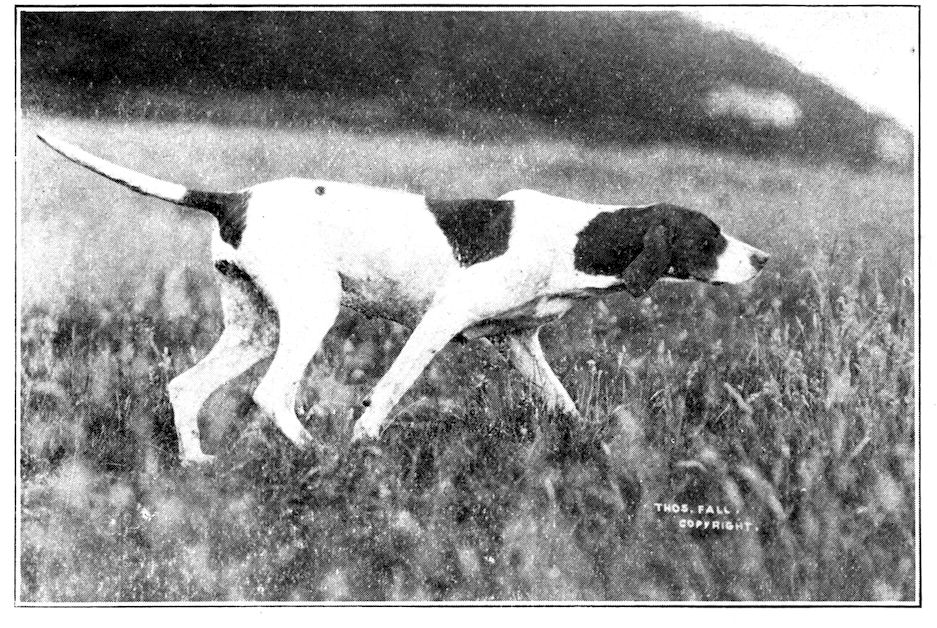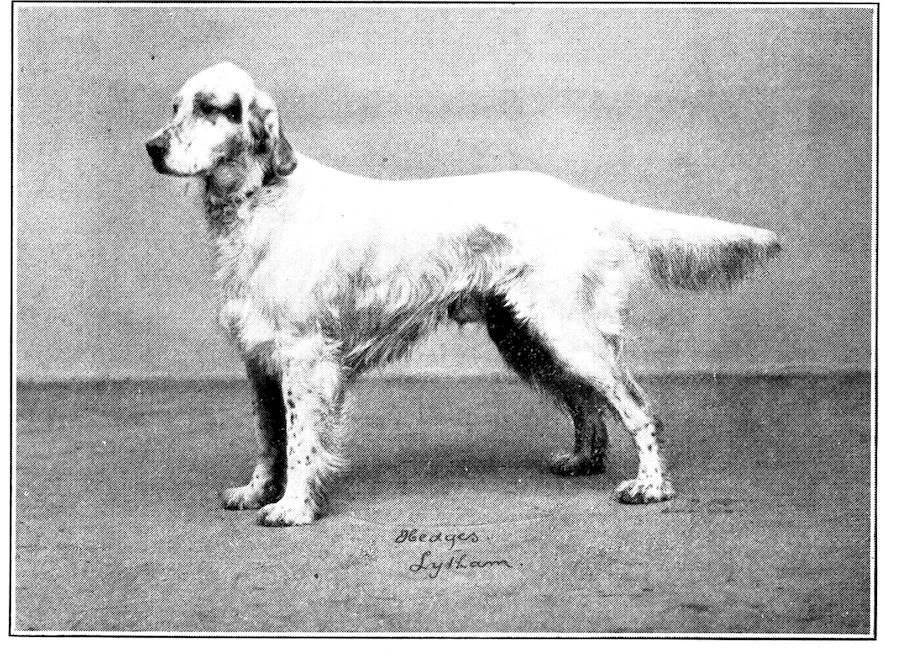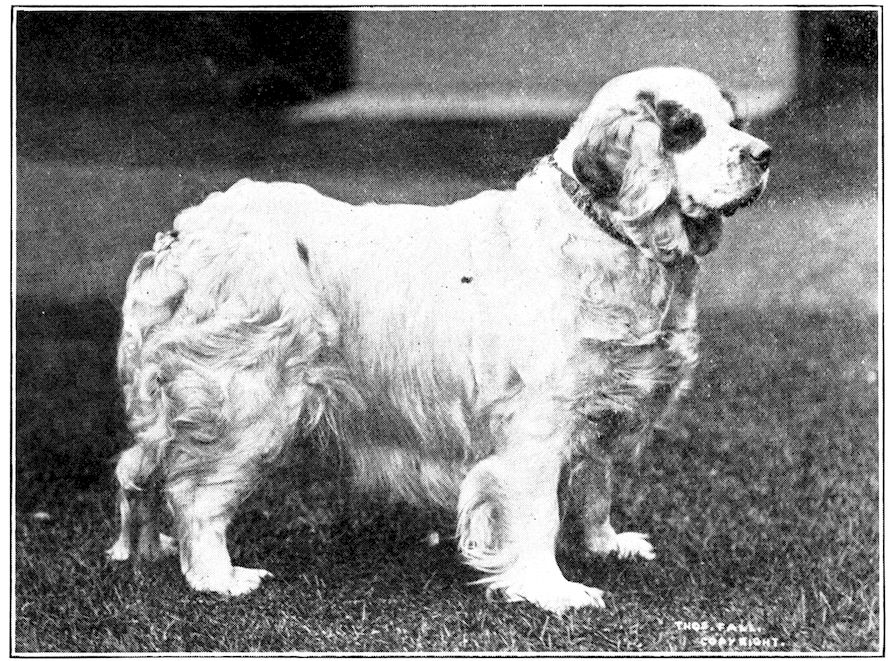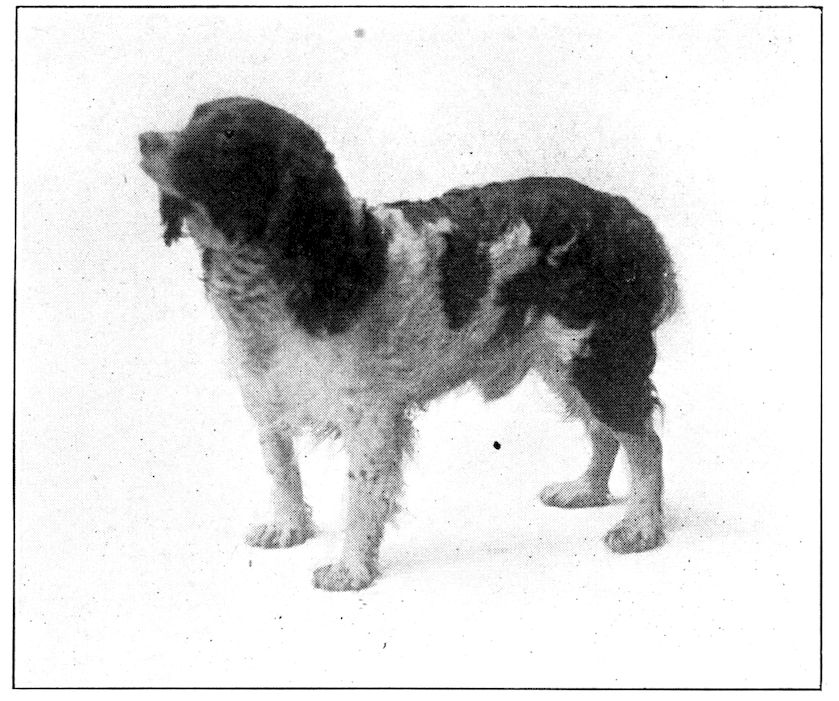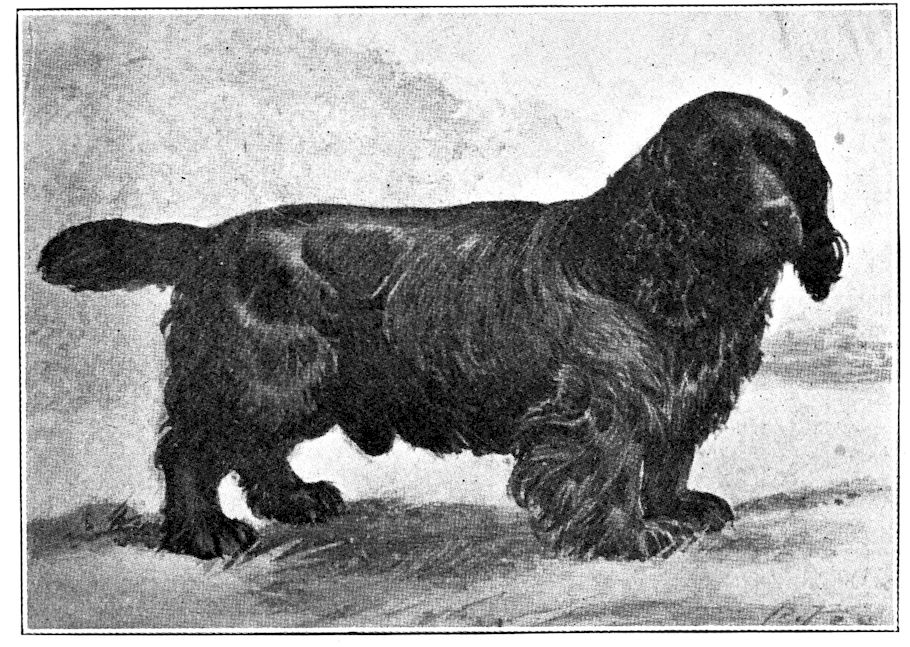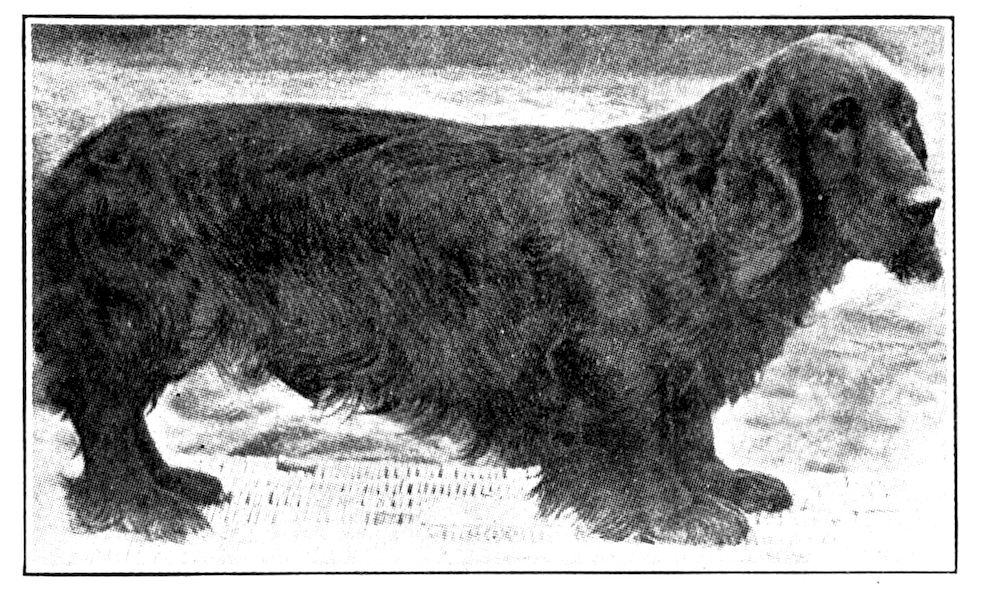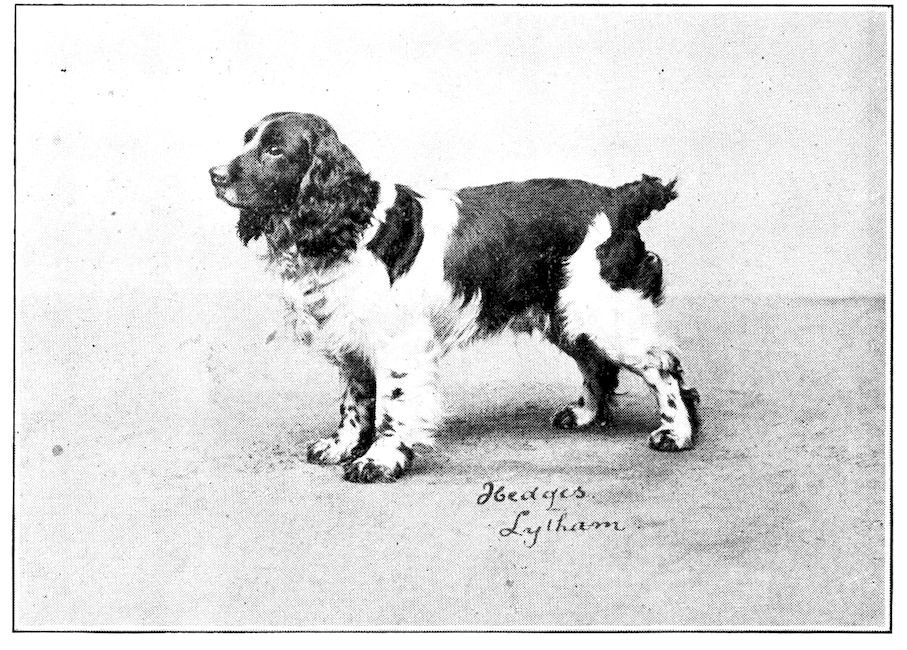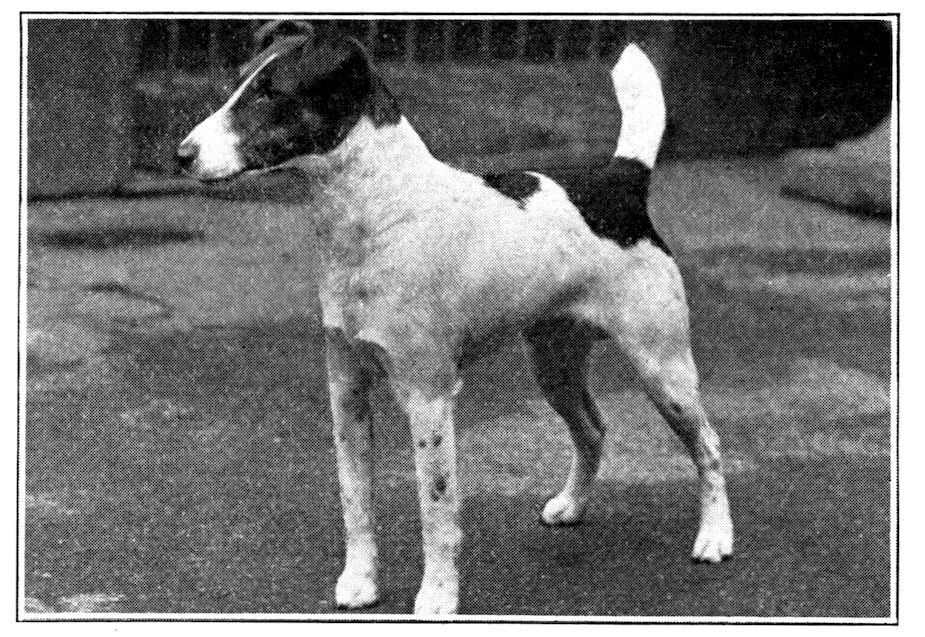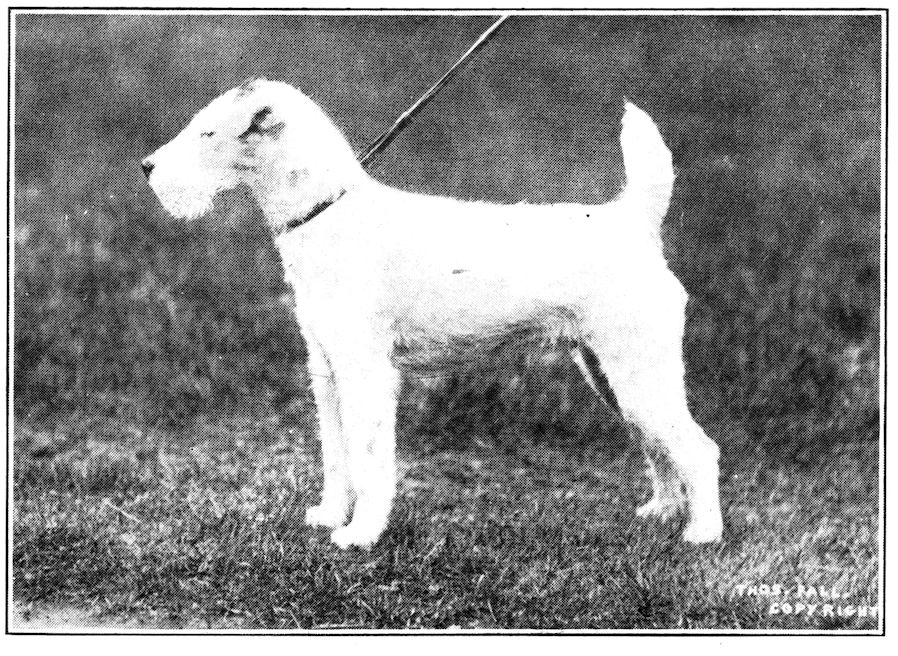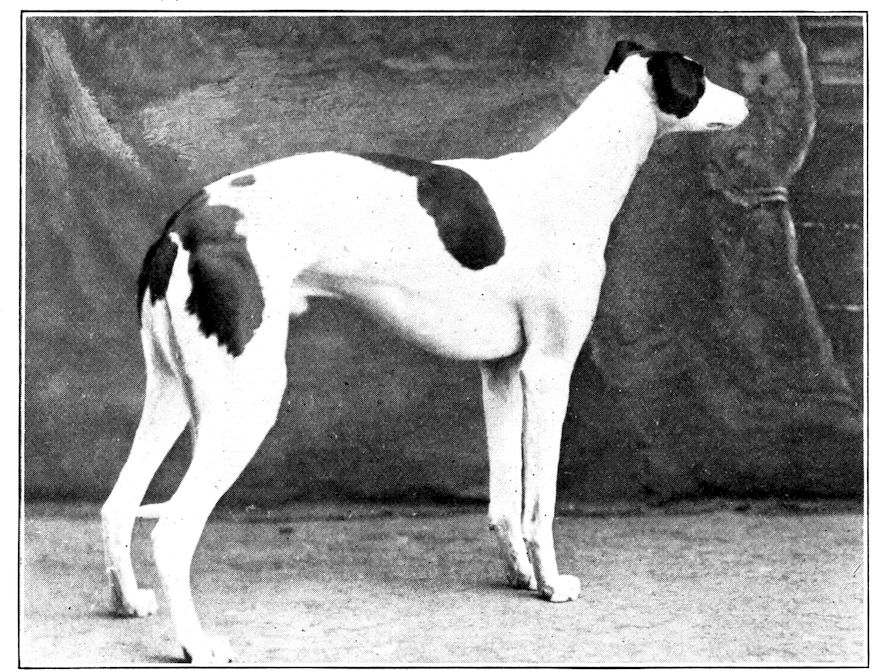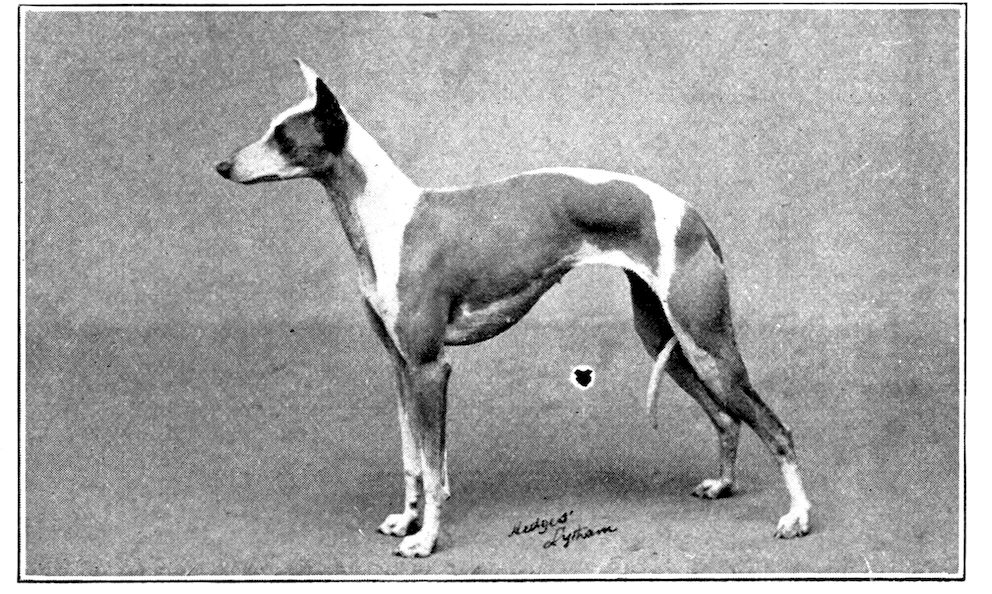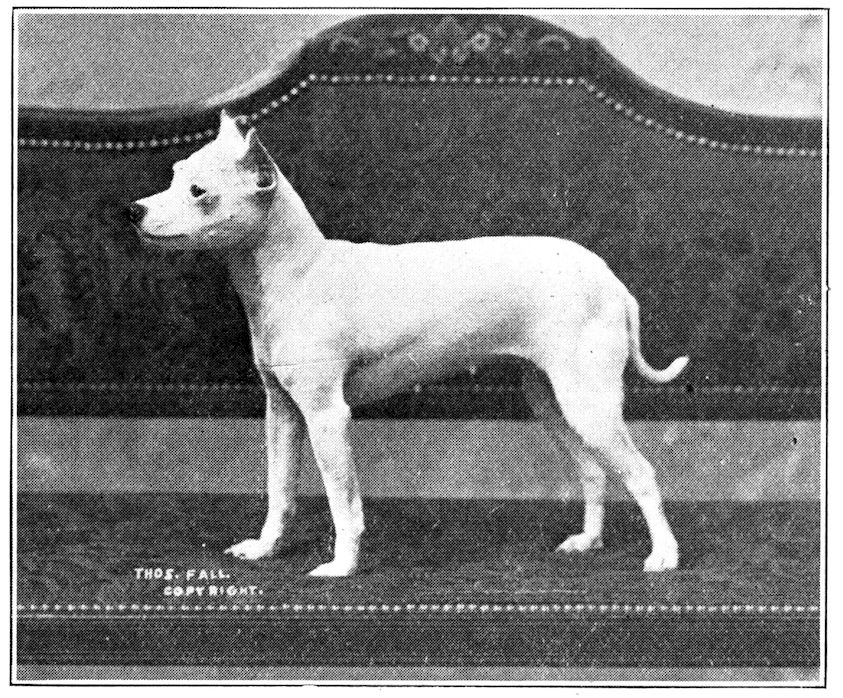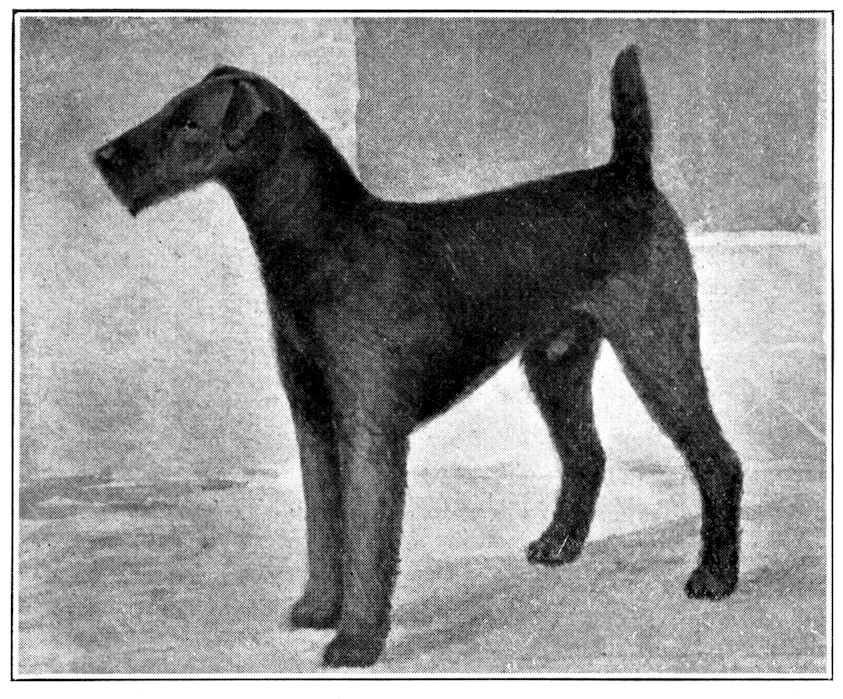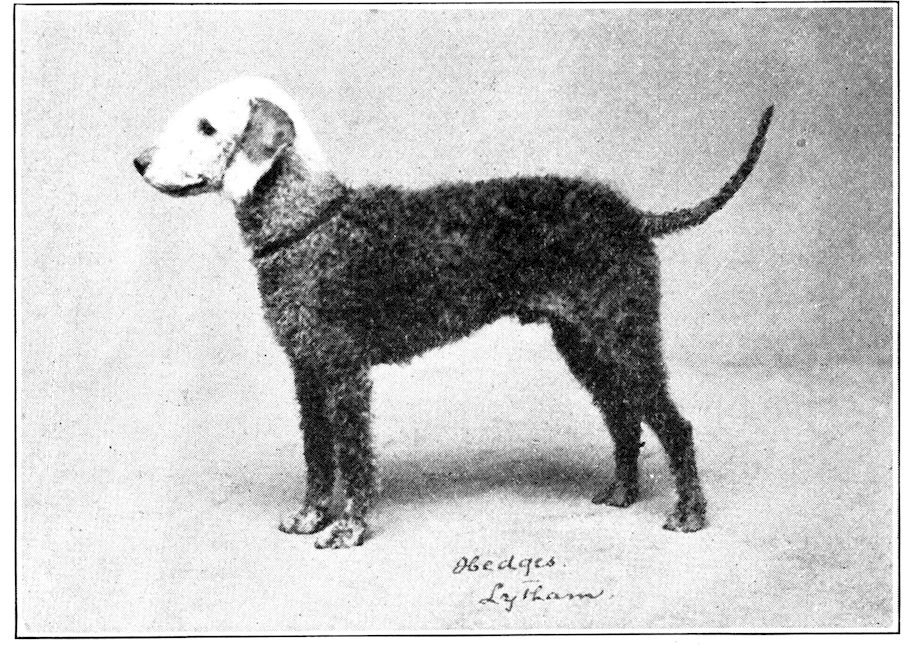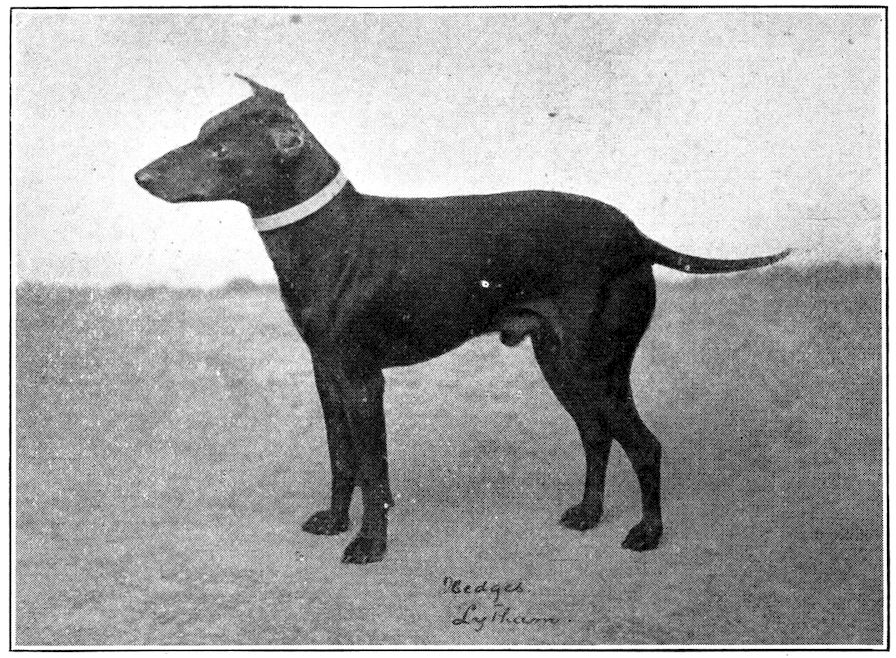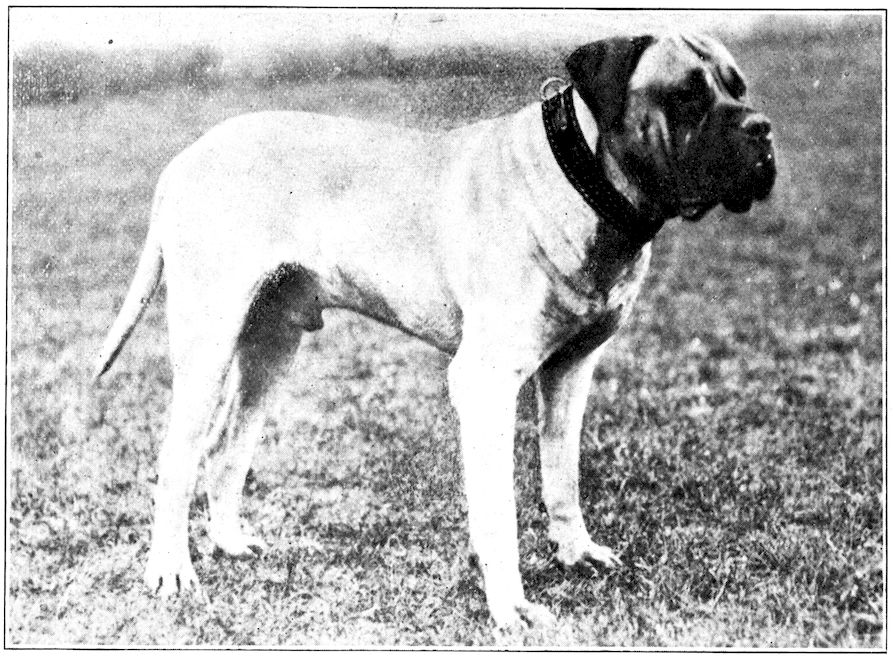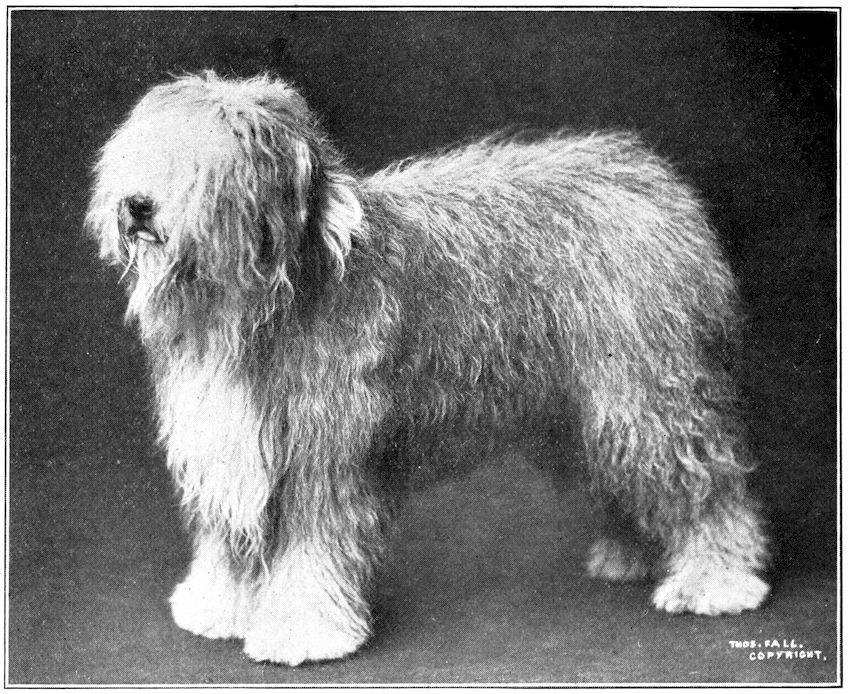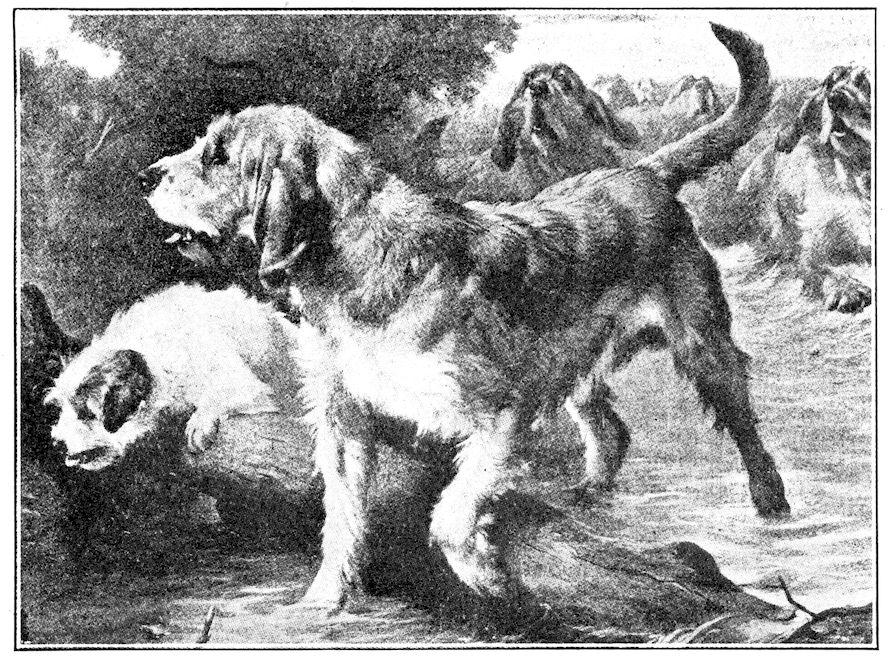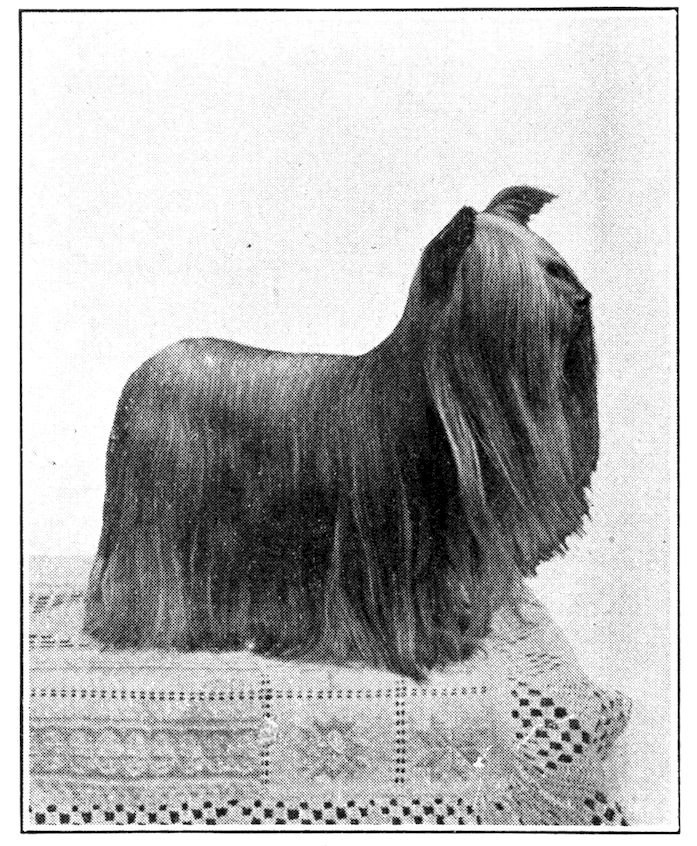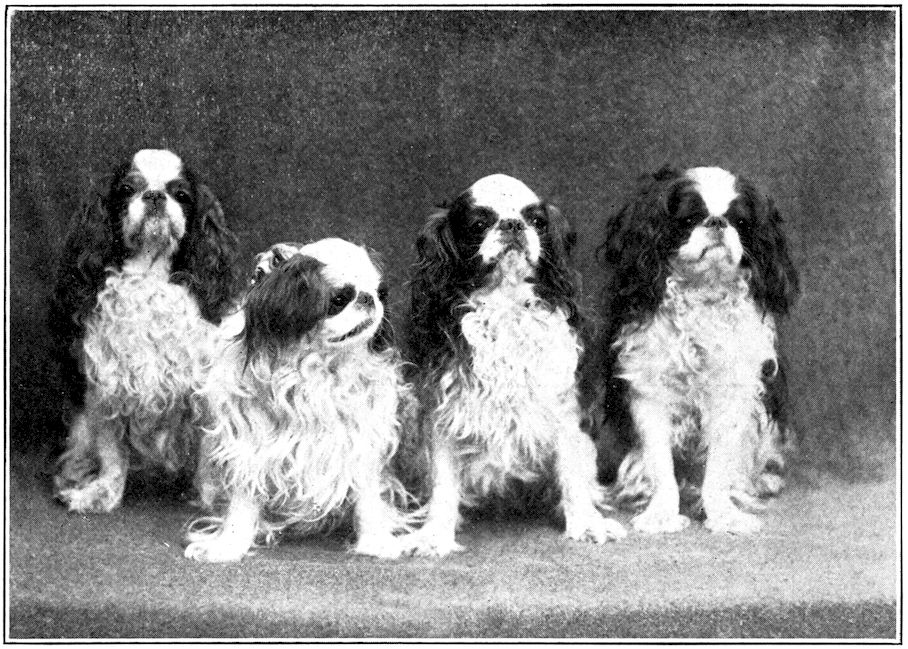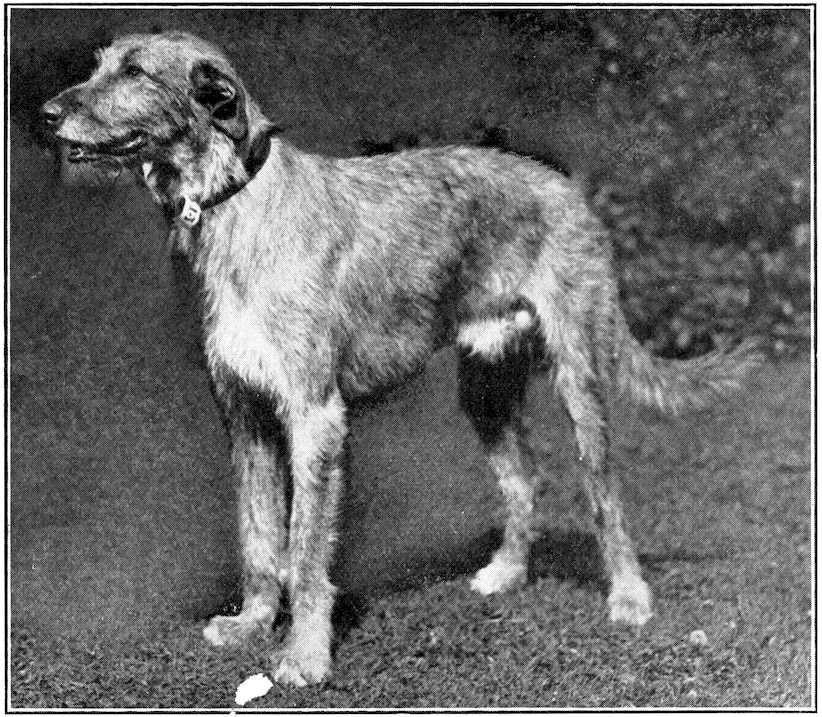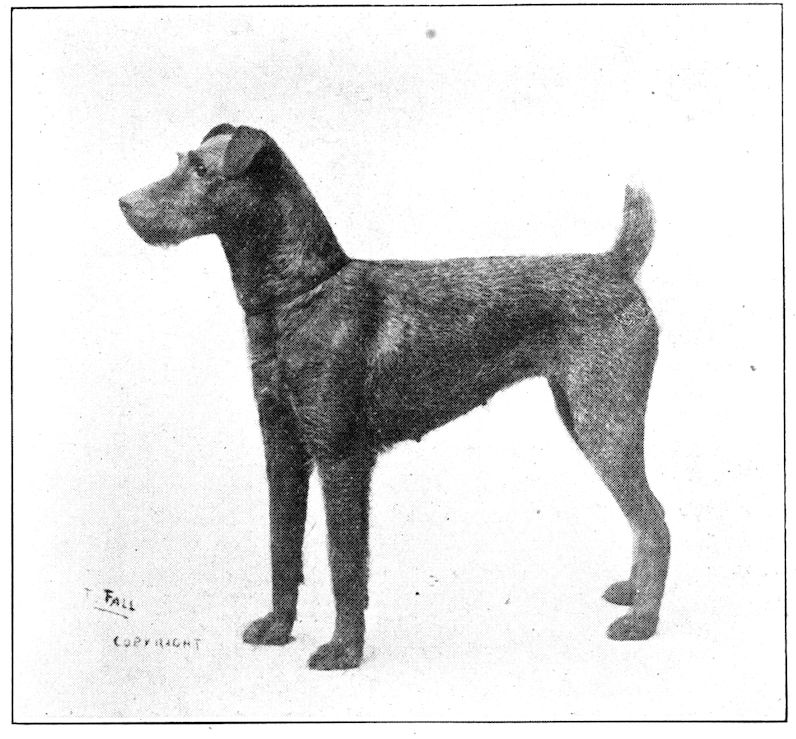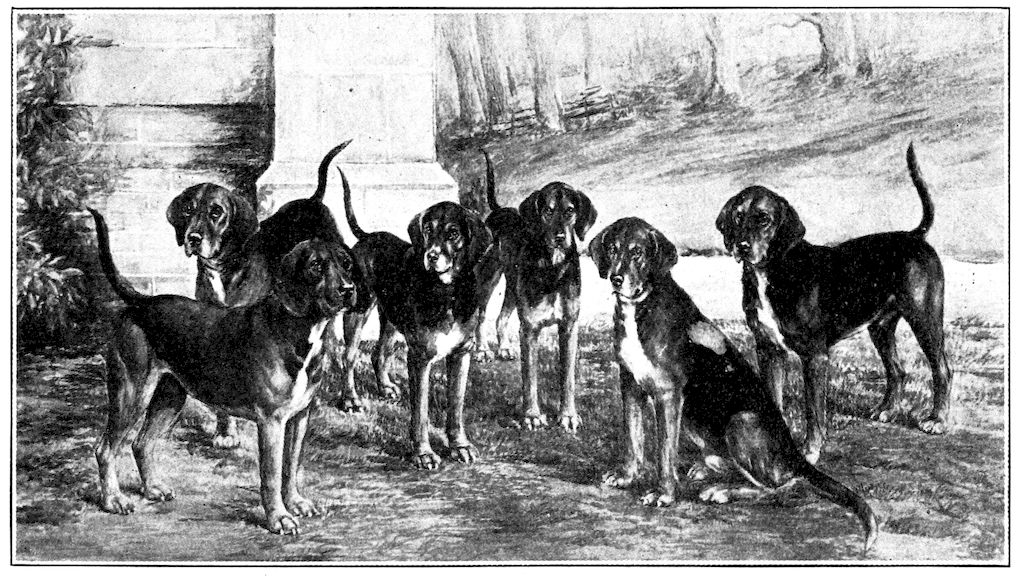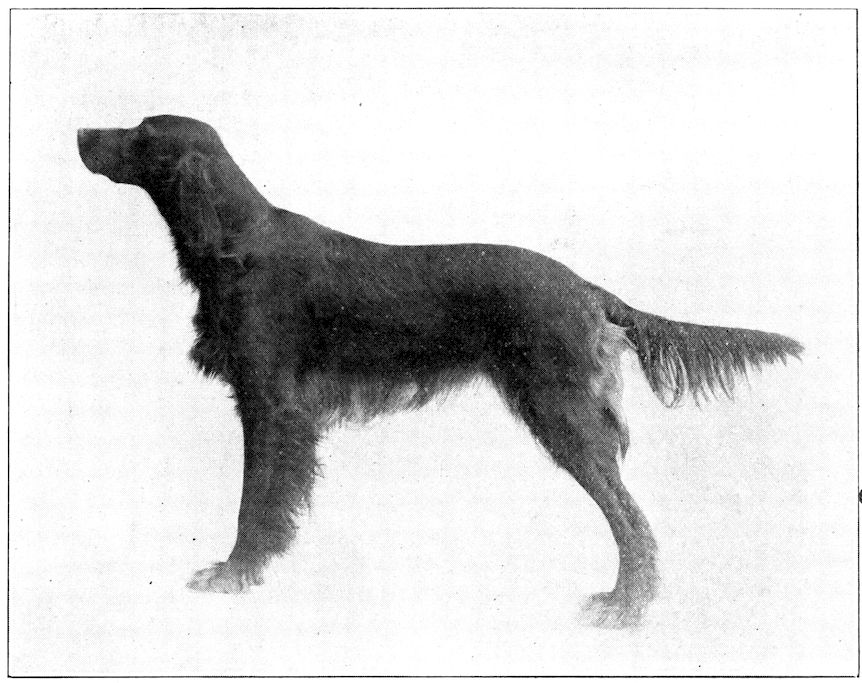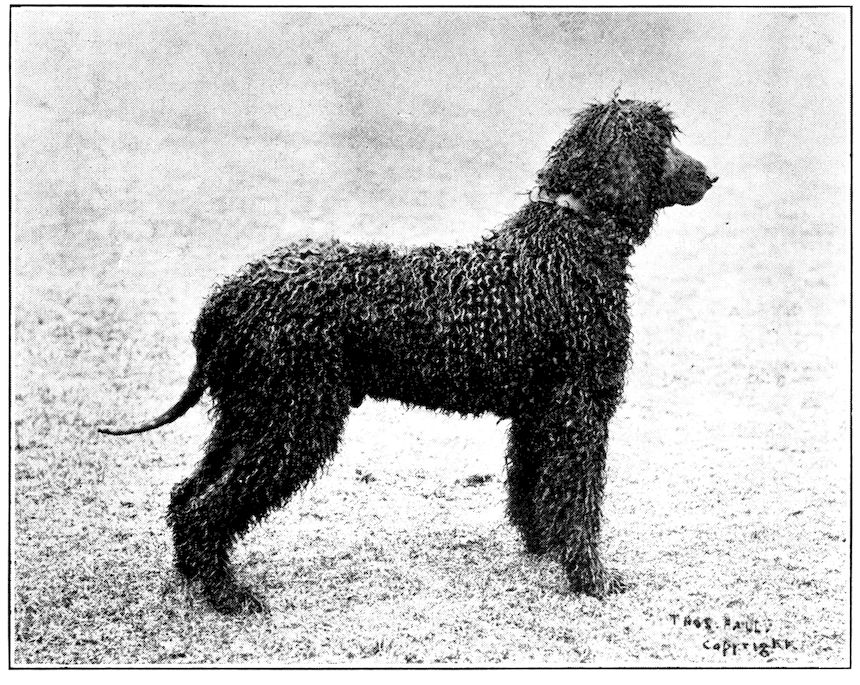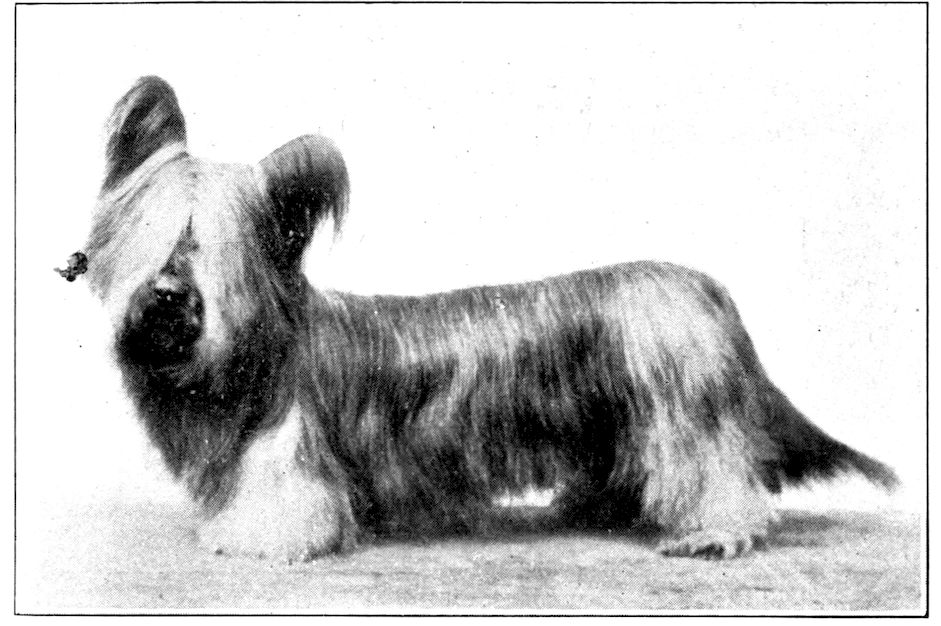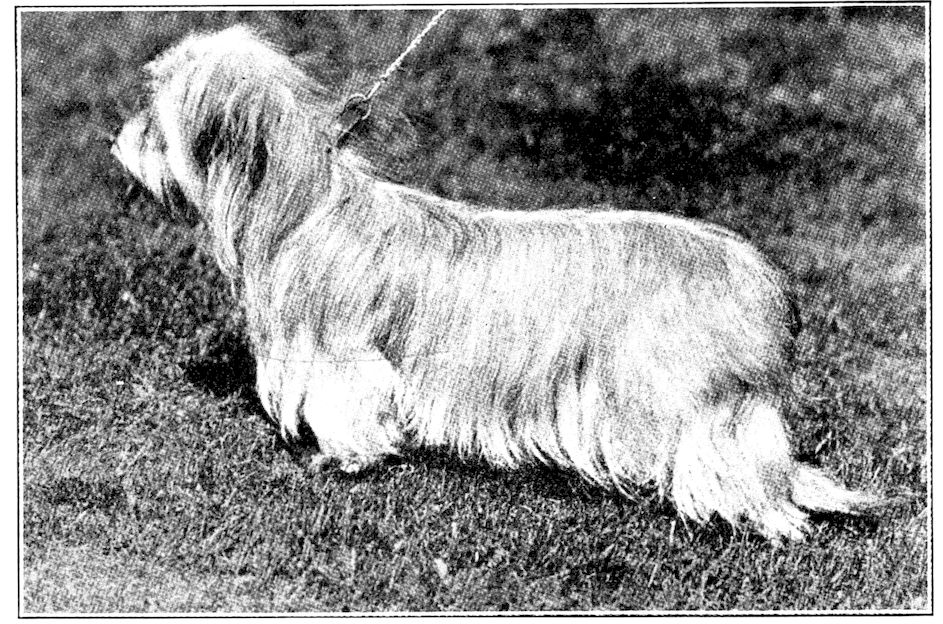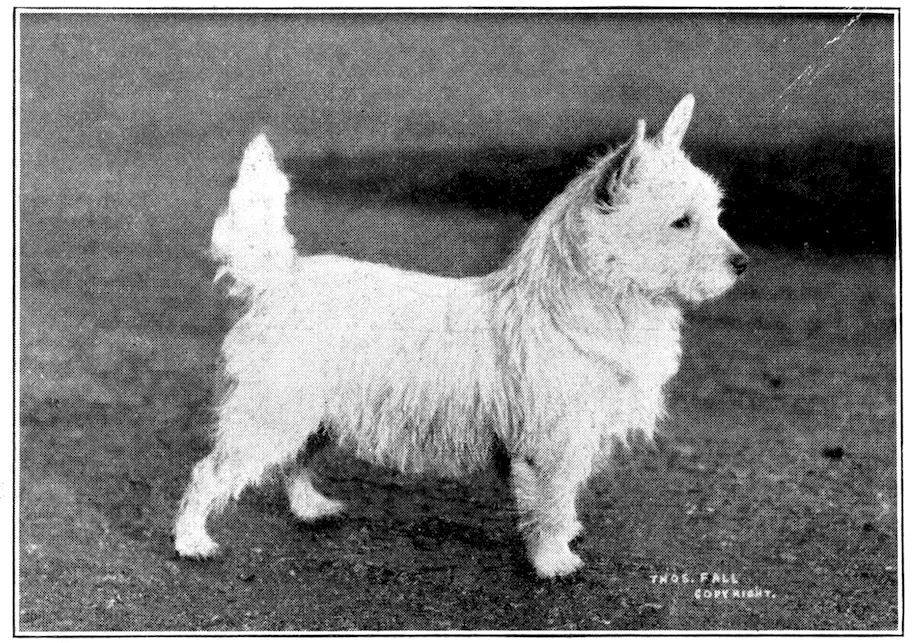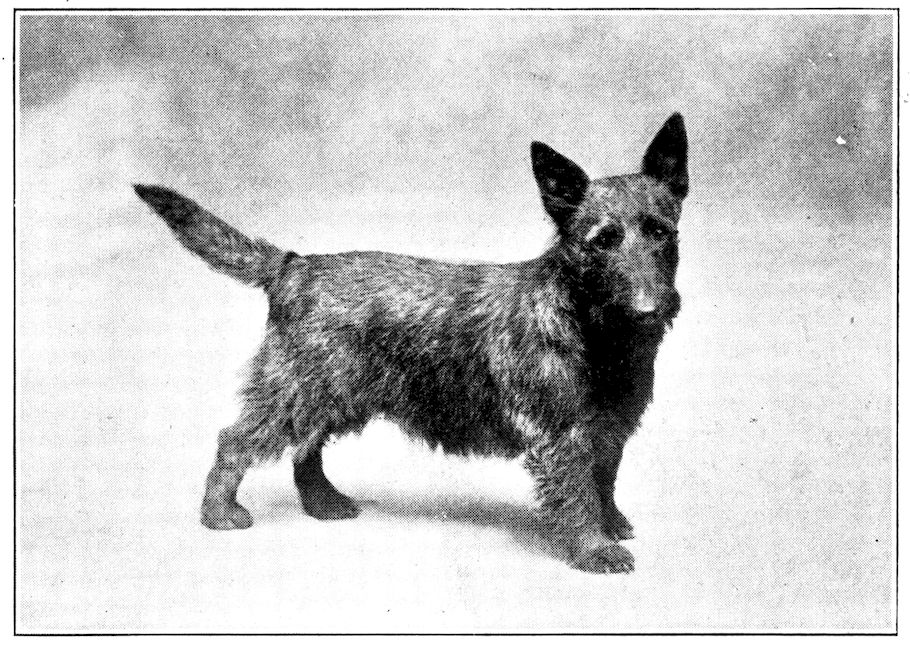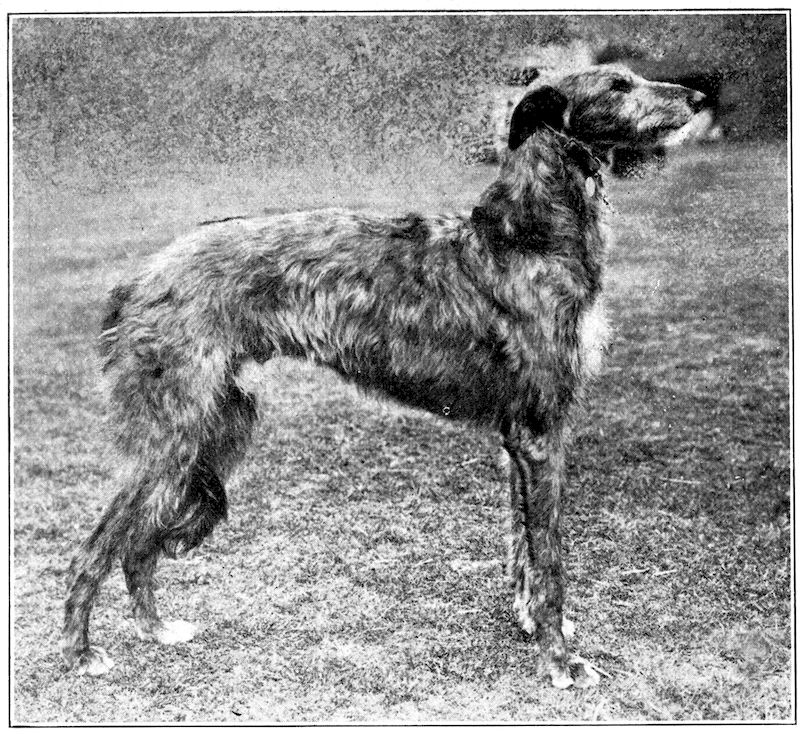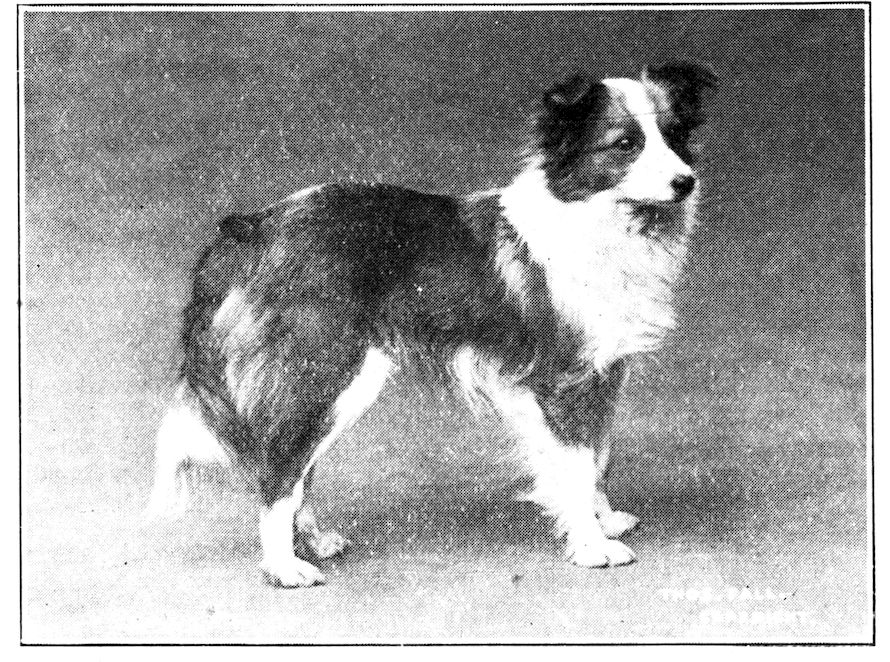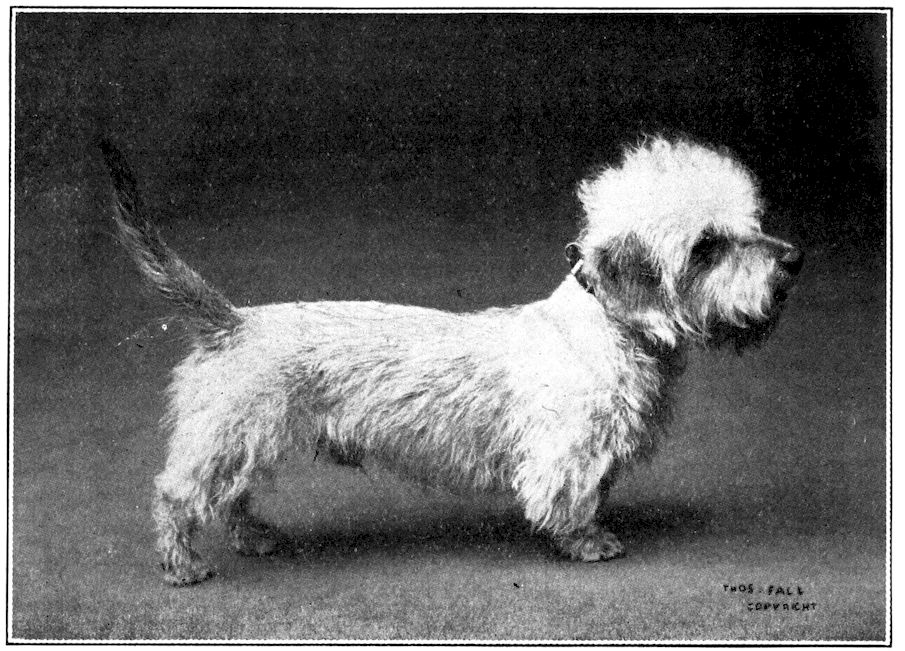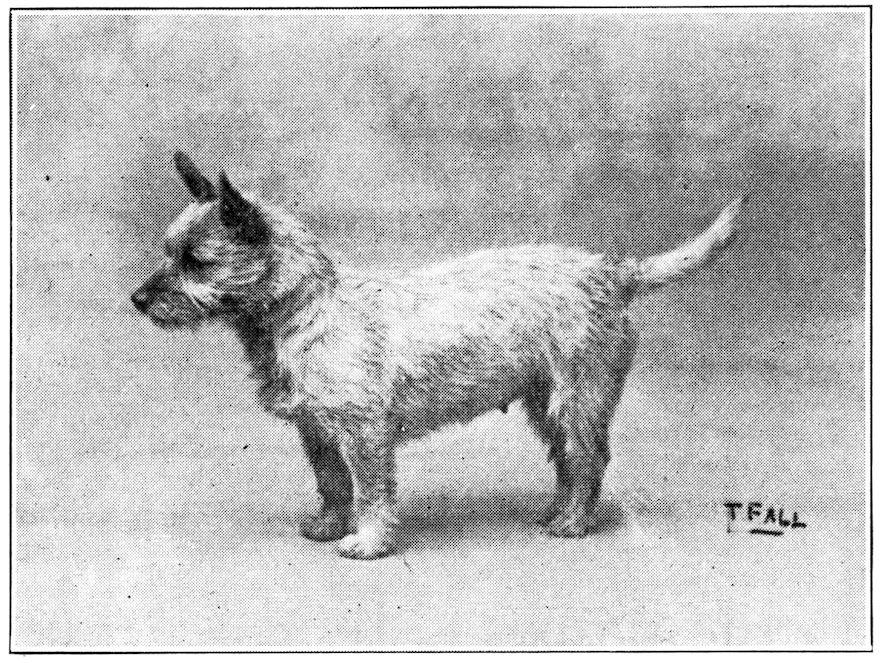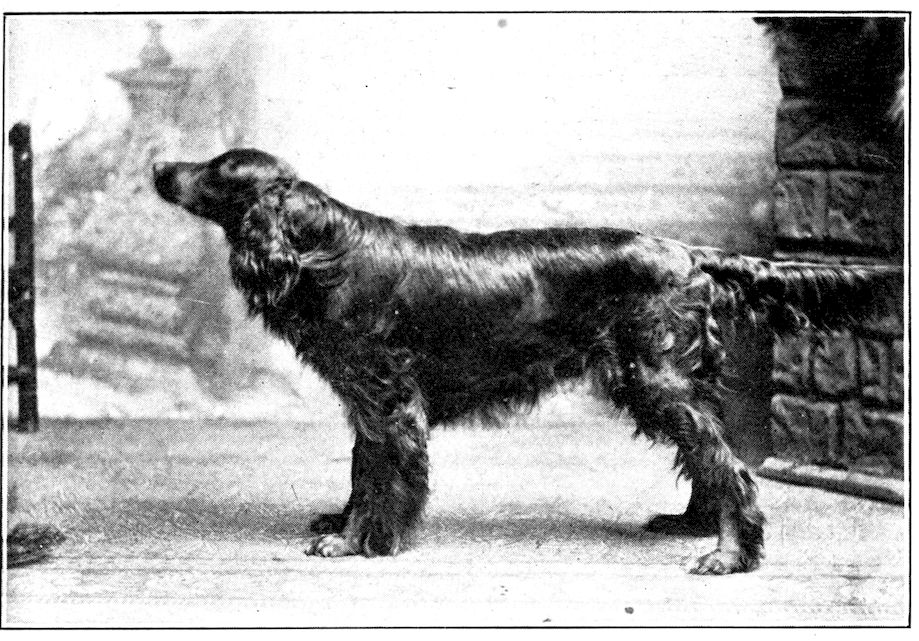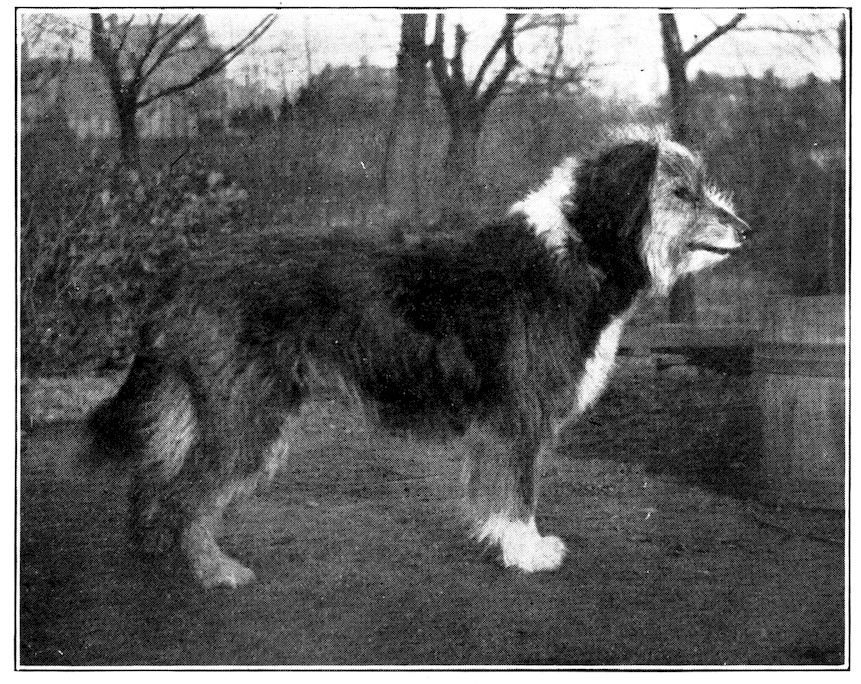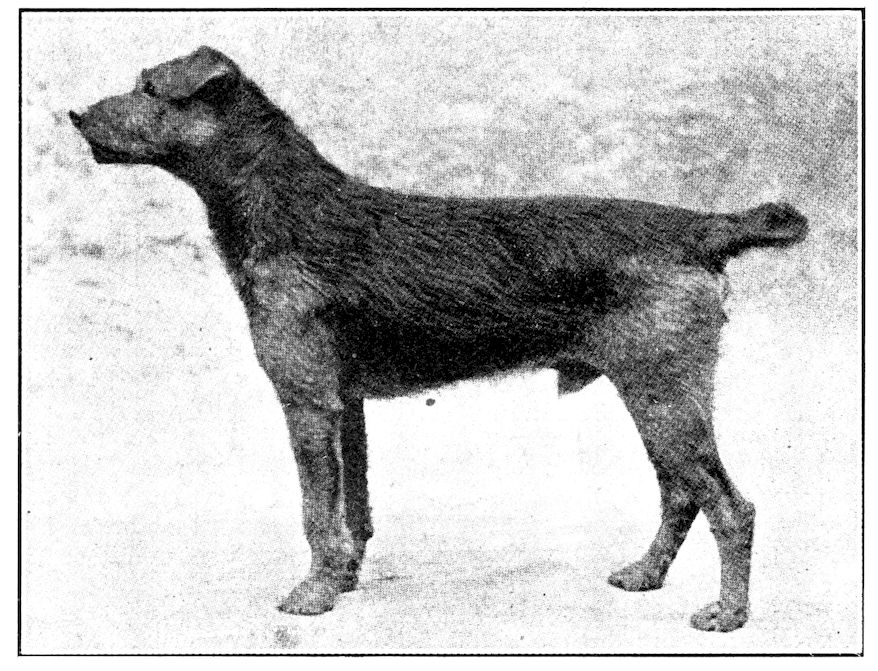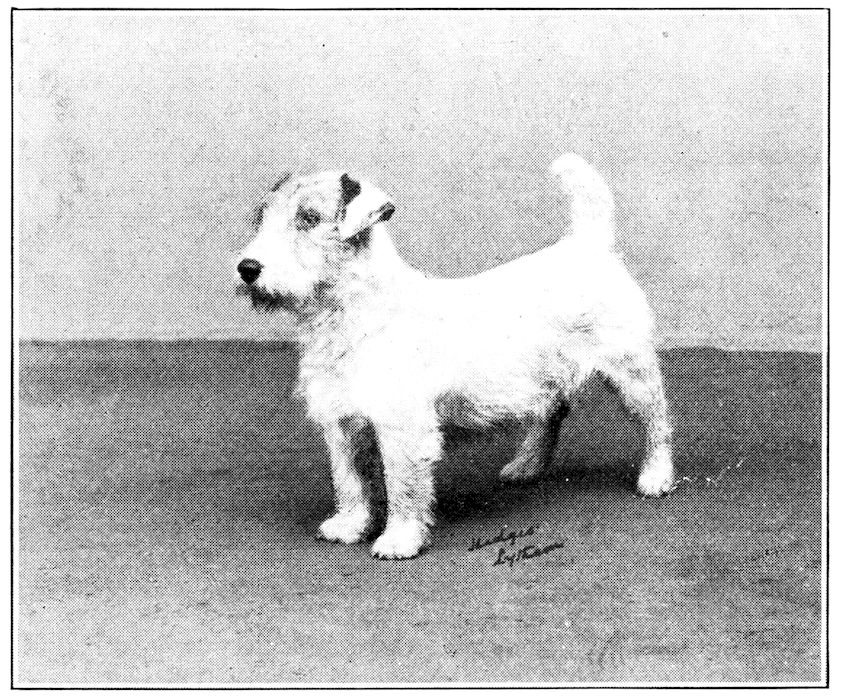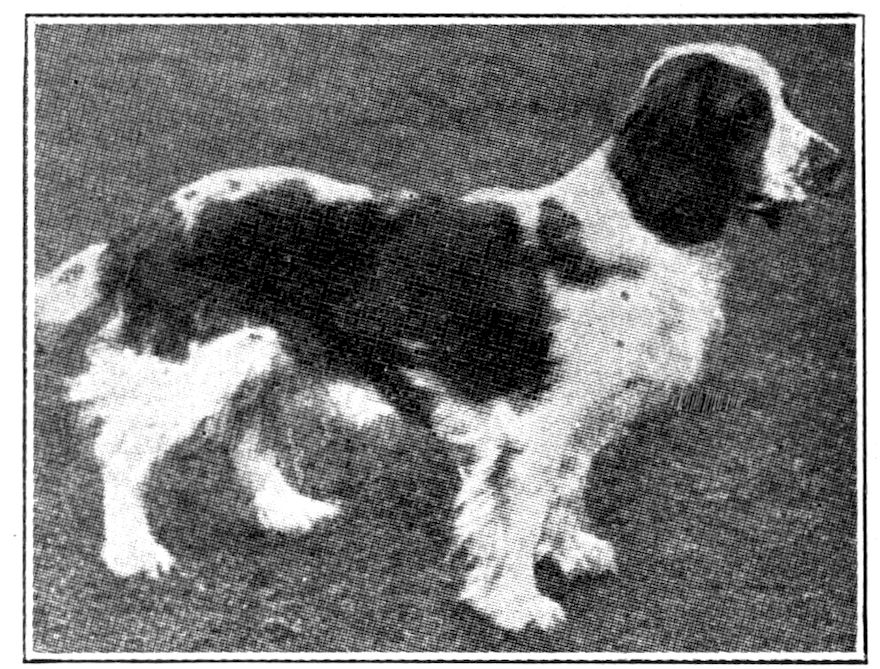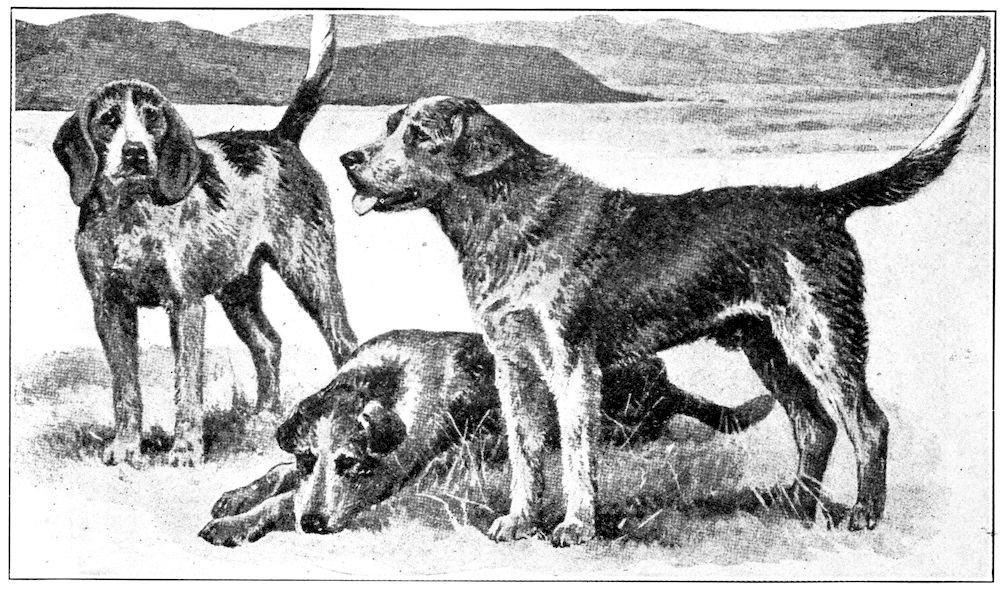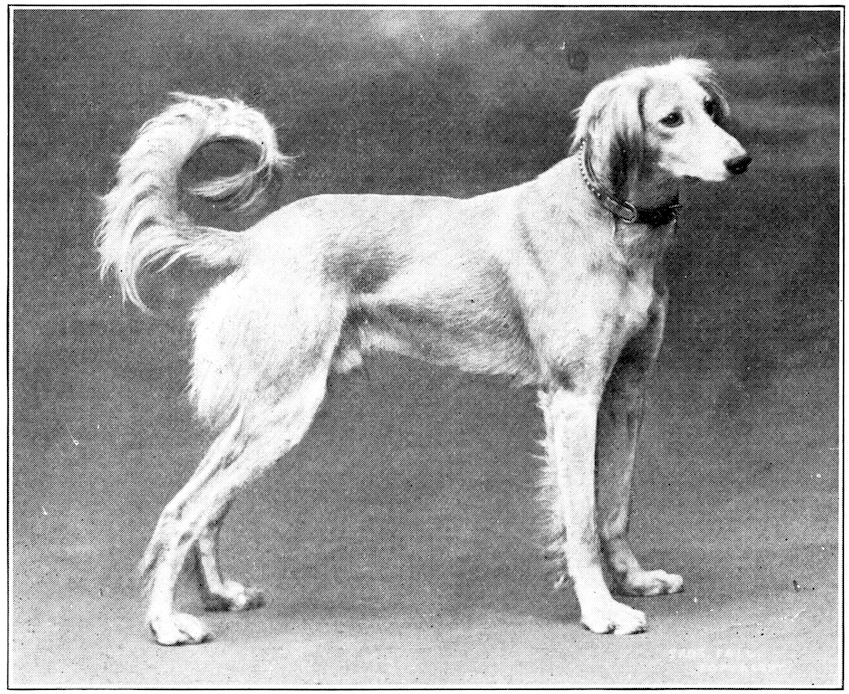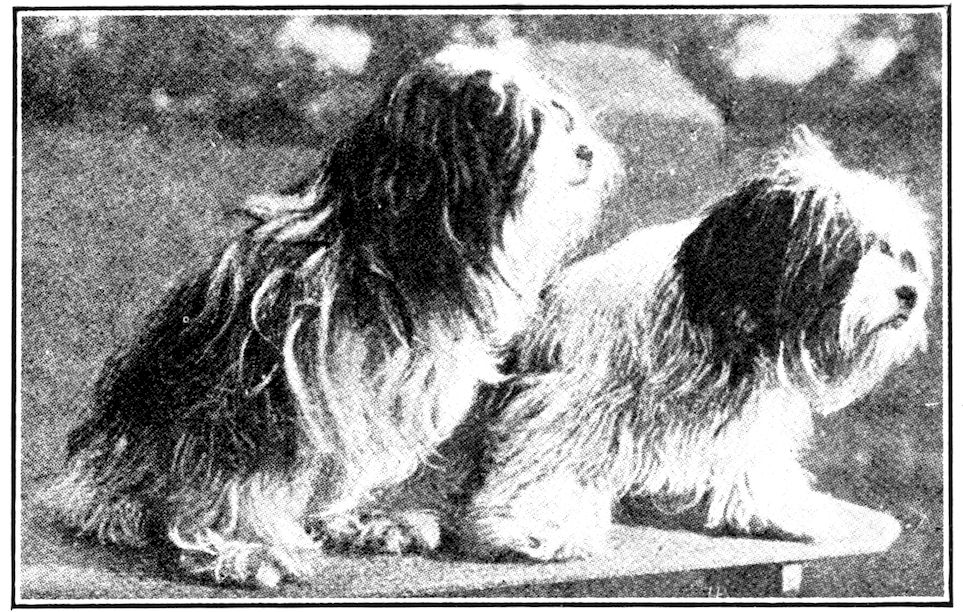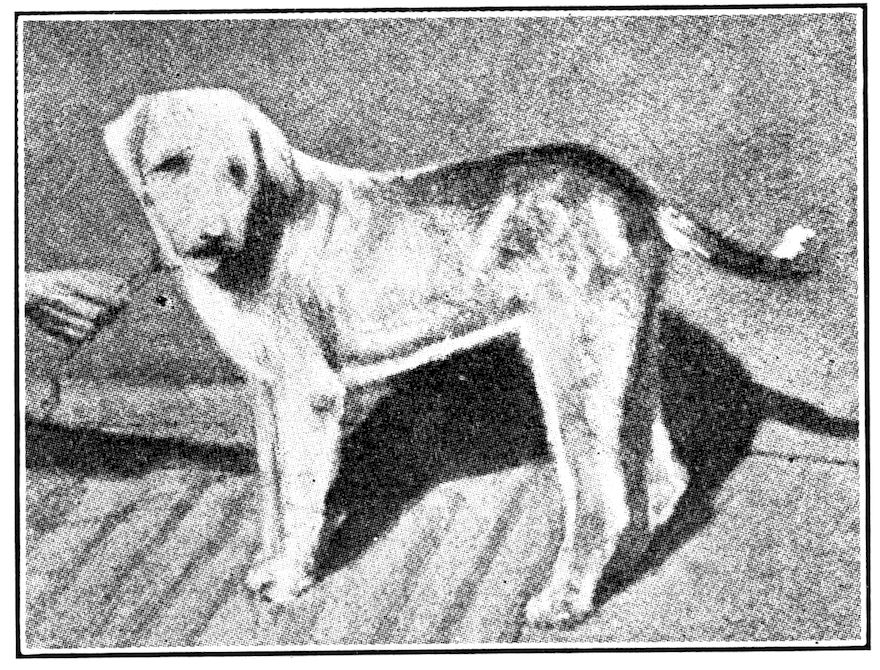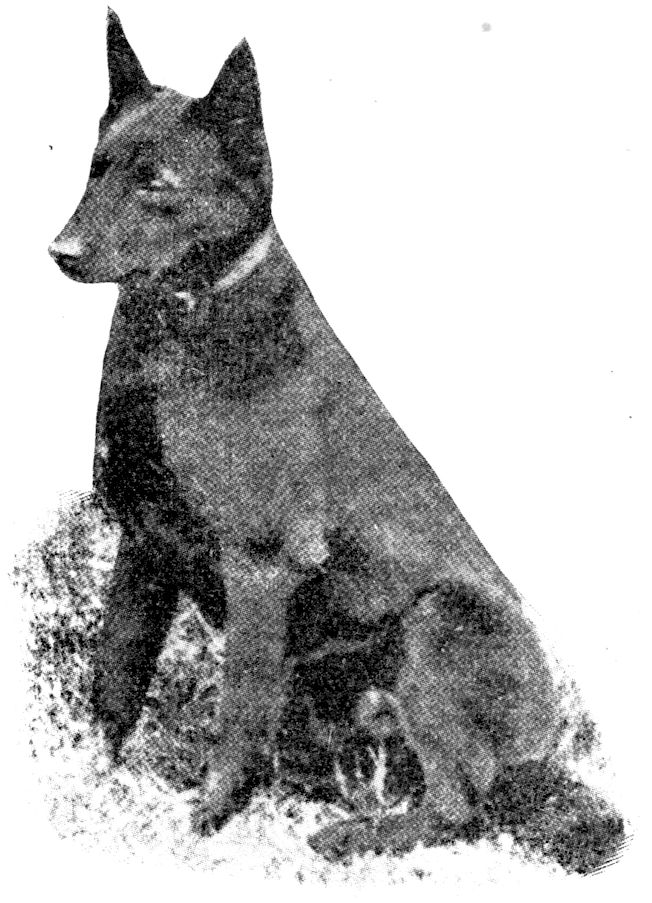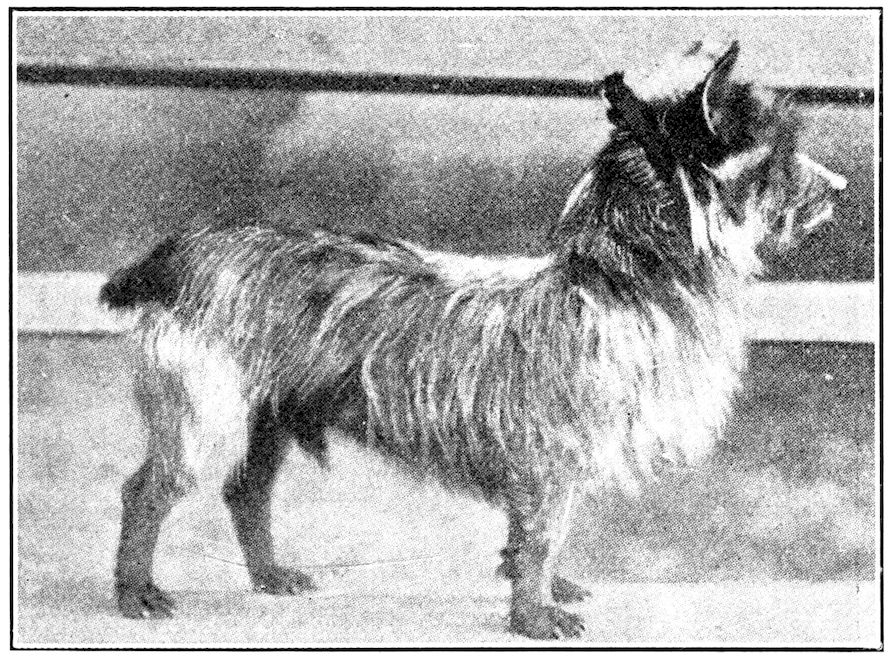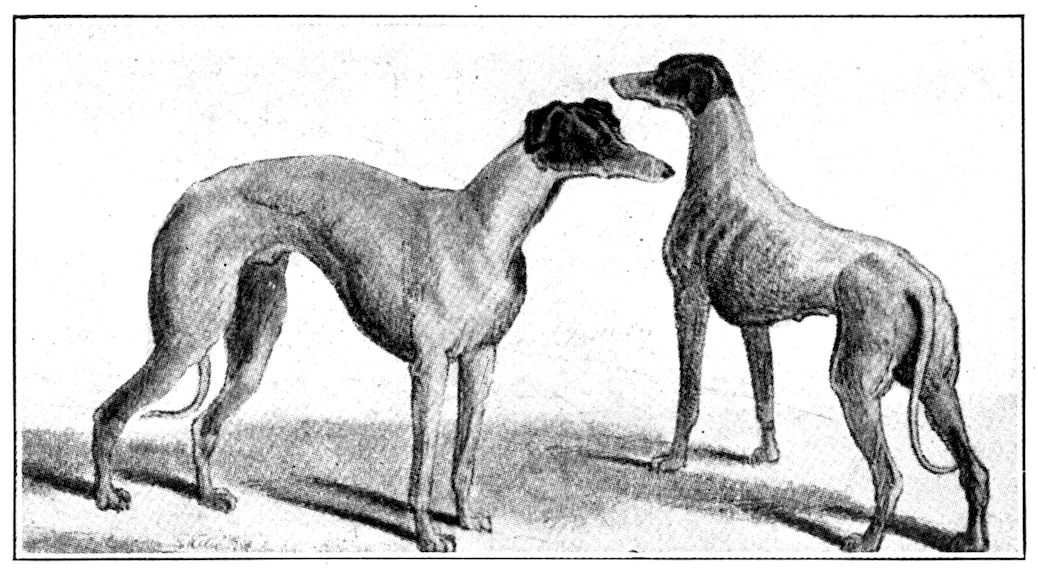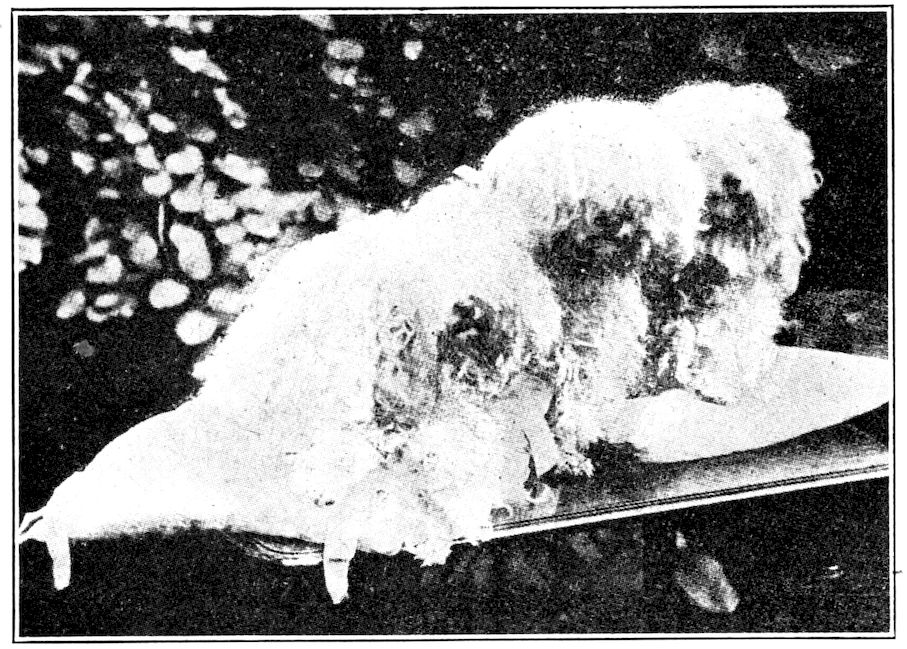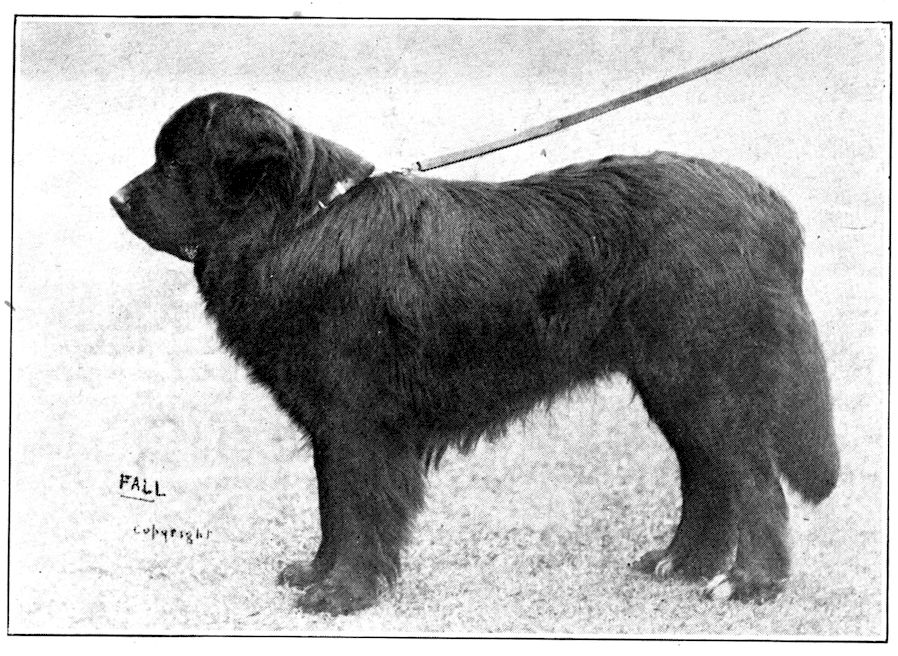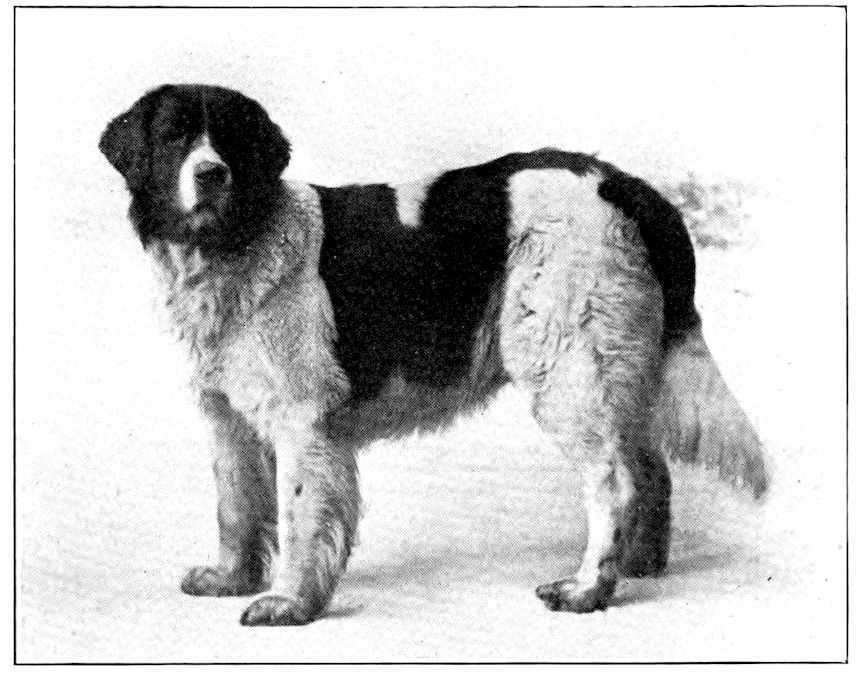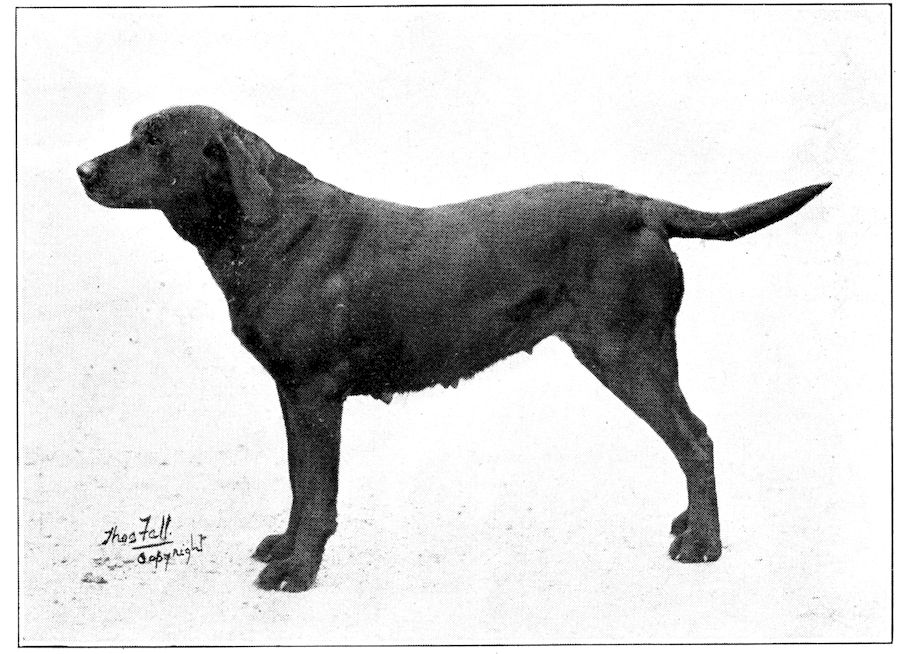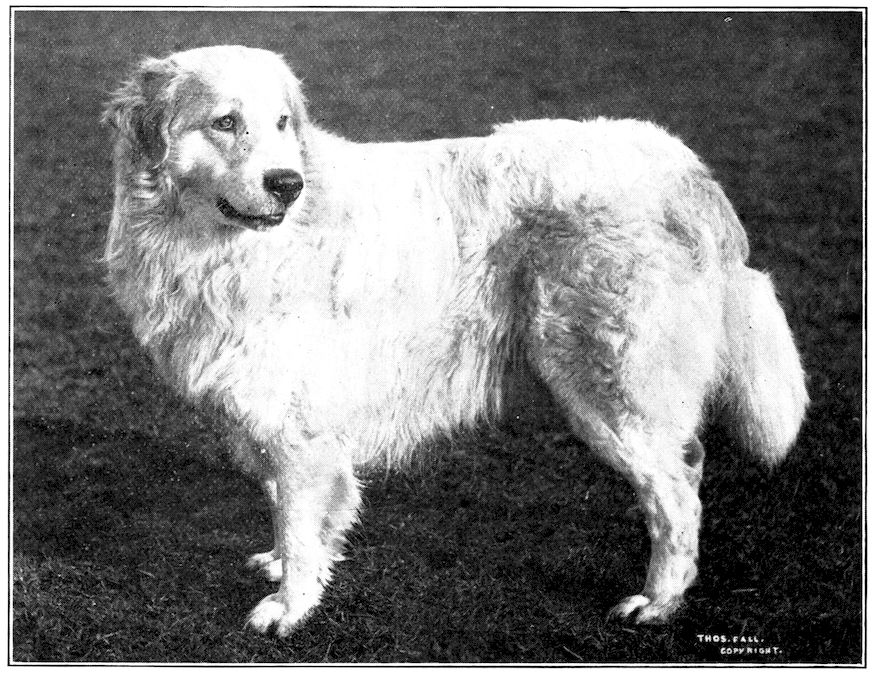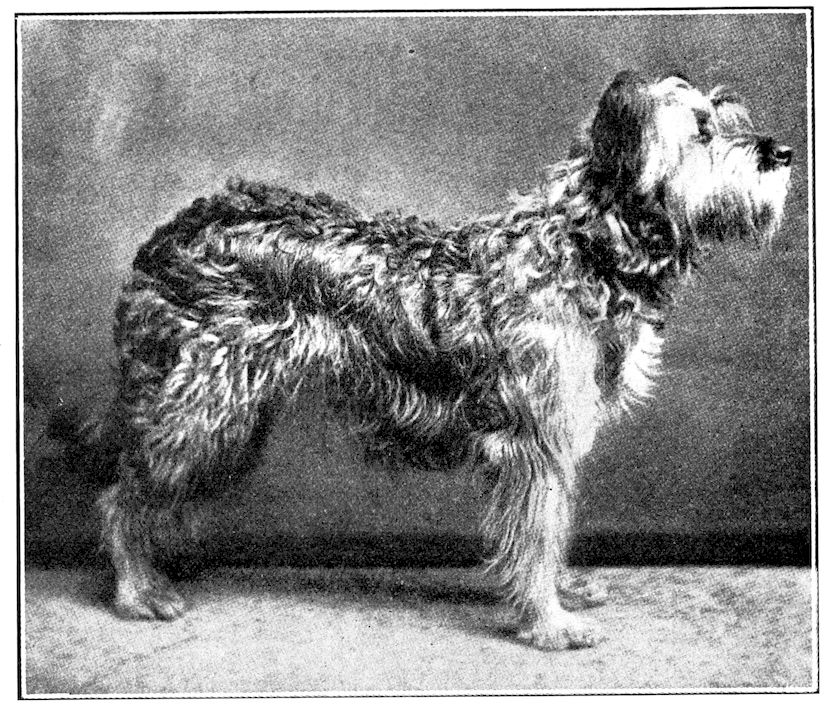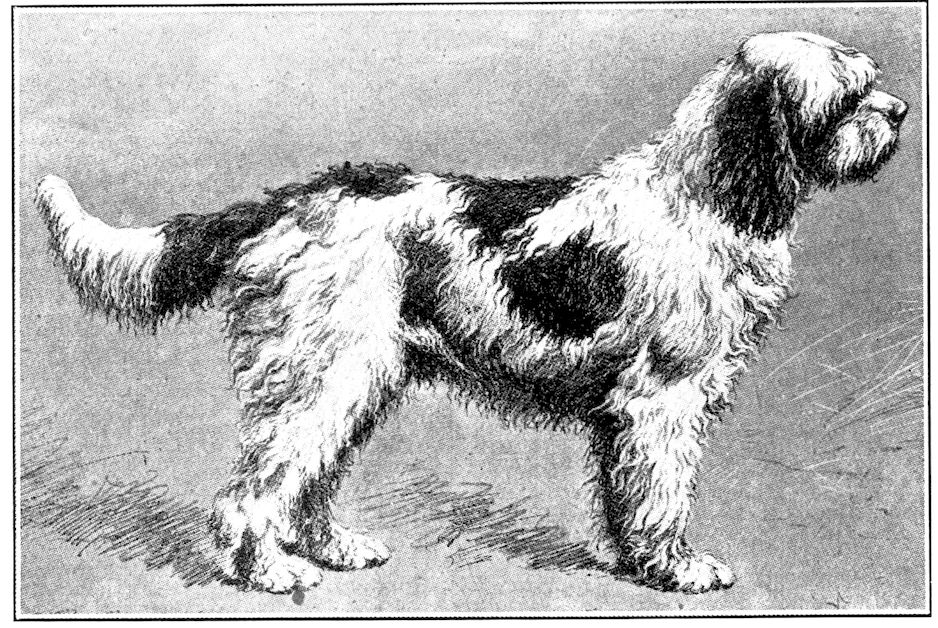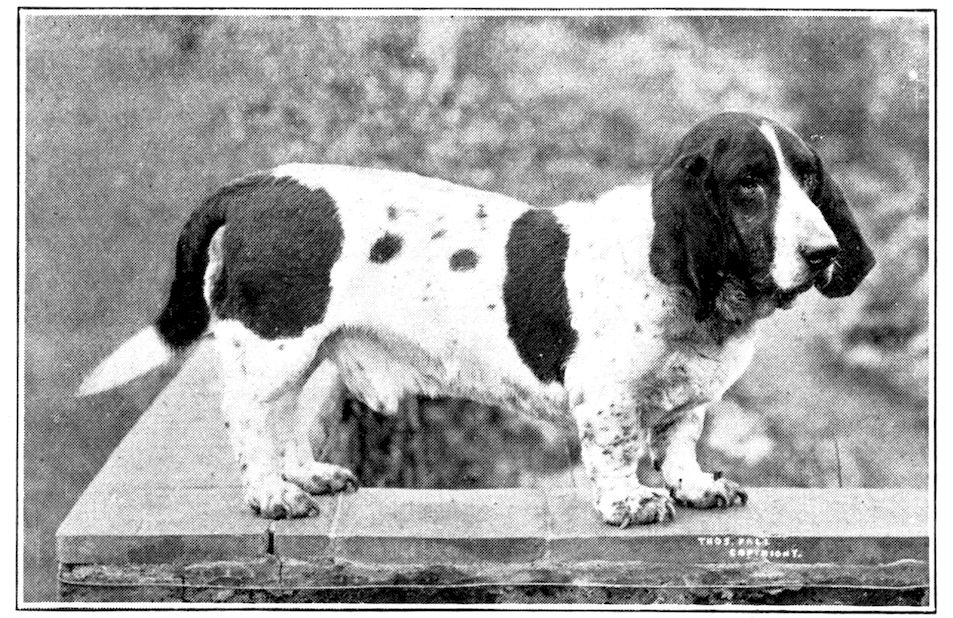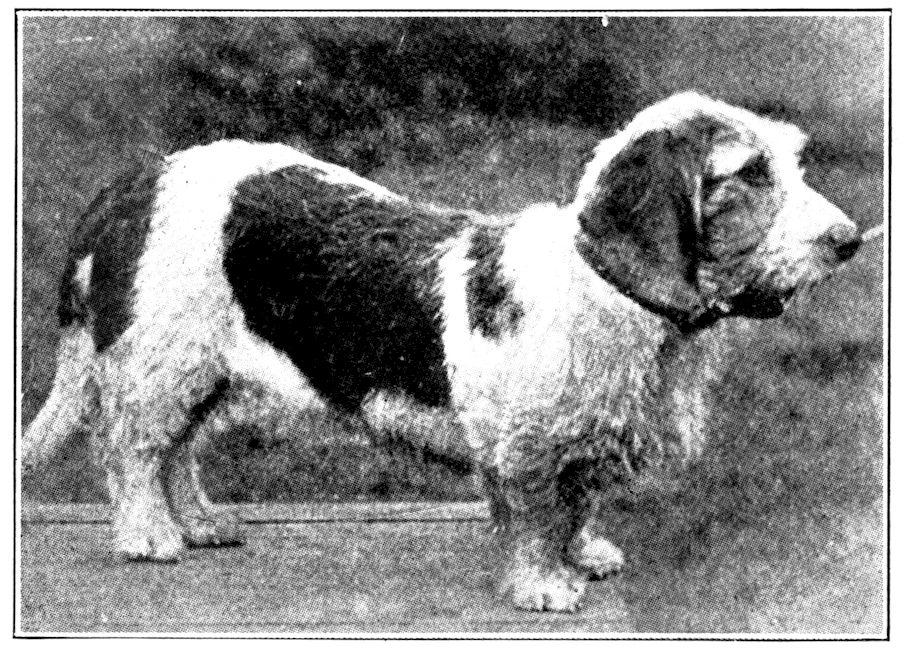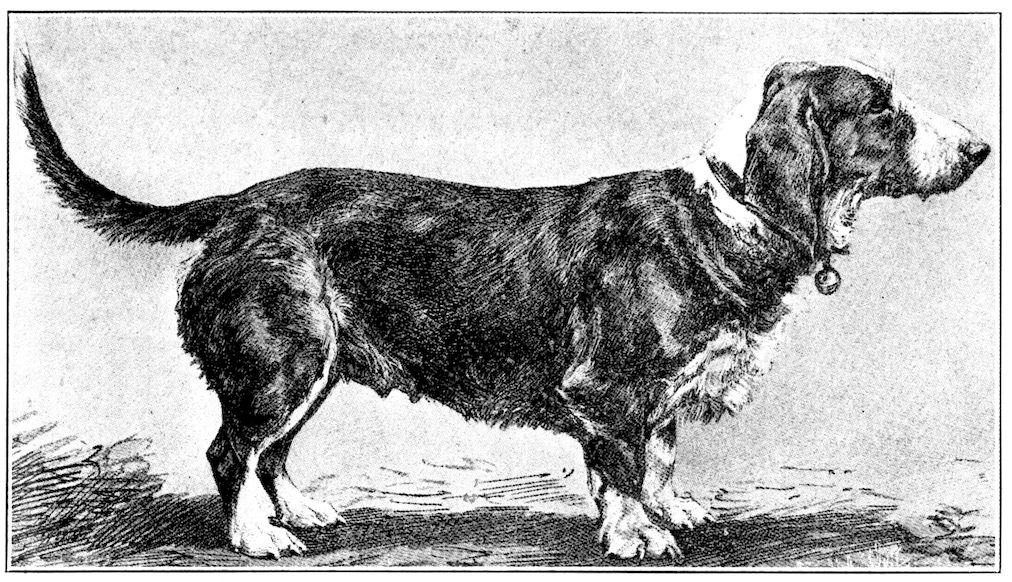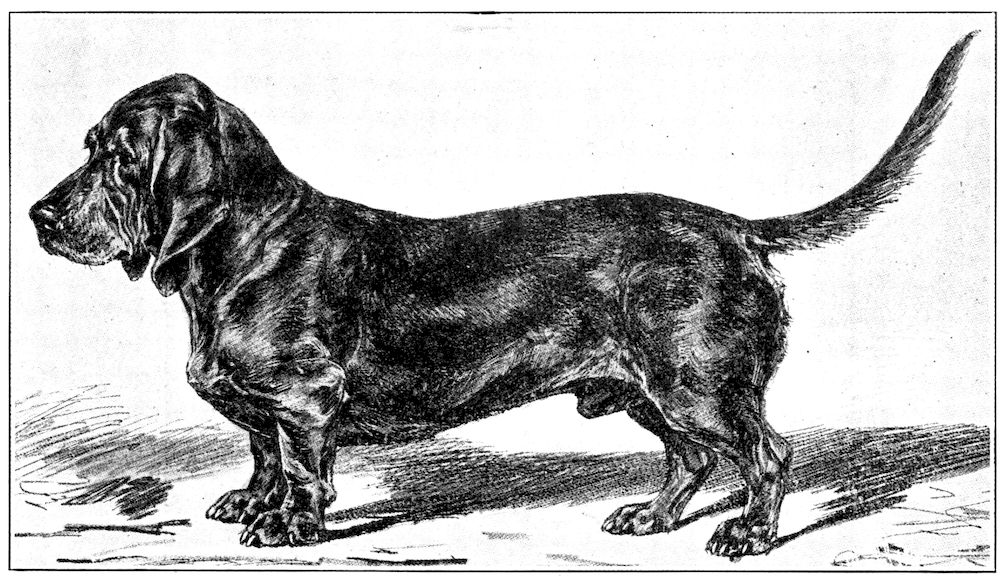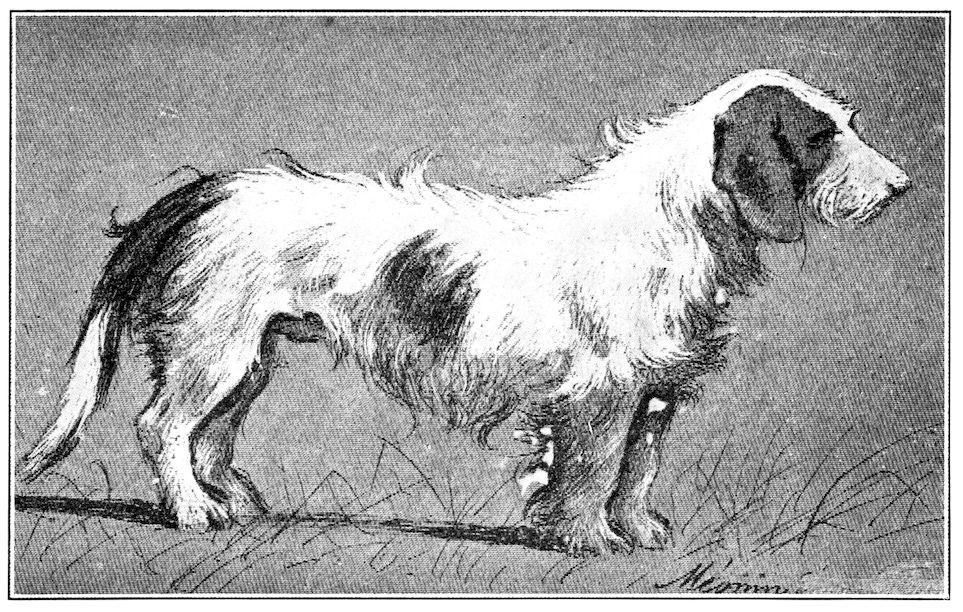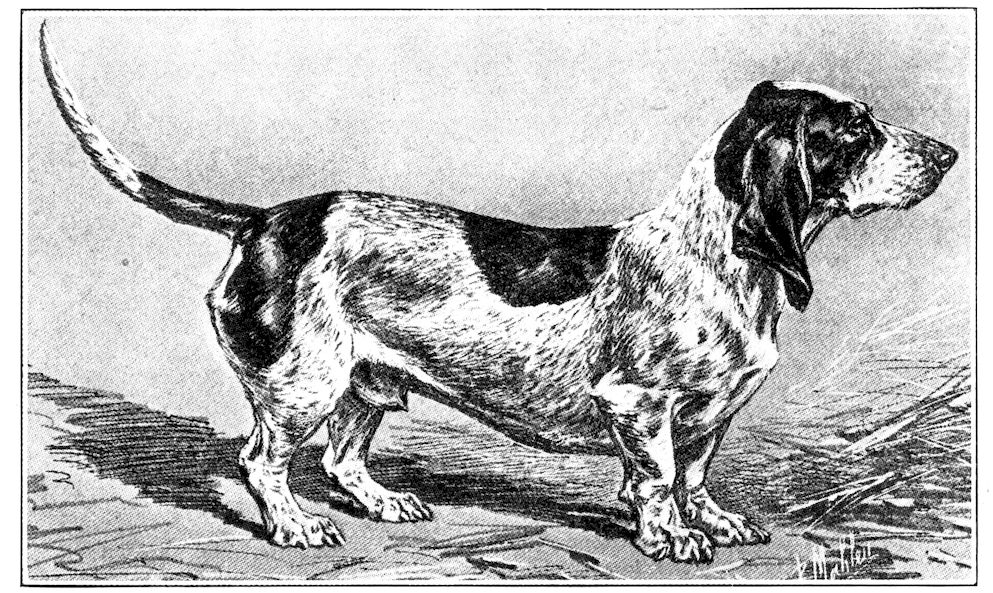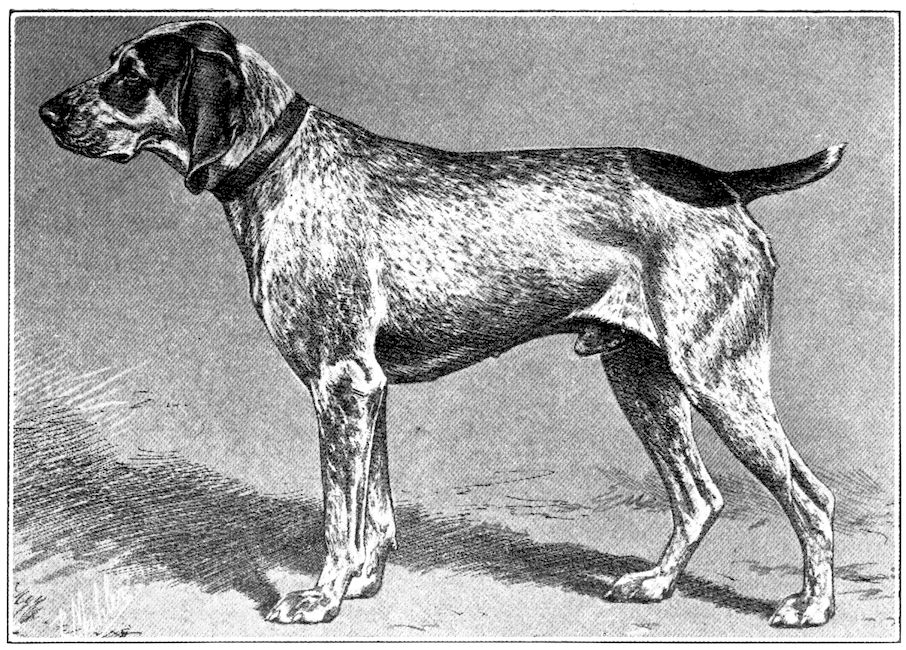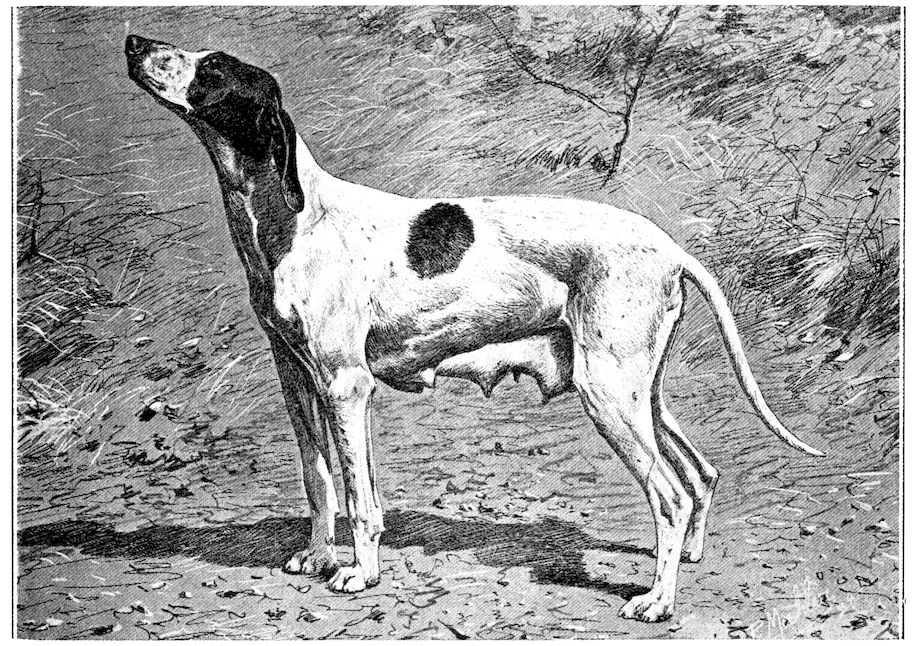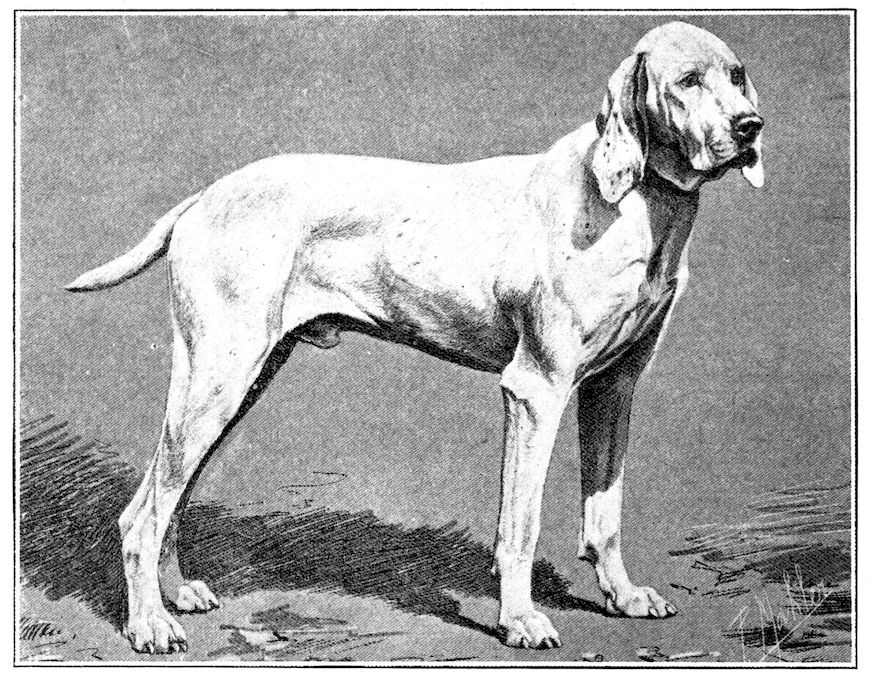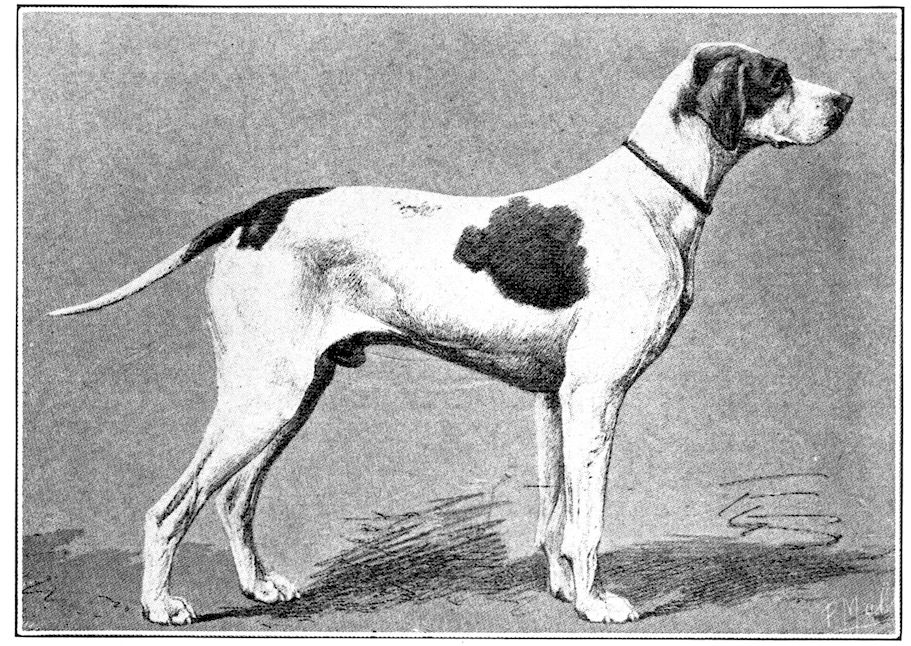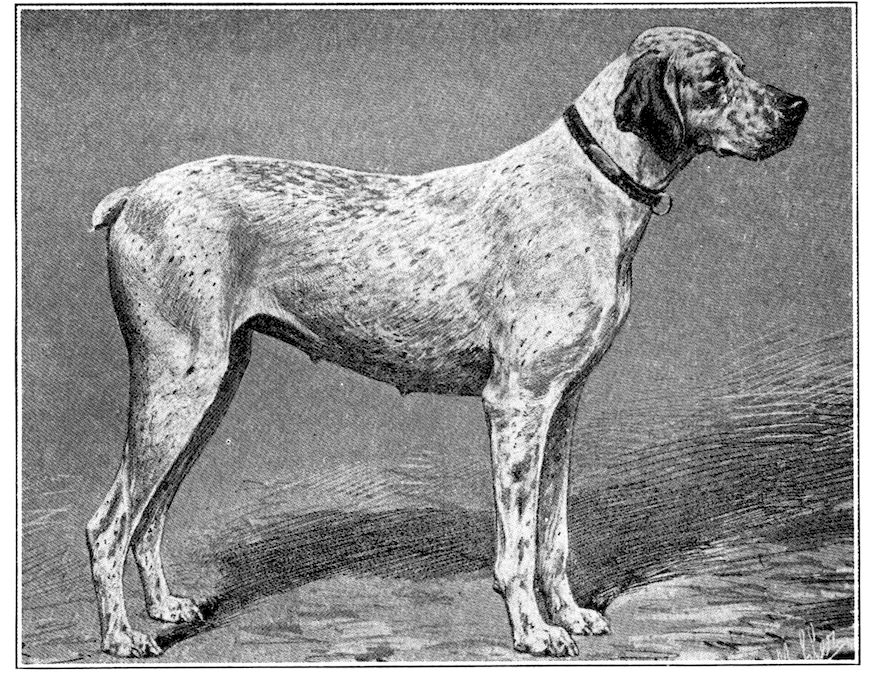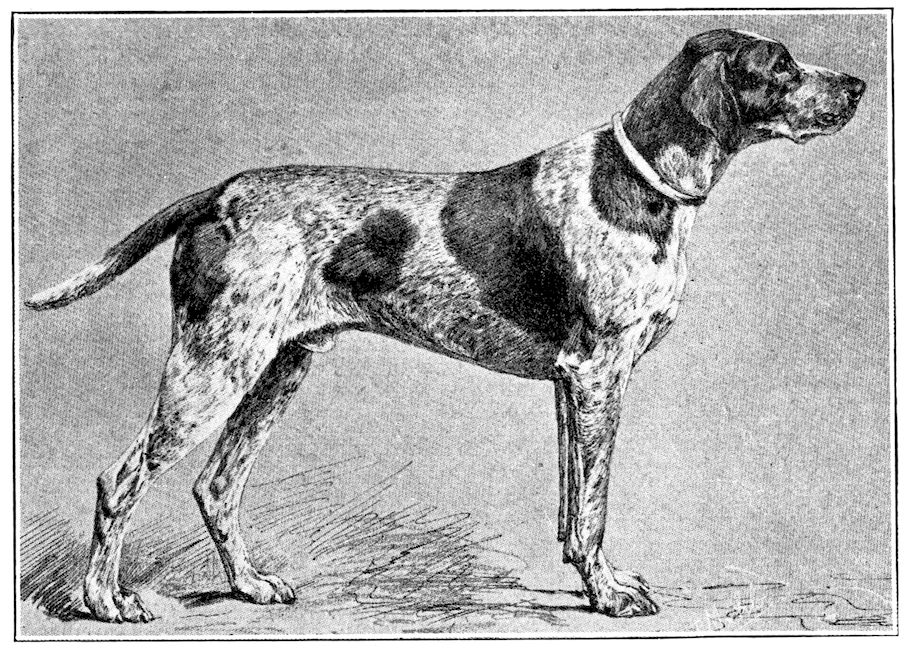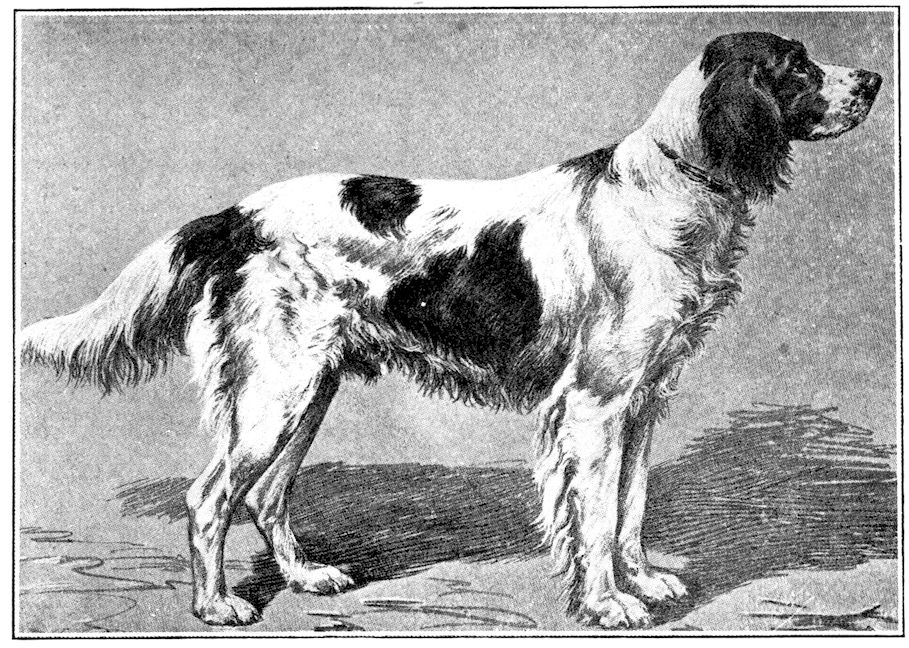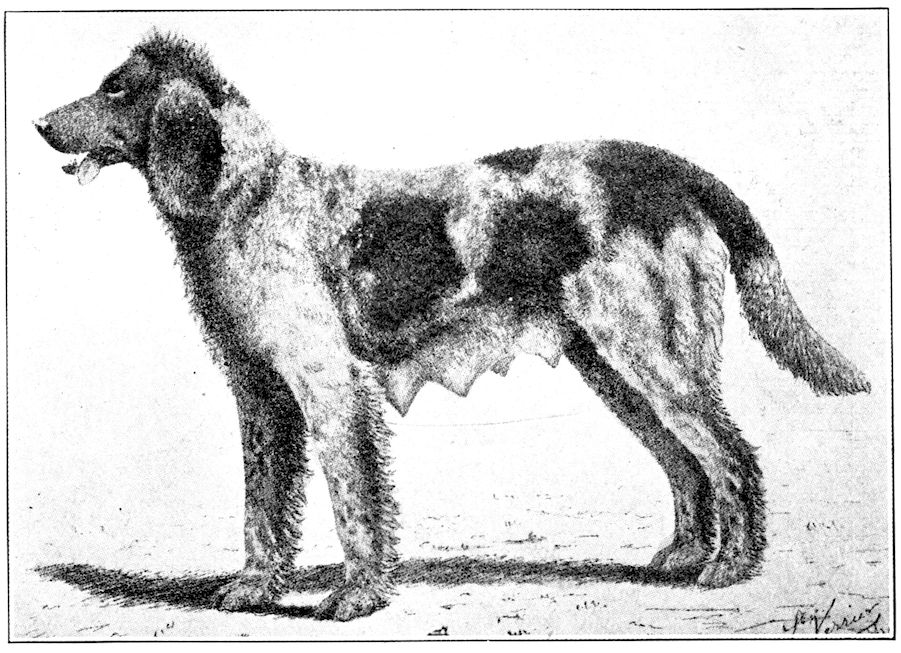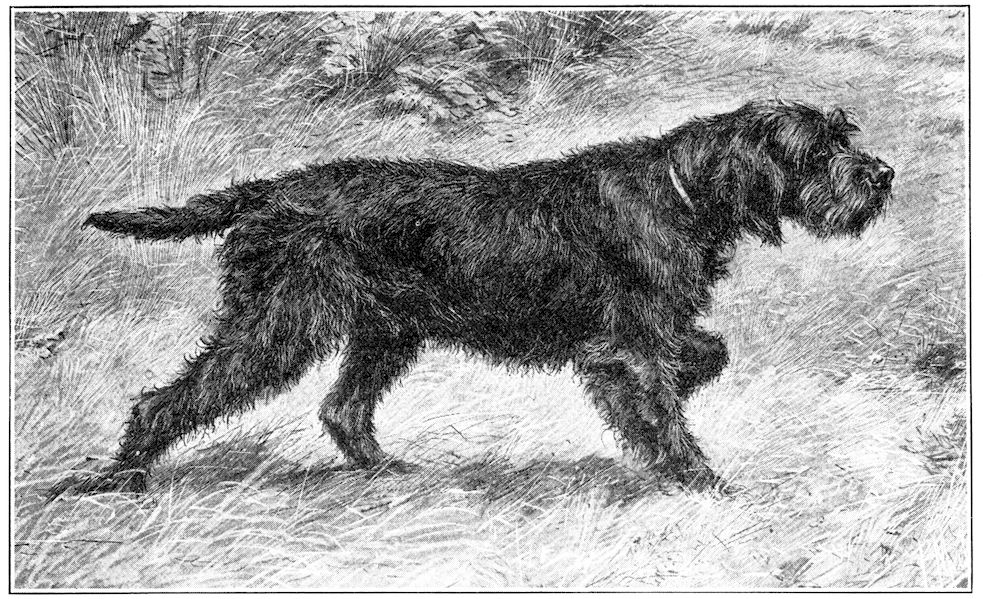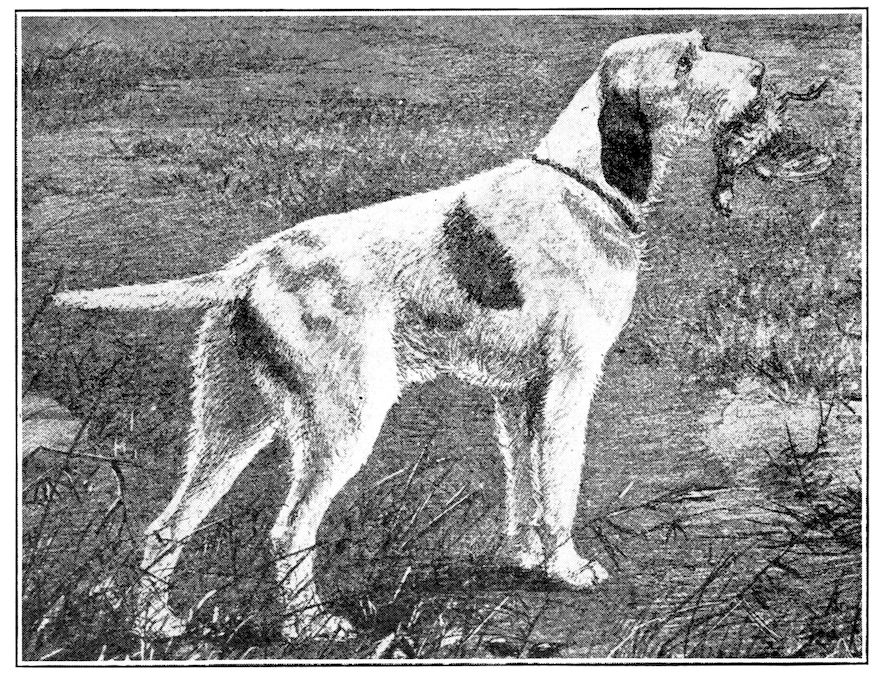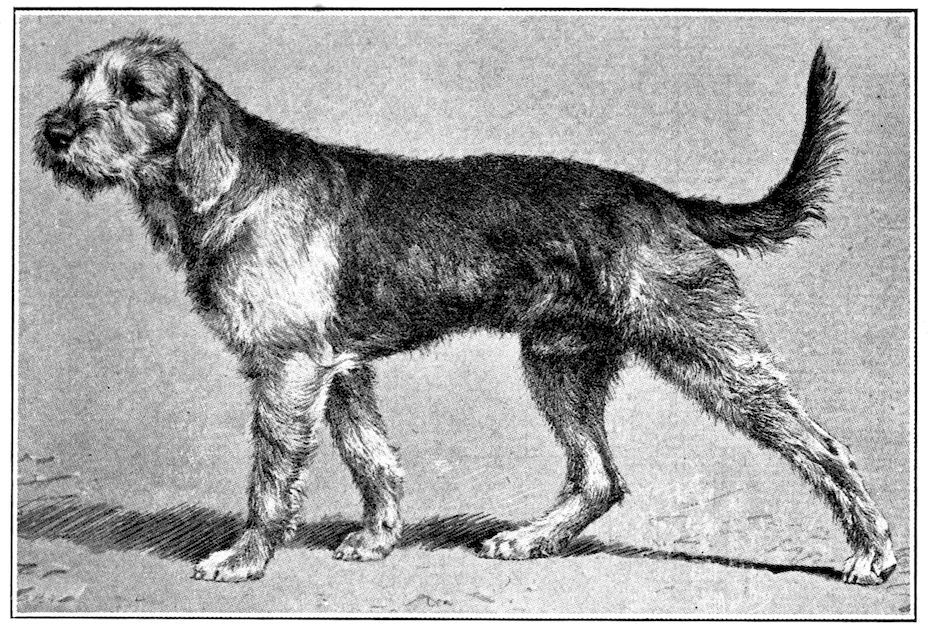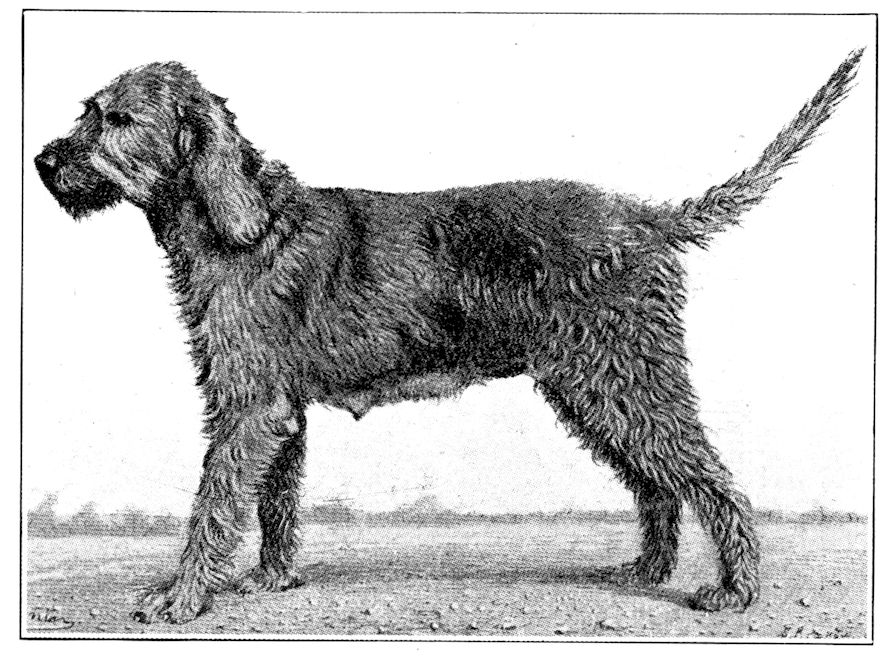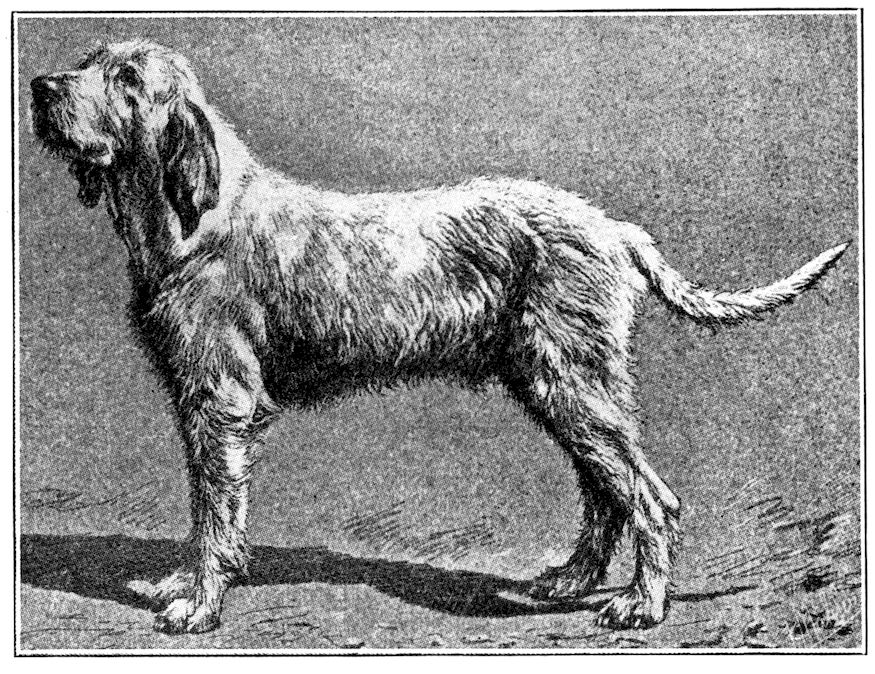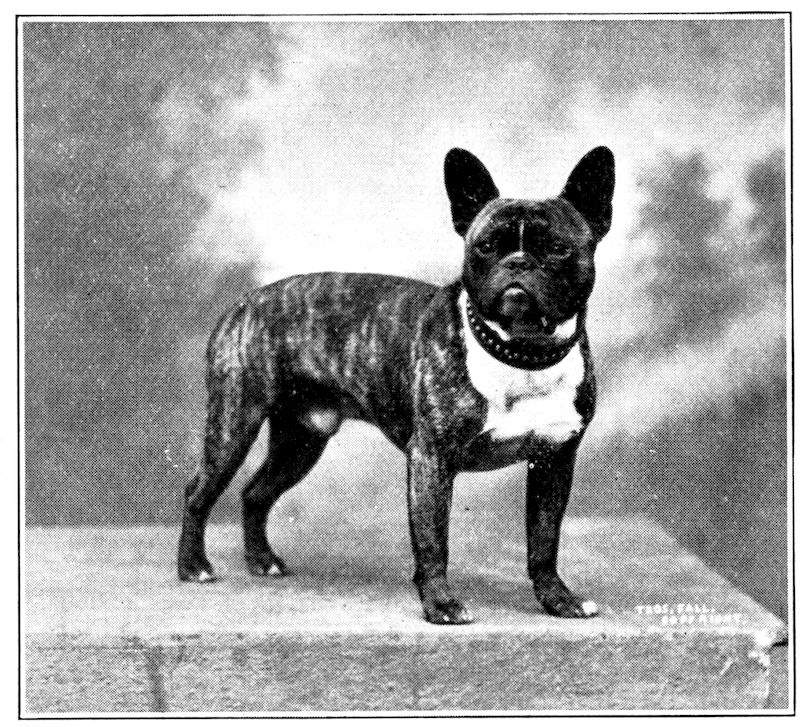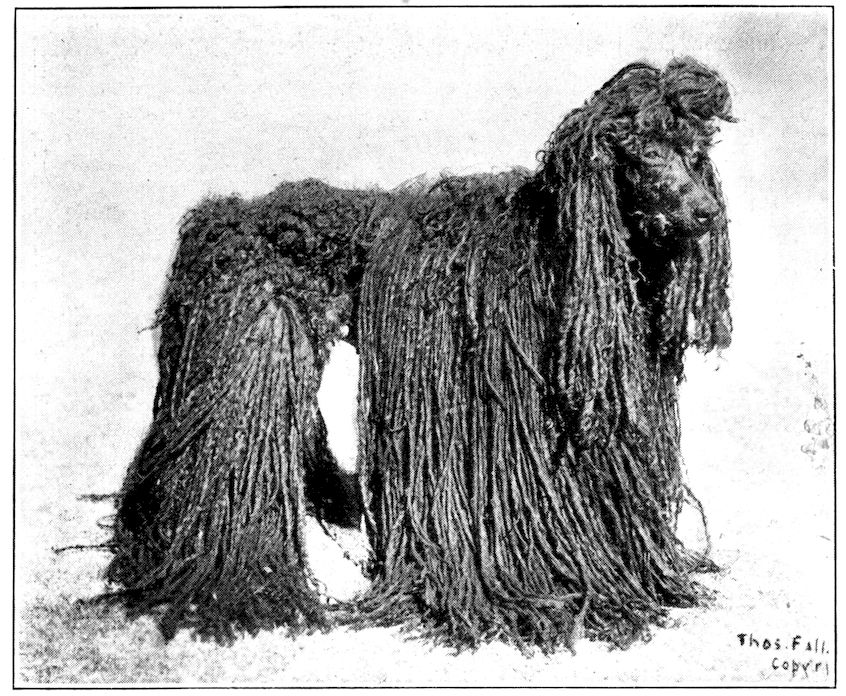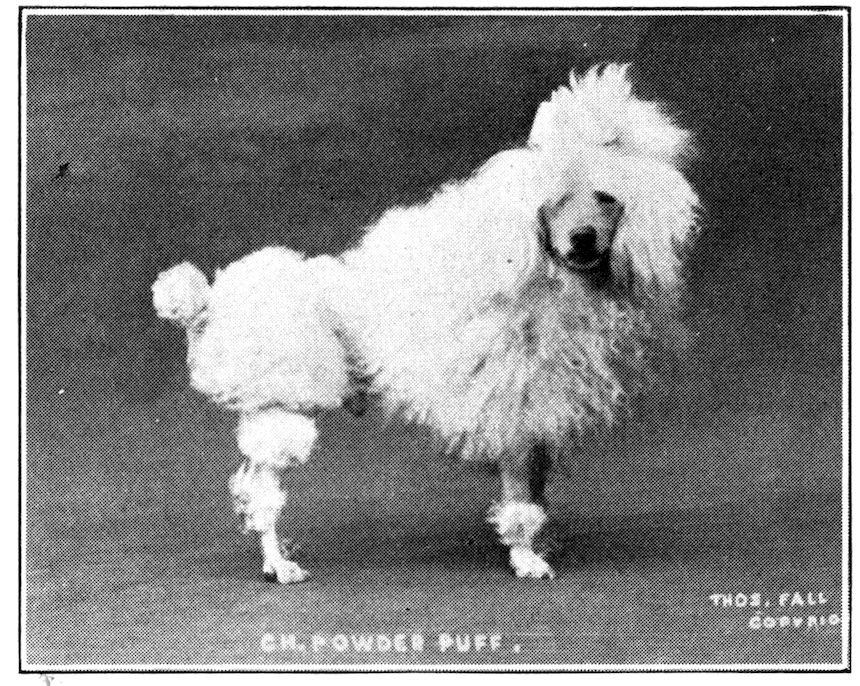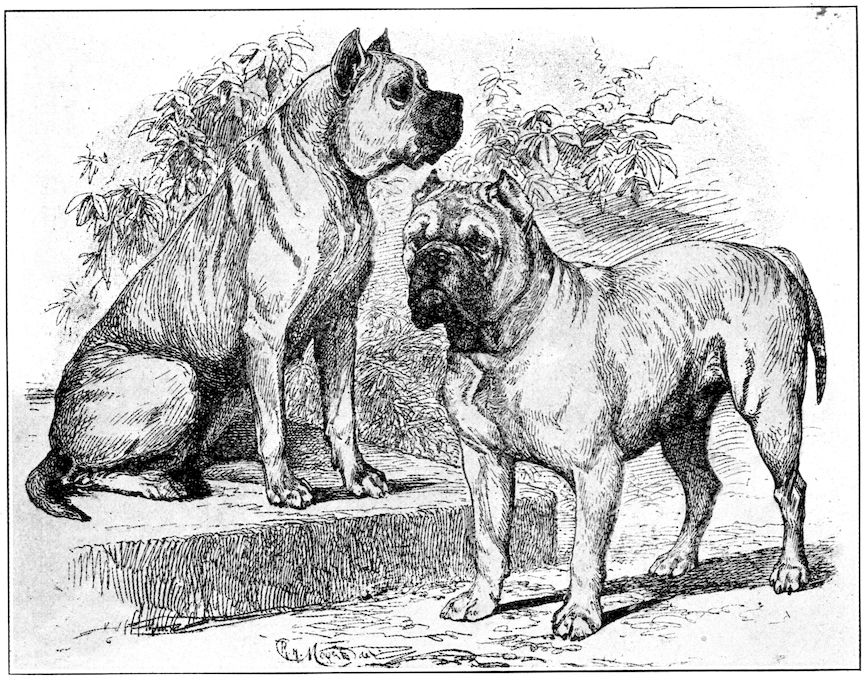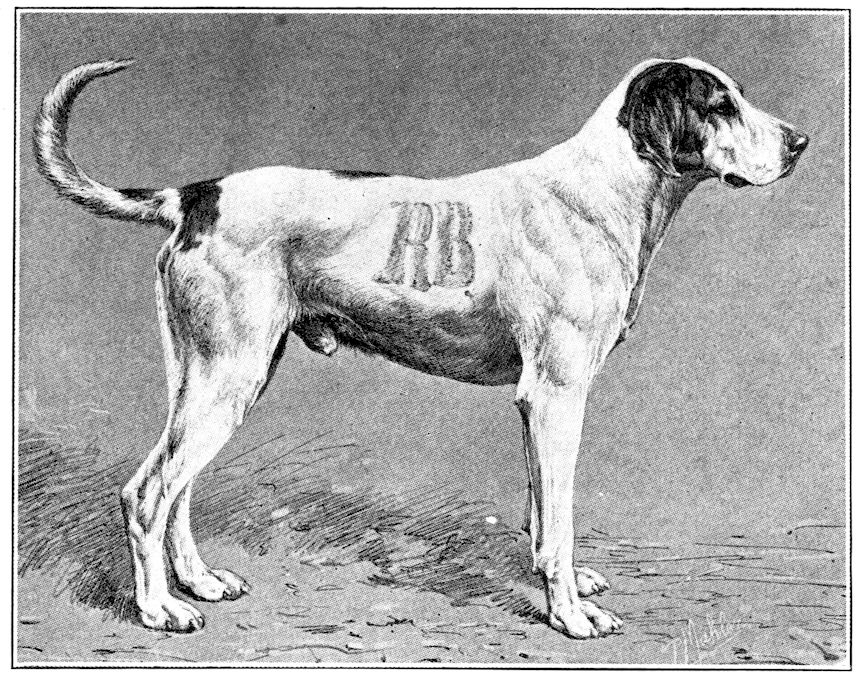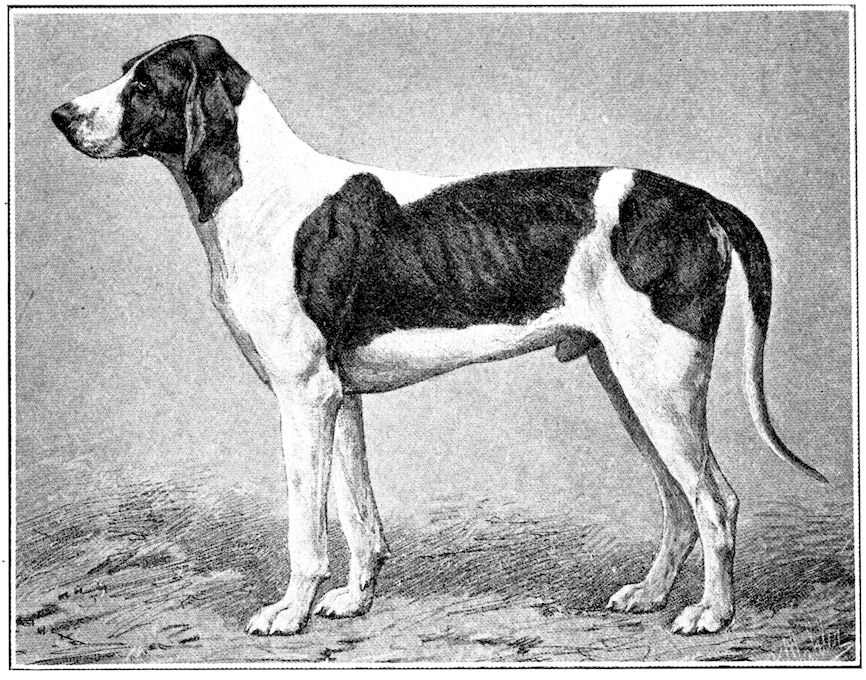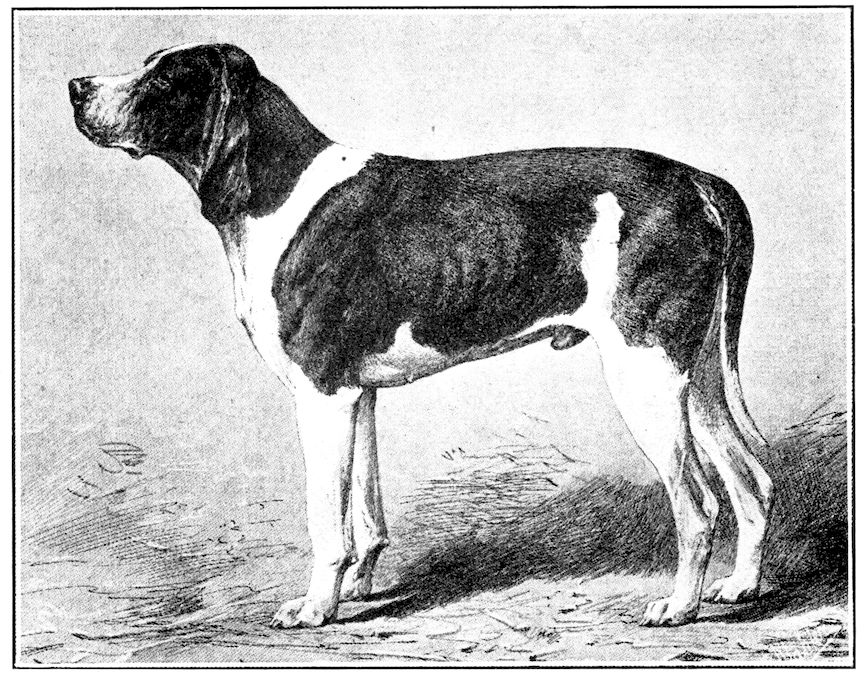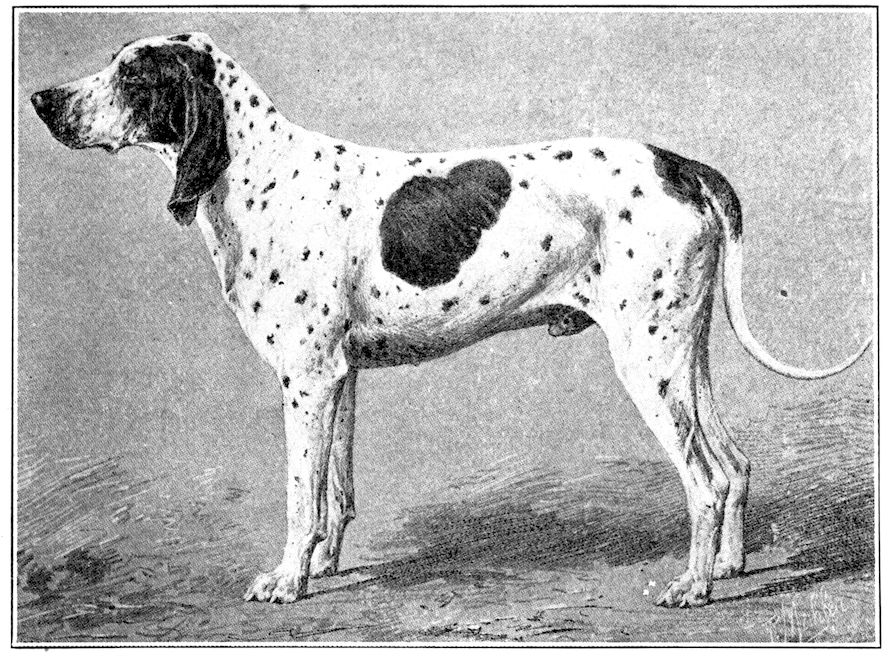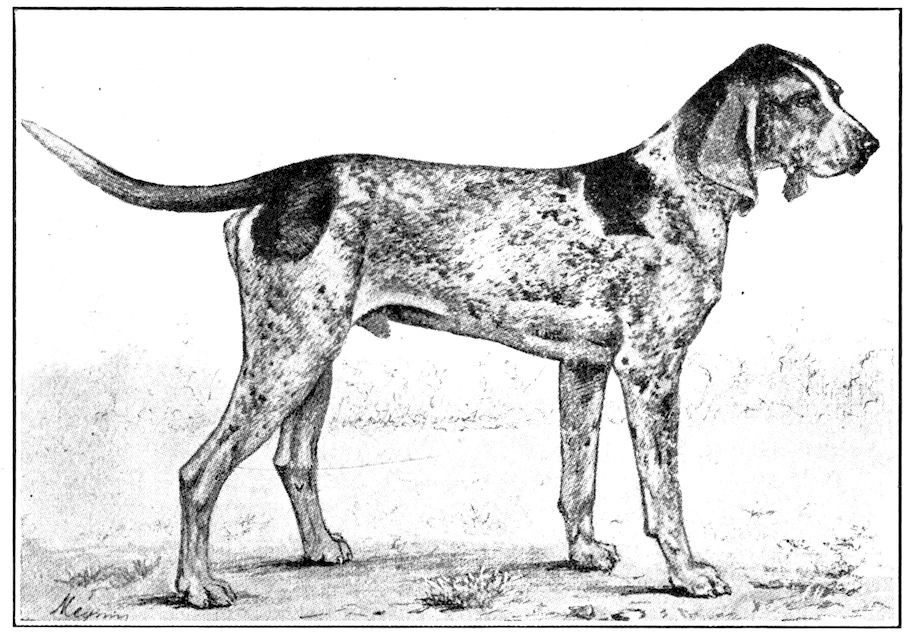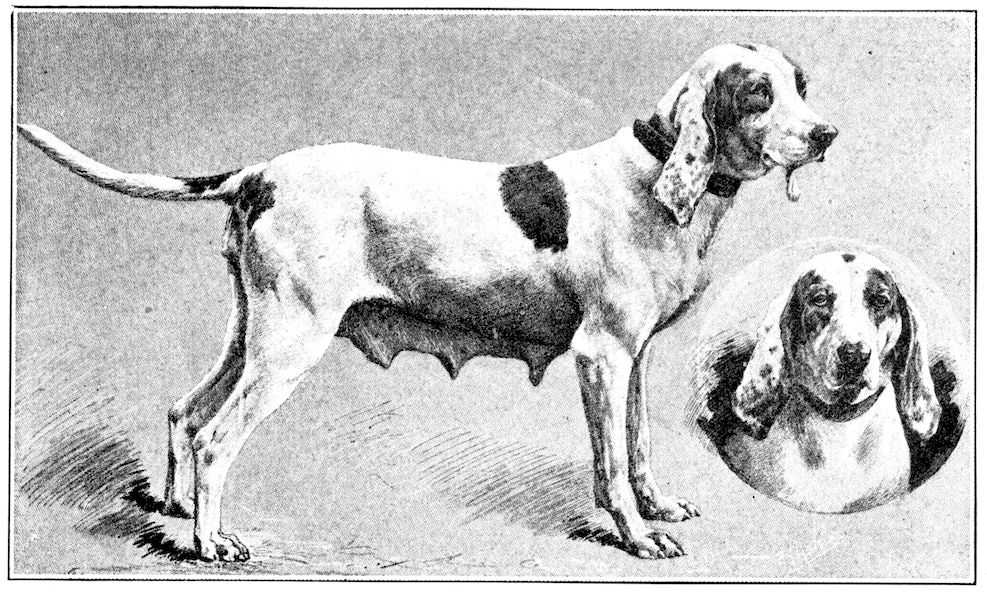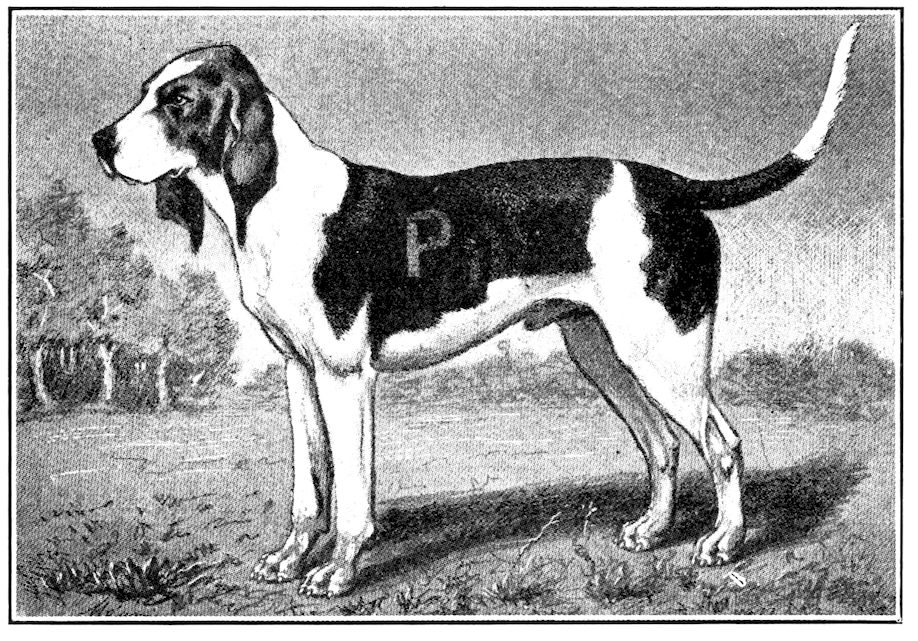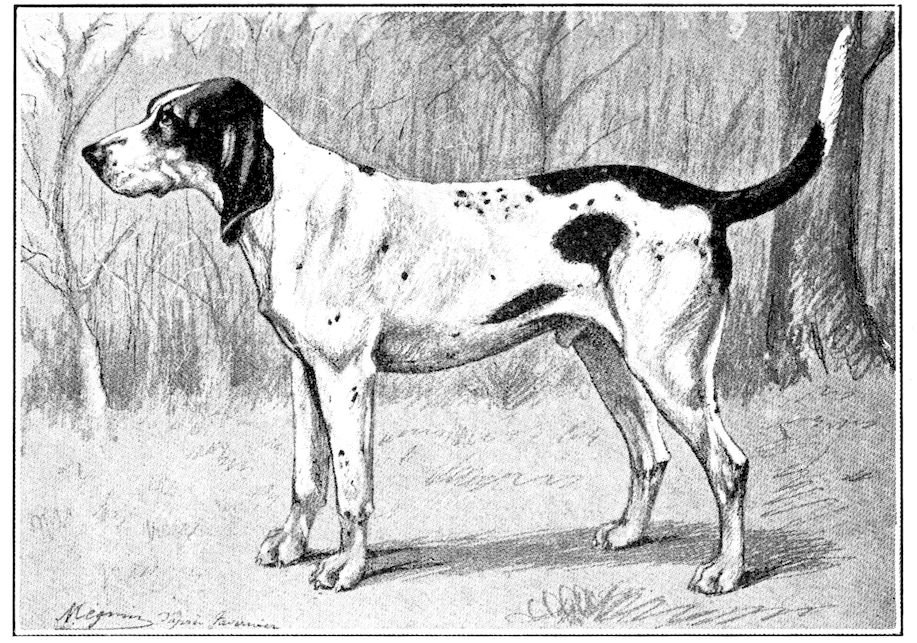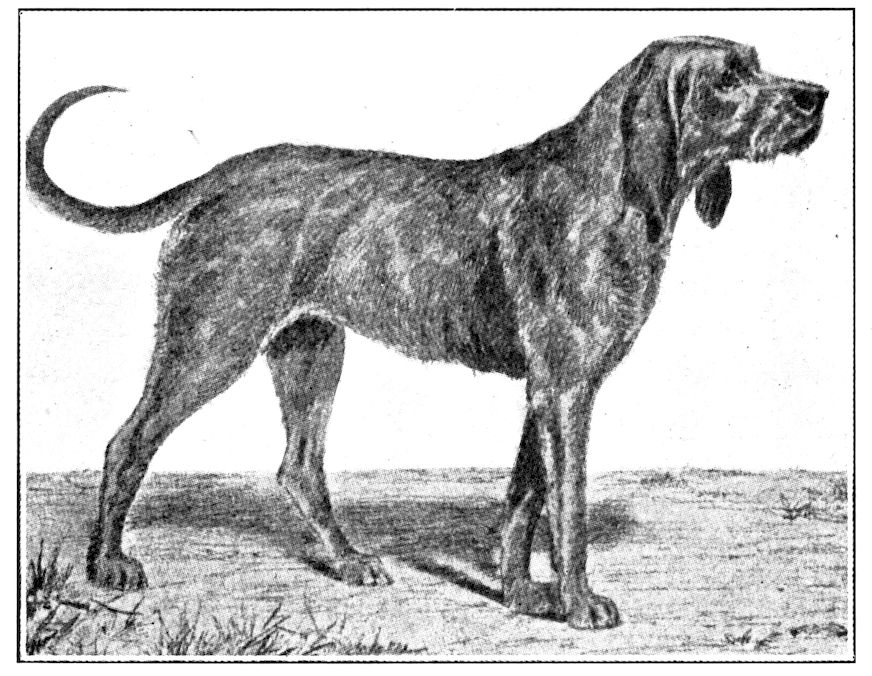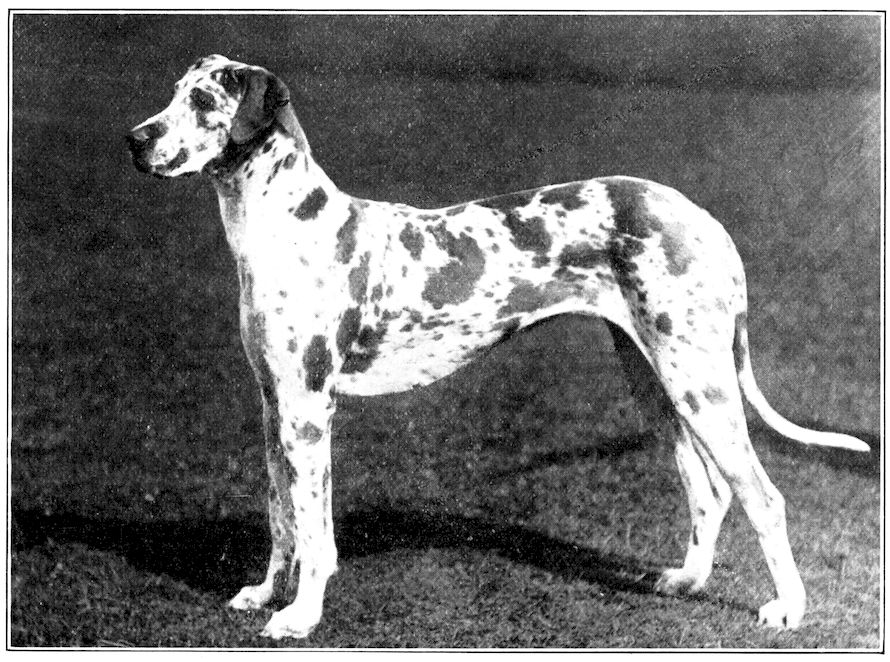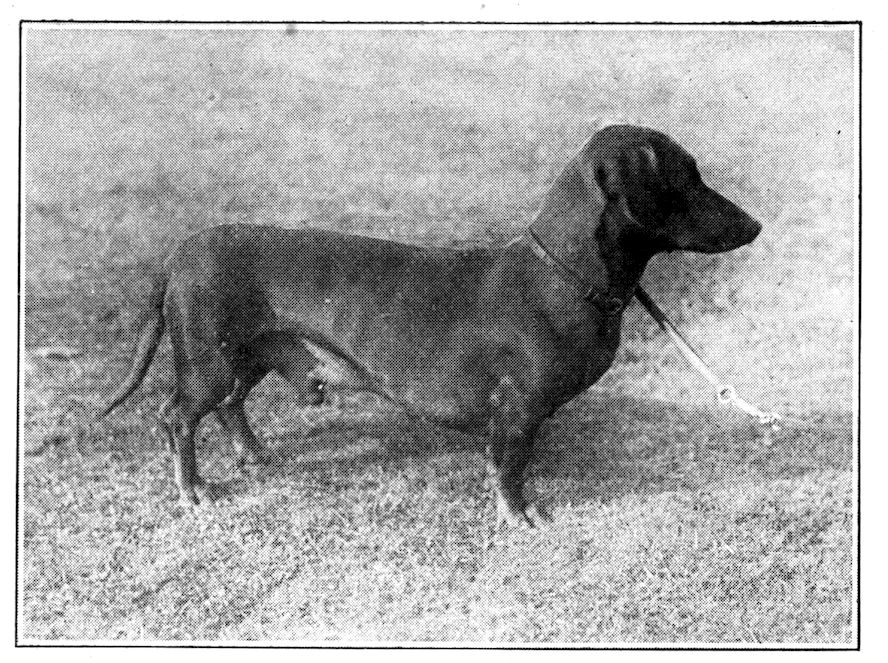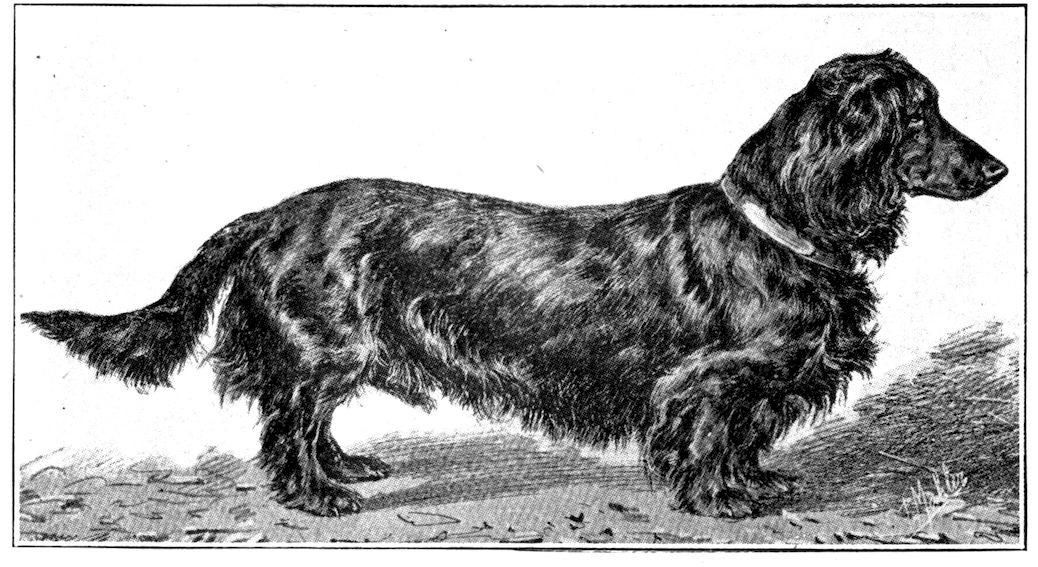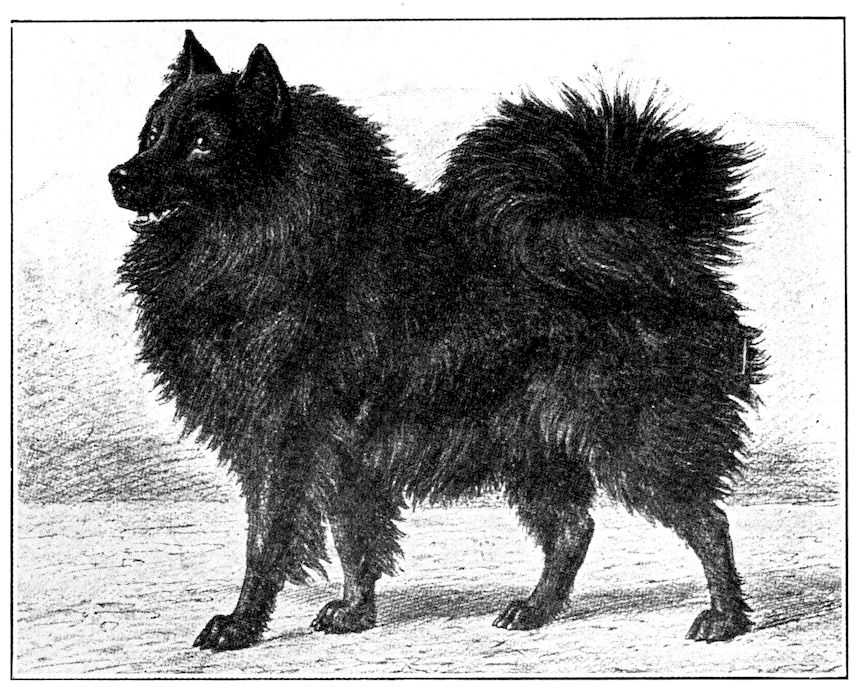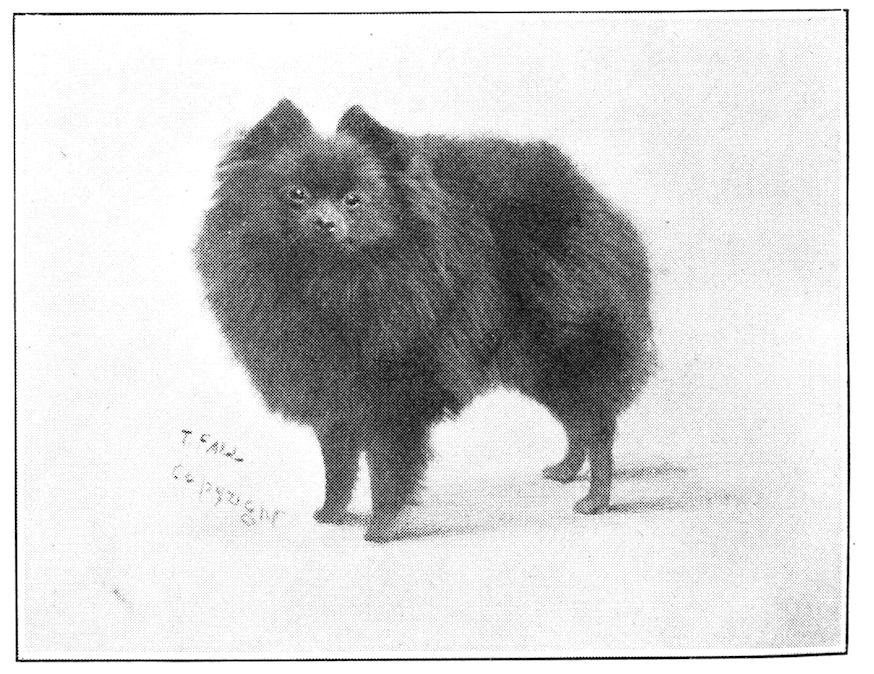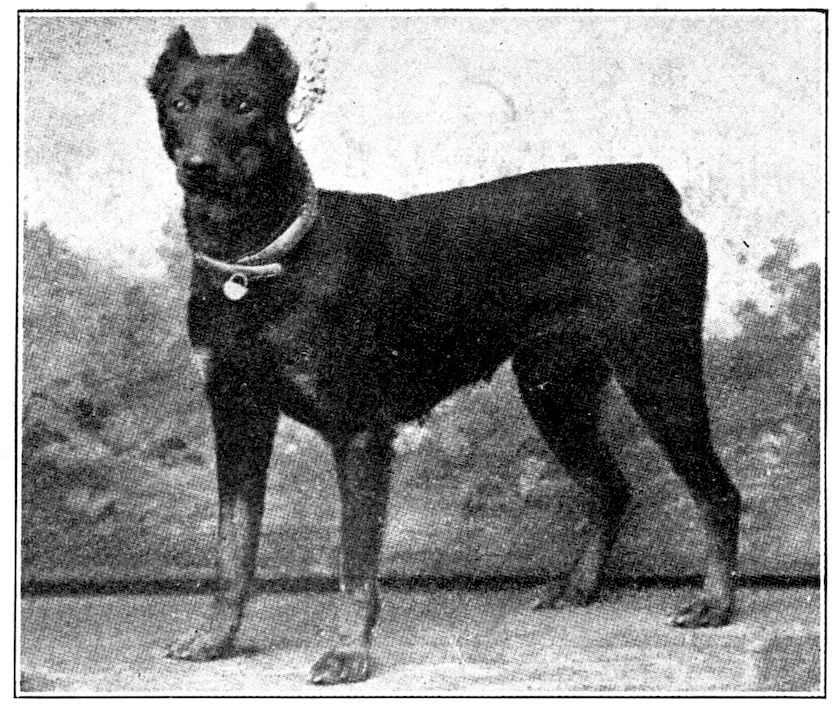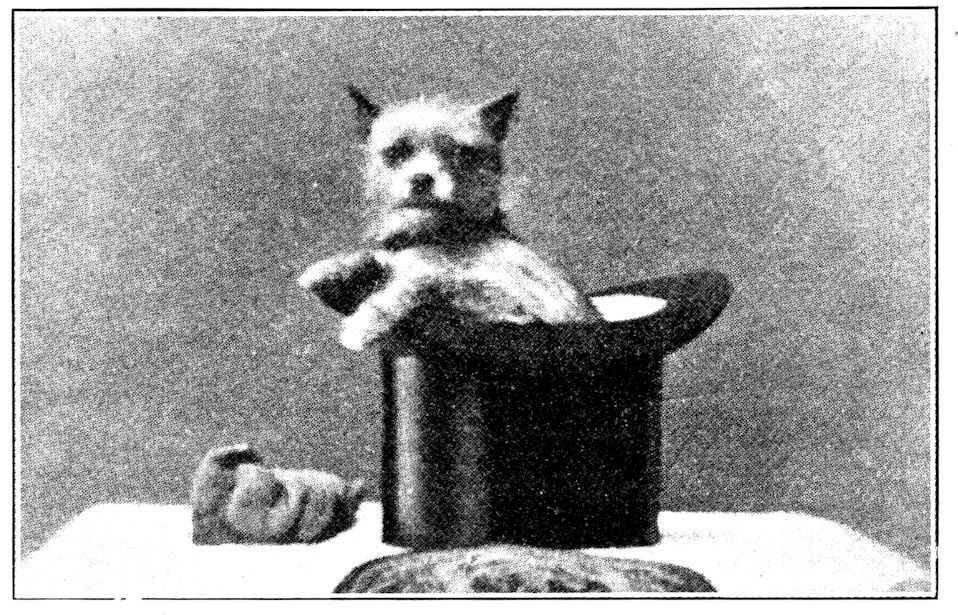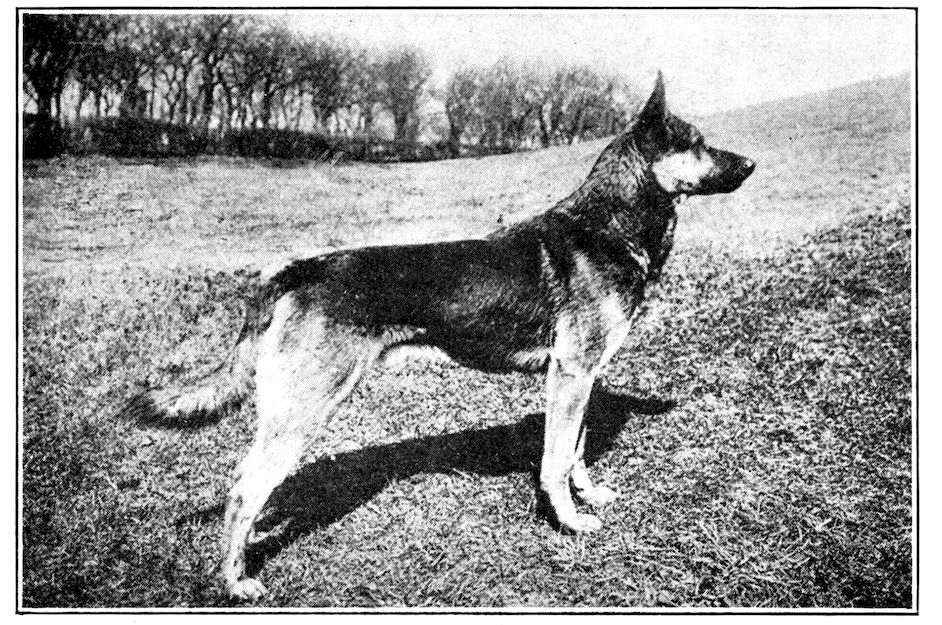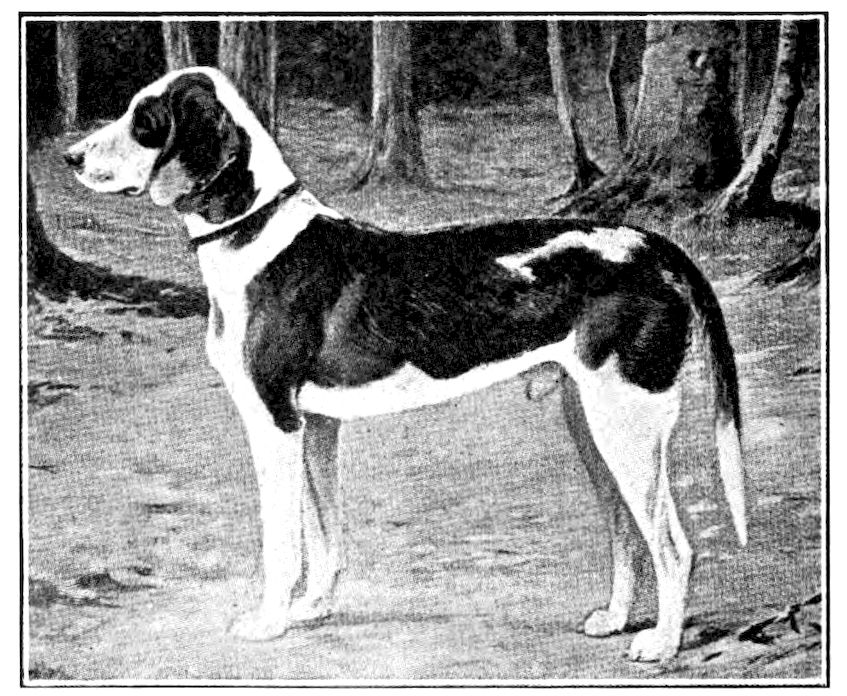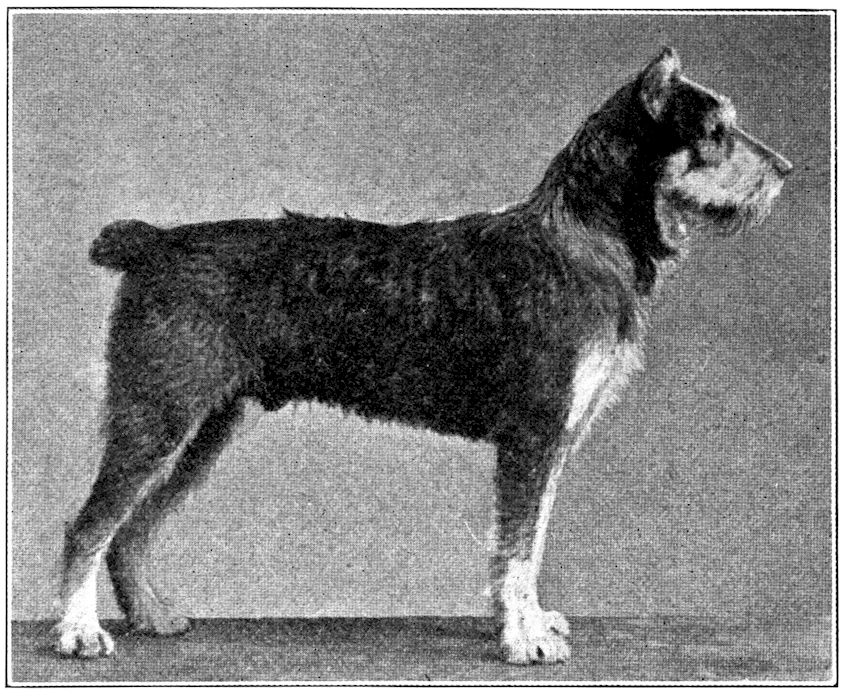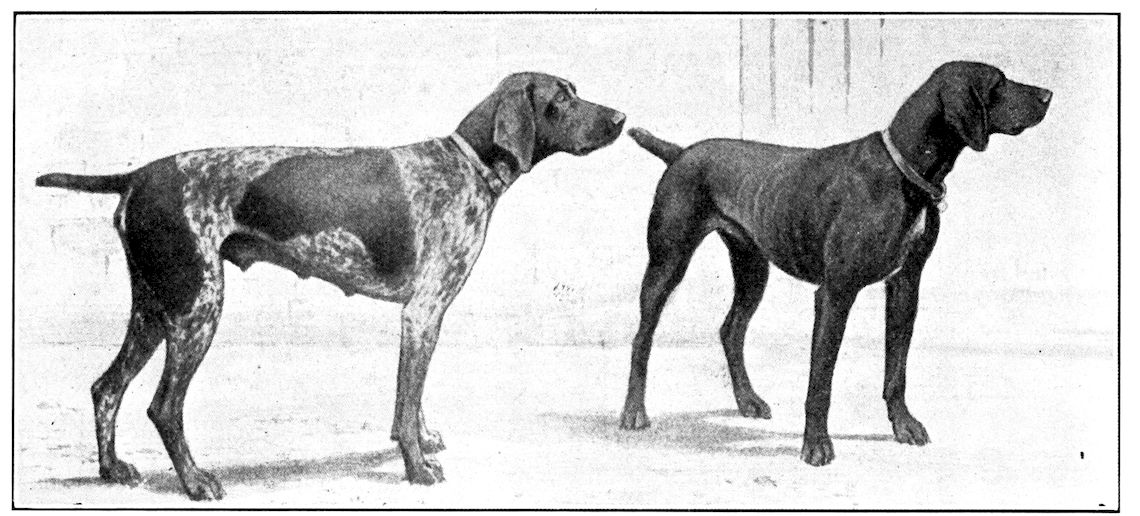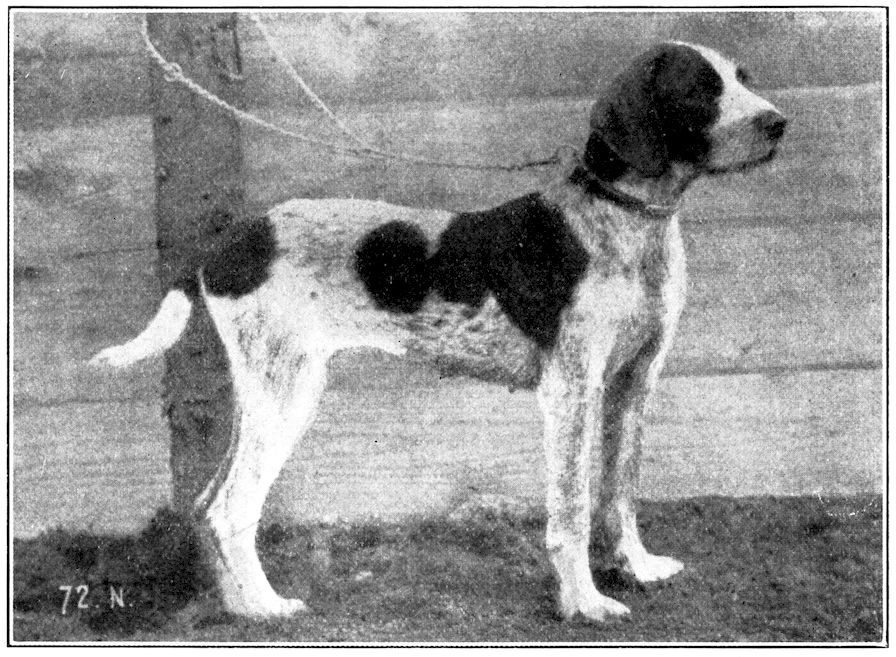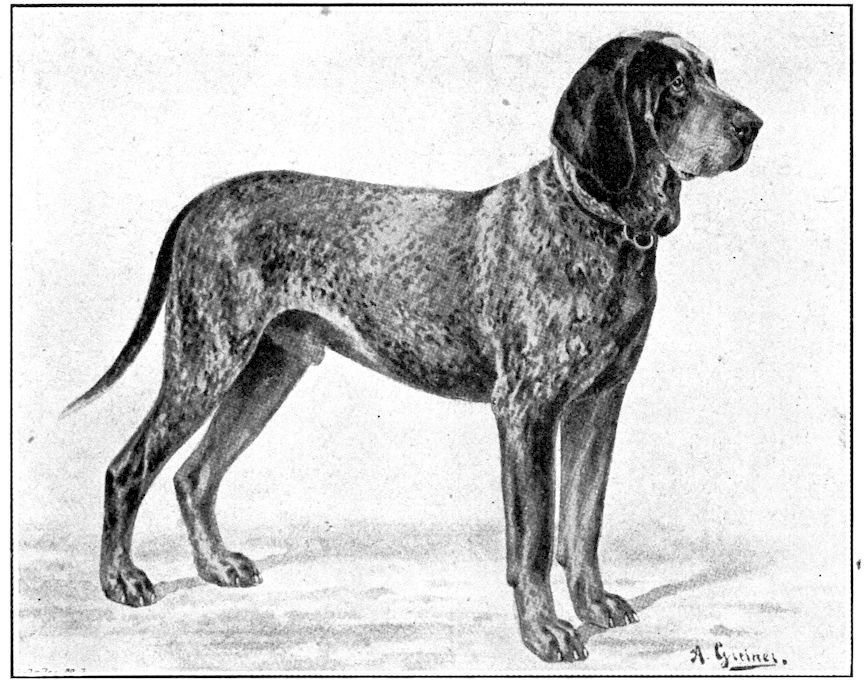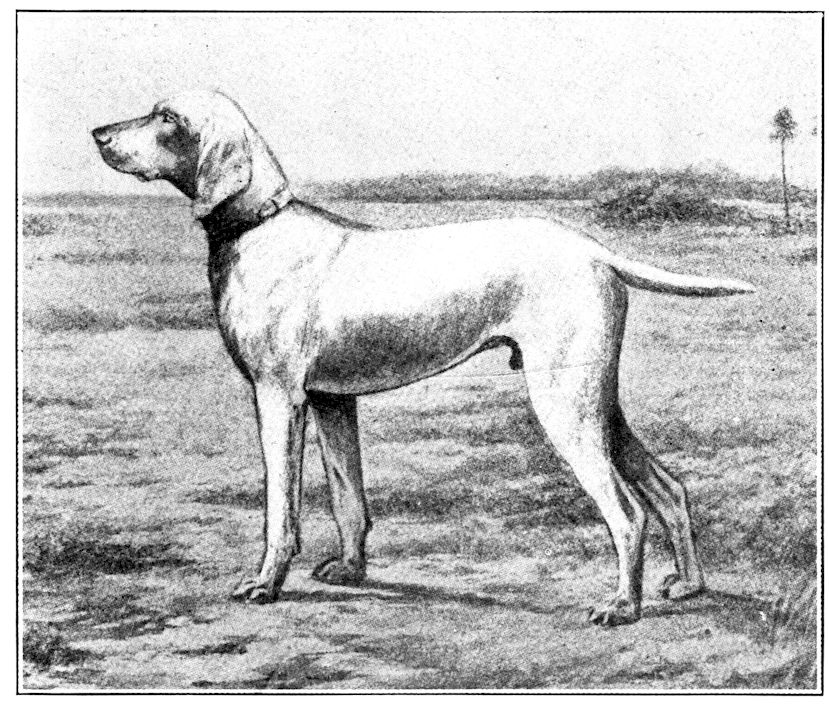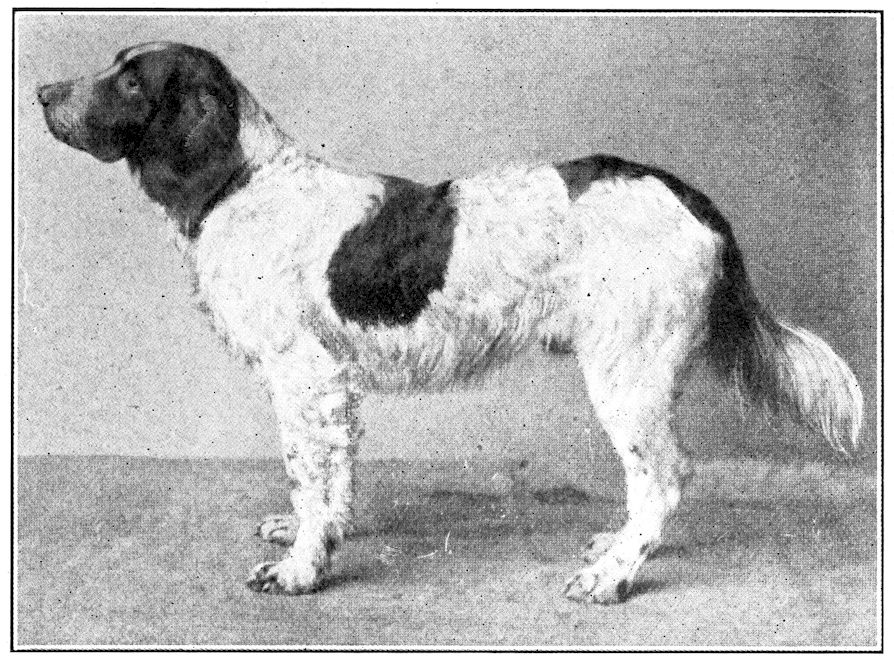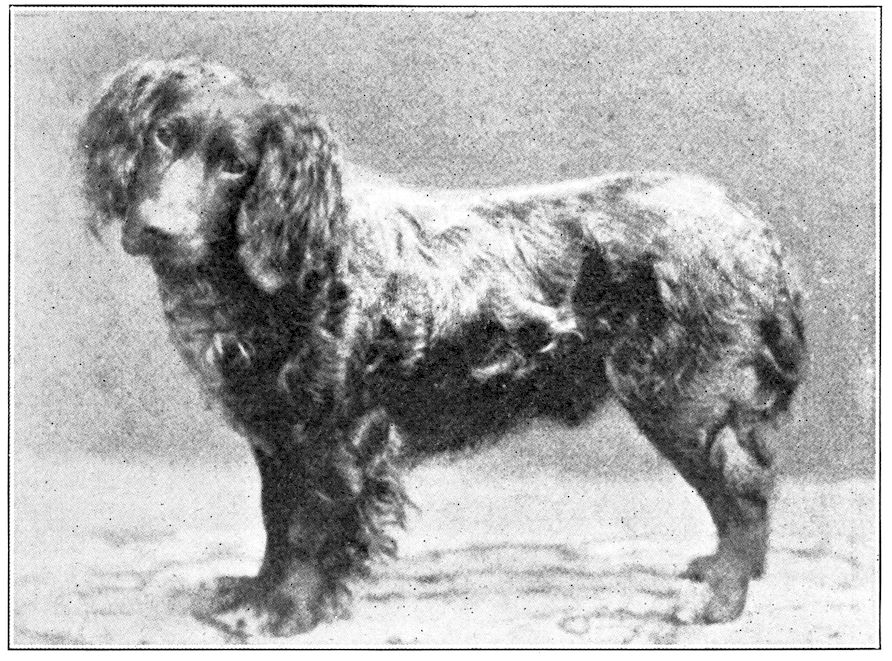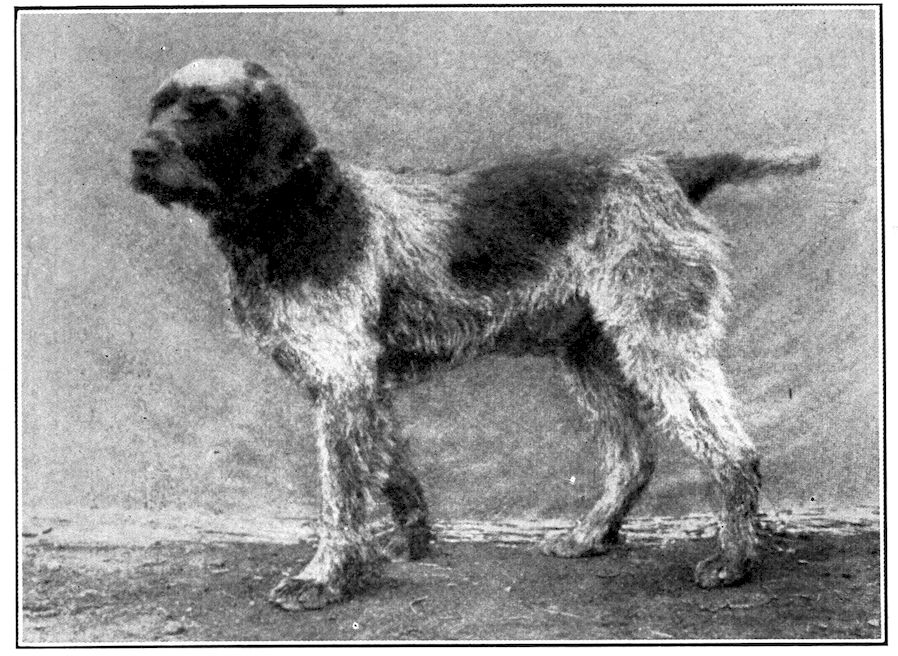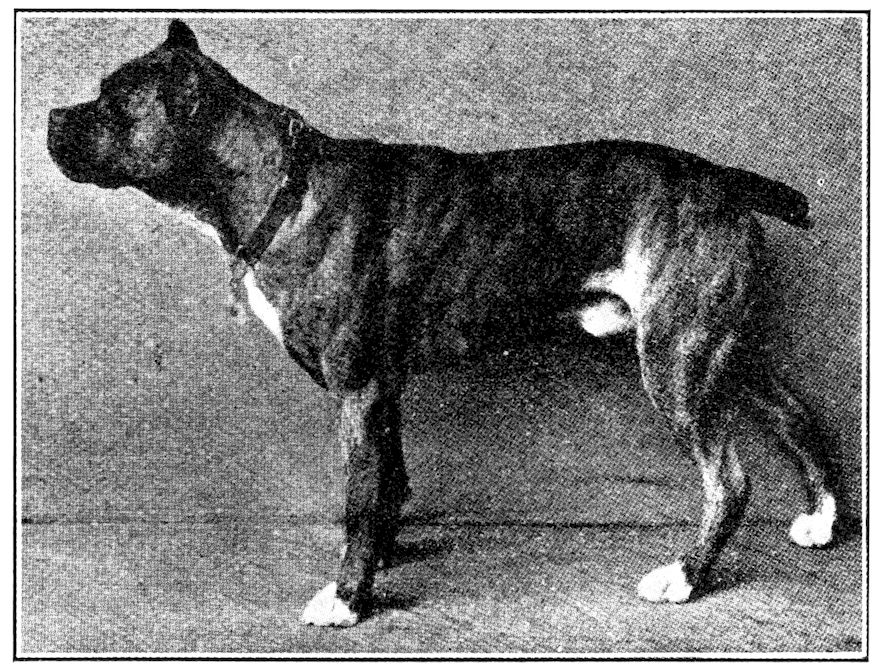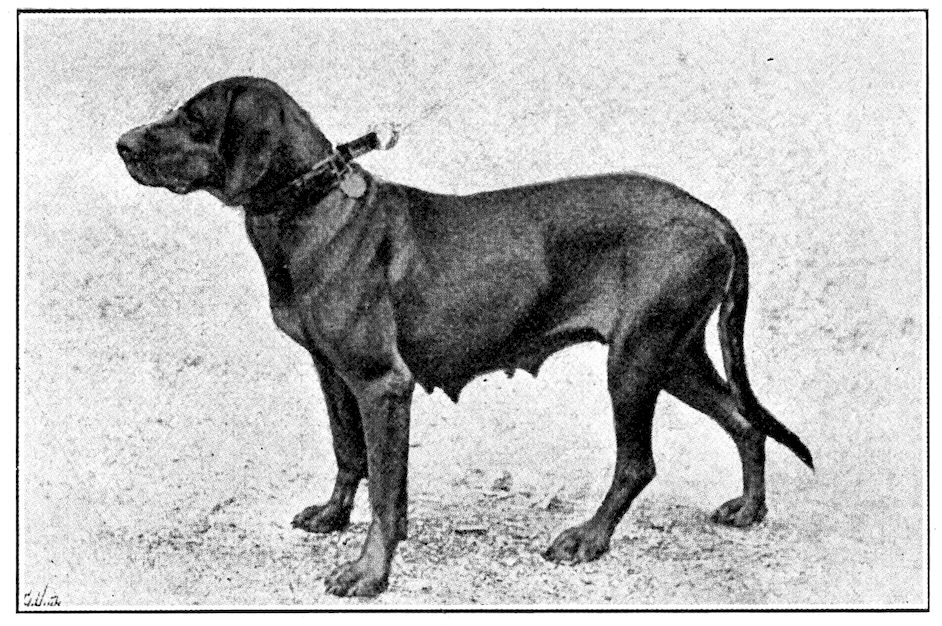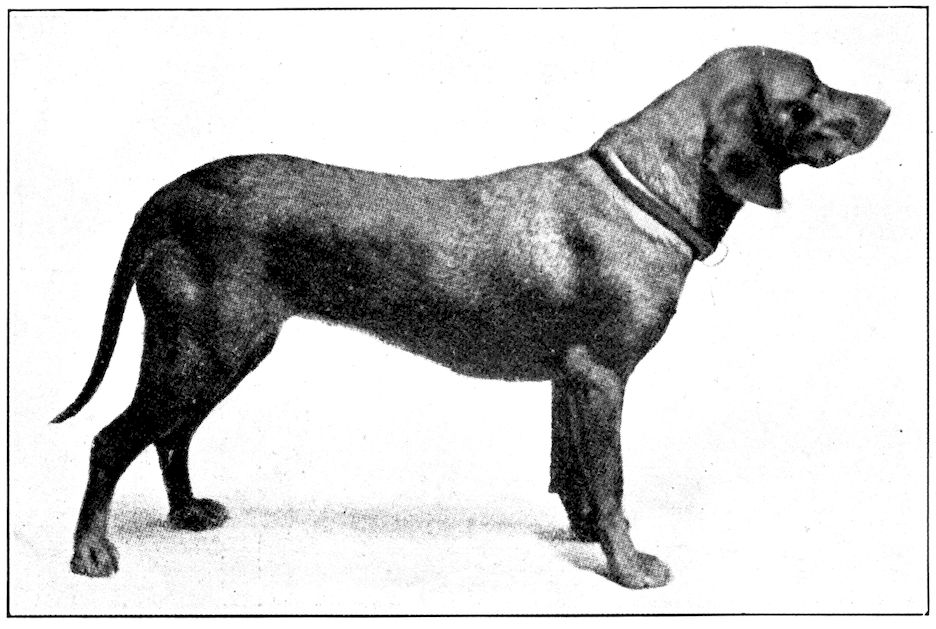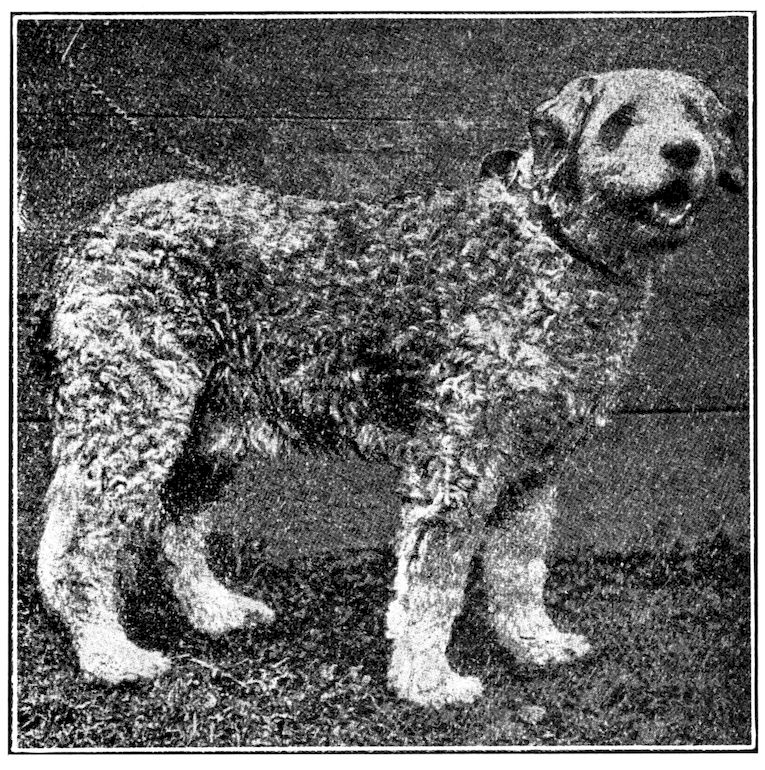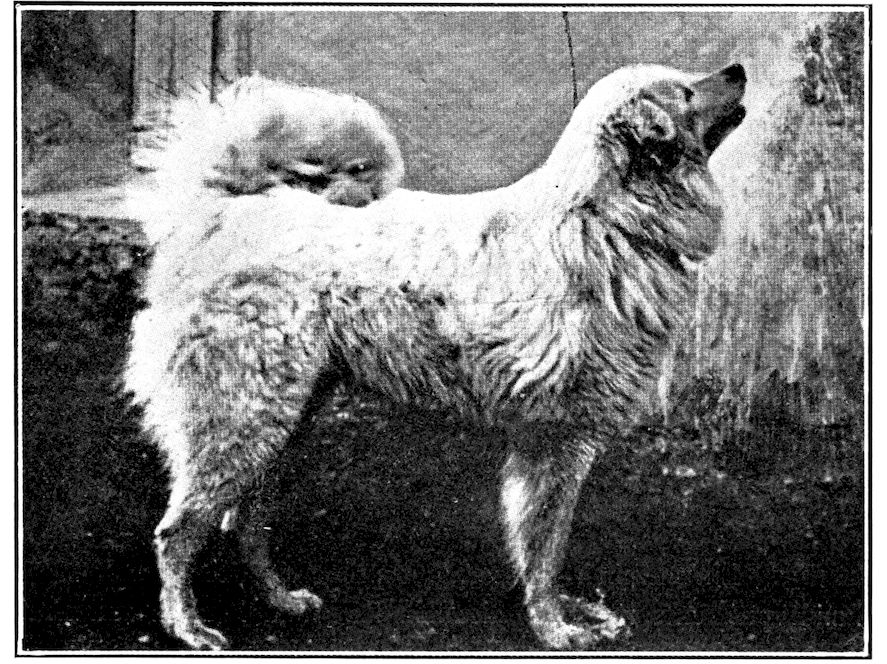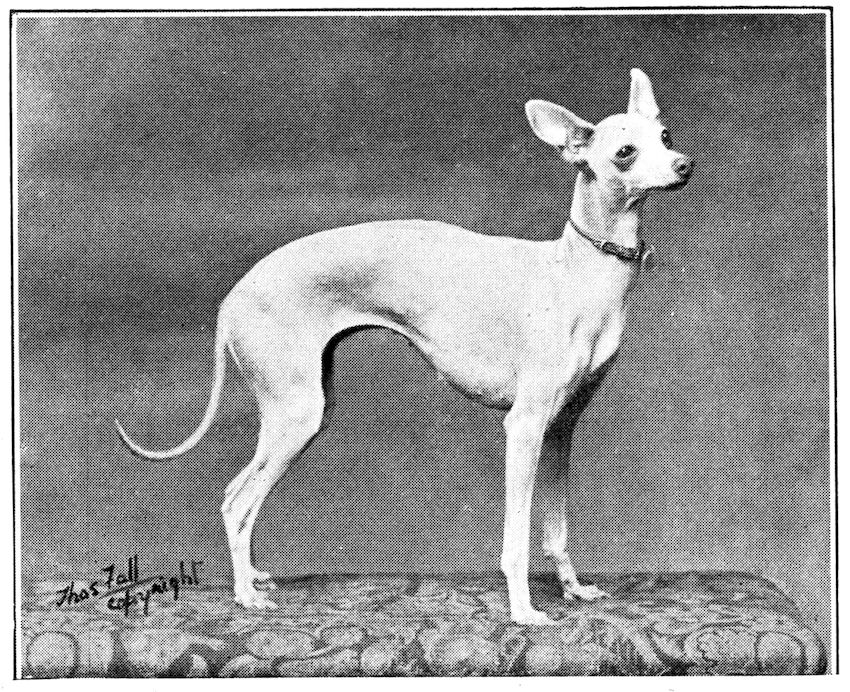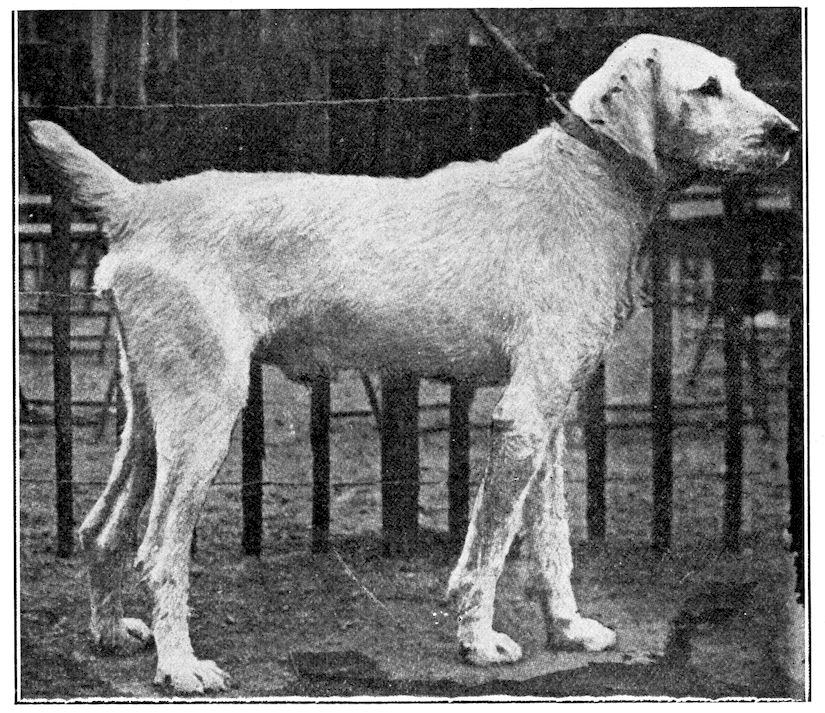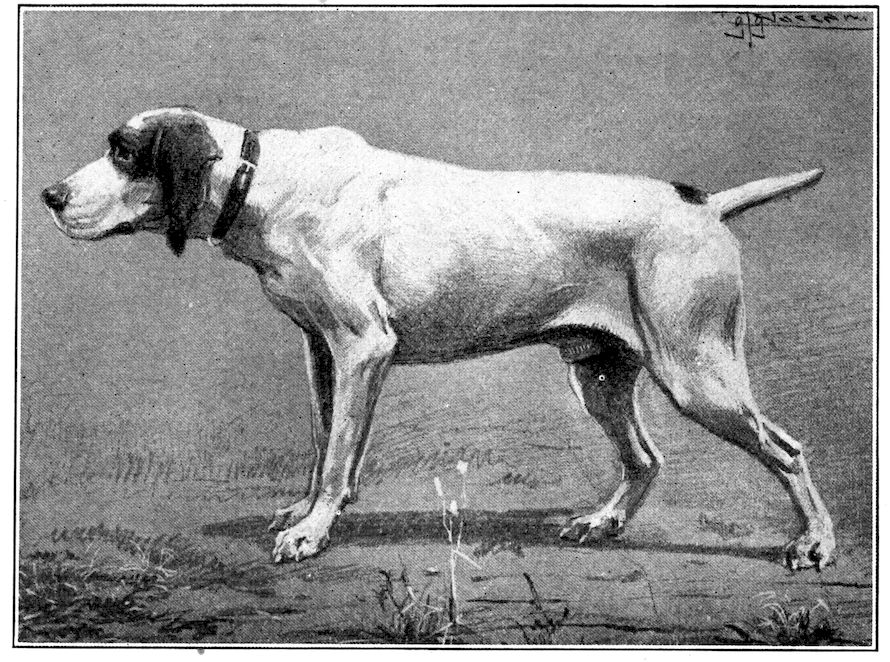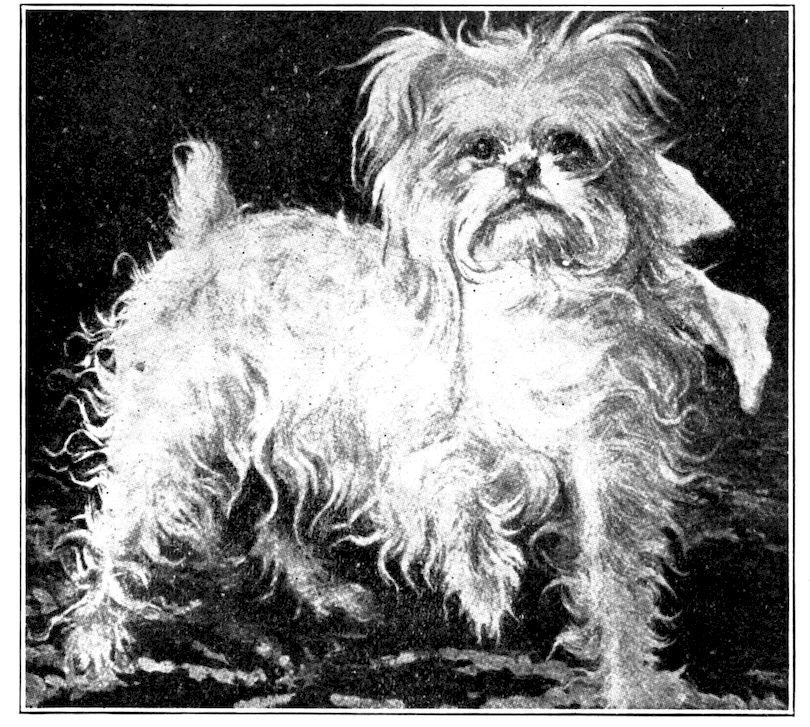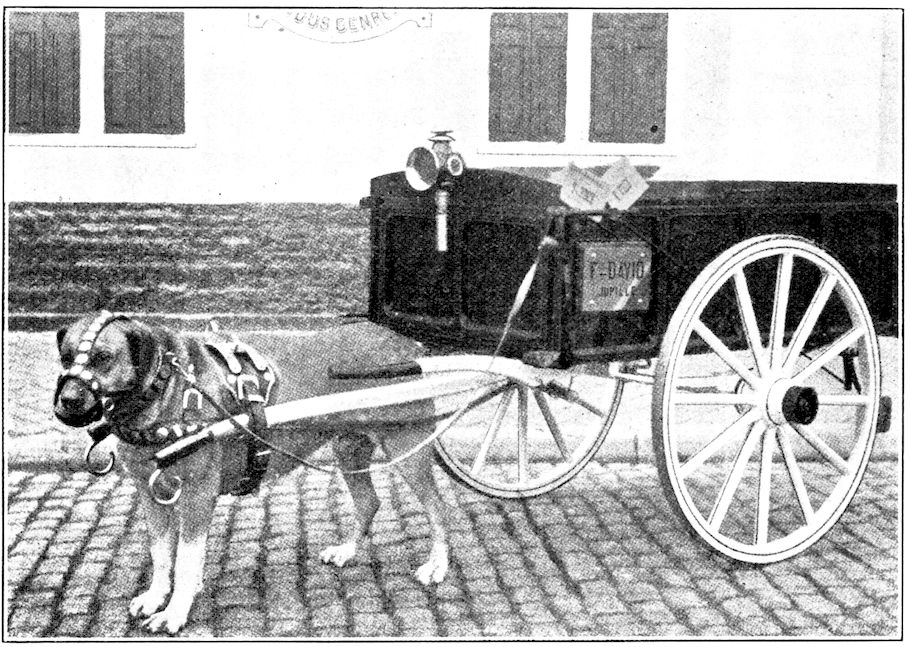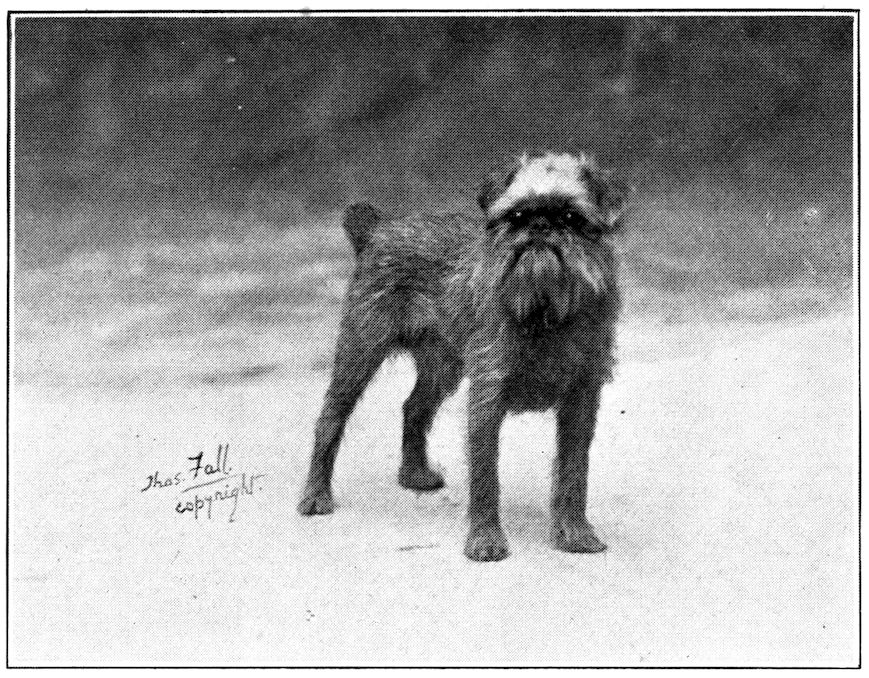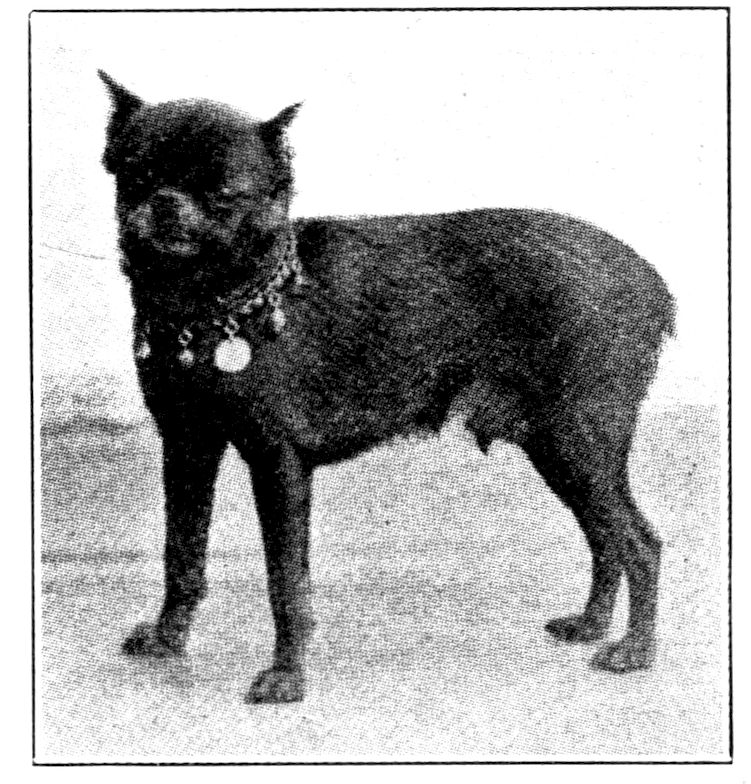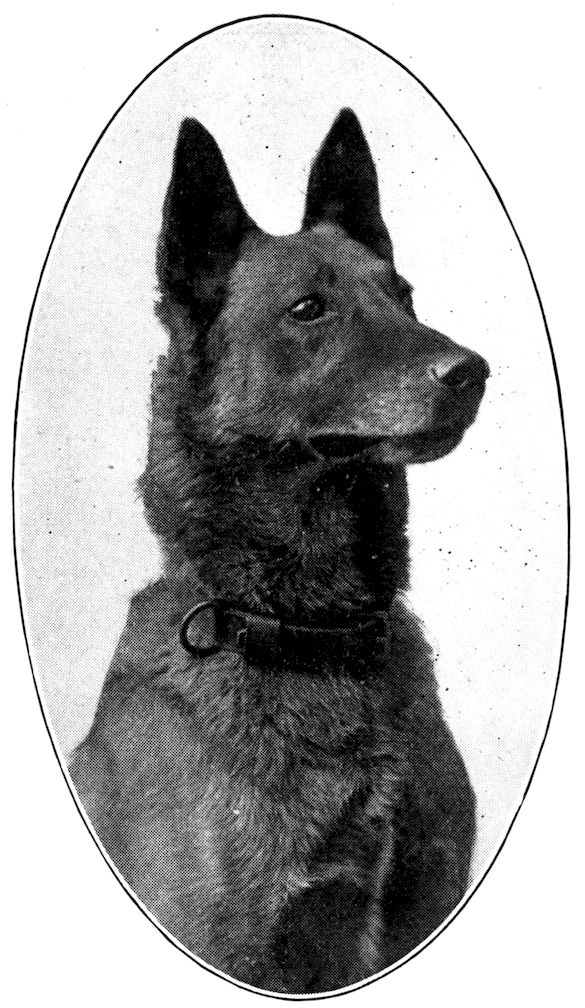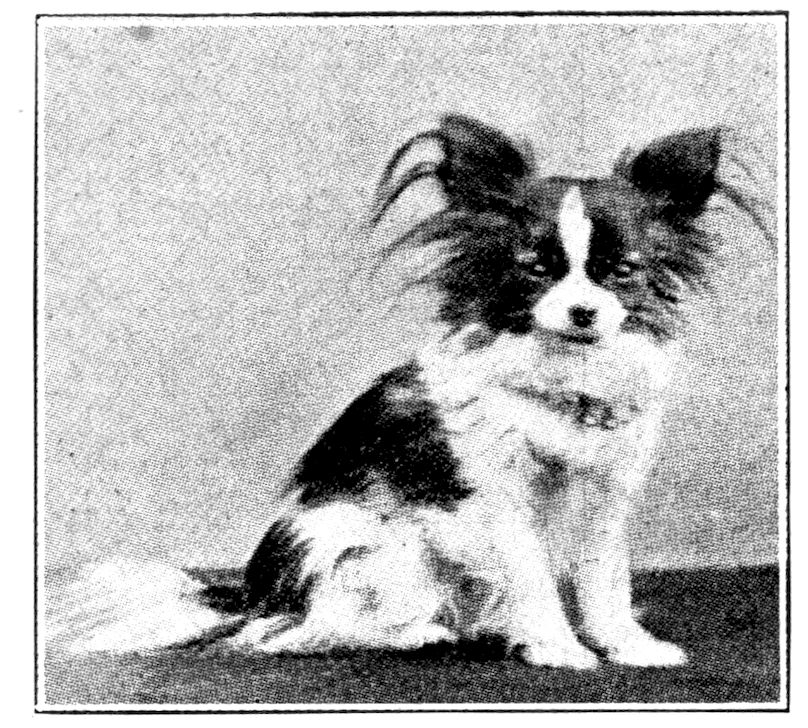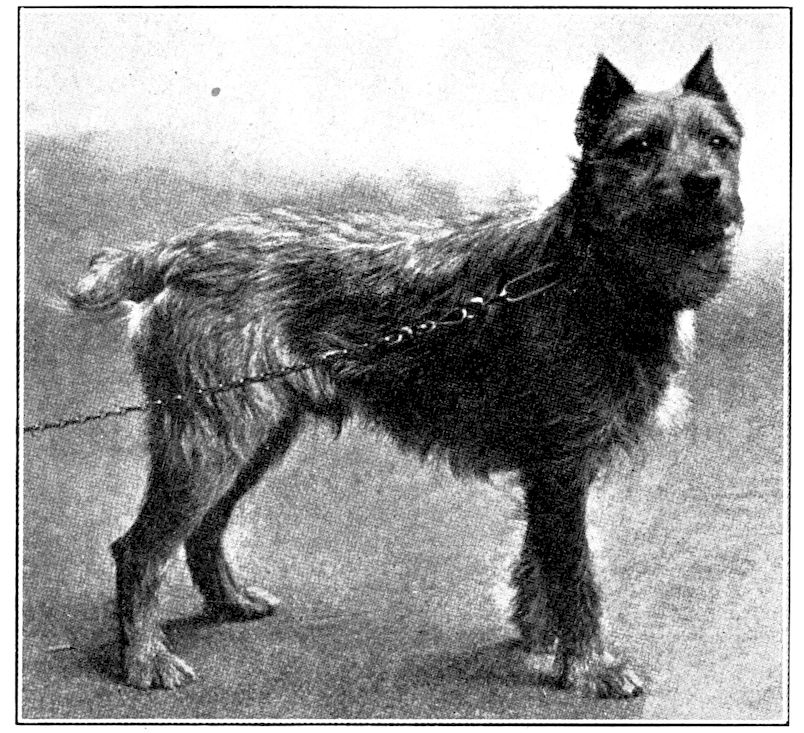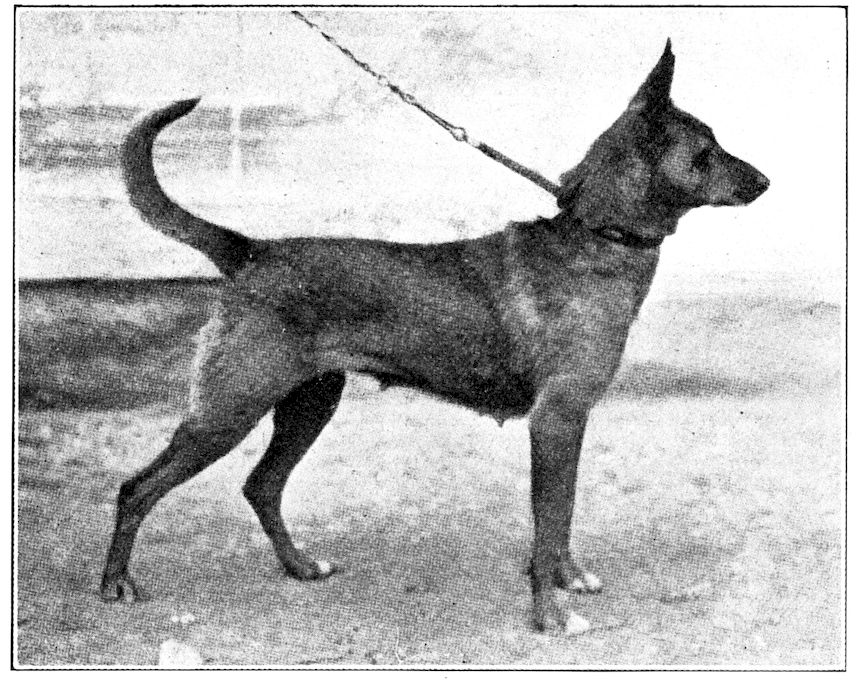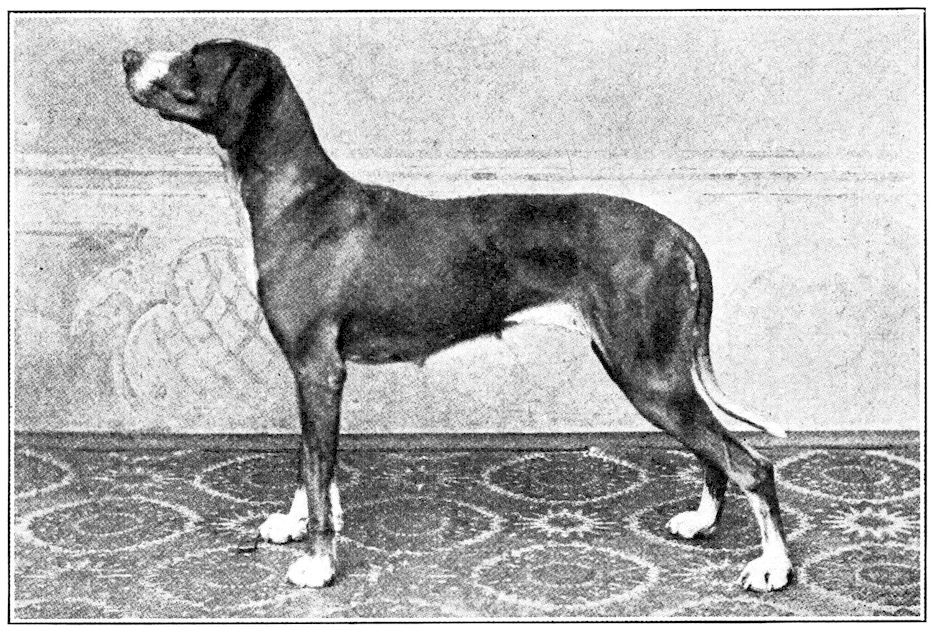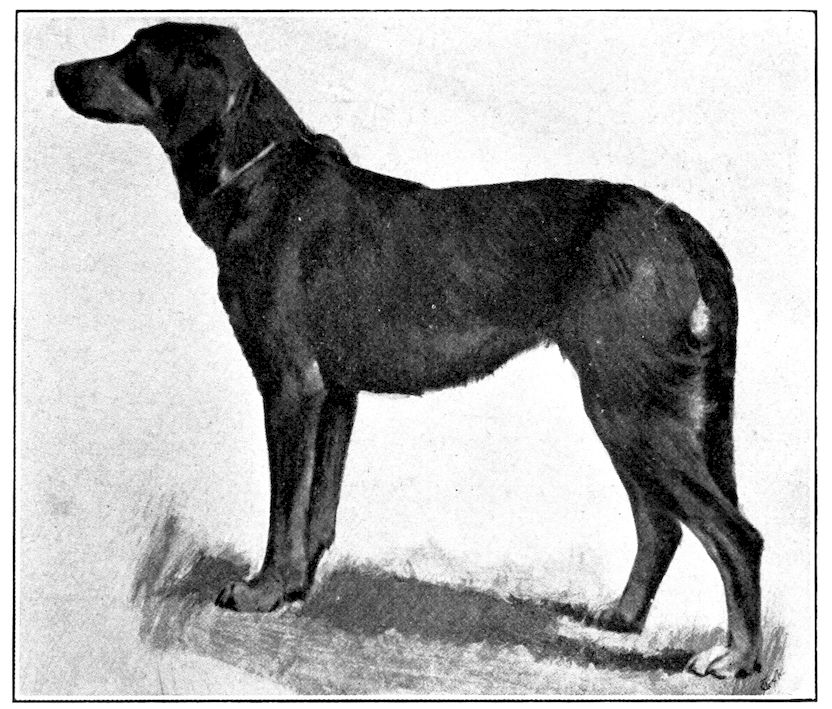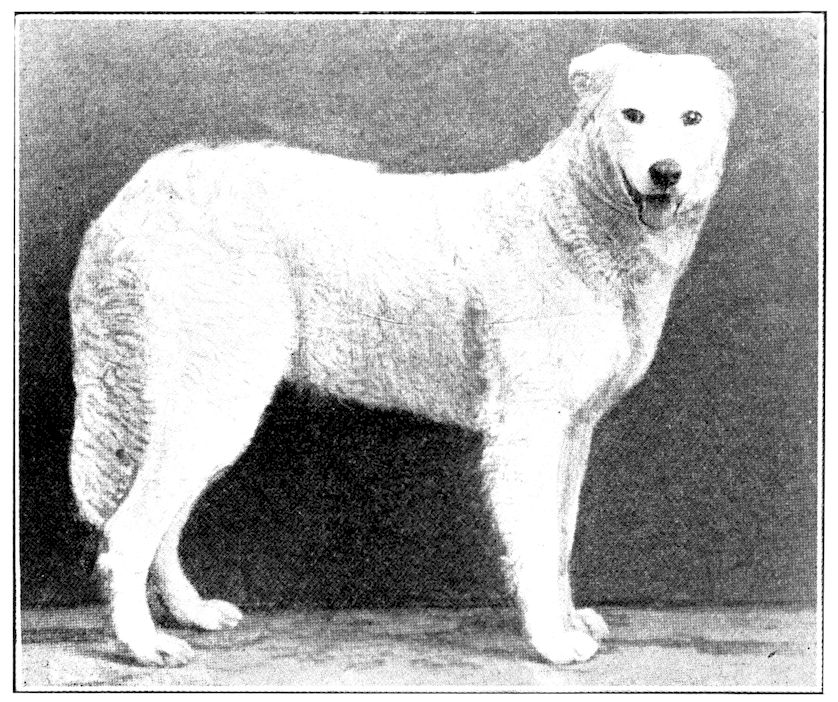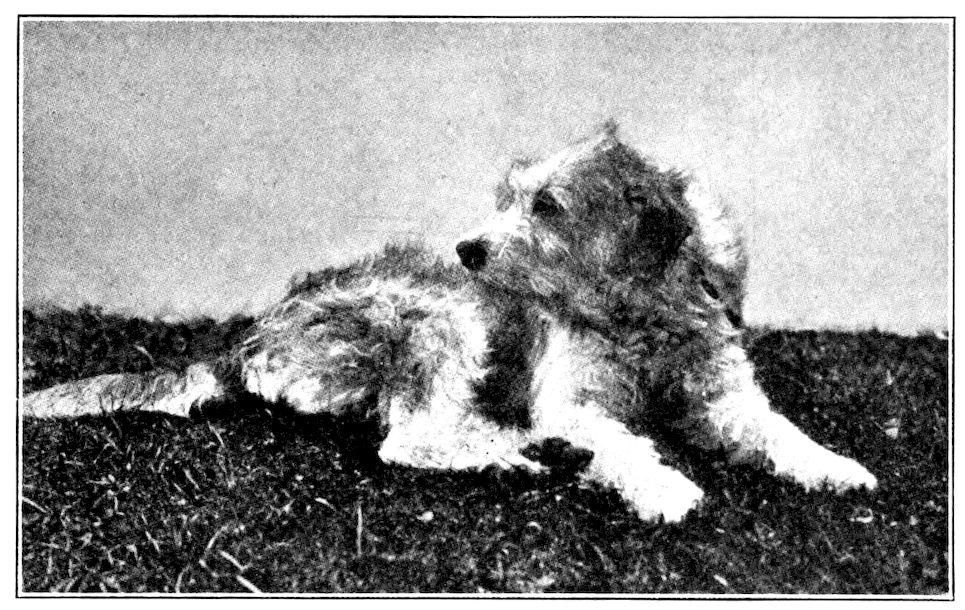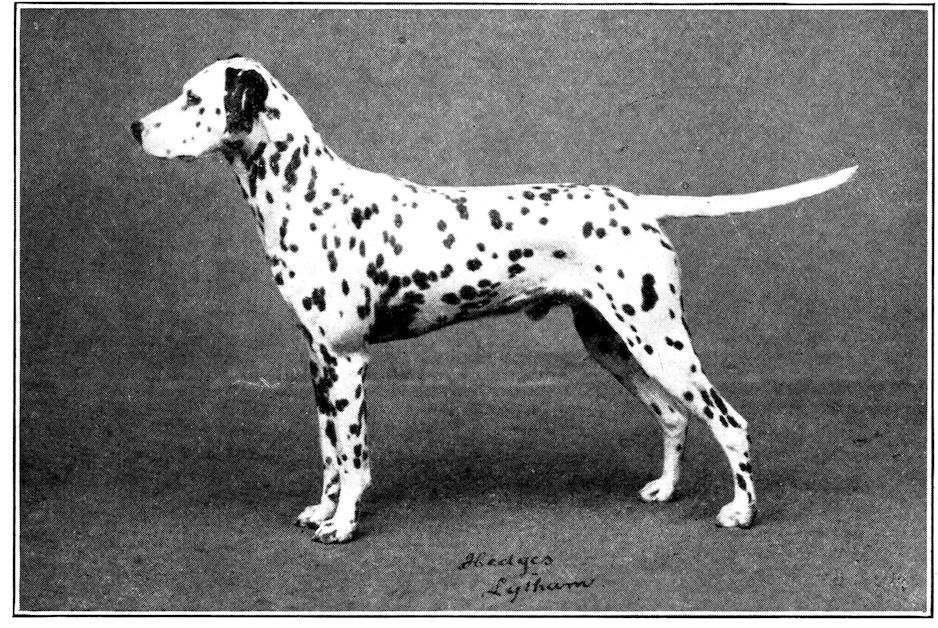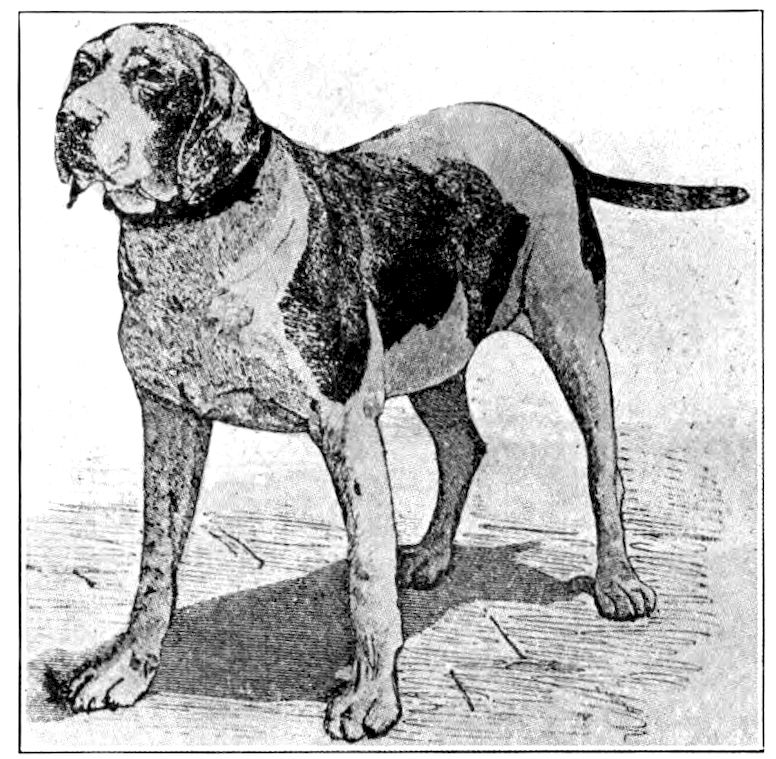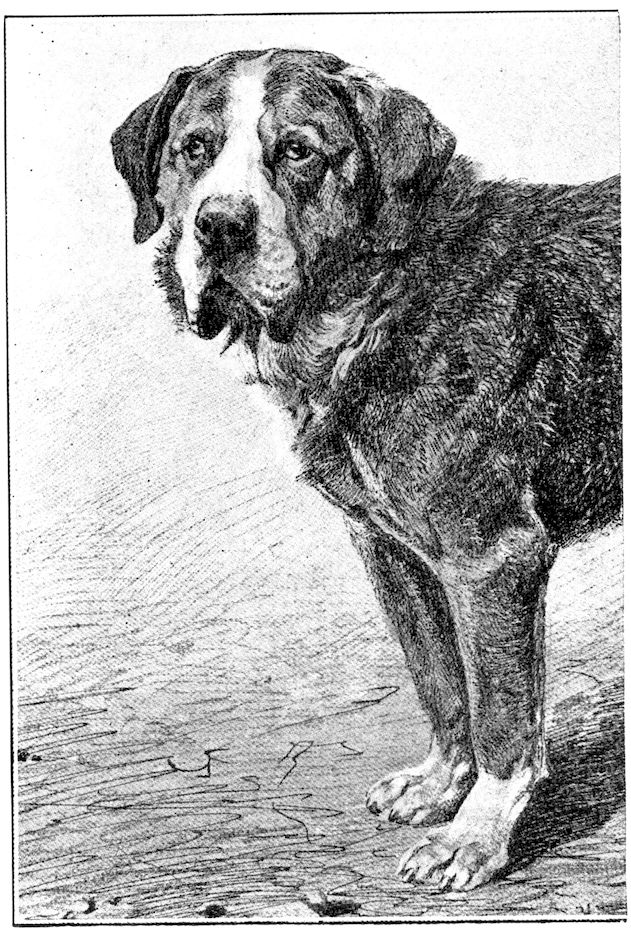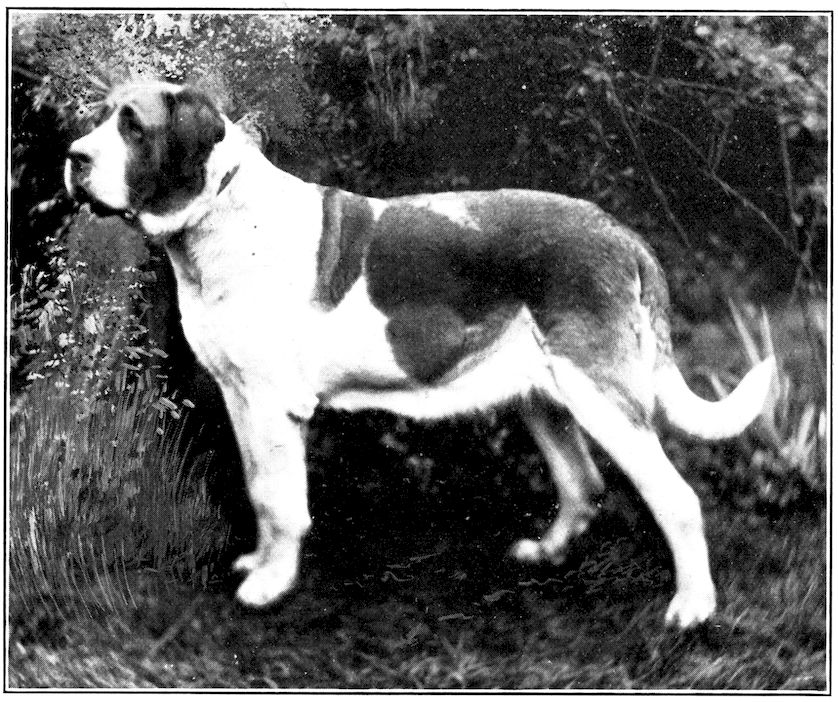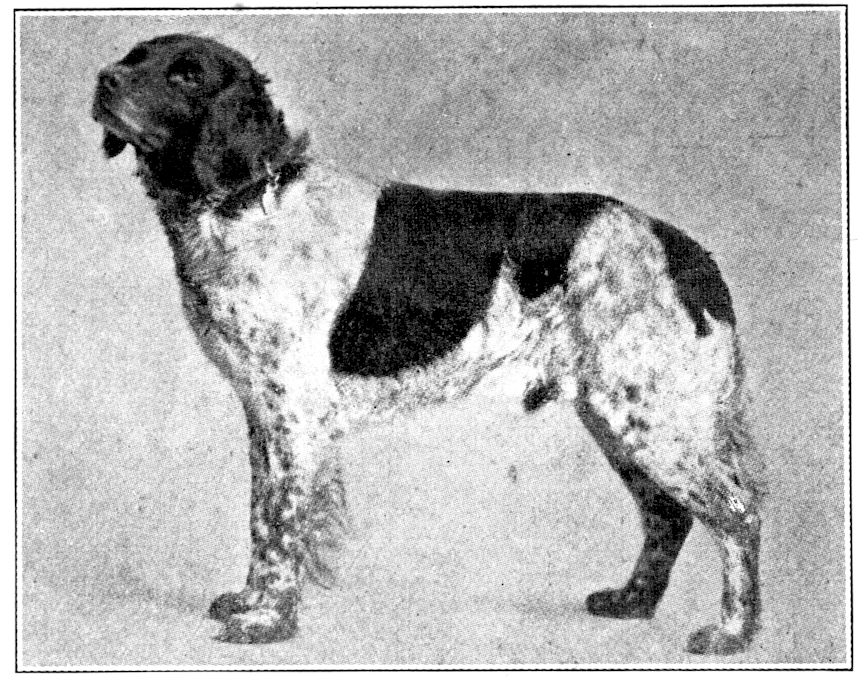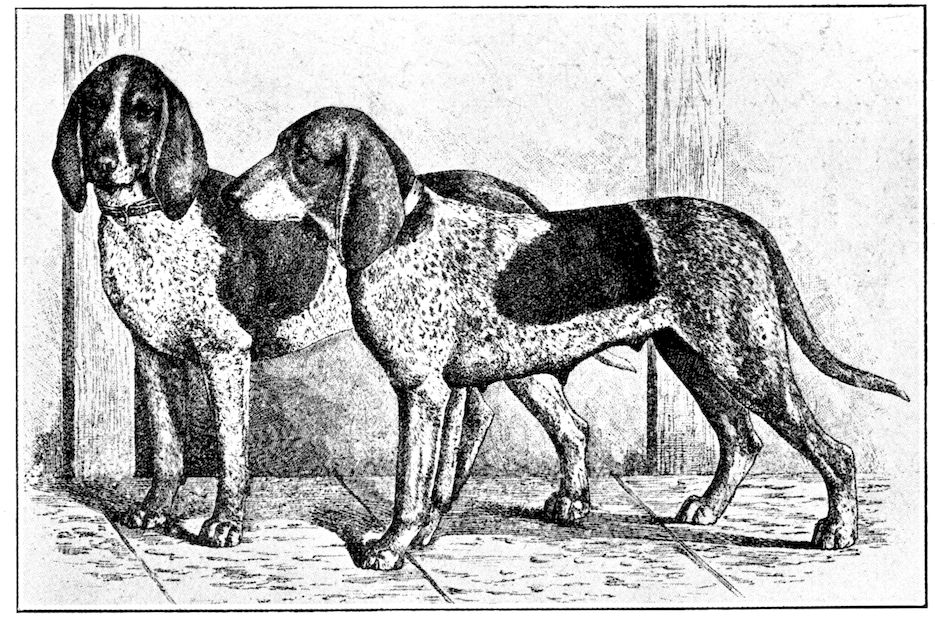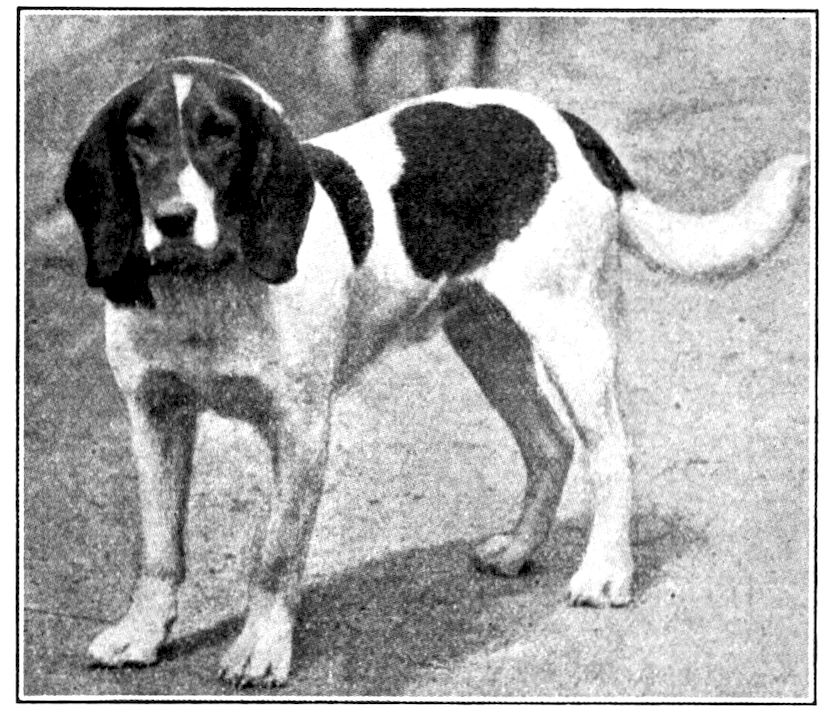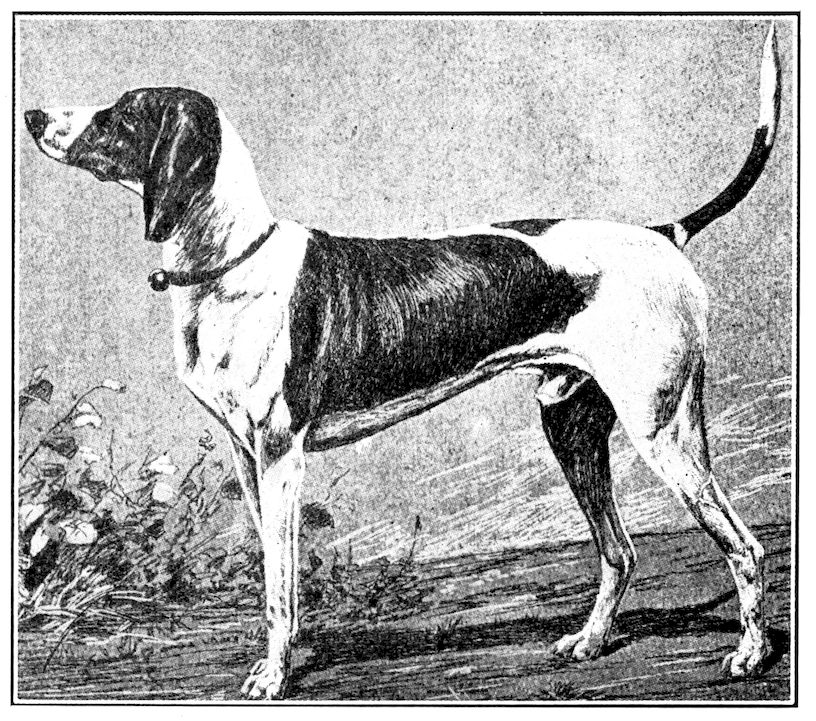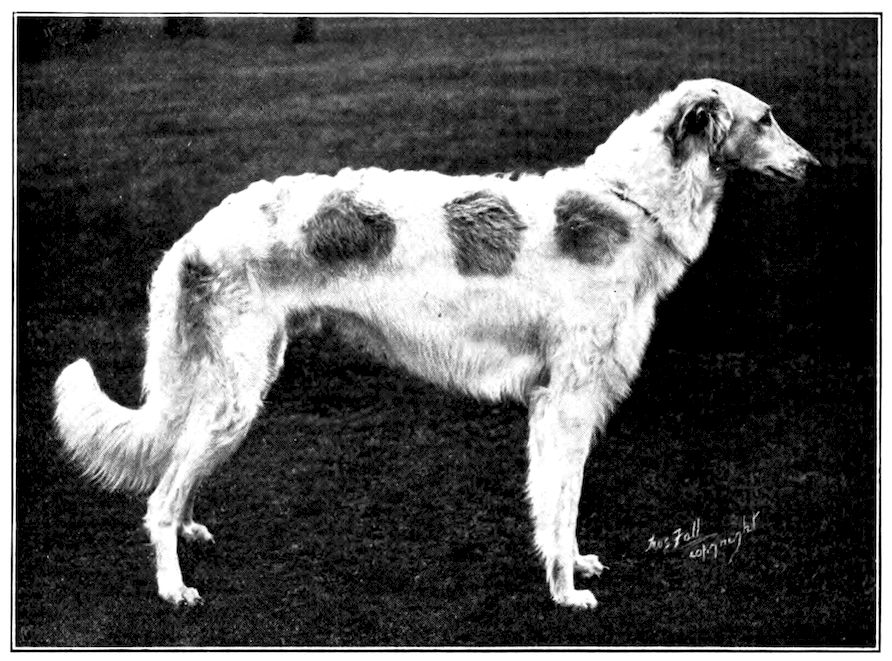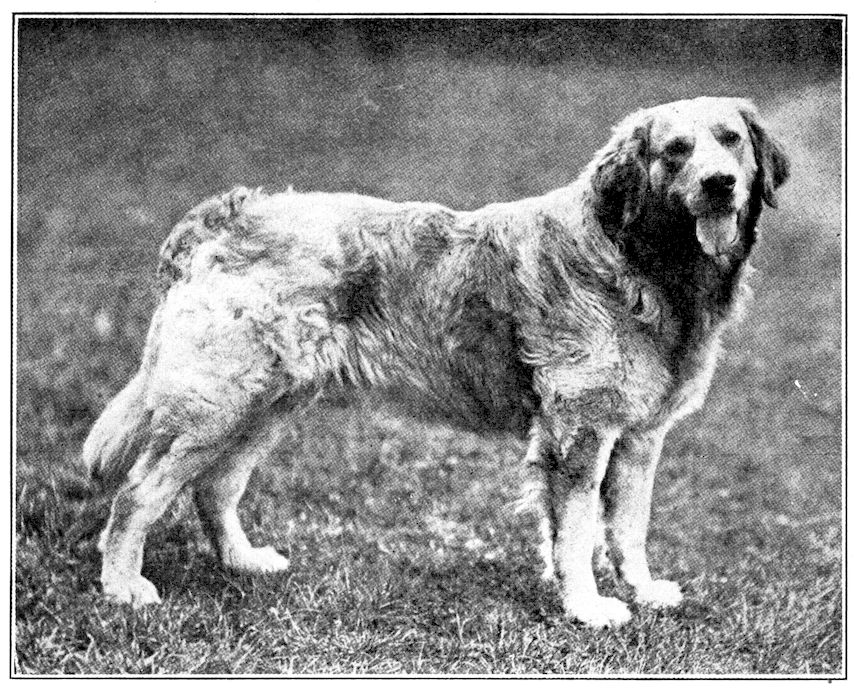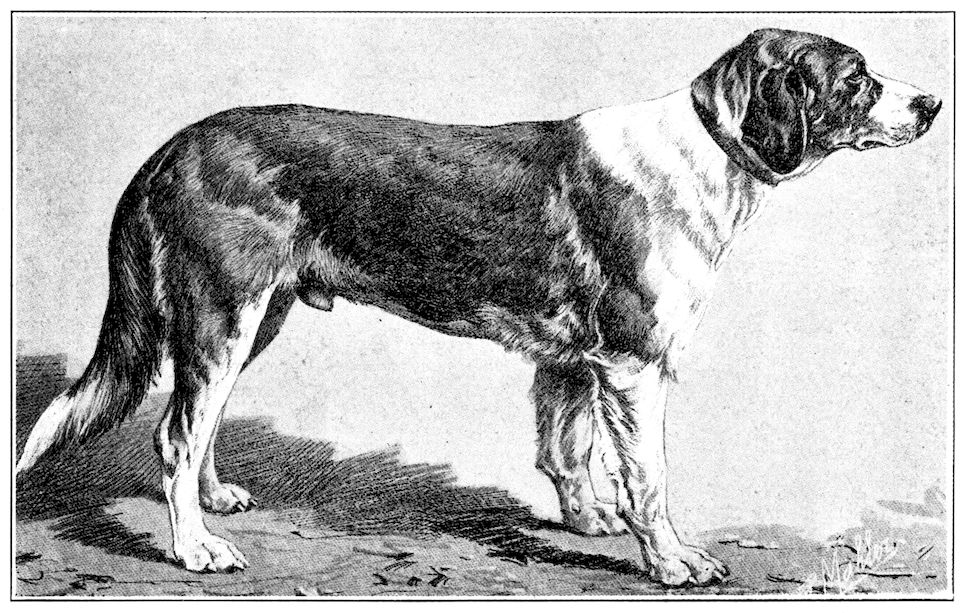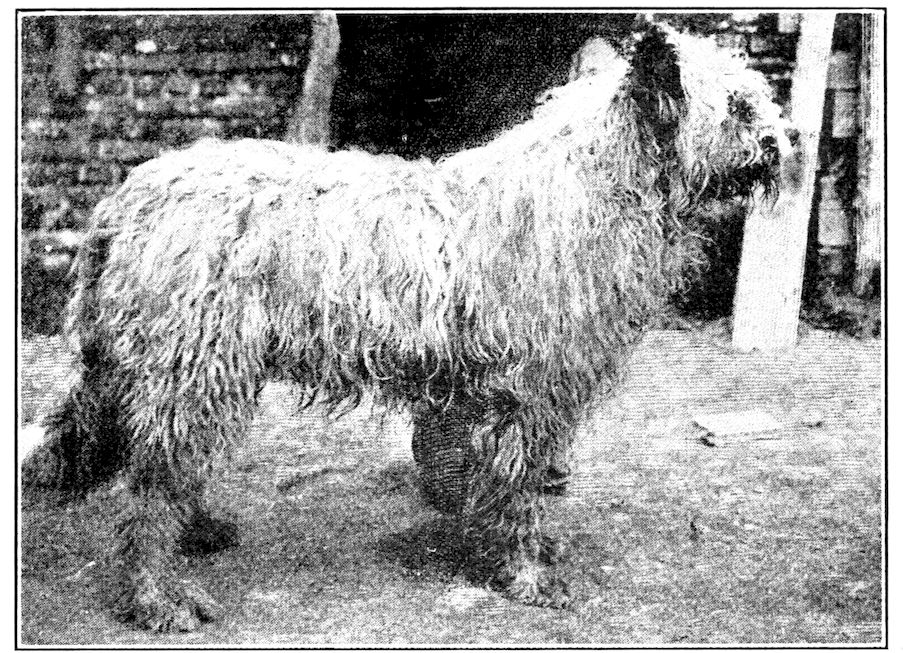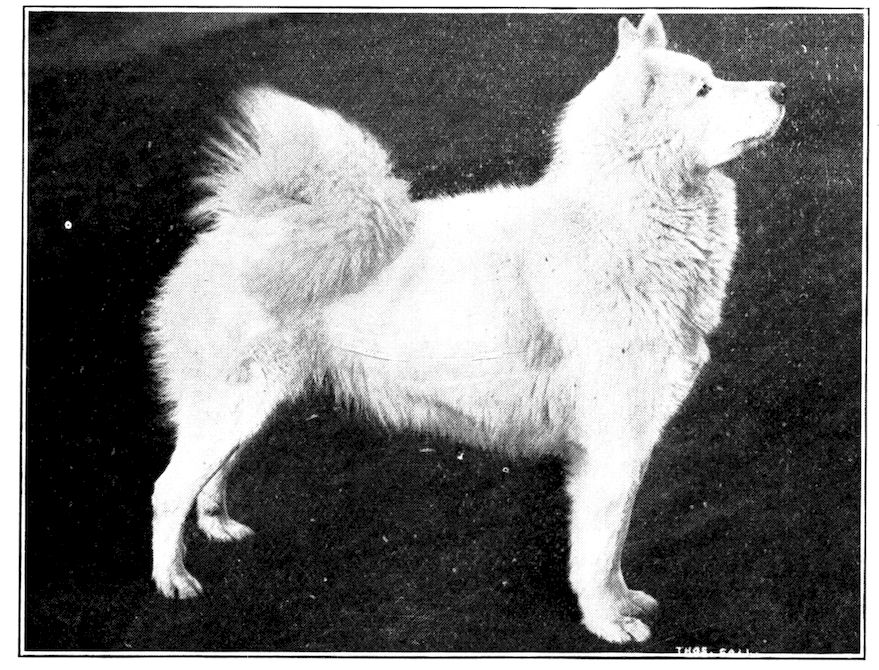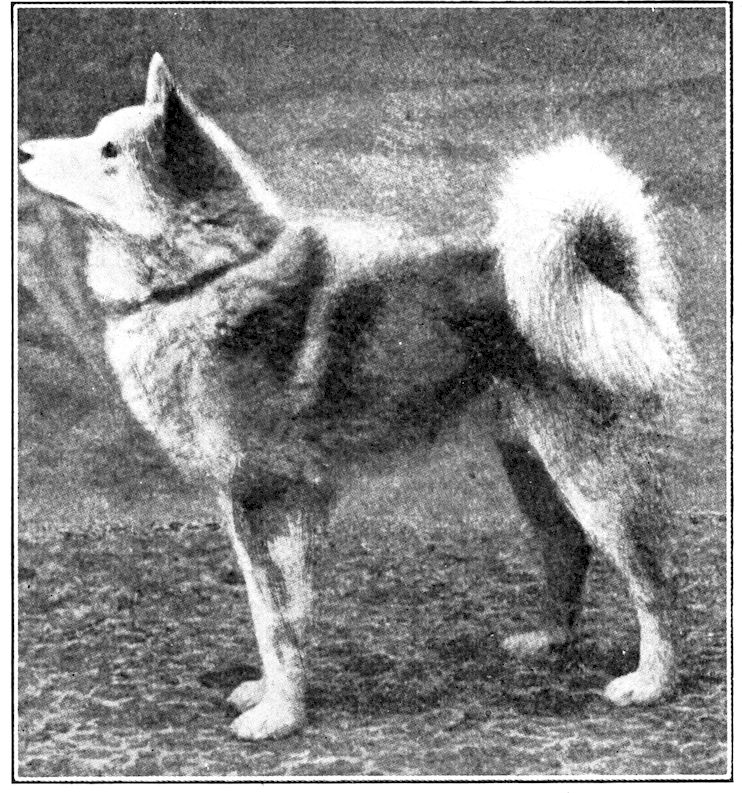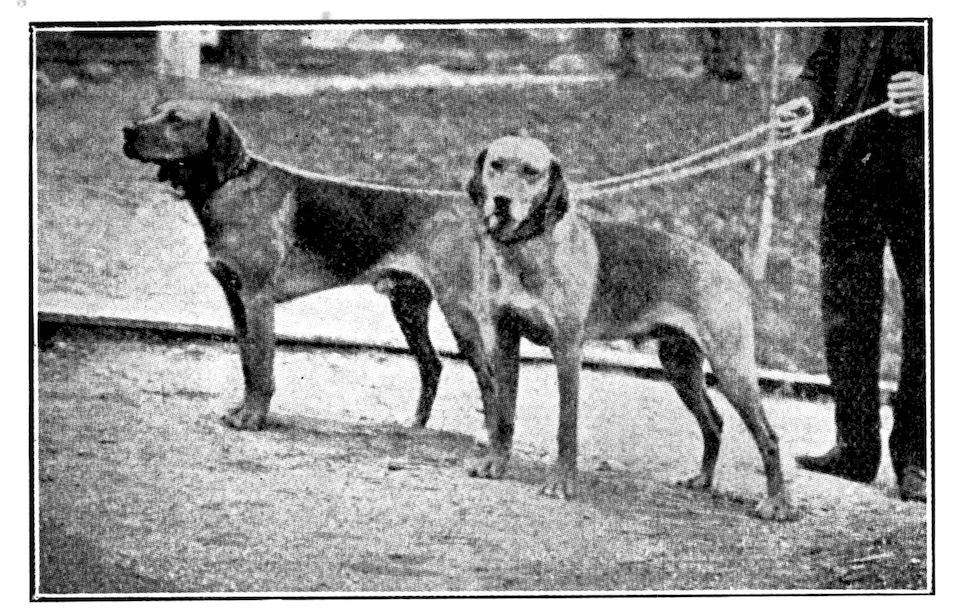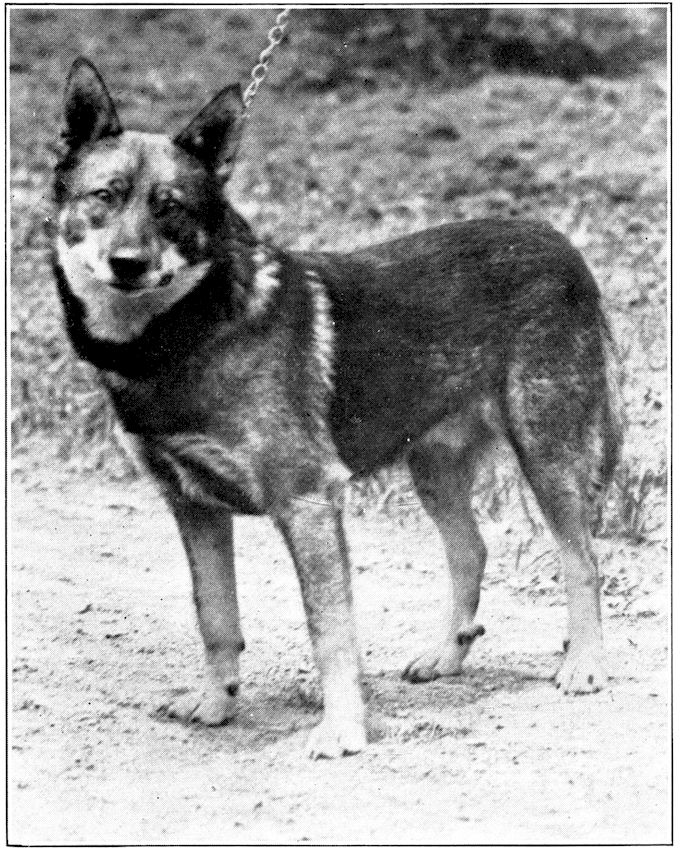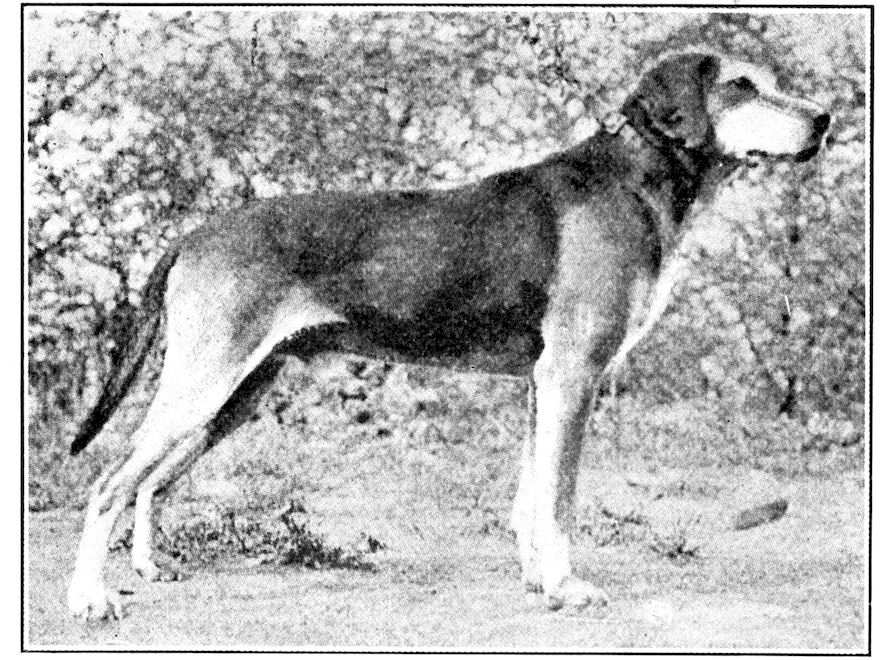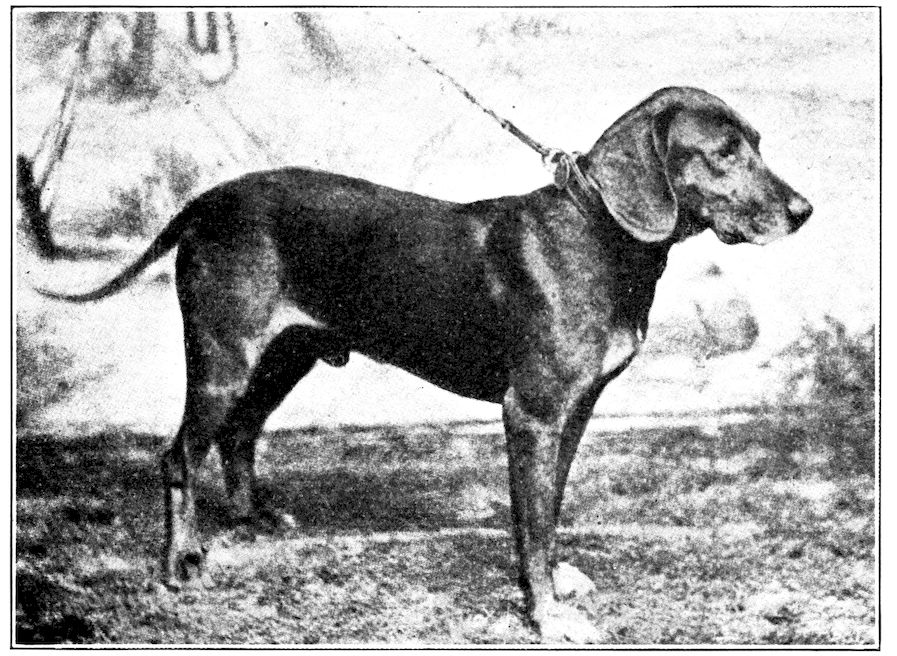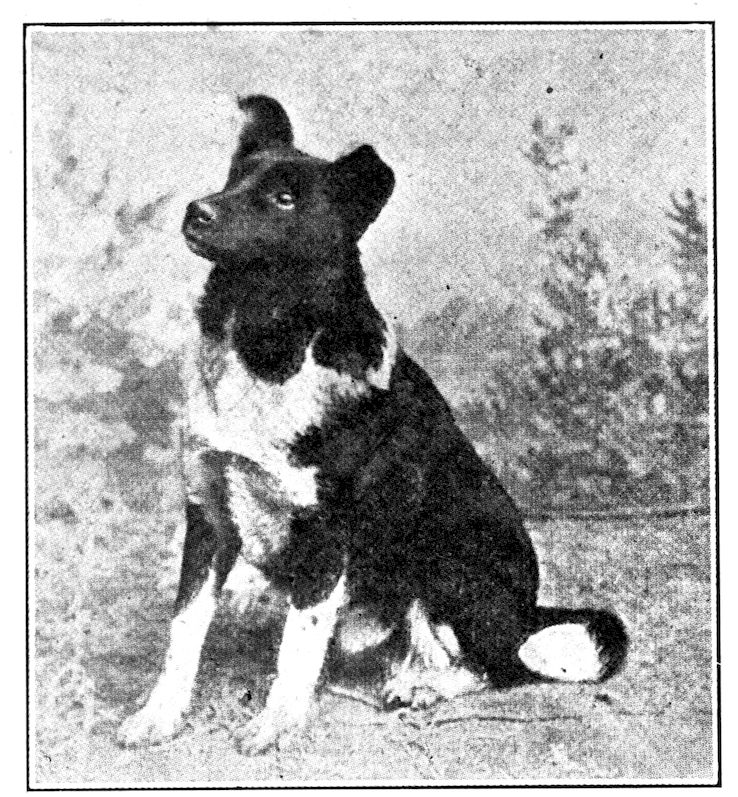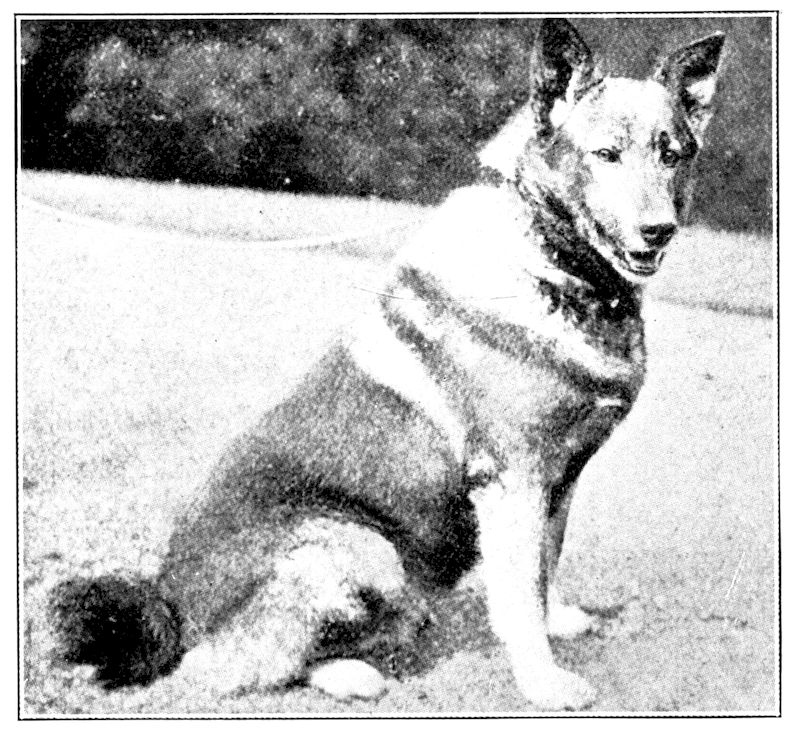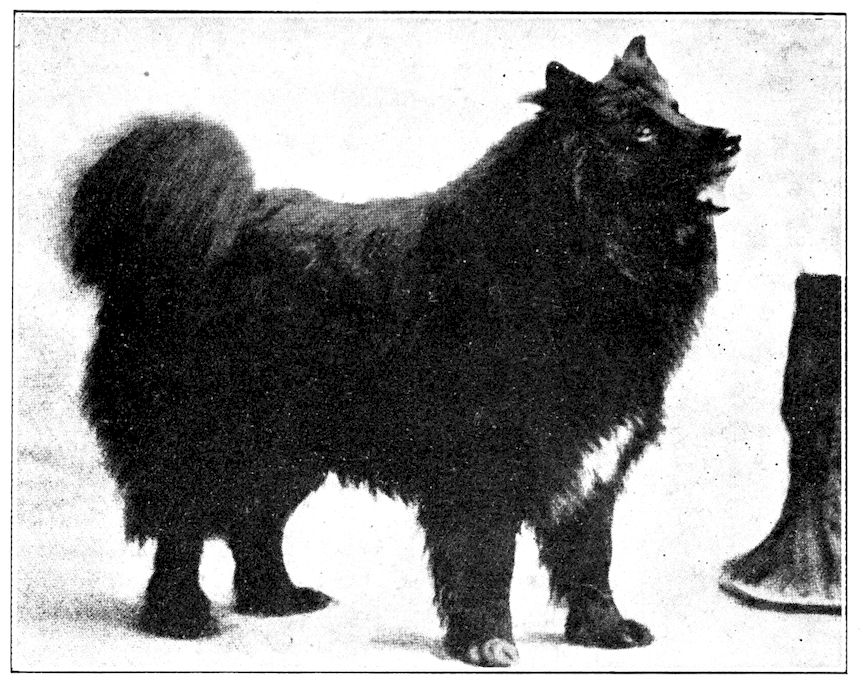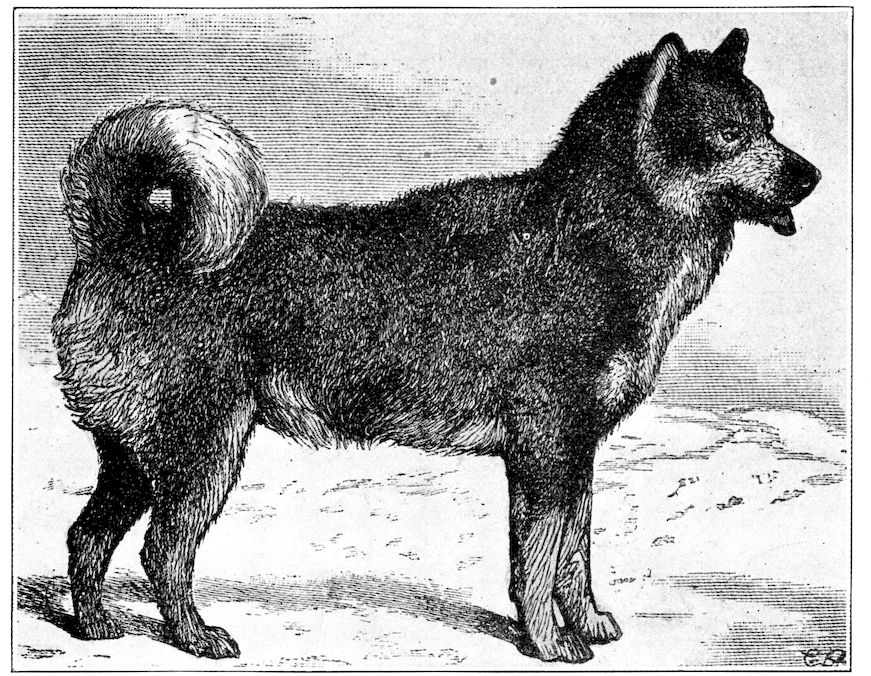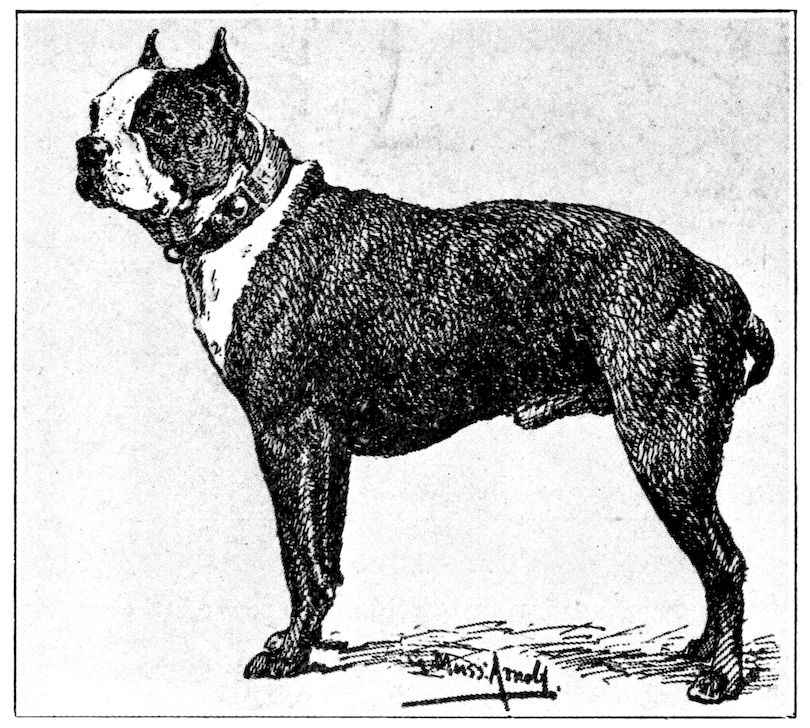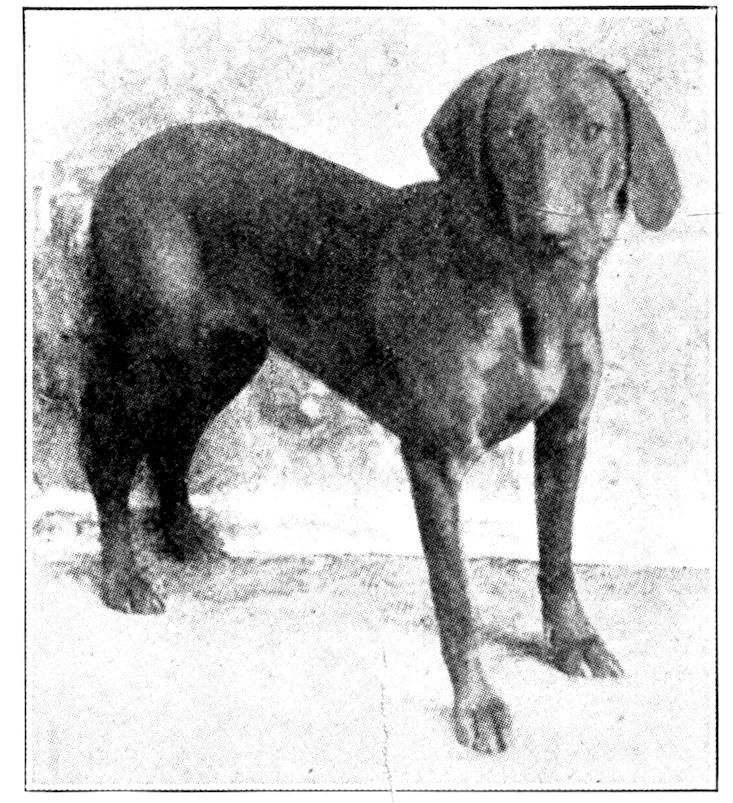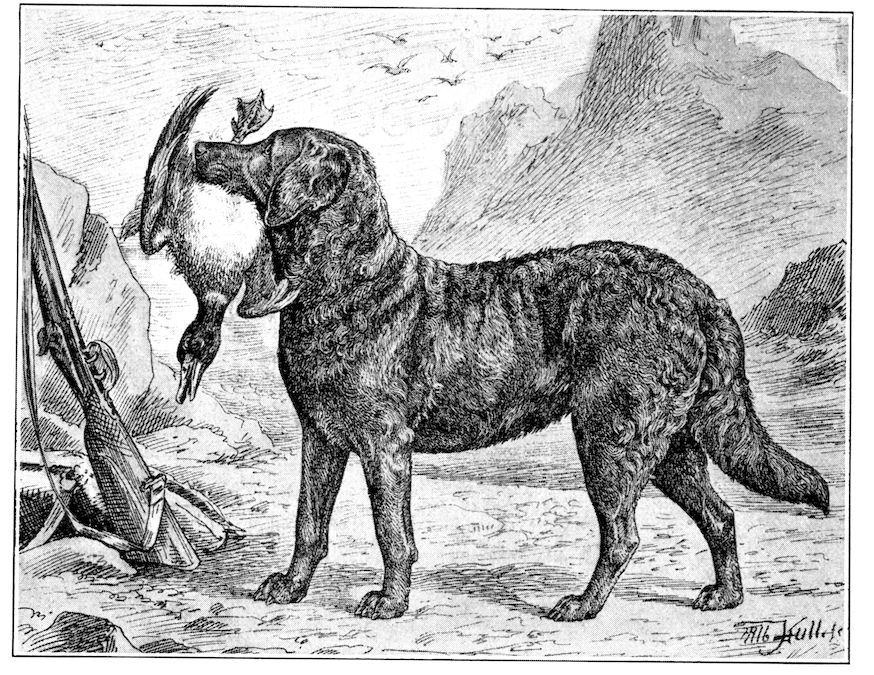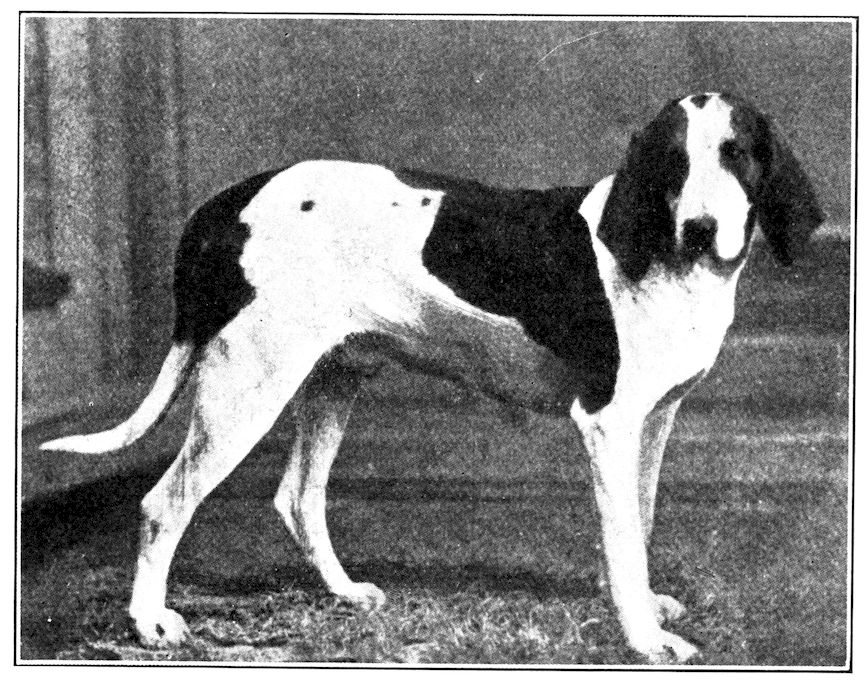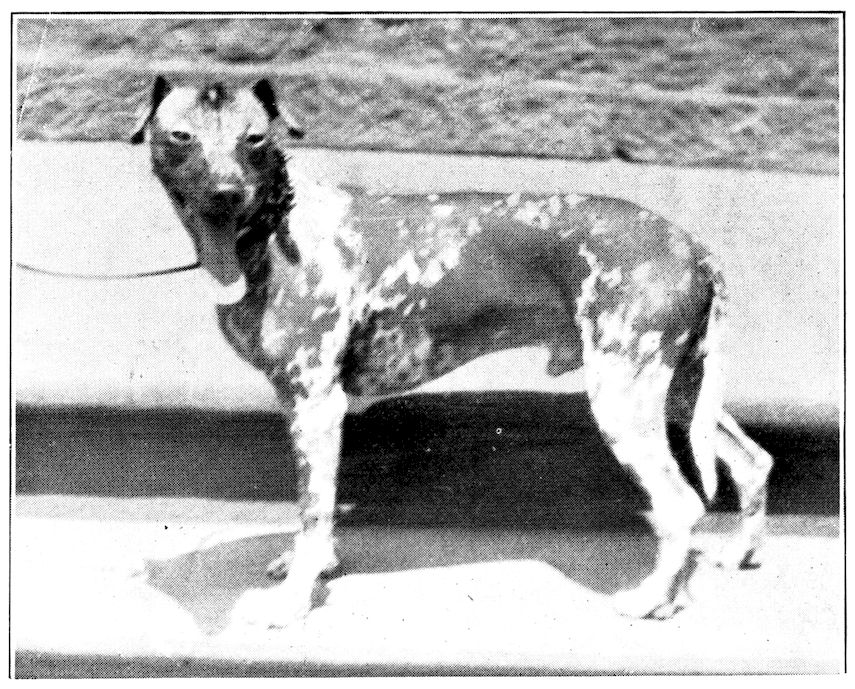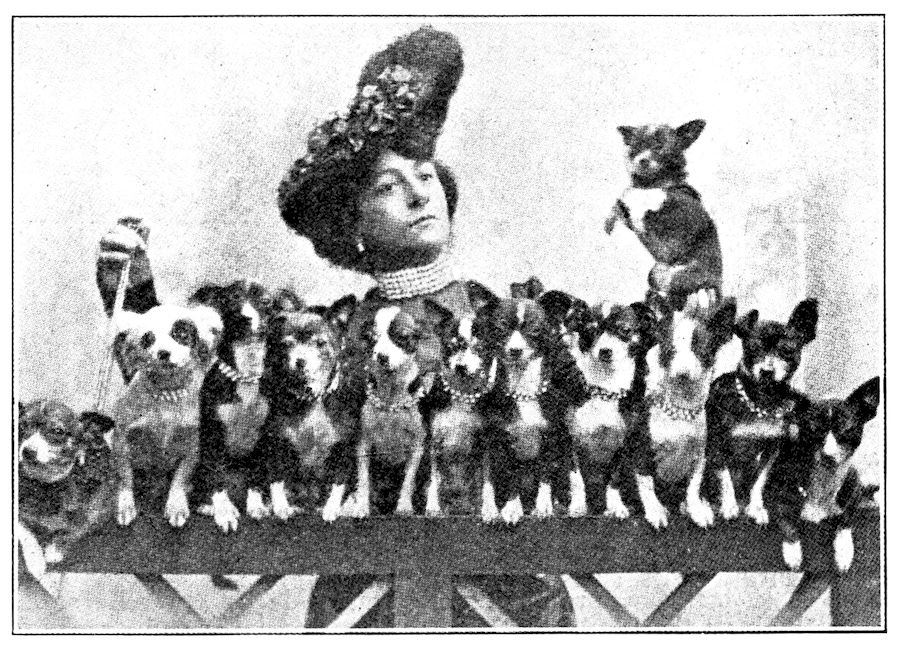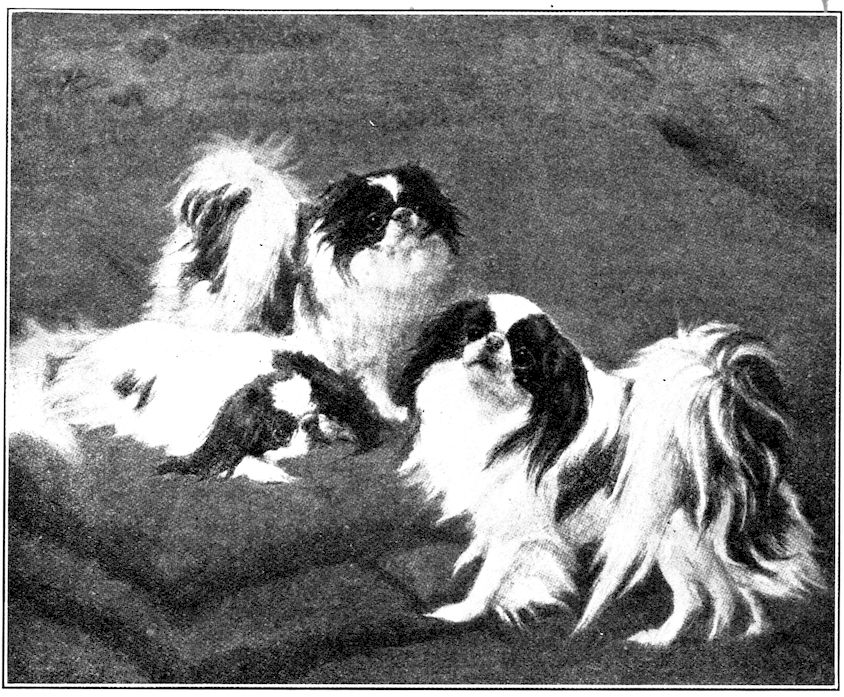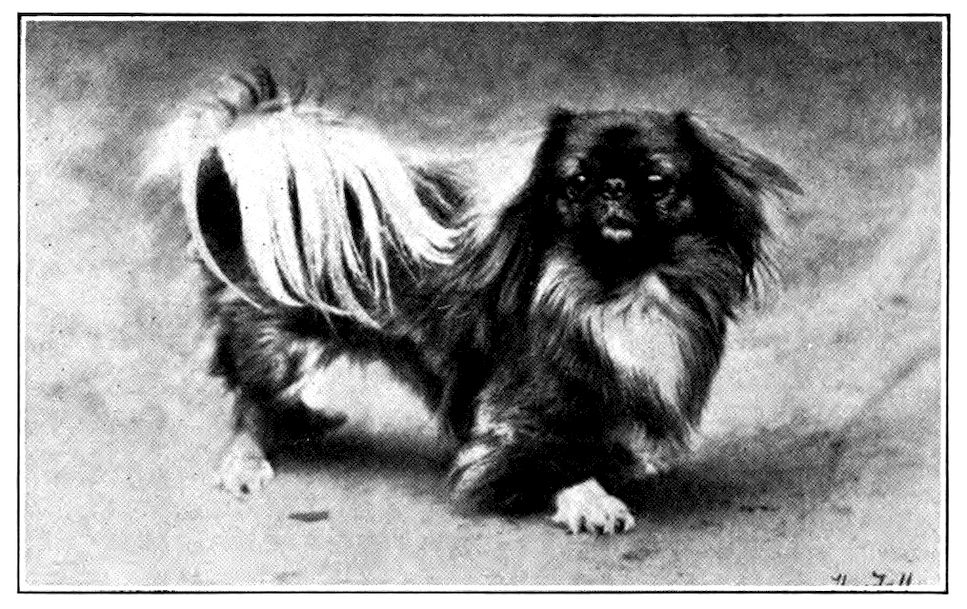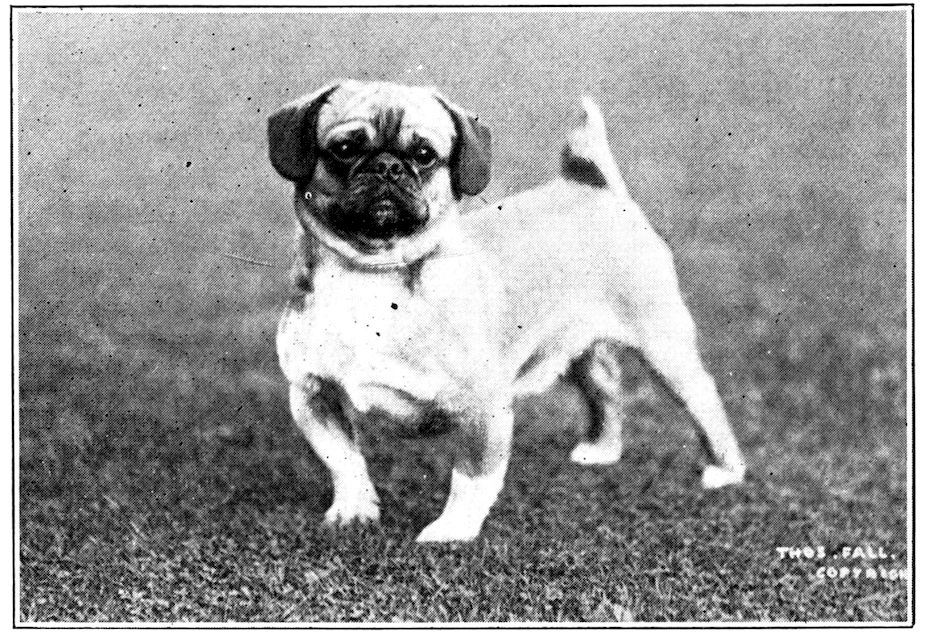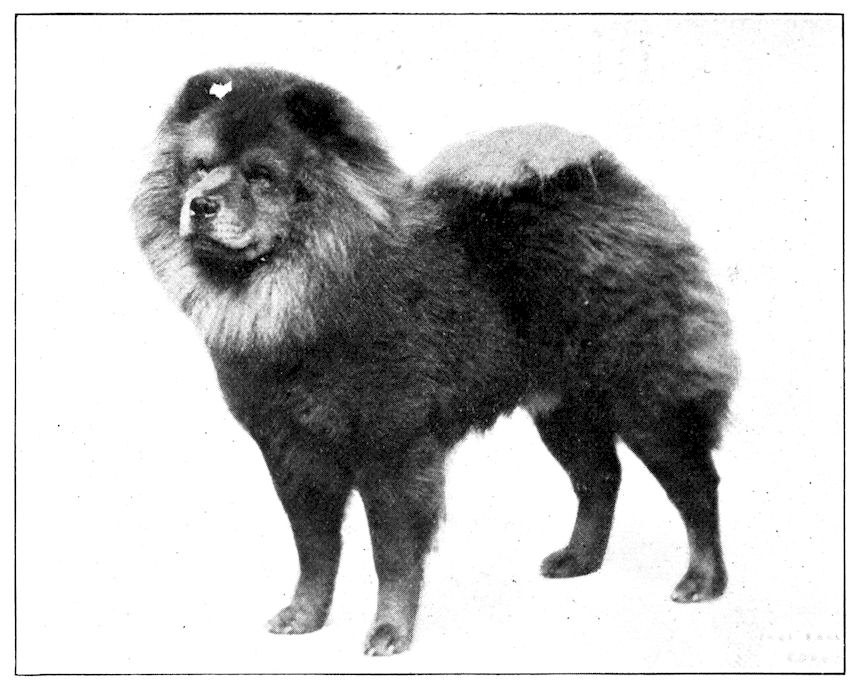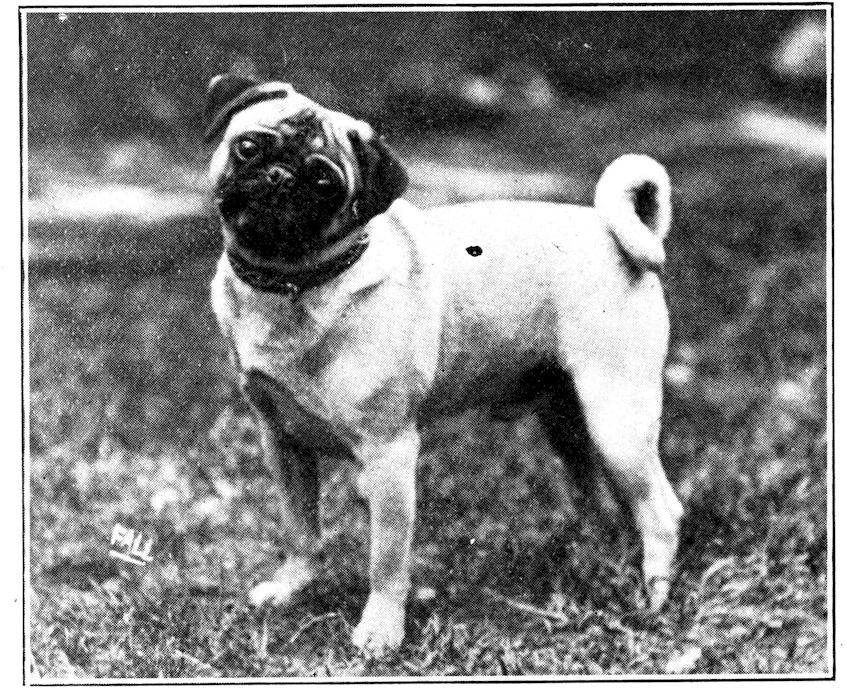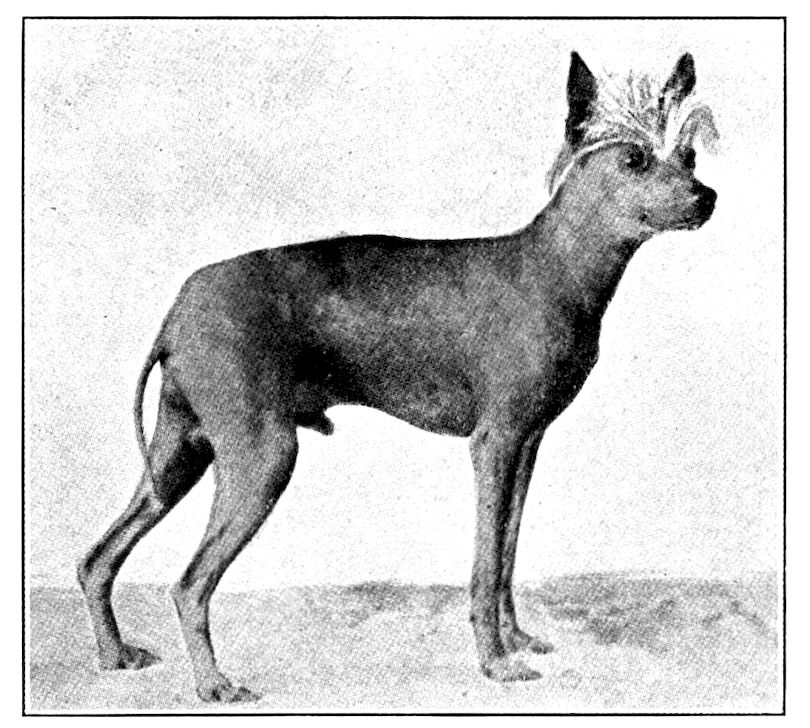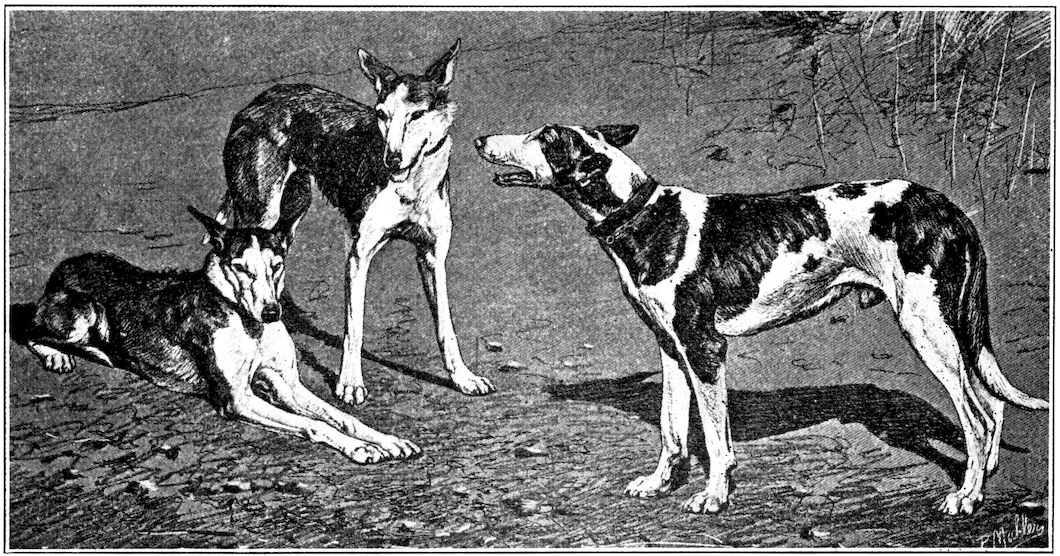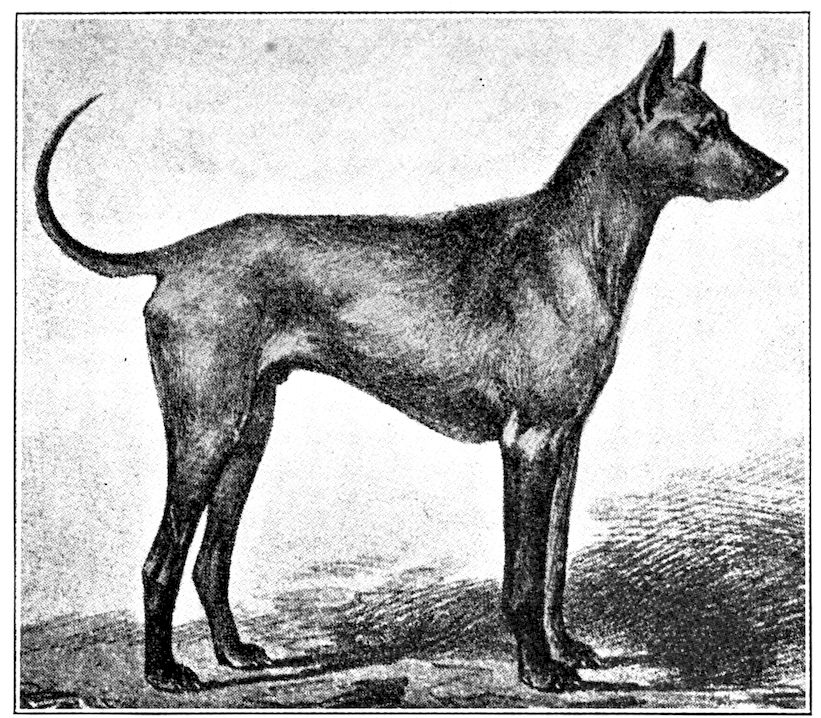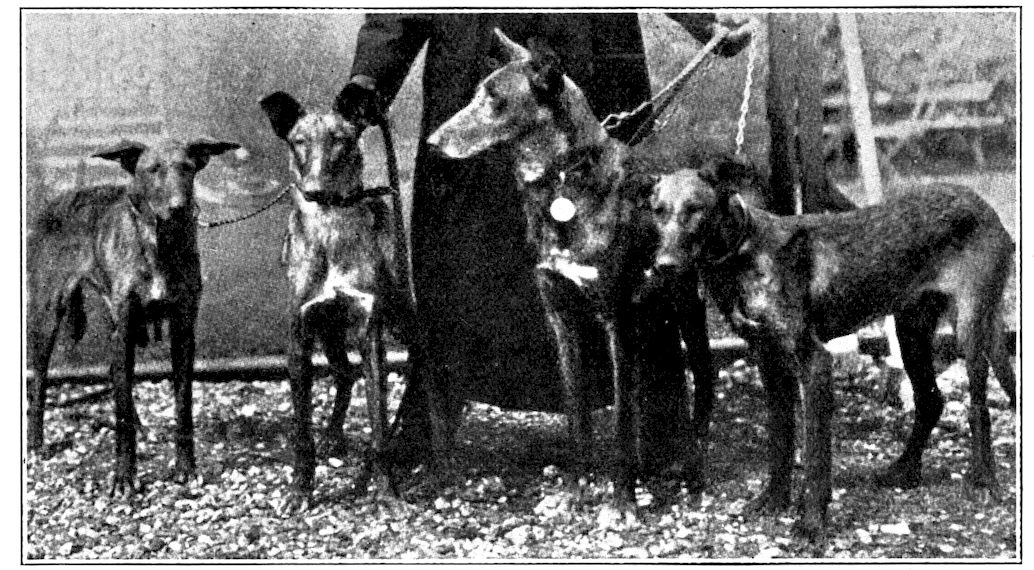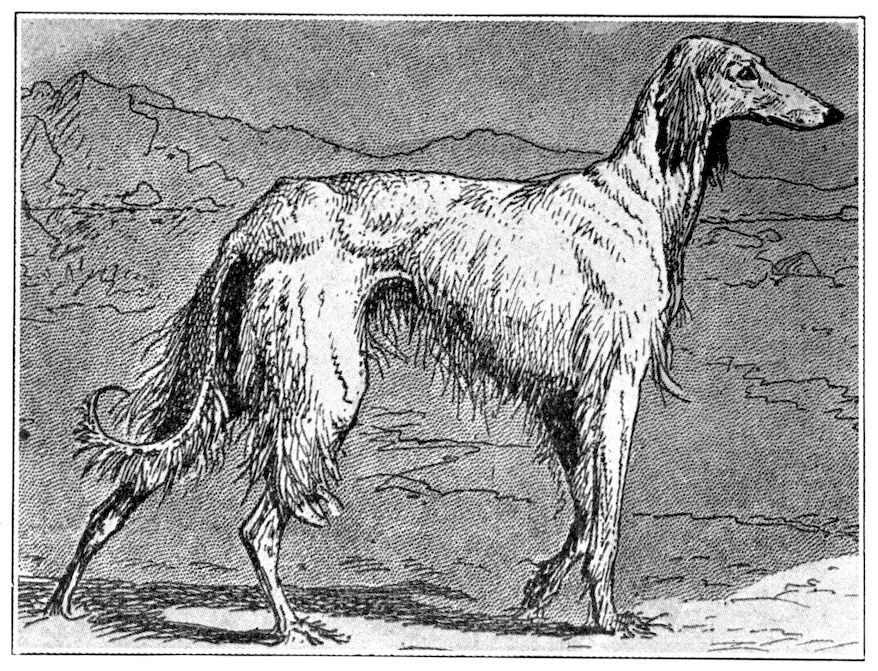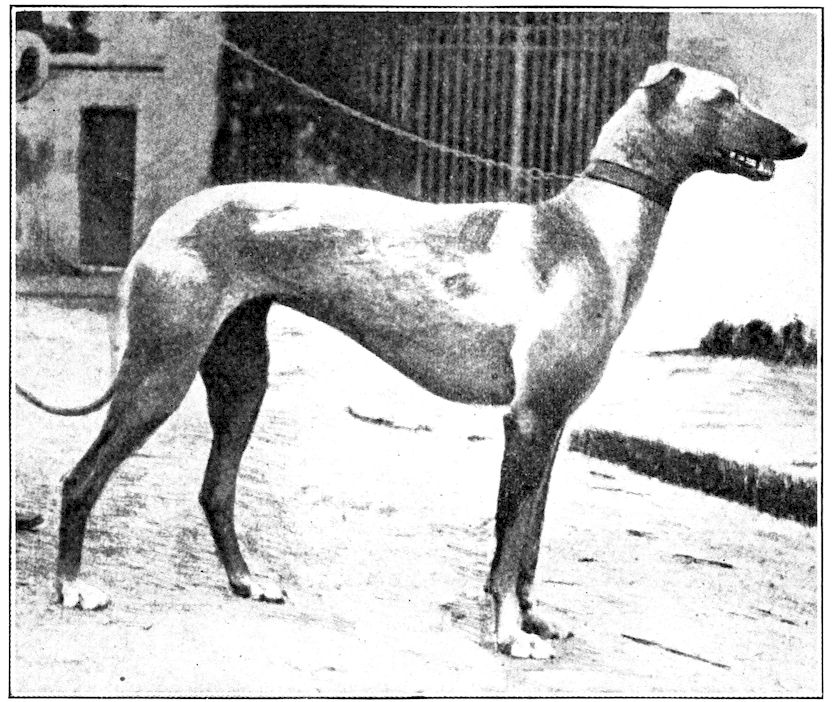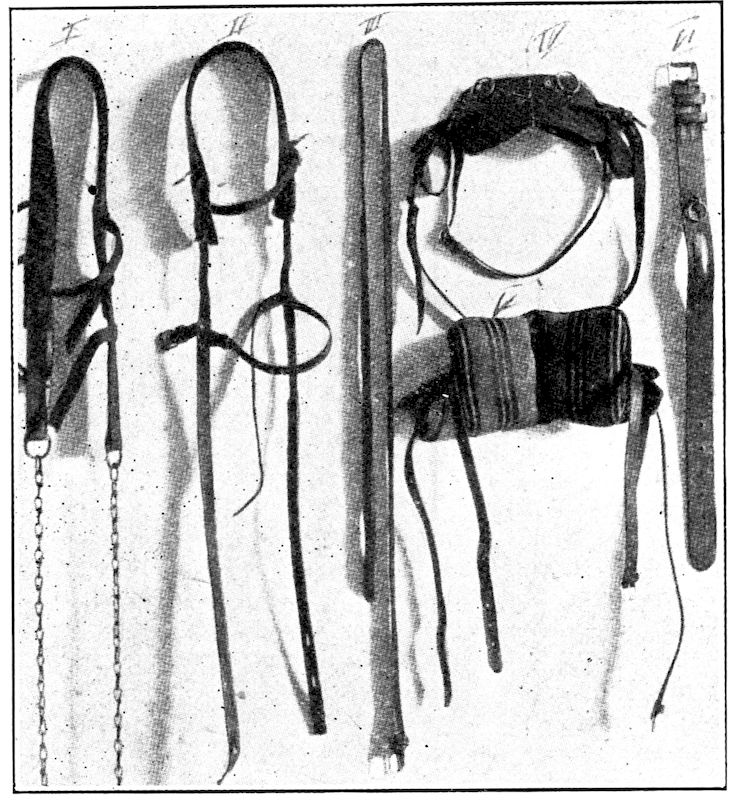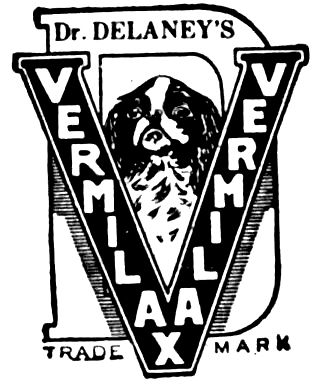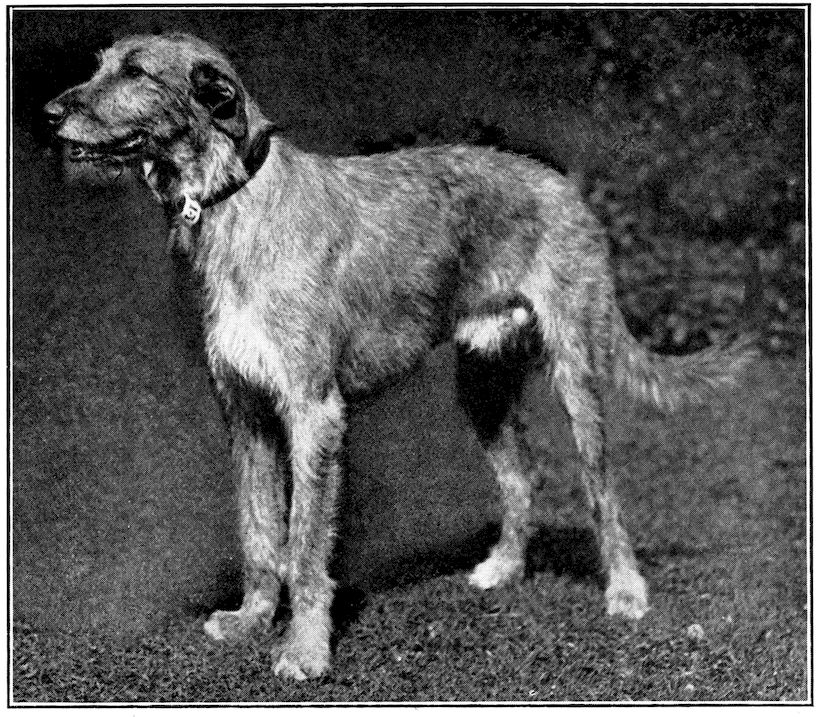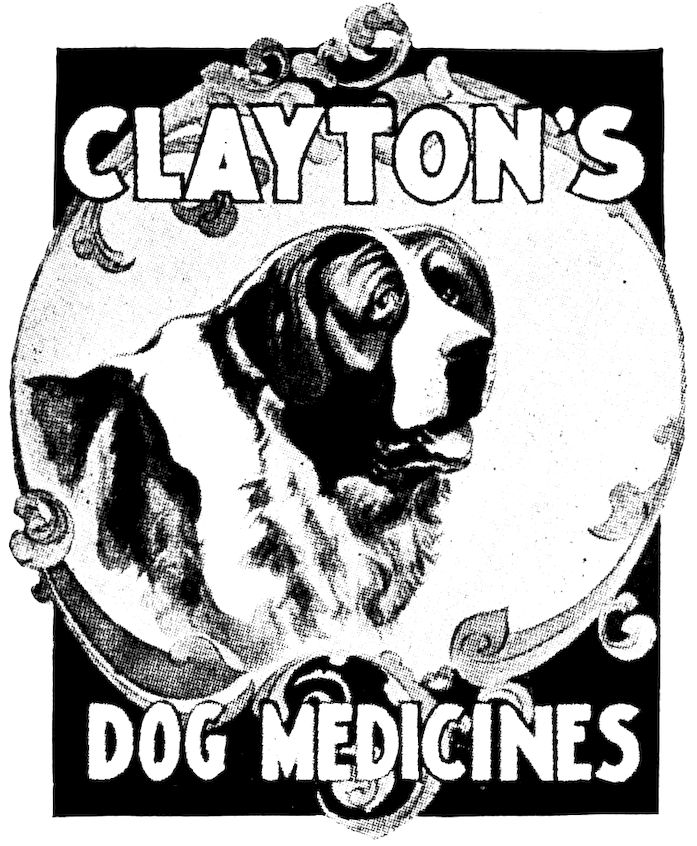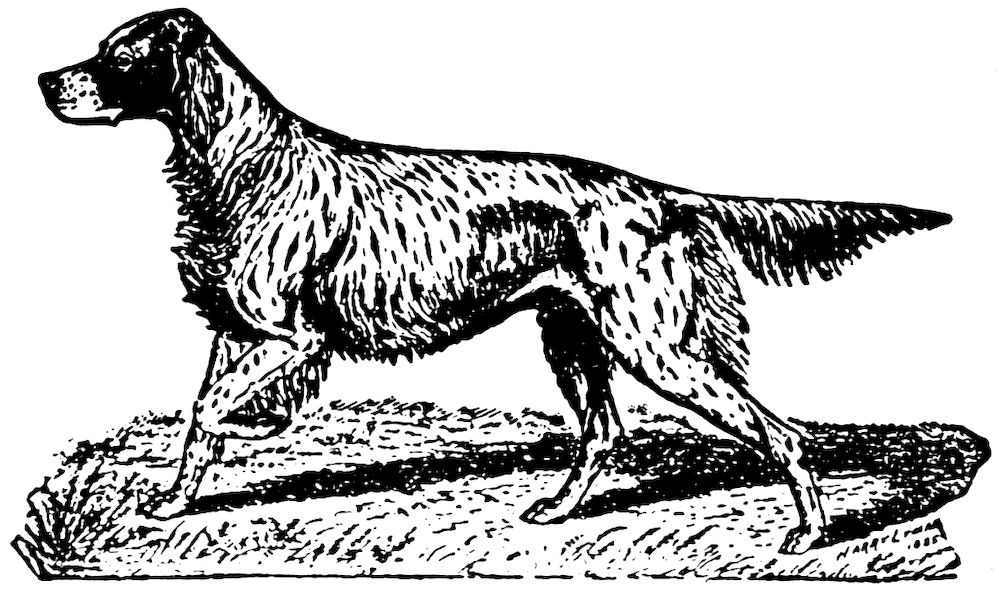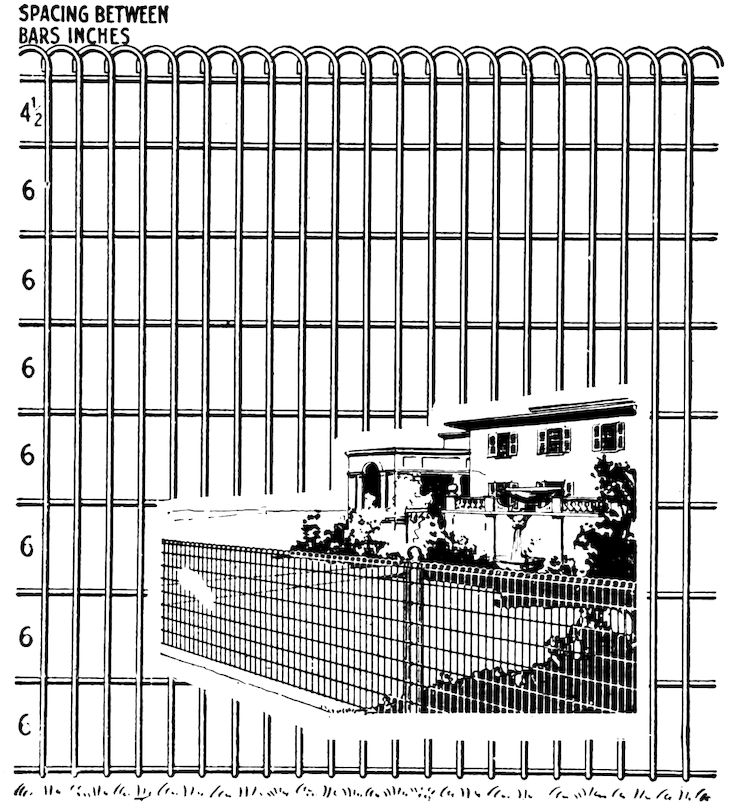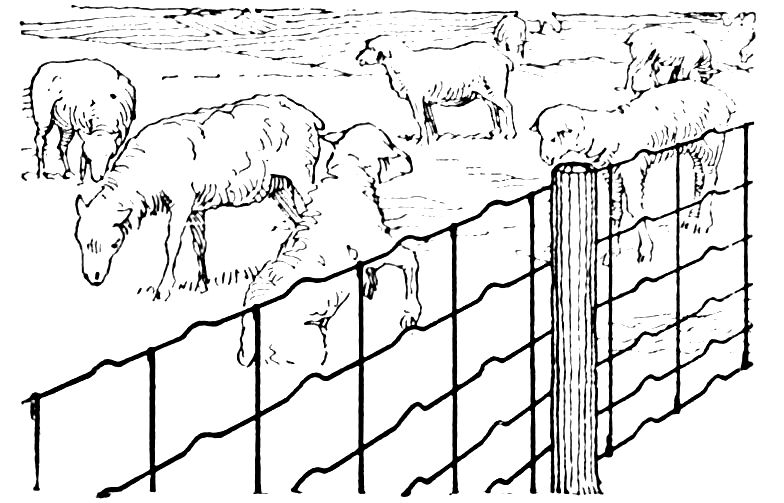The Project Gutenberg eBook of Dogs of all nations, by W. E. Mason
This eBook is for the use of anyone anywhere in the United States and
most other parts of the world at no cost and with almost no restrictions
whatsoever. You may copy it, give it away or re-use it under the terms
of the Project Gutenberg License included with this eBook or online
at
www.gutenberg.org. If you
are not located in the United States, you will have to check the laws of the
country where you are located before using this eBook.
Title: Dogs of all nations
Author: W. E. Mason
Release Date: September 1, 2022 [eBook #68890]
Language: English
Produced by: Richard Tonsing and the Online Distributed Proofreading Team at https://www.pgdp.net (This file was produced from images generously made available by The Internet Archive)
*** START OF THE PROJECT GUTENBERG EBOOK DOGS OF ALL NATIONS ***
Transcriber’s Note:
The cover image was created by the transcriber and is placed in the public domain.
PATRONS ARE INFORMED THAT GREAT CARE HAS BEEN EXERCISED IN ASSEMBLING THE SPECIMENS COMPRISING THE “DOGS OF ALL NATIONS” EXHIBIT AND MOST OF THEM MAY BE PURCHASED.
APPLY TO PROPRIETOR,
W. E. MASON, “DOGS OF ALL NATIONS,”
PANAMA-PACIFIC INTERNATIONAL EXPOSITION,
SAN FRANCISCO, CAL.
EUROPEAN OFFICE—
407 LORD STREET, SOUTHPORT, ENG.
A COMPLETE WORK, PROFUSELY ILLUSTRATED, BEARING ON
THE WORLD’S DIFFERENT VARIETIES OF THE DOG, GROUPED
UNDER THEIR SEVERAL NATIONALITIES, WITH DESCRIPTIVE
MATTER EXPLAINING THE CHARACTERISTICS AND UTILITY
OF EACH ❧ ❧ ❧ ❧ ❧ ❧
In Grateful Recognition
of the patronage bestowed on his effort to assemble a representative collection of all known breeds of dogs at
The Panama-Pacific International Exposition 1915
the author respectfully dedicates this work to the following members of
The English Peerage
The Earl of Lonsdale, J. P., D. L.
The Earl of Huntington, D. L.
The Duke of Beaufort, A. D. C., J. P., D. L.
The Marquis of Linlithgow.
Lord Viscount Hemsley.
Lord Vivian, P. C., G. C. M. G., C. B.
Lord Middleton, J. P., C. A., R. A.
Lord Herbert Vane-Tempest, K. C. V. O.
Lord Fitzhardinge, J. P., D. L.
Sir Wm. Savory, Bart.
Sir Edmund Chaytor, Bart.
Sir Wyndham Hanmer, Bart., J. P., D. L.
Sir Daniel F. Gooch, Bart., J. P.
Sir M. Bromley-Wilson, Bart.
The Duchess of Hamilton.
Lady Viscountess Malden.
Lady Viscountess Valletort.
Lady Sophie Scott.
Lady Fairbairn.
Lady Muriel Worthington.
Lady V. Lacon.
Preface
The world-wide and constantly increasing interest in
dogs prompts the author to present in concise form,
and at a price within the reach of all, a description and
illustration of every variety now known to be breeding
true to type.
An attempt is also made to group them in Nationalities,
though, since it is admitted that the origin of certain varieties is
somewhat obscure, no arbitrary lines can be laid down in this
respect. Originality as to descriptions is not, in many instances,
claimed by the author, though where the occasion seemed to call
for it, modern ideals have been incorporated in the text. On the
contrary, he acknowledges with thanks the services rendered by
the following accepted authorities:
Stonehenge
Count Henry A. Graaf Van Bylandt
Theo. Marples
Dr. Caius
Unless otherwise stated, the maximum sizes of the various
breeds have been given. Bitches may be taken as about ten per
cent lighter than the dogs. Owing to the exigencies of space
the descriptions have been confined to color, size, head, ears, eye,
tail and general appearance. Dogs, all the world over, more or
less, are intended to be straight and strong on the legs, possessed
of well padded feet and in other ways endowed with working
qualifications.
The author’s object will have been attained if the subject, in
the form presented, is found acceptable to dog lovers who have
not the leisure to study the more exhaustive works on dogs.
7
English Breeds
Bloodhound
Bulldog
Bulldog (Miniature)
English Foxhound
Trail Hound
Harrier
Beagle
Collie (Rough-coated)
Collie (Smooth-coated)
Retriever (Flat-coated)
Retriever (Curly-coated)
Retriever (Golden)
Pointer
English Setter
English Springer
Sussex Spaniel
Clumber Spaniel
Water Spaniel
Field Spaniel
Cocker Spaniel
Fox Terrier (Smooth-coated)
Fox Terrier (Wire-haired)
English Greyhound
Whippet
Bull Terrier
Bull Terrier (Miniature)
Airedale Terrier
Bedlington Terrier
Manchester Terrier
Manchester Terrier (Miniature)
Mastiff
White English Terrier
White English Terrier (Miniature)
Old English Sheepdog
Otterhound
Yorkshire Terrier
Toy Spaniel (King Charles)
Toy Spaniel (Prince Charles)
Toy Spaniel (Ruby)
Toy Spaniel (Blenheim)
BLOODHOUND
Color: Black and tan, red and tan, and tawny; the darker colors being sometimes
interspersed with lighter or badger-colored hair and sometimes flecked with white.
Too much white is objectionable.
Height: 26 in.
Weight: 90 lbs.
The Bloodhound possesses in remarkable degree every point and characteristic of
those dogs which hunt together by scent. He is very powerful and stands over more
ground than is usual with hounds of other breeds. The skin is thin to the touch, and
extremely loose, this being more especially noticeable about the head and neck, where
it hangs in deep folds. His temperament is extremely affectionate, neither quarrelsome
with companions nor with other dogs, and he is somewhat shy and sensitive.
8
BULLDOG
Color: White or white with black mask or muzzle, brindle, red, fawns (fallows,
occasionally pied and mixed colors).
Weight: A. exceeding 55 lbs.; B. exceeding 45 lbs.; C. not exceeding 45 lbs.
Until by law abolished, the Bulldog was used for bull baiting. In general appearance
the bulldog should be a low-set, heavy-boned, smooth-coated dog built on broad
and powerful lines. His head should be strikingly massive and large in proportion to
the dog’s size, the face extremely short, muzzle very broad, blunt and inclined
upwards, body short and well knit, the limbs stout and muscular, hind quarters very
high and strong, but rather lightly made in comparison with its heavily made foreparts.
The dog conveys an impression of determination, strength and activity.
The Bulldog may be said to occupy the pride of place amongst the non-sporting
varieties. Furthermore, it is one of the oldest of them and has been selected by the
British themselves to typify the national character and is often termed the national
breed. Certain it is that he conveys a “what we have we’ll hold” impression, and for a
dogged, determined, courageous and tenacious symbol one could not imagine any breed
filling the role more aptly.
BULLDOG (Miniature)
Weight: Not exceeding 22 lbs.
The points and characteristics of this sub-division of the British bulldog may
be summed up in the simple statement that it should be an exact duplicate in miniature
of the larger specimen in every point and detail, excepting size.
9
ENGLISH FOXHOUND
Color: Not of great moment so long as it is not wholly black or wholly white.
The favorite color is black and hare-tan, distributed in large patches on a white ground.
Height: 25 in.
Weight: 85 lbs.
A clean-cut, powerful hound. He has oblique and well laid-back shoulders, gracefully
arched neck, good spring of rib, strong loins, and powerful hindquarters.
Skull should be flat, of medium width, the muzzle long, rather narrow and deep
and square at the end, with large nostrils. He is endowed with extraordinary bone
and hard, cat-like feet.
TRAIL HOUND
Color: White with red, brown or yellow patches.
Height: 24 in.
Weight: 46 lbs.
This is a well built and symmetrical dog with a large head, domed in skull, “stop”
not too pronounced, occipital bone fairly well developed and with good length of
muzzle. The eyes are rather small and brown in color. Nose sharp with open nostrils.
The ears are set on low and lay close to the head. The back is strong and muscular,
and chest deep. Legs straight, long and muscular. Stern is of medium length, carried
higher than the back and the coat short and dense.
10
HARRIER
Color: Any hound color.
Height: 18 in.
Weight: 56 lbs.
The leading features of Harriers are long heads, free from “stop,” square muzzles,
sloping shoulders, straight forelegs, round cat-like feet, short backs, well sprung ribs,
strong loins, and sound hindquarters with well bent stifles.
BEAGLE
Color: Blue mottle, black
tan and white, black and
tan, lemon and white or any
other hound color.
Height: 15 in.
The beagle is without
doubt one of the oldest distinct
breeds we have.
Beagles to be very choice
can scarcely be bred too
small. Although far inferior
in speed to the harrier the
sense of smelling is equally
if not more exquisite in the
beagle.
The short back, compact
body, straight legs, round
feet, powerful loins, nicely
placed shoulders, and the
true beagle head is a beautiful thing
to look upon.
There are also the “pocket” beagle, which stands not more than 11 in. high and a
rough or wire-haired variety, though now very scarce. They are hardy and useful
in a rough country.
11
COLLIE
(Rough-Coated)
Color: Any
color is accepted
provided the markings
do not disfigure.
The most
popular colors are
sable, with its
many varying
shades, and white
markings, black
with white and tan
markings, and blue
merles.
Height: 24 in.
Weight: 65 lbs.
The collie is a
lithe, active dog,
and is remarkable
chiefly for his intelligent,
cunning,
yet kindly outlook,
his magnificent
coat and the devotion
he displays to his master. The elegance of his outline is quite distinct from any
other breed and shows great strength and activity. The head should be moderately
long, proportionate to the size of the dog, with a flat skull moderately wide
between the ears, and a very slight elevation at the eyebrows, and very little
“stop.” The muzzle should be well filled up before the eyes. The ears are
small and when at attention should be carried semi-erect, with the tips turning
slightly outwards. The eyes are a most important feature in this breed.
They should be almond-shaped, not too large or too small, set obliquely in the head,
and of a dark hazel color. The blue merles should have a merled or “China” eye,
though this is not an essential. On the size, color and placing of the eyes, together
with the size and placement of the ears depends the expression and characteristic outlook
which is so appreciated by connoisseurs. The neck should be long, body fairly
short, with well sprung ribs, chest deep and forelegs straight. Any tendency to cow-hocks
in the hind legs should be penalized. The tail should be fairly long, carried low
when in repose, and straight or gaily when excited. The coat, except on the mask,
tips of ears and legs where it is smooth, should be very abundant, especially around the
neck and chest, where it should form a distinct cape and frill. A dense undercoat is
also very essential.
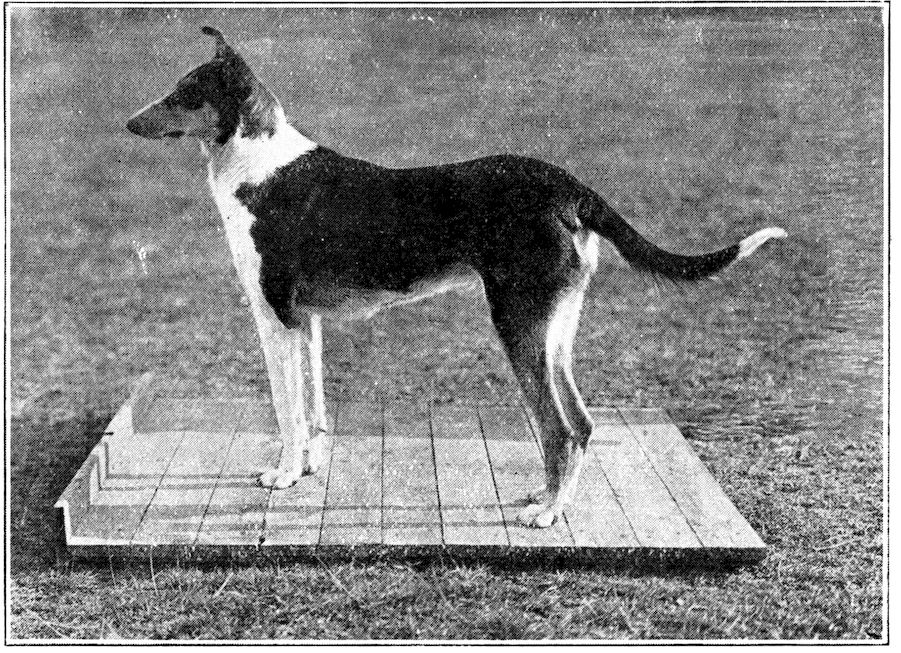
COLLIE
(Smooth Coated)
The smooth
collie is identical
with his
rough-coated
brother, excepting
that the
coat should be
short, dense and
flat, with an
abundance of
undercoat.
12
FLAT-COATED RETRIEVER
Color: Rich
black, free from
rustiness and
from white.
There is also a
Golden Retriever
so named because
of the golden or
yellow color of
his coat.
Height: 25 in.
Weight: 68 lbs.
The symmetry and elegance of this dog are considerable and essential, and he has
a decidedly sporting character. The head should be long with the skull wide and flat
at the top, and slight furrow down the middle. Eyes of medium size, dark brown or
hazel in color with a bright intelligent and mild expression indicating a good temper.
The neck long and muscular, chest broad and deep with well developed and well sprung
ribs. The tail should be bushy but not feathered, carried gaily but not curled over
the back. His coat should be fairly long, bright, close and thick, and either straight
or slightly waved.
CURLY-COATED RETRIEVER
Color: Black
or liver, a white
patch on chest is
objectionable.
Height: 26 in.
Weight: 68 lbs.
A strong, smart dog moderately low on leg, active, lively, beaming with intelligence
and expression. The head should be long and narrow for the length, the eyes
should be rather large and cannot be too dark. Chest not too wide but decidedly
deep, back muscular and rather short with powerful loins, straight forelegs and plenty
of bone. The coat should be formed of small tight curls all over the body much resembling
the Astrachan.
13
POINTER
Color: A predominance
of
white is most
favored by
sportsmen. Liver
and white, lemon
and white, and
black and white
are also quite
common. Whole
colors black, liver
and various
shades of yellow
are also quite
correct.
Height: 26 in.
Weight: 70 lbs.
The Pointer is
an elegantly shaped
dog, symmetrical
and well
built all over, of
great strength and endurance, yet full of refinement and very speedy. The leading
essentials of a good Pointer are pace, endurance, intelligence, and powers of smell.
The head should be fairly long and broad at the skull, muzzle long and well filled up.
Eyes soft and dark brown in color. Ears soft and hanging gracefully. Neck well
arched and long, free from dewlap or throatiness. Ribs well arched. Loins and hind
quarters very muscular. The stern must be strong at the root and free from the
slightest approach to curl at the tip.
ENGLISH SETTER
Color: Black
and white ticked,
with large
splashes and
more or less
marked with
black, known as
blue belton;
orange and white,
ticked as in the
blacks and blues;
liver and white,
ticked in similar
manner; black
and white, with
tan markings;
orange or lemon
with white ticks;
black and white;
liver and white.
Pure white,
black, liver and red or yellow are occasionally seen but not desirable.
Height: 24 in.
Weight: 60 lbs.
This dog owns an elegant outline. The skull is moderately narrow between the
ears, with prominent occiput, a decided brow over the eyes, with long muzzle. The
eyes should be dark brown in color, and are full of animation. Ears small, thin and
soft, carried close to the cheeks. The neck should be slightly arched, but must not be
throaty, chest deep and wide, tail should be carried with a gentle sweep downwards,
and well feathered with straight silky hair. The coat is soft and silky without curl,
and he should have plenty of feather on both fore and hind legs.
14
CLUMBER SPANIEL
Color: Creamy white with lemon markings; orange markings not so typical.
Height: 18 in.
Weight: 65 lbs.
This is a long, low, massive dog, with a thoughtful expression. The skull is large,
massive and broad on top, with decided occiput, heavy brow and deep stop. The muzzle
should be of medium length, square and with flews well developed. His orange brown
eyes are of medium size and deep set. The ears are large and pointed at the tip and
the hair on them should be straight. His neck is thick and powerful, well feathered
underneath, and his body is long, strong and barrel-like and the hind quarters very
powerful and muscular. The stern is docked, well feathered, low set, and carried level
with the back, and his coat is abundant, soft and straight.
The Clumber is said to have been evolved by one of the Dukes of Newcastle at
Clumber Castle, in Nottinghamshire, England, from which connection he takes his name.
The breed is also affected by other influential members of the English peerage,
which, together with his dignified bearing and classical lineage, account for being
dubbed the aristocrat of the spaniel family. The Clumber differs from all other varieties
of the Spaniel in that he is considerably heavier and more massive and therefore less
active and a slower dog in the field. For this reason he is used largely by sportsmen
who do not care to travel as fast as the more agile varieties work.
Albeit as an all-round hunter the Clumber is probably without his equal and is
excellent alike both as a field and water dog.
15
ENGLISH SPRINGER
Color: Almost any color.
Height: 20 in.
Weight: 50 lbs.
This dog is leggier in comparison to any other field spaniel and has a short and
symmetrical body, long head, square muzzle, rather narrow skull, and low-set ears.
He combines strength with activity, courage with docility, and all the characteristics
of a workman and gentleman combined, but without his vices. The coat is thick, firm
and smooth or slightly wavy, and must not be too long.
SUSSEX SPANIEL
Color: A deep shaded golden liver.
Height: 16 in.
Weight: 45 lbs.
In appearance the Sussex Spaniel is a sedate and thoughtful looking dog when at
rest but is full of life and activity when at work. The skull is massive and heavy for
his size with the forehead projecting over the eyes. The jaws are long and square with
flews fairly well developed and nostrils large and of liver color. The eyes should be
hazel in color, large and soft in expression and should not show any haw. Ears large
and well furnished with silky hair. The body is long and round, with chest deep and
ample. The hind quarters are very muscular. The stern should be docked to about 6
in. in length, set low, with a downward action and well feathered. A low carriage of
tail is most desirable. The coat is straight or slightly wavy, thick, soft and abundant.
16
FIELD SPANIEL
Color: Jet black throughout, a little white on chest, though a drawback, should not
disqualify.
Height: 15 in.
Weight: 50 lbs.
This is a moderately low and long dog, sound in the hind limbs, with well sprung
ribs and strong quarters. The head should be long and level on top, with some stop.
The skull should be narrow and the muzzle deep and square. The ears are set on low
and moderately long. The eye should always be dark. The coat is flat, dense and
glossy, with a fair amount of feathering. Excessive feathering is objectionable.
COCKER SPANIEL
Color: Jet
black. A white,
short frill is not
disqualified but is
not desirable.
Other colors—liver,
lemon, red
or any of these
colors with white
or tan or both.
Height: 12 in.
Weight: 25 lbs.
This dog should be shaped like a setter in miniature, but he is more merry and
alert in expression and behavior. It is essential that he should combine small size
with great activity. The skull is fairly long and forehead raised. Color of eyes varies
according to the color of the coat, but should always be mild in expression. The ears
are of moderate size, broad rather than long and fairly well covered with hair. His
neck is long, clean, arched, and muscular, with well developed body and very strong
hind quarters. The stern is docked, carried downwards, and has a perpetually vibrating
movement, a sort of restless quivering, peculiar to his breed. The coat is smooth
or slightly wavy, very dense but not very long.
17
FOX TERRIER
(Smooth Coated)
Color: White should predominate; brindle, red or liver markings are objectionable.
Height: 16 in.
Weight: 20 lbs.
This dog generally presents a gay, lively and active appearance. He must also
possess speed and endurance, and the symmetry of an English Foxhound. He must
on no account be leggy, and like a well built hunter cover plenty of ground without
being long in the body. The skull is flat and moderately narrow, ears V-shaped and
small, dropping forward close to the cheek, jaws strong and muscular. Eyes dark
in color, small, full of fire and intelligence, neck clean and muscular without throatiness,
chest deep but not broad, and the back should be short, straight and strong. His
legs viewed in any direction must be straight, well boned throughout, and short and
straight at the pasterns. His feet should be round and compact, tail set on rather high,
always docked, and carried gaily, but not over the back or curled, and should be well
coated. His coat is straight, flat, smooth, hard, dense and abundant.
FOX TERRIER
(Wire-haired)
This variety is identical with the smooth-coated Fox Terrier, except in the matter
of coat, which should be broken, and the harder and more wiry the texture the better.
On no account should it look or feel woolly or silky. The coat should not be too long
so as to give him a shaggy appearance.
18
ENGLISH GREYHOUND
Color: Any color, but those preferred are black, red or brindles, fawn, blue and
slates.
Height: 27 in.
Weight: 65 lbs.
The Greyhound’s head should be fairly wide between the ears and of good length.
The muzzle is long and lean. The eyes are full, bright and penetrating, giving one the
idea of high spirits and animation. The ears are set well back on the head, small and
folding when at rest, but raised when in action. The neck is fairly long, arched and
very flexible. The shoulders should be as oblique as possible. Chest wide and deep, back
powerful and arched, loins strong, broad and deep, and the hind legs very muscular,
somewhat long, the stifles strong and well bent, and very muscular thighs. The tail is
long, fine and nicely curved. A terse description of this dog is contained in the
following couplet:
The head of a snake,
The neck of a drake,
A back like a beam,
A side like a bream,
The tail of a rat,
And the foot of a cat.
WHIPPET
This dog is a
greyhound in miniature.
The
weights of the racing
whippet vary
from 10 to 23 lbs.,
the best running
weight being
about 16 lbs.,
which is also considered
the best
size for an ideal
show specimen.
19
BULL TERRIER
Color: Pure white.
Height: 18 in.
Weight: 60 lbs.
This is a symmetrically built dog and the embodiment of agility, grace, elegance
and determination. He is styled by some as the Gladiator of the canine race. Certainly
he is plucky, yet generations of training have made him the easiest of dogs to control.
The skull is flat and wide between the ears, and there should be no stop. The jaws
are long and very powerful, eyes small, very black and of almond shape. Ears when
not cropped should be small and carried semi-erect. The neck is long and slightly
arched without any loose skin. Chest wide and deep with well sprung ribs, back short
and muscular, tail short, set on very low down, thick at the root, and tapering to a fine
point, and must never be carried over the back. The coat is short, close and stiff to
the touch, with a fine gloss.
TOY BULL TERRIER
This dog should resemble the bull terrier in every respect except as to size.
Height, 12 in.
Weight, 15 lbs.
20
AIREDALE TERRIER
Color: The head and ears, with the exception of dark markings on each side of
skull, should be rich tan, as also should be the legs to the thighs and elbows. The
body should be black or dark grizzle.
Height: About 24 in.
Weight: About 50 lbs.
This dog is of a fairly recent creation. He is a sensible and companionable dog,
game to the core and a fine guard. He has a well knit frame, great bone for his size,
a long punishing jaw and lean head, with a keen expression and a wiry, weather
resisting coat. His ears should be small and V-shaped. The tail is set on high and
carried gaily, but not curled over the back. The coat is hard and wiry but not so long
as to appear ragged. It should be straight and close.
BEDLINGTON TERRIER
Color: Dark blue,
blue and tan, liver,
liver and tan, sandy,
sandy and tan.
Height: 16 in.
Weight: 24 lbs.
In general appearance
the Bedlington is
a lightly built, lathy
dog, but not shelly.
The skull is narrow,
deep and rounded,
high at the occiput,
covered with a nice
silky tuft or top-knot.
His muzzle must be
long and tapering.
The eyes are small,
placed obliquely,
and close together, and in shade should follow the color of the dog. The
ears are moderately large, placed low, thinly covered and tipped with fine silky hair,
and filbert shaped. The neck is long and chest deep, though not wide. The back
should be slightly arched, and the body well ribbed up. The tail is thick at the root
and scimitar shaped. The coat is a mixture of hard and soft hair, of the stand-off
variety, and crisp to the touch.
21
MANCHESTER TERRIER
Color: Jet black and rich mahogany tan. The position of the tan markings is
important. The muzzle should be tanned to the nose. A bright spot on each cheek and
above each eye and the under-jaw and throat are tanned with a distinct black V mark
immediately under the jaw. The fore legs should be tanned up to the knee, with black
lines up each toe, and a black “thumb” mark above the foot. The insides of the hind
legs tanned, but divided with black at the hock joint. The under part of the tail is also
tanned, and there should be a light tan mark at each side of the chest. Tan outside of
hind legs, commonly called “breeching,” is a serious defect, and in all cases the black
should not run into the tan, or vice versa. The two colors should be well defined.
Height: 17 in.
Weight: 20 lbs.
This is a good boned dog with the appearance of speed and activity rather than
of strength, and he should be free of any approach to the whippet type. Head should be
long, flat and narrow at skull, level and wedge-shaped, and well filled up before the
eyes, which should be small, brilliant and dark. The ears if cropped should be carried
erect. Chest narrow and deep, body moderately short with well sprung ribs. The
tail is rather short and should not be carried higher than the back, and the coat is
close, smooth, short and glossy.
In the opinion of many the ban of the English Kennel Club, which now prohibits
the cropping of dogs’ ears, has seriously impaired the popularity of this breed, as it is
claimed that drop ears, no matter how small and neatly they may be carried, compare
unfavorably with the smart appearance conveyed by neatly cropped ears. None the
less a tremendous amount of suffering unquestionably has been prevented as a result of
the English Kennel Club’s ruling, and all good sportsmen will endorse its decision.
TOY MANCHESTER TERRIER
This dog should resemble his larger brother in every respect except that he should
be under ten inches in height and under six pounds in weight.
22
MASTIFF
Color: Apricot or silver fawn or dark fawn brindle. In any case the muzzle, ears
and nose should be black, with black shadings around the orbits extending upwards between
them.
Height: 28 in.
Weight: 170 lbs.
This is a large, massive, powerful dog, with symmetrical and well knit frame, a
combination of grandeur, good nature, courage and docility. The head offers a square
appearance when viewed from any point. Great depth is much desired. The skull is
broad between the ears, with muscles on the temples and cheeks well developed. There
should be a depression up the center of the forehead. The muzzle is short, blunt and
square. The eyes are small, wide apart, with stop between the eyes well marked, and
of a hazel-brown color, showing no haw. The ears are small, thin, set on high and lay
flat to the cheeks. The chest is wide and deep and the back wide and muscular with
great depth of flanks. His tail is thick at the root and hangs straight in repose. The
coat is short and close laying.
The Mastiff is one of the very oldest breeds known to the British Isles. The
Assyrian kings possessed a large dog of decided Mastiff type and used it for lion
hunting. Credible authorities point to a similarity, also, between the Mastiff and the
fierce Molorsian of the ancient Greeks, and it is claimed by many students that the
breed was introduced into Britain in the sixth century B. C. by adventurous Phoenician
traders.
WHITE ENGLISH TERRIER
Color: Pure white.
This terrier should resemble the Manchester terrier illustrated on the previous page
in every respect excepting in regard to color, which should be a pure white.
23
OLD ENGLISH SHEEPDOG
Color: Any shade of gray, grizzle or blue with or without white markings.
Height: 24 in.
Weight: 65 lbs.
This is a strong, compact dog, profusely coated, with a characteristic ambling when
trotting, and owns a thick-set, muscular short body, liberal bone, and a most intelligent
expression. The skull is capacious, squarely formed, and well covered with hair. The
eyes vary in color according to the shade of the dog. A “wall” or “China” eye is
considered typical. The small ears are carried flat to the side of his head. Many are
bred tailless, if otherwise they are docked close. The coat is profuse, of good hard
texture, not straight, but shaggy, yet free from curl. He should have plenty of
undercoat.
This breed is also of very early origin and has been bred in England for some
hundreds of years. He is probably a relic of the early pastoral days when the wolf
inhabited the British isles, from which the flocks and herds had to be protected. Some
authorities claim, however, that he is a descendant of the Russian Owtchar.
WHITE ENGLISH TOY TERRIER
This Toy Terrier should resemble the white English Terrier mentioned on the previous
page in every respect except as regards size, which should be under ten inches high and
under 6 lbs. weight.
24
OTTERHOUND
Color: Grizzle and tan, blue and tan, yellow or red.
Height: 26 in.
Weight: 90 lbs.
The Rough-Coated Otterhound’s head should be large, but not showing quite the
peak of the bloodhound, long with strong and powerful jaws, the whole appearance being
sedate and intelligent. The eye should be dark, the haw sometimes showing, but this
is not a defect of the breed. His long and pendulous ears are set on close to the head
and covered with hair short and fine in texture. The coat is hard, crisp, and not too
long, having also a close, woolly, water-resisting undercoat.
YORKSHIRE TERRIER
Color: On the head a beautiful golden tan,
much darker on the ears. The back and tail
should be dark blue inclining to silver, the latter
color extending over the other portions of
the body, excepting the legs, which should be a
golden tan.
There are two classes for weight, under 5
lbs., and over 5 lbs. but not exceeding 12 lbs.
This is a long-coated pet dog, the coat hanging
quite straight and evenly down each side
with a parting extending from the nose to the
end of the tail. His general appearance is one
of compactness and neatness, with a sprightly
and important bearing. The head is rather
small and should be flat. The hair should be very long on his muzzle and chin, of a
rich tan shade, and on no account intermingled with dark or sooty hair. The ears
when cropped are carried quite erect; when not cropped, semi-erect. His body is very
compact, and level on back. The tail is cut to a medium length and should be well
covered with dark blue hair, especially at the end. The coat should be as long as
possible, straight and glossy as silk, and not wavy or woolly.
25
TOY SPANIEL
Weight: Not exceeding 10 lbs.
The color of this dog varies with his breed, there being four varieties: A. The
King Charles; B. Tri-color, or Prince Charles; C. Ruby; D. Blenheim.
The King Charles is a rich glossy black, with deep tan spots over the eyes and on
the cheeks.
The Tri-color or Prince Charles should have the tan of the King Charles with
markings like the Blenheim in black instead of red, on a pearly white ground, the ears
and under the tail should be lined with tan, and he has no “spot.”
The Ruby is a rich chestnut red and a few white hairs intermixed on his chest
carries great weight against him, as they do on the chest of the King Charles.
The Blenheim must on no account be whole colored, but should have a ground of
pure pearly white, with bright, rich chestnut or Ruby markings, evenly distributed in
large patches, and should have a spot on the forehead.
Strictly speaking this breed might, with some justice, be classed with the Spanish
breeds, as unquestionably the King Charles Spaniel originally hailed from that country,
but since the early part of the seventeenth century certain families of the English
nobility have affected him and it is equally true to assign the production of the other
three varieties to their influence and breeding operations.
The King Charles’s compactness of shape almost rivals that of the Pug. He has
a broad back and wide chest. The head is well domed, and in good specimens is semi-globular,
and the skull should project over the eyes, so as to nearly meet the upturned
nose. The eyes are set wide apart, are large and dark, with enormous pupils. The
stop is well marked, some good specimens exhibiting a hollow. The nose is short
and well turned up and should be both deep and wide with open nostrils. The ears
must be long so as to almost touch the ground, are set low on the head, and be heavily
feathered. The coat is long, silky, soft and wavy, but not curly. In the Blenheim
there should be a profuse mane. The feathering should be well displayed on the ears
and feet, and on the King Charles the feathering is very long and profuse. The
feathering on the tail (which is cut to the length of three or four inches) should be
silky, forming a marked “flag” of a square shape, and must not be carried above the
level of the back.
26
Irish Breeds
Irish Wolfhound
Irish Terrier
Kerry Beagle
Irish Setter
Irish Water Spaniel
IRISH WOLFHOUND
Color: Gray, red, black, pure white, fawn and brindle.
Height: 35 in.
Weight: 150 lbs.
This dog though not as heavy and massive as the Great Dane is more so than the
Deerhound. He has a commanding appearance and is very muscular, strongly though
gracefully built, with movements easy and active. The head is long, skull not too broad,
and muzzle moderately pointed. Eyes dark in color, ears small and of the greyhound
type, neck very strong, muscular and well arched, with a long back and muscular thighs.
The tail is long and slightly curved and well covered with hair. Coat should be rough
and hard on the body, legs and head, and especially long and wiry over the eyes and
under the jaw.
This breed is undoubtedly of great antiquity and was freely bred and used hundreds
of years ago in Ireland for the hunting of wolves. When wolves became extinct the
breeding of Irish Wolfhounds came to its lowest ebb, but during the last twenty years
great strides have been made to resuscitate, and it is now one of the most popular of
the large varieties on the show bench.
27
IRISH TERRIER
Color: Whole colored
bright red, red, wheaten
or yellow-red. A little
white is permissible on
chest and feet, but is not
desirable.
Height: 18 in.
Weight: 24 lbs.
The outstanding feature
of this dog is a style
of physiognomy and expression
peculiarly his
own. The head is a
little longer than the fox
terrier’s, his eyes hazel
rather than very dark,
and so set as to give
him the sort of dare-devil
expression for
which he is so famous.
The ears are small and
V-shaped and drop forward
close to the cheek.
The back should be
strong, with loins broad
and powerful. The stern
is generally docked,
should be well covered with rough hair but free from feathering. The coat is hard,
wiry, straight and flat.
KERRY BEAGLE
Color: Black and tan, blue mottled and tan, black tan and white, tan and white.
Height: 22 in.
Weight: 45 lbs.
A well built and muscular dog. Head of moderate length, broad in skull, slightly
arched from eyes to point of nose, with long round muzzle. The eyes are large, bright
and intelligent, varying in color from bright yellow to a deep brown. Ears large,
pendulous, falling below the neck and set on low. Chest deep but not broad. Back
strong, moderate in length and muscular. The stern is long and evenly furnished with
hair, thick at the root and carried curved upwards. The coat is hard, close and smooth.
28
IRISH SETTER
In the leading essentials, this dog is similar to its English brother. The main difference
between the two is that the head of the Irish dog is not quite so long in proportion
and the occipital bone not so well developed. His eyes, too, are lighter, and show
less haw, and his expression, like that of the Irish Water Spaniel and the Irish Terrier,
is different than any English variety. In fact it is a characteristic purely Irish expression.
IRISH SPANIEL WATER
Color: A pure
deep liver without
any white.
Height: 23
in.
Weight: 60
lbs.
This is a
highly intelligent
dog with
a rare combination
of power
and activity.
The skull is
capacious with
forehead prominent.
Ears are
set on low, are
long and well
feathered. The
neck muscular,
body well ribbed,
chest deep and broad. The stern is thick at the root, is short and tapers to a
fine point, and is carried quite stiff and straight. It should be covered with short,
smooth hair, and present a whip-like appearance. The coat is oily and on the body
composed of small crisp ringlets, on the head is a pronounced top-knot of long ringlets.
The mask is perfectly smooth.
29
Scottish Breeds
Skye Terrier (prick-eared)
Skye Terrier (drop-eared)
West Highland White Terrier
Scottish Terrier
Scottish Deerhound
Gordon Setter
Dandie Dinmont
Cairn Terrier
Shetland Sheepdog
Bearded Collie
SKYE TERRIER
(Prick-eared)
Color: Dark or
light blue or gray,
or fawn with black
points. Ears much
darker than the body.
Height: 9 in.
Weight: 18 lbs.
This is a dog of
long and low structure.
The skull is
wide at front of brow,
narrows between the
ears and tapers gradually
toward the muzzle.
The eyes should
be hazel color and set
close together. Ears
small, carried nearly
erect, and the neck long. The back should be level and slightly declining from hip to
shoulders, and should be very long and low. The tail should hang perpendicular with
a slight backward curl at the end. This dog’s coat should be long, hard, straight and
flat, with a short, dense woolly undercoat. The hair on the head is shorter and softer
than on the rest of the body, and should veil the forehead and eyes.
SKYE TERRIER (Drop-eared)
The drop-eared Skye Terrier is identical with his prick-eared brother in every
respect, except that the ears are a little larger, should hang straight down, lying flat
at the side of the head, and incline a little towards the front.
30
WEST HIGHLAND WHITE TERRIER
Color: Pure
white.
Height: 12 in.
Weight: 17
lbs.
In general appearance this dog is a small, game, hardy-looking terrier, with a
varminty appearance, strongly built, with straight back on muscular legs. The
coat should be about two and one-half inches long, of a hard texture, with plenty
of undercoat, and no tendency to wave or curl. The tail should be straight, carried
not too gaily, covered with hard hair, but not bushy. The ears are small and
as pointed as possible, and carried absolutely erect. Eyes of moderate size, dark
hazel in color, widely placed, with a sharp, bright, intelligent expression. The
muzzle should be long and powerful.
SCOTTISH TERRIER
Color: Steel
or Iron-gray,
Black-brindle,
Brown-brindle,
Gray brindle,
Grizzled,
Black,
Sandy and
Wheaten.
(White markings
are objectionable.)
Height: 12 in.
Weight: 20 lbs.
In general appearance this dog should appear to be higher on the leg than he
really is. He should look compact, be possessed of great muscle in the hind
quarters, and be powerfully put together throughout. He should own a sharp,
bright, and active expression, and head should be carried well up. Skull should
be long, slightly domed, very powerful muzzle and very little stop. Eyes of dark
hazel color, set wide apart, small, piercing and very bright. Ears small and
erect, and sharp pointed, and covered with a velvety hair. The neck is short, thick
and muscular. Chest broad, body short and well ribbed up, and exceedingly
strong in hind quarters. The tail is never docked and should be carried gaily.
The coat is about two inches long on the body, dense, hard and wiry in texture.
31
DEERHOUND
Color: Dark blue-gray, brindles, yellow and sandy, red or red fawn, especially if
with black points. White is objectionable.
Height: 30 in.
Weight: 100 lbs.
In general form the deerhound should be like a greyhound, but heavier and wiry
coated. The head is long and the muzzle tapers decidedly toward the nose. The skull
should be flat with no stop. The eyes are dark brown or hazel, and convey a soft look
in repose, but a keen far-away expression when the dog is aroused. The ears are set
on high and should fall back. A prick ear is bad, and a thick ear hanging flat to the
head or heavily coated is an even worse fault. The neck is fairly long and very strong,
and should carry sufficient coat to form a mane. The chest is deep rather than broad,
and the tail is fairly long and carried straight down or curved when in repose. The
coat on the body, neck and quarters should be harsh and wiry, and about three or four
inches long. The Deerhound should be a shaggy dog. A woolly coat is bad.
SHETLAND SHEEPDOG
This variety is of recent
origin, the questionable intention
being to evolve a toy
collie. The weights aimed at
are from 7 to 10 lbs., and the
colors and conformation
throughout should follow the
collie as nearly as possible.
Considerable strides have already
been made in this direction,
though the author does
not regard the nature and disposition
of a collie as suitable
for lap-dog purposes.
32
DANDIE DINMONT
Color: Pepper or mustard. The peppers range from a dark bluish-black to a light
silvery-gray. The mustards vary from a reddish brown to a pale fawn, the head being
a creamy white.
Height: 10 in.
Weight: 18 lbs.
This is a terrier of considerable antiquity. He is very game and a dog of exceptional
power and pluck, yet endowed with an abundance of common sense and docility.
He should be round in skull, full in eye, which should be a rich dark hazel. This
dog should be strong in jaw, with short, stout legs, and long weasel-shaped body,
with a soft linty coat and top-knot. A point strongly demanded is the size and
carriage of his ears, which should be almond-shaped, set on low, smooth-coated, with
edges fringed with longer hair, and lay very close to the head.
CAIRN TERRIER
Color: The most appreciated colors are rich red-brindle and silver-gray brindle.
Black mask and muzzle very desirable.
Height: 10 in.
Weight: About 12 lbs.
This smart terrier is today one of the most popular of all the terrier varieties.
The head is fairly capacious for his size, ears are small and carried erect, eye small,
dark and of the peculiar keen “cairn” expression not found in any other breed; well
sprung in ribs, abundance of bone and straight fore legs. The coat should be harsh
and as dense as possible.
33
GORDON SETTER
Color: Red and
black, with rich
dark mahogany
markings. The
tan should appear
on lips, cheeks,
throat, spots over
the eyes, underside
of ears, front
of chest, and the
lower part of both
fore and hind
legs.
Height: 25 in.
Weight: 70 lbs.
In general appearance
this is a
well built and elegant
dog, heavier
than the English
setter. His head too is much heavier in construction. The occiput is well developed,
eyes lustrous, intelligent and full, ears set on low and close to the upper neck. Neck
should be fairly long and not throaty, tail rather short and scimitar-like and nicely
feathered. The coat is straight or slightly waved, not curly and not so fine as that of
the English Setter.
BEARDED COLLIE
The points of the Highland or Bearded Collie are identical with the Old English
Sheep dog except that he has a tail of moderate length and which is carried low.
He is famous as a worker of sheep and cattle and is endowed with great intelligence
and highly prized in both the highlands and lowlands of Scotland, equally for
his companionship and faithful service as a guard to either homestead or flock.
34
Welsh Breeds
Welsh Terrier
Sealyham Terrier
Welsh Springer
Welsh Hound
WELSH TERRIER
Color: Black and tan or black-grizzle and tan, free from black penciling on toes.
Height: 15 in.
Weight: 20 lbs.
This is a well-built, game, plucky terrier, with a smart and active appearance. The
skull is flat, fairly wide between the ears, and with a fairly strong muzzle. The eyes
are of a dark hazel color, are small and indicate abundant pluck. Ears are V-shaped,
small, set on fairly high and carried forward close to the cheek. Back should be short
and well ribbed, and the hindquarters strong and the thighs muscular. The tail is set
on high and should not be carried too gaily. The coat is wiry, hard, very close and
abundant. White patches should disqualify.
SEALYHAM TERRIER
Color: White with tan
or brown patches, but
such are not desirable.
Height: 10 in.
Weight: 16 lbs.
This dog was formerly
known as the Border or
Cowley terrier, and has
within recent years become
very popular on account
of his workmanlike
terrier qualifications.
He should possess a long
head with punishing jaw,
and be endowed with
abundant whiskers. His
ears are carried like the
fox terrier’s, eye small
and dark, well sprung
ribs, body fairly long, immense
bone for his size, short on the leg and hard weather resisting coat.
35
WELSH SPRINGER
Color: Red or
orange and white.
Weight: Not more
than 42 lbs.
As a worker this dog has no superior. He owns a well balanced head, grand spring
of rib, and powerful hind quarters. He may best be described as a large Cocker
Spaniel. His eyes should be hazel or dark brown and should not show any haw. The
ears are comparatively small and hang close to the cheeks. His coat is straight or flat
and thick.
The Welsh Springer has been bred and preserved in its purity for hundreds of
years. As a worker he has no superior, no day being too long and no covert too difficult
for the endurance and pluck of the gay Cambrian Springer.
WELSH HOUND
Color: Grizzle-red with white patches and with white markings like the English
Foxhound, Harrier and Beagle.
Height: 24 in.
Weight: 75 lbs.
A symmetrically built dog on racy lines. His head is of good length, domed in
skull and rather long muzzle. The eyes are small, brown and intelligent in expression.
The ears are often rounded and lay close to the head. Neck long, clean and muscular
without dewlap. Back strong and broad, deep in the chest and very muscular in thighs
and hindquarters. Tail should be carried gaily, thick at the root and well furnished
with hard hair. The coat is hard, wiry, crisp and water resisting.
36
British Colonial Breeds
Gazelle Hound (India)
Lhassa Terrier (India)
Tibetan Mastiff (India)
Rampur Greyhound (India)
Banjara (India)
Barb (Australia)
Australian Terrier (Australia)
Kangaroo Greyhound (Australia)
Maltese Terrier (Malta)
Newfoundland, Black (Newfoundland)
Newfoundland, other than Black (Newfoundland)
Huskie (Canada)
Labrador (Canada)
GAZELLE
Color: Self-colored black and the different shades of fawn and dirty white.
Height: 29 in.
Weight: 70 lbs.
A big dog built on delicate and elegant lines. The head is fine, lean and bony.
Skull long and slightly domed. Eyes mild, intelligent and dark brown, like the
gazelle. Ears are long, hang close to the head and are abundantly coated. The neck
is long, chest deep, back straight, long and strong, and tail is of fair length. The coat
is smooth and very soft and the ears and tail are covered with long, wavy, silky hair.
37
LHASSA TERRIER
Color: Black, dark
grizzle, slate, sandy,
or mixture of these
colors with white.
Height: About 11 in.
Weight: About 14
lbs.
The head is distinctly
terrier-like, with narrow
skull, which falls
away in a marked degree
behind the eyes.
The eyes are dark
brown in color. Ears
set on low and carried
close to the cheeks.
Body not too short, and well ribbed up. The legs are short, with a tendency to crookedness.
The tail is carried over the back. A low carriage is considered a sign of impure
blood. The coat is of good length, straight and very dense with a strong growth
on the skull, and the legs should be well coated right down to the toes.
TIBETAN MASTIFF
Color: Black and tan, red with black saddle, mahogany red, or all black. White
is sometimes seen on the chest and toes.
Height: Not less than 30 in. Weight: Not less than 160 lbs.
This is a large, powerful and noble-looking animal, in aspect courageous, grim and
earnest. The skull is broad and arched, with prominent occiput. His small eyes are
dark brown in color, and often show the haw. The deep wrinkles around the eyes
give him a sullen, savage look. Ears set on high, hang straight down, and not too long.
His neck is short and powerful, the hair on it standing up like a mane. The tail is
short, bushy and usually carried over the back, and his coat is soft, thick, long and
straight, with a woolly undercoat.
38
RAMPUR GREYHOUND
Color: Mouse-gray.
Height: 30 in.
Weight: 75 lbs.
This is a powerfully built greyhound, with a long, strong skull, flat between the
ears, without any stop and has powerful jaws. His light yellow eyes give him a hard
and cruel expression. His ears are fairly large and are filbert shaped. The body
is somewhat coarse, of fair length. Chest very deep and back slightly arched. When
in action the tail is carried horizontally and the end slightly curled upwards. His
coat is like that of a freshly clipped horse, if longer is a sign of impure blood.
BANJARA
Color: Self-colored, sandy, light
fawn, and the various shades of gray.
Without white if possible, but a little
white on chest and toes does not disqualify.
Height: 25 in.
Weight: 45 lbs.
This dog is indigenous to the North
of India, is as hard as nails in constitution,
somewhat rough and rugged
in outlook, but a well-built, symmetrical
dog, possessed of considerable
speed. His expression should be
very keen and wicked, especially
when roused. Head is long and flat,
well filled up before the eyes, with a
strong punishing jaw. The ears lay flat on the cheeks and are filbert shaped. His small
eye is close set, and the color varies to the shade of the dog’s coat. The body is moderately
long and falls away a good deal to the set-on of the tail, which also is set on low
and carried with an upward sweep. His coat is very thick and dense and close lying,
soft to the touch but not silky.
39
BARB
(The Australian Sheep Dog, often called the Kelpie)
Color: All black.
Height: 24 in.
Weight: 54 lbs.
A well-built, medium-sized dog
with a head like the Pomeranian or
Schipperke. His almond-shaped, dark
eyes convey an intelligent expression.
The ears are pricked, neck long and
well arched, back straight, chest deep
but not too wide, and well developed
loins. The tail is of medium length
and carried rather high, and his coat
is of fair length, straight and harsh.
This dog is extensively used by
Australian and New Zealand shepherds
in the work-a-day life on their
sheep ranches. His intelligence and
adaptability as a working sheep dog
is said to be even more pronounced
than the best English, Welsh or
Scotch exponents. Furthermore, he
has been bred in some quarters so
that he cannot bark.
AUSTRALIAN TERRIER
Color: Blue or gray body, tan on legs or face, with a top-knot of blue or silver.
Clear sandy or deep red.
Height: 10 in.
Weight: 15 lbs.
This is a rather low-set dog, compact and active. The head is long, full between
the eyes with a top-knot of soft hair. Eyes small, keen and of dark color. Ears small,
set high on skull, free from long hairs, and may be either cropped or uncropped. The
tail is docked. The coat should be straight and of wiry texture.
40
KANGAROO GREYHOUND
Color: All colors. Black not desirable.
Height: 29 in.
Weight: 66 lbs.
In general appearance he resembles the English Greyhound, but is heavier built.
The skull is broader between the ears and more domed and the ears are not set so
high as those of the English dog. His eyes are brown and intelligent. Neck slender,
muscular and slightly arched. Back long and strong, with short, arched and muscular
loins, and his hindquarters are well developed and very muscular. The tail is long
and fine and carried downwards and his coat is smooth and fine, though sometimes
coarser on the body.
MALTESE
Color: Pure white, without shade or tint.
Height: From 8 to 12 in.
Weight: Under 12 lbs.; the smaller the better.
This is a bright, spritely, active dog of very taking character. His head is much
like that of a drop-eared Skye Terrier in miniature, but rather shorter and thicker in
muzzle. The ears are moderately long and are covered with long, silky hair, and his
eyes are very dark and piercing. He is short and cobby in back, and legginess should
be avoided. The tail is short, well feathered, particularly towards the end, and carried
gracefully over the back.
41
NEWFOUNDLAND (Black)
Color: A. Jet black with a slight tinge of brown or a splash of white on chest and
toes is not objectionable. B. Black and white, or white and black. Beauty in markings
is of great consideration. C. Self-colored bronze.
Height: 27 in. or more.
Weight: 100 lbs. or more.
This dog should impress the eye with strength and great activity. He is a free
mover for his size and should be sound on his legs. The head is broad, massive, flat,
with the occiput well developed. There is no decided stop and the muzzle should be
short and rather square in shape. The eyes are small, dark brown, showing no haw,
and set widely apart. Small ears set well back and covered with short hair without
fringe. He should be massive in bone, well ribbed up in body, with broad back and
strong loins and hind quarters. Dew claws are objectionable. The tail is of moderate
length and should be well covered with long hair, carried downwards when in repose.
Tails with a kink in them or curled over the back are very objectionable.
NEWFOUNDLAND (Black and white)
42
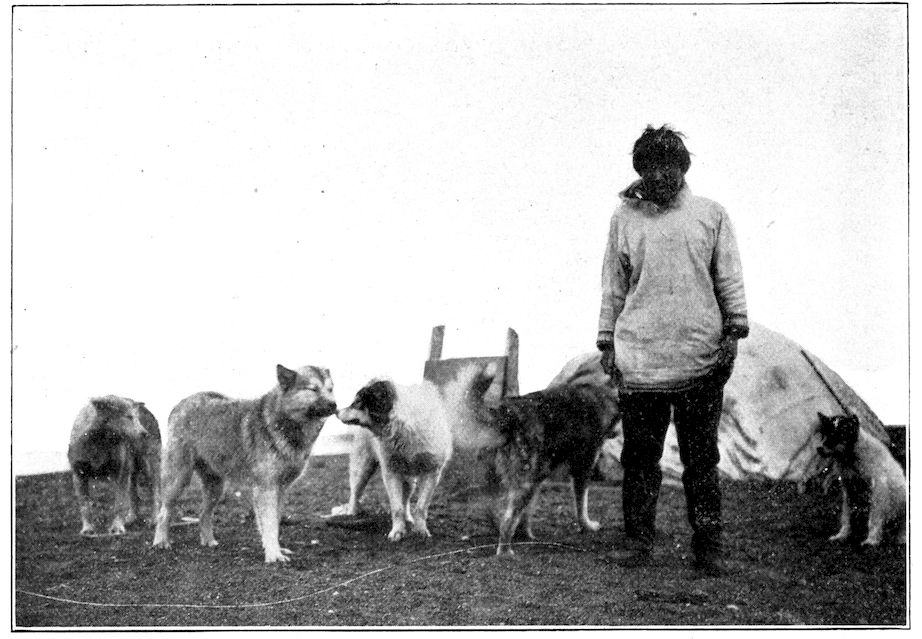
The Huskie Sledge Dogs of Northern Canada
The Huskie is a strong, powerfully built dog, varying in size and color, but uniform
as to his great bone, stamina and dense coat. He is extensively used for all manner of
draught work in which service he has made himself indispensable to mankind in the
northern latitudes. See special chapter on Alaskan dogs.
THE LABRADOR RETRIEVER
Color: Black.
Height: 26 in.
Weight: 80
lbs.
The Labrador
is of medium
size, strong and
well built, head
strong and
rather long
with wide, rather
flat skull
with a slight
ridge running
down it. The
eyes should be
oval in shape,
dark brown in
color and of
gentle and intelligent
expression.
Being a hard working dog the body should be rather long and well ribbed up, and
deep in the brisket. He should carry his thick and bushy tail rather high but not on the
back. His coat should be very profuse, and of moderate length, lying close to the body
and very oily.
43
French Breeds
Pyrenean Sheepdog
French Sheepdog
Barbet
Smooth-Coated Basset
Rough-Coated Basset
Rough-Coated Basset of Brittany
Basset of Ardennes
Rough-Coated Basset of Vendée
Blue Basset of Gascogne
French Pointer
Dupuy Pointer
Pointer of Ariege
Pointer of Saint-Germain
Pointer Bourbonnais
Blue Pointer of Auvergne
French Setter
Setter of Picardie
Setter of Pont-Audemer
Griffon Boulet
Griffon Guerlain
Griffon Nivernais
Griffon Fauve de Bretagne
Griffon Vendeen
French Bulldog
Non-Corded Poodle
Corded Poodle
Toy Poodle
Bordeaux
Hound of Vendée
Poitevin Hound
Poitou Hound
Normand Dog
Saintonge
Gascogne
Franche-Comté
Artois
Virelade
Gris de Saint-Louis
PYRENEAN SHEEPDOG
Color: All white, sometimes with small orange patches on the ears.
Height: 30 in.
Weight: 155 lbs.
This is a large, well-built dog, with a rather weak head in comparison to his body.
The skull is slightly rounded, and the muzzle should not be too square. The small
eyes should be brown and set obliquely in the head. Ears of medium size, hanging
close to the head. The tail is long, well feathered and carried low, and his coat is long,
straight, dense, and fitting close to the body.
44
FRENCH SHEEPDOG
Color: Dirty black,
slate, grizzle and reddish.
Height: 25 in.
Weight: 65 lbs.
This is a well-built
dog of medium size,
with a busy and intelligent
appearance,
and is well covered
with a shaggy coat.
The head is strong
and covered with long
hair, forming eyebrows,
beard and
whiskers, yet the eye
is not hidden by the
hair. The eyes are
brown and very expressive,
ears short,
erect and never pendulous
and often
cut. Body is well-built for endurance. The tail is never docked, of medium length
and carried low, and his coat is long and woolly.
BARBET
Color: Grizzle black, creamy brown, dirty white, white and chestnut, and white
and black.
Height: 22 in.
Weight: 56 lbs.
The Barbet is a strongly made dog, very compactly built. Is round and broad
in skull with forehead well developed. Muzzle broad and short, well furnished with
long moustaches. The eyes are round, lively and intelligent and dark brown in color,
and are entirely hidden by the long and thick hair on the eyebrows. The ears are
set on low, are long and flat and well covered with long, curly hair, which often
forms cords or ringlets. The body is strongly built, ribs and loins well rounded and
muscular. The forelegs are straight with plenty of bone and covered with long hair.
The tail is set on low, carried slightly upwards. The Barbet’s coat is long, woolly and
curly, forming cords or ringlets.
45
SMOOTH-COATED FRENCH BASSET HOUND
Color: Black with white and tan, the head, shoulders and quarters a rich tan, and
black patches on the back. They are sometimes hare-pied.
Height: 13 in.
Weight: 50 lbs.
The head is most perfect when it closely resembles that of a bloodhound. It is
long and narrow with heavy flues, prominent occiput, and forehead wrinkled to the
eyes. The general appearance of the head should indicate high breeding and a
reproachful dignity. The eyes show a kind expression and no haw is visible. Ears
very long, so long that in hunting they will often actually tread on them, set on low,
and hang loose in folds like drapery. Their texture is thin and velvety. Forelegs
only about four inches long. Stern is carried hound fashion, coat short, fine, smooth
and glossy. Skin is loose and elastic.
ROUGH-COATED FRENCH BASSET HOUND
Color: Any recognized hound color.
Height: 13 in.
Weight: 50 lbs.
A very powerful hound for its size, on short and strong legs. The head is large,
skull long and narrow and peak well developed. A snipy or weak jaw is objectionable.
The eyes are dark with a kindly and intelligent expression. Ears set on low, of good
length and fine in texture. Chest large and very deep. Body massive, of good length,
any weakness or lightness of loin being a bad fault. Forelegs are short and very
powerful. Stern of moderate length and carried gaily. The coat is profuse, thick and
harsh to the touch, with a dense undercoat, and may be wavy.
46
ROUGH-COATED BASSET OF BRITTANY
Color: Tawny red with white markings.
Height: 12 in.
Weight: 56 lbs.
This is a coarse-looking dog with long body and short, heavy neck. The head is
long with high domed skull. Stop slightly developed and long muzzle. The eyes are
dark in color, ears long, rounded at the tips and slightly folded. Stern of medium
length and carried upwards. The coat is wiry and broken, of fair length, softer on the
skull and ears.
BASSET OF THE ARDENNES
Color: Black and tan, hare color or tawny red.
Height: 15 in.
Weight: 55 lbs.
This is a typical hound, a bloodhound in miniature. The head is large but not
broad, skull high and narrow, occipital bone well developed, with pendulous lips. Eyes
brown, with eye lids loose and pendulous. The ears are long, fine and hanging forward
close to the jaws. Body is heavy and massive and the back long, broad and
deep. The stern is carried hound-like. The coat is short, hard on the body, but
softer on the ears and skull.
47
ROUGH-COATED BASSET OF VENDÉE
Color: White with red patches or tri-color.
Height: 15 in.
Weight: 56 lbs.
This is a dog of strong and muscular shape, with a long, lean, slightly rounded
head. The eyes are dark brown with an intelligent outlook and somewhat hidden by
the strong eyebrows. The ears are soft, flat and covered with white hair. Body long
and low, and deep in chest. The stern is short, set on high and carried very gaily.
The coat is hard but of rather fine texture.
BLUE BASSET OF GASCOGNE
Color: Tri-color, so-called trout color, blue mottled, white with black and light
tan spots above the eyes.
Height: 14 in.
Weight: 56 lbs.
This is a strong and massive dog, with a long, well developed head, skull high and
narrow, prominent occiput and lips not too pendulous. The eyes are dark brown,
ears very long and folded. He is long in body, with broad and deep chest. The stern
is fine, set on low, and carried upwards, and his coat is short and dense.
48
FRENCH POINTER
The stern is generally docked; in all other respects similar to the English Pointer.
DUPUY POINTER
Color: Pure white with small or large dull brown markings.
Height: 27 in.
Weight: 50 lbs.
The Dupuy Pointer is a big upstanding dog with considerable elegance in his
movements. The head is narrow and long. Occipital bone prominent, muzzle long,
lean and slightly arched. Eyes golden brown in color with a rather melancholy expression.
Nose well developed and broad and brown in color. Lips fine, thin and very
tight. Ears set on rather high, very fine in texture, not too long, and folded backwards.
The neck is long and gracefully arched. Chest deep and narrow. Hindquarters
strong and muscular. Stern long, set low and carried like a greyhound’s tail.
49
POINTER OF ARIEGE
Color: White with light brown or lemon spots.
Height: 26 in.
Weight: 70 lbs.
This dog is elegant in build and well developed. The skull should be rather narrow
with the occipital bone well defined. Muzzle long with a slight stop. Lips thin
and pendulous. Ears very thin, long and set on low. Neck long, graceful, strong and
free from dewlaps. Chest broad and deep, long in the back and loins. Hindquarters
muscular and well developed. The tail is long, set on rather low, and generally docked.
POINTER OF SAINT-GERMAIN
Color: White
with large lemon
markings, not
spots.
Height: 27 in.
Weight: 60 lbs.
In general appearance
he is a
clever looking,
graceful dog, symmetrical
in shape
and standing
rather high on the
leg. The occipital
bone should be
well developed.
Skull rather broad. Stop well defined, and the muzzle long and straight. Eyes golden
or yellow in color. Ears set on high, shorter than the ears of the French Pointer,
but longer than the ears of the English Pointer. The neck is strong and well arched;
chest deep and broad. Hindquarters muscular and fully developed. Tail thick at the
root, carried straight or with a little curve but no curl at the tip.
50
POINTER BOURBONNAIS
Color: White
with light chestnut
spots, and no
large markings.
Height: 24 in.
Weight: 70 lbs.
This dog is rather
lighter in bone
than the English
and French
varieties, is shorter
and more compact
in build, and
more of the appearance
of a cob.
The head should
be long, straight
and rather broad;
eyes large, dark
amber in color,
and with an intelligent
expression. Ears fine and not too long, set on rather low and hanging in folds.
Neck strong, short and muscular. Chest deep and broad. Hindquarters short, round
and muscular. Stern set on rather low, and not more than 3 inches in length.
BLUE POINTER OF AUVERGNE
Color: White with black markings and tickings, giving a blue effect. Head always
black with a white blaze up the face.
Height: 25 in.
Weight: 53 lbs.
In general appearance this dog is of perfect proportions suitable for hard work.
The occipital bone should be well defined. Skull broad with a pronounced dip below
the eyes. Muzzle straight and cheek bones well developed. The eyes should be dark
brown in color. Lips very pendulous. Ears long and fine in texture, hanging in folds
and should be set on level with the eyes and not carried too closely to the head. Neck
strong, slightly arched and throaty. Hindquarters and legs similar to other varieties
of the Pointer. Stern strong at the root and generally docked and set on low.
51
FRENCH SETTER
Color: White
with chestnut
patches.
Height: 25 in.
Weight: 56 lbs.
The French Setter
is a strong,
shapely dog of an
imposing appearance.
The head is
strong and well
developed. Skull
round, broad and
long with the occipital
bone well
defined and the
stop nicely chiselled.
The eyes
should be rather
small, dark amber
in color, and of open expression. His chest should be very deep and broad
with long and rather flat ribs. The stern set on high, rather long and be carried in
two curves; the first convex and the second concave, with a nice fringe of long, wavy,
silky hair. His coat should be thick and not bright, smooth on the head and flat on
the body with a fair amount on the belly, chest and throat and the ears and legs well
feathered.
SETTER OF PICARDIE
This is a variety of the French Setter and is sometimes called the black Setter
of the North. The points are the same, except that in color he should be brown and
grizzle, black or black and tan.
SETTER OF PONT-AUDEMER
Color: Brown
and grizzle, brown
and white, or self-colored
brown. A
black or black and
white coat is objectionable.
Height: 22 in.
Weight: 56 lbs.
This dog should
be of a short,
thick-set build
with a cobby appearance.
The
skull should be
round with prominent
occipital
bone, forehead rising
well toward
the top-knot or
crest. Eyes dark amber with a good and frank expression. Nose brown and
nostrils well open. The ears should be set on rather low, hanging close to the neck
and should be very long and well furnished with long, crisp hair. The chest is deep
and broad, back and loins strong and muscular; back slightly convex, strong and short.
The stern should be strong in bone at the root, carried rather straight and is generally
docked. The coat should be crisp on the ears and top-knot, which should stand
upright, and rather thick and curly on the body. The hair on mask should be smooth.
52
GRIFFON BOULET
Color: Chestnut, dead leaf color with or without white, never with black or
yellow.
Height: 23 in.
Weight: 56 lbs.
A rather coarse-looking dog, but with a sharp appearance and his expression is
mild and intelligent. Has broad and round skull, long, broad and square muzzle, with
heavy moustaches. The “stop” well defined but accentuated by strong eyebrows, give
him a rather savage aspect. The eyes, however, are intelligent and affable, of yellow
color. The nose is light color or brown with nostrils well open. The chest is broad
and deep and the ribs well arched. The forelegs are strong and muscular, covered
with abundance of long hair. The straight tail is of medium length, well covered with
hair but no feathering. His coat is of a nondescript character, fairly long, and silky
without brilliancy and smooth or wavy, but is never curly.
GRIFFON GUERLAIN
Color: White with
orange or yellow
patches.
Height: 23 in.
Weight: 56 lbs.
This is a medium-sized
dog, short in
the body and compactly
built. He has
a big head for his
size and the eyes are
rather large and light
brown in color. The
nose is always brown
with nostrils well
open. Chest broad
and back strong and
well developed. The
legs are straight and
muscular, rather on
the long side and well covered with short, wiry hair. Stern is carried straight, covered
with wiry hair but without feathering, and a third of its length is generally docked.
The coat is hard and wiry, rather short and not curly.
53
GRIFFON NIVERNAIS
Color: Tri-color, black and tan and brown, with or without dirty white patches.
Height: 23 in.
Weight: 60 lbs.
A strongly built dog, rather long in body and not particularly attractive in appearance.
The head is fairly long and rather square with slightly domed skull. Muzzle
also of medium length and of square formation. The eyes are bright, intelligent and
brown in color. Ears set high and well back on the head, of good size and hanging
without folds close to the head. Back long, straight and muscular, as also are the
loins. The legs are straight with plenty of bone and covered with hard hair. Stern
of medium length, also well covered with hair. The coat is semi-long, close and of a
hard texture.
GRIFFON FAUVE DE BRETAGNE
Color: Fallow, inclined to red, sometimes discolored red.
Height: 23 in.
Weight: 65 lbs.
A heavily-built dog, very robust. The head is large and strong with flat skull,
prominent occiput and muzzle of good length, square and strong. The ears should
not be too long and are covered with soft hair. The neck is short and muscular and
the chest deep. He is endowed with plenty of bone in the leg and has splendid feet.
The stern is of medium length, well covered with hair but not any feathering. The
coat is semi-long, hard and wiry.
54
GRIFFON VENDEEN
Color: White and
orange, white and
wheaten, white and
mouse-gray, and with red
or brown patches.
Height: 25 in.
Weight: 65 lbs.
An upstanding dog of
firm structure, covered
with a hard and close
coat. The head is rather
big and typical, pronounced
in occiput and
muzzle of good length.
The eyes are rather
small, brown in color
and full of life. Ears
long, nicely folded and
hang gracefully. He is muscular in body, deep and broad in chest with a rather long
muscular back. The stern is of medium length, carried gaily and well covered with
hard hair. The coat is thick, hard and wiry.
A similar dog to the Vendeen but more nervous in temperament and not so heavily
coated as the Griffon de Cosse, and those marked with the red or brown patches are
called Griffons du Grip or Griffons d’Anjou.
FRENCH BULLDOG
Color: Almost any color,
but black and black and tan
will disqualify.
Weight: Three classes are
provided, under 20 lbs., 20 to
24 lbs., and 24 to 28 lbs.
The French Bulldog ought
to have the appearance of an
active, intelligent and very
muscular dog of cobby build
and heavy in the bone for his
size. The head should be large
and square with the forehead
nearly flat, the muscles of the
cheek well developed but not
prominent. “Stop” as deep as
possible. The forehead should
be wrinkled, and the skin of
the head not tight. Eyes moderate in size and dark in color. “Bat” ears of medium
size, large at the base and rounded at the tips and placed high on the head. The
body should be short and rotund with a distinct roach and light but sound
quarters. His shoulders should be strong and he should stand on short but fairly
stout limbs for his size. The fundamental difference between the French Bulldog and
the English miniature is seen in the foreface which in the French should show some
slight protrusion of the under-jaw, and some turnup, but no layback.
55
CORDED POODLE
Color: All black,
all white, all red,
or all blue.
Height: 22 in.
Weight: 50 lbs.
The most popular
varieties of the
Poodle are the
corded and non-corded.
In general
appearance he
presents an active
and elegant outline.
He is a well-built
dog and carries
himself proudly.
The head is
long, straight and
fine. The muzzle
should be strong
and the lips black
and fit tightly.
Eyes almond
shape, very dark
brown, and full of fire and intelligence. The ears are long and wide, set on high and
hang close to the head. The back is strong and muscular. The tail is set on high and
should never be curled or carried over the back. In the corded variety the white
Poodle should have dark eyes, black or dark liver nose, lips and toe nails. The red
Poodle should have dark amber eyes, with dark liver nose, lips and toe nails. The
blue Poodle should be of even color, without patches of black or white, and have dark
eyes, lips and toe nails. All the other points of the white, red and blue Poodle should
be the same as the perfect black Poodle. The coat should be very profuse, of good,
hard texture, hanging in tight, even cords. In the non-corded variety the coat should
be very profuse, of hard texture of even length, and may be either curly or fluffy.
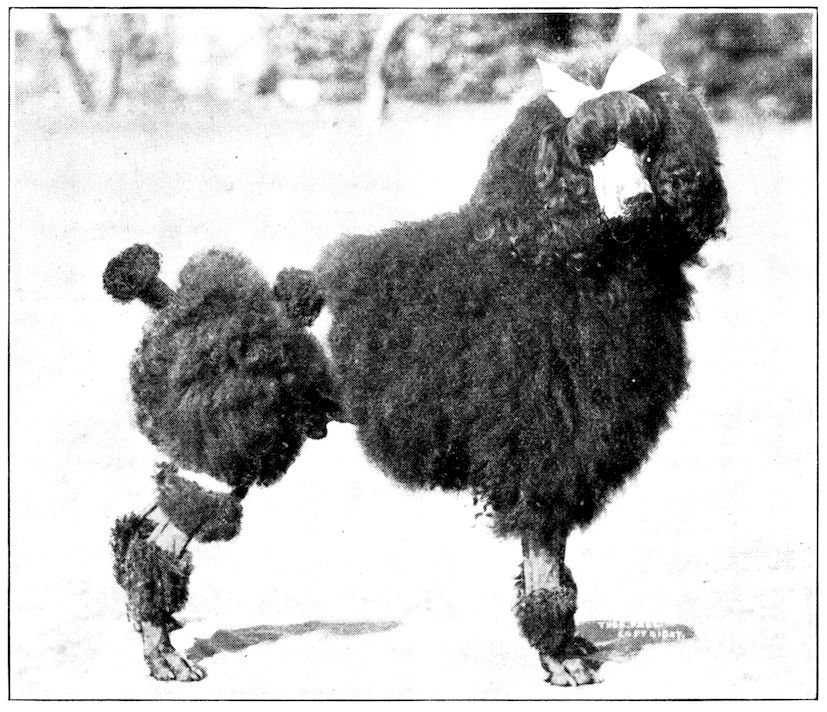
NON-CORDED POODLE
56
TOY POODLE
Similar in all respects to the non-corded
variety, but the coat is softer
and silkier, and he should not stand
more than 12 inches high or weigh
more than 10 pounds.
BORDEAUX
Color: Reddish fawn, with red mask, red with red mask, fawn and no mask,
fawn or red with black mask. Brindles, blacks and pied disqualify.
Height: 29 in.
Weight: 120 lbs.
This is a smooth-coated dog, very powerful in build, somewhat low in stature,
massive, broad and muscular. He possesses an enormous head, greater in proportion
to his body than that of any other breed, and should be very long and broad, high and
square, and the whole of the face and muzzle should be covered with ropes of loose
skin, lying in wrinkles. The eyes are small, wide apart, deep set, light in color, and
very penetrating in expression. The “rose” ears when uncropped should be small and
fine in texture. The neck is very thick and powerful, with skin very loose, forming
a dewlap on each side of the throat. Back is short and straight, of great breadth at
the shoulder, and the hindquarters should be pear-shaped, as in the bulldog, and it
should not be forgotten that this dog is the gladiator of his race.
57
HOUND OF VENDÉE
Color: White or with dark red and yellow patches.
Height: 28 in.
Weight: 58 lbs.
A strong dog, well built and elegant. His head is clean and slightly arched and
skull rounded. The eyes are dark yellow or dark brown in color. Nose brown with
well open nostrils. The ears are flexible, thin, long, pendulous, set on low and nicely
folded. The neck is long, clean, well muscled and splendidly arched. The loins are
well arched, powerful and deep. Legs clean, straight and well boned and stern of
medium length, tapering and carried rather high. The coat is short and fine.
POITEVIN HOUND
Color: White,
blue and orange,
with pale tan
markings on body
and legs.
Height: 25 in.
Weight: 58 lbs.
This is a muscular
sort of dog
with rather square
fine head, slightly
domed in skull, occipital
bone not
particularly well
developed. Eyes
are brown and
intelligent. Nose
black with open
nostrils. Ears well
set on, rather
short and well
folded. Neck
of good length. Back slightly arched and chest not too deep. The legs are straight,
strong and well boned. Stern of medium length, carried gaily and with a short, rather
thick coat.
58
POITOU HOUND
Color: White,
black and tan, and
tri-color.
Height: 26 in.
Weight: 58 lbs.
A muscular dog
with limbs rather
flat but large.
The head is lean,
fine and carried
proudly on a well
arched neck. The
skull is slightly
domed and the occipital
bone just
visible, and the
muzzle should be
long. The brown
eyes give him a
bright and intelligent
expression.
The ears are
moderately short,
very thin, velvety and hang gracefully in folds. His deep chest, slightly arched back,
well muscled loins and straight, well-boned limbs, fit him for arduous work. The stern
is of medium length and tapers towards the point. The coat is coarse and should not
be too short, especially on hindquarters and stern.
NORMAND DOG
Color: White with large brown, black or grizzled patches, tri-color with grizzle
saddle.
Height: 29 in.
Weight: 78 lbs.
A heavy, strong, rather coarse-looking dog and is the heaviest of all the French
Hounds. He has a long, broad skull with coarse muzzle and the skin on the head is
very loose and wrinkled. The eyes are full and gay and the haw is visible. Ears set
on low, long, thin, velvety and folding inwards. The body is rather long and heavy.
Neck short, strong and thick with heavy dewlap. Back broad, strong and well
muscled. Legs strong, muscular and with rather coarse bone. The feet are clean
and pointed. The stern is thick at the root, tapering towards the point and carried
gaily, curved upwards. The coat is short and coarse in appearance.
59
SAINTONGE
Color: White with black patches and blue belton. The ears and palate always
black and he has light tan spots above the eyes.
Height: 28 in.
Weight: 62 lbs.
In general appearance this dog is elegant and not too heavily built. The head is
lean, light and of a fair length, with skull slightly arched and with occipital bone well
developed. The eyes are bright and intelligent, showing the haw and brown in color.
Ears long, fine, set on low, black in color, edged with a light tan. Chest deep and rather
narrow; legs straight, lean and rather long. Stern is of medium length and tapering.
Coat short and fine.
GASCOGNE
Color: Blue or white with many black spots, blue mottled, and pale tan markings,
rather black and the legs tinted with red.
Height: 23 in.
Weight: 55 lbs.
This is a strong and massive dog, with a large and sometimes a rather long head,
with the occipital bone well developed, resembling in this respect a bloodhound. The
eyes are brown, bright and clear, and somewhat hidden, showing the haw. The lips
are pendulous. Ears very long, rather fine and well folded. Chest very deep, back
broad and strong. The stern is fine but not too long and carried well up. Coat short
and hard on the body, soft and silky on the skull and ears.
60
FRANCHE-COMTÉ
Color: White with yellow, orange or red patches.
Height: 23 in.
Weight: 54 lbs.
A dog of medium size and symmetrically built. The head is fine and of fair
length with domed skull and the occipital bone slightly developed. Eyes of medium
size, bright and brown in color. Ears are set on low, of medium length, thin and soft.
He is rather short in the neck, chest deep, ribs not too rounded, legs well boned and
muscular. His stern is set on high, rather short, and tapers to a fine point. The coat
is smooth, fine and glossy.
ARTOIS
Color: White with yellow or red patches, tri-color with black saddle.
Height: 23 in.
Weight: 50 lbs.
A strong and well-built dog of medium size. Rather long skull, with the stop
not too deep. The eyes are full, dark yellow or light brown in color. The ears are
broad, very long and set on low. Body not too long, neck rather short, back strong
and straight. His legs are not too long and are straight and strong. The stern is
strong and carried upwards. The coat is short and not too silky.
61
VIRELADE
Color: White with large black patches and light tan spots.
Height: About 29 in.
Weight: About 62 lbs.
A dog of great size, yet strong and light and rather long in the body. The head
is fine rather than heavy; occipital bone well developed, and has pendulous lips. The
eyes are brown in color and the ears long and fine. He is strong, straight and well
boned in the legs. The stern is long and carried hound-like, and he is short in coat.
GRIS DE SAINT-LOUIS
Color: Grizzle on the back, red brindled with the legs of a hare color, or the back
rather black and the legs tinted with red.
Height: 23 in.
Weight: 55 lbs.
This is a dog of good size, rather high on the legs, strong and symmetrically built.
The long, well developed head has a broad skull, slightly rounded and stop well
defined. The muzzle is of medium length, square and strong. His bright and intelligent
eyes are dark brown in color. The ears are set well back on the head, are long,
thin, and nicely folded. Neck not too long and very muscular. He is strong and
broad in back with a deep and capacious chest. Legs straight, long and well boned.
The stern is thick and well covered with hair and carried very curved. The coat is
hard and wiry.
62
German Breeds
Great Dane
Dachshund
Pomeranian
Pomeranian (Miniature)
Dobermann Pinscher
Affenpinscher
German Sheep Dog
German Hound
Wire-Coated German Terrier
Smooth-Coated German Terrier
Smooth-Coated German Pointer
Rough-Coated German Pointer
Pointer of Wurtemberg
Pointer of Weimar
German Setter
Wachtelhund
Griffon-Korthals
Boxer
Hanovrian Limer
Bavarian Limer
GREAT DANE
Color: Brindle, fawn, blue, black and harlequin. The harlequin should have jet-black
patches and spots on a pure white ground.
Height: 30 in. or more. Weight: 120 lbs. and over.
This dog is remarkable in size and very muscular. Strongly yet elegantly built,
which latter feature is an absolute essential, as also is alertness of expression and briskness
of movement, and generally he should carry a look of dash and daring. The head
is of great length, muzzle broad, and jaw powerful. The skull should be flat rather
than domed, and have a slight indentation running up the center. The ears in Germany
are cropped, set high, and carried erect, with the tips falling forward. The neck
should be long and well arched, and quite free from loose skin. The body is very
deep, back strong and hind quarters extremely muscular. His coat is short, dense
and sleek.
The abolition of cropping by the English Kennel Club resulted in English breeders
concentrating their attention to the production of a small ear, which would hang
neatly in lieu of his original large ear, which was desirable when cropping was permitted.
In doing this, character was at first lost, to some extent, in head, color and
soundness of limb, but these temporary disabilities have now been largely overcome.
63
DACHSHUND
Color: Black, gray, red or yellow in good harmony, much white is objectionable.
Height: English standard, 7 to 9 in.; German standard, 7 to 8½ in.
Weight: English standard, 18 to 21 lbs.; German standard, three classes: A. 15½
to 16½ lbs.; B. 15 to 22 lbs.; C. Over 22 lbs.
It will be observed from the above that there is a difference of opinion between
the German and English ideas as to the most desirable size of the Dachshund. This
dog is of a long, low and graceful conformation. His figure though elongated should
present a stiff and muscular appearance, notwithstanding his short and crooked front.
He should not appear lean or weasel-like. His pert, saucy pose of the head is a
desirable characteristic. The skull is long and narrow, eyes small and in shade should
follow the color of the dog, ears long, broad and soft, chest narrow and deep with
breast bone prominent, stern long and strong, flat at the root and carried low. His
skin should be thick, subtle, loose and in great quantity. There are three varieties as
regards coat. A—The smooth, short and strong coat. B—The rough, dense, not silky
or long coat. C—The long-coated variety, which should be straight, though it is
sometimes wavy, fine and glossy. It should be abundant on the neck, chest, ears,
forelegs and tail.
It is worthy of notice that though the Dachshund is of German origin, the English
Dachshund Club, founded in 1881, preceded the German Teckel Klub by ten years, and
Dachshunds were exhibited in England five or six years before they made their appearance
on the show bench in Germany. The “points” of the two clubs also differed considerably,
more particularly in regard to the head and size. The English breeders
seemed rather to regard him as a hound, but nowadays there is little or no difference
between the best specimens of the two countries.
64
POMERANIAN
(Spitz)
Color: White, black, blue, brown, chocolate, sable in all shades, red, orange and
fawn in all shades, and parti-colors. The whites must be free from lemon or any
color, and the other colors free from white. In the parti-colors the colors should be
evenly distributed in body patches. Self-colored dogs with white feet or legs are objectionable.
Weight: About 24 lbs.
This is a compact, short-bodied dog, with head and face fox-like. Small erect
ears, and exhibits great intelligence in expression, docility in disposition and activity
in buoyancy and deportment. The skull should be somewhat flat, eyes oblique, not
set too wide apart, bright and dark in color. The neck is short and lion-like, is covered
with a profuse mane and frill of long straight hair. The tail is a characteristic of this
breed and should be turned over the back, profusely covered with long spreading hair.
He should have a long, perfectly straight and glistening coat, sound and even in color,
and soft fluffy undercoat, the whole effect being of a stand-off, weather resisting
variety.
POMERANIAN
(Miniature)
This breed has now been perfected
as a toy variety to the
almost entire exclusion from
the show ring of the original
spitz. Formerly he was produced
in Pomeria, in all sizes
from 20 to 40 lbs. weight. Then
the fashionable weight became
18 to 24 lbs., but latterly breeders
have perfected the variety
and he is classified at shows
as above 8 lbs. and less than 8
lbs., until nowadays the smaller
they are the more they are
appreciated. There are many
poms around three or four
pounds weight, and some full
grown specimens have been
exhibited as small as 1½ lbs.
65
DOBERMANN PINSCHER
Color: Black and tan, small white patches on chest is permissible.
Height: 24 in.
Weight: 45 lbs.
This is a well built muscular dog, with an appearance denoting quickness, strength
and endurance, and he has a lively and game temperament. The skull is broad, flat
and slightly rounded, muzzle long and moderately tapered. Ears well cropped and not
too pointed. Eyes dark brown, of medium size, with a friendly and intelligent outlook.
The back is straight and of fair length, with well developed and muscular hind quarters.
The tail is docked to the length of about 6 inches, and bob-tails are much appreciated.
He has a short, hard, and close-lying coat.
AFFENPINSCHER
(Monkey Terrier)
Color: Gray-black,
blue-gray, dirty yellow,
red and their different
shades. The light-colored
dogs have often a
black muzzle.
Height: Not more than
20 in.
Weight: Under 8½
lbs.
This is a small ladies’
dog, well built, of compact
form and very intelligent.
The head is
thick and round, covered
with long, hard and
unequal hair, muzzle short and strong and he should be under-shot, yet without showing
any teeth, and well furnished with mustache and beard. The eyes are large, round,
prominent and very intelligent and dark in color. The eyebrows should be straight
coated but not hanging, with a general outlook that of the monkey. The ears are
always cut, carried erect and pointed, set on wide apart and well covered with short
hair. He has a very compact body, is short in neck and broad in chest. The tail is
docked to about two-thirds of its length, and is carried upwards. His coat is profuse,
long, hard and unequal, and should be of a dry nature, with a woolly undercoat somewhat curled.
66
GERMAN SHEPHERD DOG
Color: Black, grizzle, reddish brown, either self-colored or with tan, white and
white with large dark patches or brindle, with or without tan markings. White on
the chest and legs is permissible, but not desirable.
Height: 22 in.
Weight: 55 lbs.
This is a medium-sized dog, rather long in the body but well built, and is very
game and intelligent. The head is lean, skull broad between the ears and long lean
muzzle. The ears are of medium size, carried erect, and pointed forward. The eyes
are almond-shaped, dark in color, full of “fire” and intelligence, but often sour. The
body is rather narrow, with deep chest, straight back and strong loins. The tail is
well coated, carried low when the dog is quiet and gaily but not over the back when
excited. There are three varieties as to coat: A. Smooth-coated. Short dense and
hard, round the neck the coat is longer and harder. B. Long haired, wavy and hard,
the hair on the head partially covering the eyes, and with well marked beard and
moustaches and tail well feathered. C. Wire-haired. Straight, hard and wiry, that
on the head and legs being especially short and hard with beard and eyebrows well
developed.
GERMAN HOUND
Color: White muzzle,
collar, neck, chest and
tip of tail; the head,
body and tail are orange,
tawny, yellow, black,
grizzle or brindle, but
never brown.
Height: 21 in.
Weight: 40 lbs.
This is a lightly made,
elegant dog, with head
lean, long and narrow,
occipital bone not prominent,
and “stop” slightly
developed. The eyes
are bright with a friendly
expression. Ears long,
broad, flat and round at
the tips. Fairly light
in body, which
is well developed in comparison to the head. Stern long, rather thick, tapering
point and well covered with long hair, and carried downwards with a slight
upwards. The coat is long for a smooth-coated dog and is very dense and hard.
67
WIRE-COATED GERMAN TERRIER
(Schnanzer or Rattler)
Color: Pepper and salt, iron-gray, silver-gray, dull black with yellow or tan
markings on head and legs, rust-yellow and gray-yellow. A bright red is objectionable.
Height: 18 in.
Weight: 28 lbs.
This is a strongly built cobby dog, of a rather nervous temperament, yet he is gay,
watchful, very intelligent and courageous, without being quarrelsome. He is a first
rate rat dog. The head is strong, fairly long, with a flat skull rather narrow between
the ears, and the occiput is well developed. The ears are set on high and are cropped
with rounded tips. The oval eyes convey an intelligent and vivacious expression, with
eyebrows well developed and covered with rough upstanding hair. His back is strong
and straight and rather flat sided in rib. The tail is set on high, is docked very short
and if a bob-tail is much appreciated. The coat is as hard, rough and wiry as possible,
of the stand-off variety and though it is shorter on the head, it is not softer. On the
muzzle we find a characteristic short beard and whiskers.
This breed has worked himself into popular favor in Germany by his indefatigable
industry as a worker and as a good friend of the horse, hence he is much appreciated in
the stable. Certainly he is very intelligent, a very apt pupil, as quick as lightning in his
movements and unfailing in his fidelity, courage, endurance and muscular strength.
He is a rare good dog for bad weather purposes.
SMOOTH-COATED GERMAN TERRIER
This dog is the same in every particular to the wire-coated German terrier, excepting
that his color is black and tan, black with yellow shade and wolf gray, and the coat
is smooth, of fine texture and lays close to the body.
68
SMOOTH-COATED GERMAN POINTER
Color: Pure brown, brown and white, or white with brown patches.
Height: 26 in.
Weight: 70 lbs.
This dog is of medium size and is built on good uniform lines. It should not be
too heavy in the head. The lips should be pendulous. Eyes oval in shape and brown
in color, varying somewhat according to the shade of his coat, and have a rather grave
expression. Ears moderately long but not too broad, and should lay without folds
close to the head. Back straight, broad, short and muscular. The stern is of medium
length, and should be carried a little above the line of the back, strong in bone at the
root, but not coming to a fine point. The tail is always docked.
ROUGH-COATED GERMAN POINTER
Color: Brown and white, apparently grizzled-brown mixed with large brown
markings.
Height: 26 in.
Weight: 70 lbs.
In general appearance this dog follows the characteristics of the smooth-coated
German Pointer except in the matter of coat, which should be about 2 inches long
all over the body of a rough, hard and dull texture. In the winter time a considerable
undercoat is developed. The cheeks are well covered with whiskers, and the eyebrows
are bushy. On the skull the hair is flat, short, hard and dull.
69
POINTER OF WURTEMBERG
Color: Tri-color, so-called trout color, with brown-brindle and patches of tan
markings. Head and ears darker in color than the rest of the body. Height 27 in.
Weight 75 lbs.
A strong, shapely dog, not coarse-looking and standing rather high on the leg.
The skull is long and narrow, occipital and cheek bones well developed. The eyes are
light brown in color, of intelligent and grave expression and showing a prominent haw.
Ears set on not too high, and hang gracefully close to the cheeks. The neck should
be strong, very muscular and throaty. The chest is deep, back straight, broad and
powerful, and loins broad and deep. The tail is strong and set on not too high.
POINTER OF WEIMAR
Color: Varies
from silver grizzle
to mouse grizzle,
often clearer on the
head and on the ears.
White patches on the
chest and on the feet
are objectionable, and
tan markings are decided
faults.
Height: 26 in.
Weight: 70 lbs.
In general appearance
the dog of Weimar
is of medium size
but with muscles not
so well developed as
the German Pointer.
The head is rather
light, and narrow in
skull, and the occipital bone well developed. The jaws are long, lips pendulous without
exaggeration, and the muzzle broad. Eyes of medium size, yellow brown in color.
Nose flesh-colored, joining on to the muzzle in a clear violet tint. The ears are light
and somewhat pointed. Tail rather thin and short.
70
GERMAN SETTER
Color: Self
colored dark
brown, often
with a little
white on chest;
white with large
or small brown
patches or mixed;
never black
or red.
Height: 26 in.
Weight: 70
lbs.
In general appearance
the
German Setter
is a strong,
shapely dog,
not too heavy in
build. The head
is rather long,
skull slightly
rounded, lips pendulous. Eyes are of medium size, oval in shape, dark brown in color,
varying in shade with that of the coat. The body should be straight, broad and muscular,
with neck slightly arched but not throaty; chest deep but not too broad. The
stern should be of medium length, strong at the root and tapering near the point, carried
straight to the middle with the end curled upward and well feathered.
WACHTELHUND
Color: Self-colored
brown,
often with a
white patch on
stern and chest;
white with large
or small brown
patches, or mixed.
Height: 20 in.
Weight: 56
lbs.
The Wachtelhund
is somewhat
like the
German Setter
in miniature and
is strongly
built, notwithstanding
his
small size. The
head is large
and long, skull slightly rounded and fairly broad. Muzzle of fair length and narrow with
the occipital bone and stop both well defined. The eyes are dark in color, varying in shade
with that of the coat and of medium size. The ears are long compared with those of the
German Setter, are set on high and hang close to the head. The neck should be strong
and not throaty; chest deep, back straight, broad and muscular, and the loins short and
broad. He is strong and straight on the leg and the tail is usually docked and well
feathered. The coat is slightly wavy, fairly long and very dense.
71
GRIFFON-KORTHALS
Color: Steel gray with brown patches or self-colored brown often mixed with
grey hairs. Also white, grey with brown, or grey with yellow patches.
Height: 24 in.
Weight: 56 lbs.
This dog is of medium size, symmetrical and well built. The head is heavy and
long, covered with wiry hair not too long, but there should be a good moustache and
eyebrows. The muzzle is long and square, nasal bone convex and the stop not too
abrupt. The eyes are large, very intelligent in expression and brown or dark yellow
in color. The nose is always brown. Ears of medium size, set on not too low, carried
close to the head. The back strong and well developed and the forelegs straight,
muscular and covered with wiry hair. The stern is carried straight out and is covered
with wiry hair but without feather. About a third of the stern is generally docked.
The coat is wiry, crisp and harsh like fine iron wire, never curly or woolly. Undercoat
is dense and soft.
BOXER
Color: Yellow or brindle,
with or without
black muzzle. White
patches allowed, but liver
color is a disqualification.
Height: 21 in.
Weight: 50 lbs.
A strong, lively,
smooth-coated dog of
great activity. The ears
are set on high, are always
cropped and when
at attention the skull is
freely wrinkled. The
eyes are dark and large
and his back is short
and straight with well
rounded ribs. The tail
set high and is always
docked. Coat short, hard
and glossy.
72
HANOVRIAN LIMER
Color: Gray-brown, like the winter coat of a deer, tan, red-yellow, darker on the
mask, ears, and around the eyes, and often with a dark trace down the back.
Height: 20 in.
Weight: 54 lbs.
In general appearance this dog is of medium height, of strong and long structure.
He is broad in skull and slightly domed, forehead slightly wrinkled, eyebrows well developed
and protruding. The eyes show no haw and convey an energetic and earnest
expression. Ears are very broad, set on high, and are carried close to the head. Chest
wide and deep, back long with broad loins. The tail is long, strong at the root and
tapering, well provided with long hair and carried downwards. The coat is close, full,
smooth and elastic, and of a dull appearance.
BAVARIAN LIMER
Color: Tan, red-yellow, or wheaten, often darker on the back, with muzzle and
ears nearly always black.
Height: 20 in.
Weight: 52 lbs.
A medium-sized dog, light in bone, with a grave and mild expression. Has a
broad skull, slightly domed, eyebrows well developed, “stop” slightly defined, and lips
not too heavy or pendulous. The eyes are dark brown and the haw is not visible.
The ears are of medium length, broad, set on high, and round at the tips. Body not
too long and chest fairly broad. Tail of good length, well covered with long hair,
carried downwards, and is never docked. The coat is full and dense of hard texture,
finer on the head and ears.
73
Italian Breeds
Italian Greyhound
Italian Griffon
Italian Pointer
Bolognese
Italian Sheepdog
Sheepdog of Abruzzes
ITALIAN SHEEPDOG
Color: Dirty yellow, dark
shades are not desirable.
Height: 23 in.
Weight: 62 lbs.
This is a strong, thick-set
dog with heavy, somewhat
rounded skull. The eyes
are hazel color of intelligent
expression. Ears are short
and hanging, covered with
fairly long, straight fur. His
back is strong and straight;
tail long, carried low and
well coated, and the coat is
curly and dense, except on
the head, where it should be
smooth.
SHEEPDOG OF THE ABRUZZES
Color: All white.
Height: 27 in.
Weight: 66 lbs.
A large and coarse
dog. The head is fairly
long, somewhat
broad in skull, slightly
domed, and without
stop. The eyes
are small and dark in
color; ears of medium
size and carried close
to the head. Body
strong and well built,
with well developed
and muscular loins.
The tail is long, well
coated, generally carried low, but sometimes over the back. His coat is dense and long,
especially around the neck, on the back and on the tail. The skull, muzzle, ears and
forepart of the legs are smooth-coated. A curly coat is a serious fault.
74
ITALIAN GREYHOUND
Color: Self-colored, golden
fawn, but all shades of
fawn, red, mouse, blue,
green, and white are recognized.
Blacks, brindles and
pied are less desirable.
Weight, two classes: Over
8 lbs. and under 8 lbs.
This is an English greyhound
in miniature, of very
slender proportions, and of
ideal elegance and grace in
shape, symmetry and action.
ITALIAN GRIFFON
Color: All white or white with yellow or light brown patches.
Height: 26 in.
Weight: 56 lbs.
This dog is known as the Spinone and is a well-built and clever dog of medium
size. The head is rather long and large and though the moustaches are abundant the
rest of the hair on the head is of a smooth nature. The skull is not too broad, forehead
slightly domed, muzzle square and long, and the stop not very clearly defined.
The eyes, though yellow or light brown in color, are very intelligent. Ears not too
large, set on rather high and hang close to the cheeks. The stern is carried straight or
slightly upwards, and is generally docked. The coat is short, hard and wiry, never
woolly or curly and the undercoat is dense.
75
ITALIAN POINTER
Color: White with orange patches, white speckled with lemon, white and liver,
and roan with liver.
Height: 25 in.
Weight: 80 lbs.
The Italian Pointer is a strong, muscular and elegantly shaped dog, full of character.
The skull is slightly rounded, occipital bone well developed with broad, long
and straight muzzle. The eyes are oval in shape, dark yellow in color, sympathetic
and grave in expression. The nose is of brown or flesh color, never black. The lips
are pendulous, thick and rounded. Ears long and broad, set on at the height of the
eye, hanging gracefully and round at the tips. The back and loins are broad and
muscular. The stern is thick and tapering and is generally docked to about 7 in.
in length.
BOLOGNESE
Color: Self-colored white.
Height: 12 in. or under.
Weight: 8 lbs. or less.
This is a ladies’ toy dog.
The head is rather broad
and muzzle not too long.
The eyes are large, dark in
color and watery. The ears
hang, but not too close to
the head, which gives the
head a square appearance,
and are well covered with
long, curly hair. He is
straight in the back and
deep in the chest. The tail
is curled over the back and
well coated, and his coat
should be long, silky and
curly.
76
Netherlands Breeds
Draught Dog
Brussels Griffon (Belgium)
Toy Brabantine (Belgium)
Belgian Sheepdog (Belgium)
Schipperke (Belgium)
Papillon (Belgium)
Wire-haired Dutch Terrier (Holland)
Dutch Sheepdog (Holland)
Danish Pointer (Denmark)
DRAUGHT DOG
This is more or less of a nondescript variety, but he is worthy of a place in the
sun by reason of the inestimable service he renders to his master or mistress. Daily
he may be seen in Belgium and Holland drawing the carts purveying milk, butter,
vegetables and other similar household necessities. He varies in height from about
24 in. to 32 in. and weighs around 100 lbs. Fawns and brindles are the most common
colors. In general appearance he is a cobbily-built strong dog capable of great endurance.
Naturally he must be strongly made in back and loins, well boned in legs and
with feet well padded. The tail is generally docked to about three inches. Chapters
dealing with other purposes to which dogs are put will be found in other parts of
this work.
77
BRUSSELS GRIFFON
Color: Red.
Weight: Under 9 lbs.
This is a ladies’ pet dog, very intelligent, sprightly, robust, of compact appearance,
and is peculiar for his quasi-human expression. His head is rounded, furnished with
hard, irregular hair, which is longer around the eyes and on the nose and cheeks.
The ears are erect when cropped, but not otherwise. The eyes are very large, black
and with long and black eye lashes, and the hair on his nose should grow upwards,
towards his pronounced stop. His chin should be prominent, but must not show the
teeth. The tail is erect and cut two-thirds of its length.
There is no definite data as to this dog’s precise origin, and though credit for his
conception belongs to Brussels, it is highly probable that he has been evolved by an
admixture of the Yorkshire Terrier, Irish Terrier and the Ruby Spaniel. His quaintness
and degree of dignity, altogether disproportionate to his size, account in a large
measure for the popular esteem in which he is held.
TOY BRABANTINE
The Toy Brabantine resembles the Brussels Griffon in every respect, except that
his coat is short and smooth and his color red, or black and tan.
78
BELGIAN SHEEPDOG
Color: Reddish black, if possible with black muzzle.
Height: 21 in.
Weight: 54 lbs.
A very intelligent and rustic dog built to withstand the changeable climate of
Belgium. His sagacity, activity and enduring strength and dauntless courage fit him
peculiarly as a protector for his Belgian master. The head is long, skull flat, not too
broad, and moderate “stop.” The eyes are brown, with an inquiring intelligent expression.
The ears should be stiff and carried erect, and triangular in shape, neck
rather long, chest broad and not too deep, back straight, broad, strong, and of medium
length. The tail is carried low in repose and should never be curled over the back,
and is never docked. There are three varieties as to coat: A. Long and straight on
the body, smooth on the head, with the inside of the ears protected by dense hair,
and with considerable coat round the frill or mane. Forelegs well feathered and very
profuse tail. B. Smooth on the body, head and legs, little longer round the neck, and
slight feathering on the tail. C. A hard, dry and bristling wire-coat of the stand-off
variety, more or less the same length all over the body, and with a bushy tail.
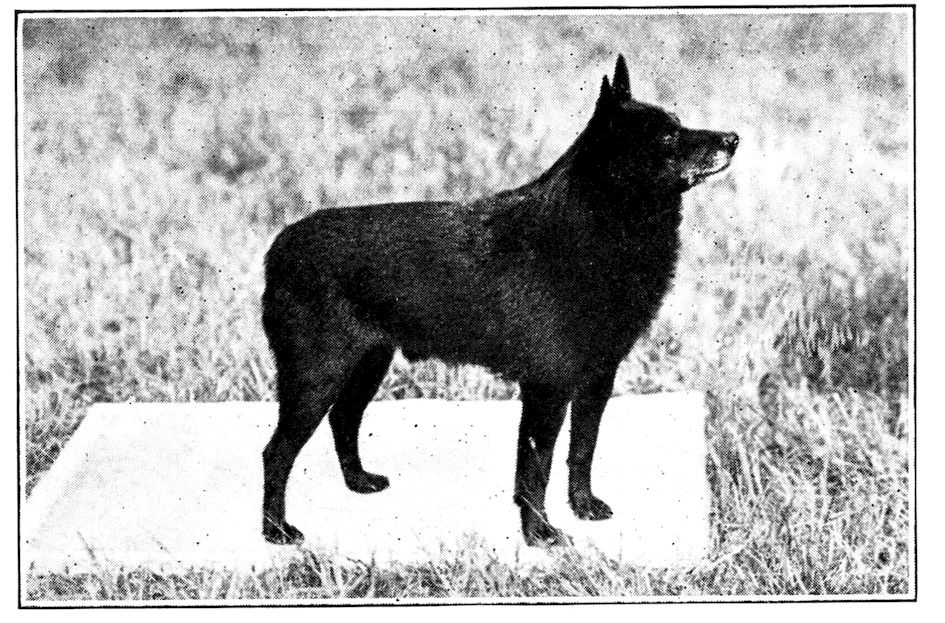
SCHIPPERKE
Color: All black.
Height: 12 in.
Weight: 12 lbs.
This is an excellent little
watch dog, very active and
always on the alert, very
courageous, exceedingly inquisitive,
and a good vermin
dog. The head is foxy,
eyes dark brown, oval, and
keen. Ears quite erect,
small, triangular and set on
high, and very mobile. The
body is short and thick-set,
chest broad, with straight
back and powerful loins.
He has no tail. His coat
should be dense and harsh on the body, very profuse around the neck, forming a mane
and frill, but short and smooth on the ears and head.
79
PAPILLON
Color: Self-colored red mahogany, ruby, chestnut red, dark yellow, or white with
these patches. Height: Not more than 10 in., the smaller the better. Weight: 8 lbs.
and under.
This is a lively and active ladies’ pet dog. The skull is small, slightly domed, and
muzzle rather snipy. The eyes are round, dark colored, set low in the head, and convey
a lively expression. The ears are set high on the head, carried erect like the wings of a
butterfly, from which feature he is often styled the Butterfly Spaniel. The back is
straight and not too short or cobby. The tail is carried like that of the squirrel and is
long and heavily feathered, which again accounts for him sometimes being called the
Squirrel Spaniel. His coat should be long and silky, abundant on the body and tail
and ears, but short on the mask.
WIRE-HAIRED DUTCH TERRIER
Color: Red, yellow-brown, dirty yellow with moustaches, beard and eye lashes
often black.
Height: 17 in.
Weight: 27 lbs.
This is a rather commonly built dog, lively and intelligent; is a good ratter and is
a stable dog rather than a ladies’ pet. The head is rather round and short, with stop
well defined and the skull well covered with a short and hard coat. The eyes are
rather large and round, dark brown in color, with an intelligent and lively expression.
The ears are set on high, carried erect, and cropped to points, covered with coat shorter
and softer than on the body. The tail is always docked, carried gaily and should be
well coated but without feathering. The coat is hard, wiry and rough, never curly,
wavy or woolly.
80
DUTCH SHEEPDOG
Color: Immaterial, but no pie colors allowed.
Height: 21 in.
Weight: 52 lbs.
A strong, well-built dog, very active and intelligent. The head is rather long and
narrow, with flat skull, no stop, ears erect and of medium size, pointed at the tip and
set on high. The neck is muscular and clean. Chest deep but not too broad, back
strong, and on the short side. The tail is carried low, and is never docked. There
are three varieties as to coat.
A. A short, smooth coat like that of the smooth collie; B. A long, rough coat
similar to the rough collie but without the frill; C. A wiry or broken coat with smooth
mask, and with distinct beard and eyebrows.
DANISH POINTER
Color: Yellow-orange
with
white markings
on the legs,
feet, chest, muzzle
and tip of
tail. Self-colored
yellow-orange
is objectionable.
Height: 26 in.
Weight: 60
lbs.
In general appearance
the
Danish Pointer
is smaller in
size than the
other varieties;
the head is light and fairly long, muzzle long and broad; eyes of medium size and
brown topaz in color, giving a pleasant expression, ears soft and hanging gracefully
close to the cheeks and moderately long; neck is long, round and arched, free from
dewlaps; body though light is powerful looking; back not too short and very strong,
with loins and hindquarters full of muscle; stern fine and rather short.
81
Austro-Hungarian Breeds
Austrian Hound
Hungarian Sheepdog
Bosnian Hound
Dalmatian
AUSTRIAN HOUND
Color: Black
with tan or yellow,
brown and red in
all shades and self-colored
white.
Height: 21 in.
Weight: About
50 lbs.
A dog of medium size, rather long, strong and of elastic structure. The head is of
medium size, broad in skull, eyebrows well defined, and with pendulous lips. Eyes
bright, brown and intelligent. Ears of medium length, not too broad, round at the tips,
and set high. The body is strong, neck of medium length and very strong, chest
broad and fairly long in the back. Stern is long, strong at the root and tapering. The
coat: A. smooth, dense and glossy; B. semi-long, wiry and dull.
HUNGARIAN SHEEPDOG
Color: White or
dirty white, sometimes
seen with a yellow tip
on the ears.
Height: 27 in.
Weight: 73 lbs.
This is a well-made
muscular dog, with
broad skull, long and
tapering muzzle. The
eyes are small, set in
obliquely and rather
close together, of dark
color and of an
energetic and sometimes
sour expression.
The ears are small and
carried close to the
head and covered with
smooth hair. The back
is long, straight
and well developed.
The tail is carried low. His coat is fairly long, flat, dense and hard, sometimes wavy,
but never curly.
82
BOSNIAN HOUND
Color: Red, brown white with yellow, or red patches and tri-color. Height: 25 in.
Weight: 65 lbs.
This is a well-built, lively dog and conveys the impression of great stamina. The
head is somewhat like that of the rough-coated German pointer, eyes bright, yellow or
light brown in color, and of medium size. His heavy eyebrows give a rather threatening
expression. Ears of medium length, broad, rounded at the tips, set on high, and
hanging close to the head. He is broad in chest with neck long and well arched and
well rounded in rib. Stern of fair length, strong at the root and carried downwards.
The coat is hard, wiry and dense.
DALMATIAN
Color: Color together with markings are most important. The ground should be
white. He should be spotted with either black or liver-colored spots clearly defined
and on no account should the spots run into each other and they should be as round
as possible.
Height: 22 in.
Weight: 55 lbs.
A strong, muscular, active dog capable of great endurance. In size, build and
outline he very much resembles the pointer.
The eyes are round, bright and sparkling, as dark as possible in the black spotted
dogs, though a yellow tint is allowed in the liver dogs. Ears are set on high, of
moderate size and carried close to the head, of fine texture, and the more profusely
they are spotted the better. His back is strong and muscular, tail of fair length carried
with a nice curve upwards but not curled and should be well spotted. The coat is
short, hard, dense and fine in texture, but must not be woolly or silky.
83
Spanish Breeds
SPANISH POINTER
Color: Brown and white,
red and white, black and
white, and pure brown. The
white must not predominate.
Height: 24 in.
Weight: 80 lbs.
In general appearance the
Spanish Pointer is a somewhat
heavy, loosely made dog,
larger than the English Pointer.
The head is indented between
the eyes, broad in skull,
square, long and broad in muzzle
with lips large and pendulous.
The eyes are large and
somewhat sunken in the head.
Ears thin, loose and of moderate
length. Chest broad and
deep. Back and hind quarters
very muscular. The stern is
strong at the root, tapering towards
the end and is frequently
docked.
MEDELAN
Color: A dirty color or grizzled red
with white patches and always shaded
with black or darker color, like the St.
Bernard and Mastiff.
Height: 27 in.
Weight: 180 lbs.
A powerful and imposing dog resembling
in many features the Mastiff and
the Bordeaux, but is longer and harder
in coat. The head is very heavy, powerful,
large and square, with skull broad
between the ears. The muzzle short,
blunt, broad and square, and the lips
have heavy pendulous flews. Eyes are
small and brown, and convey a grave
and sometimes an almost grumbling expression,
and show the haw. Ears small,
set on high, and hang close to the head.
Body is strong, neck strong, heavy and
muscular, chest deep and broad, back
long, broad and powerful. Tail long,
heavy, and carried downwards. Coat is
semi-long, dense and hard.
84
Swiss Breeds
St. Bernard
Swiss Setter
Lucern Hound
Bern Hound
Swiss Hound
ST. BERNARD
Color: Red, orange, various shades of brindle, or white with patches on body,
of the above named colors. He should have white muzzle, blaze up face, collar, chest,
forelegs, feet and end of tail, with black shadings on face and ears.
Height: Not less than 30 in.
Weight: 200 lbs.
This dog is known as the “Saintly” breed and may by his size, magnificent appearance,
beautiful temper and docility be justly regarded as one of the finest examples and
most noble members of the canine species. The head is large and massive, short and
square in the muzzle, with great depth from eye to lower jaw. The eyes are rather
small, deeply set and dark in color, the lower eyelid drooping, showing the haw. His
expression should betoken benevolence, dignity and intelligence. Ears of medium size
and not heavily feathered. Chest wide and deep with level back, well rounded ribs, and
very muscular loins. He should be strong and straight on his legs. The tail is long
and bushy, carried low when in repose. There are two varieties as regards coat: A.
In the long-coated variety it should be dense and flat, rather fuller around the neck,
with the thighs well feathered; B. In the short-coated variety, it should be close and
hound-like and only slightly feathered on thighs and tail.
85
SWISS SETTER
Color: Mixed chestnut and grizzle, trout color, or white and chestnut with
grizzled patches.
Height: 24 in.
Weight: 52 lbs.
In general appearance the Swiss Setter is a well built, intelligent and rustic looking
dog. The head is rather light and short skull round and broad, occipital bone well
developed, and with a well defined stop. The eyes should not be too small and should
be brown or yellow brown in color. Back straight, strong and muscular, chest well
developed, but not too broad, and well rounded in rib. The stern is often docked,
otherwise it should be carried scimitar shaped. The coat should be very dense, but not
hard.
LUCERN HOUND
Color: Iron-gray, steel-blue, blue mottled with large dark or black patches, and
some have the head, body and paws with pale yellow or tan markings. Height: 19 in.
Weight: 45 lbs.
A dog of medium size and of fine structure. Head long, narrow and fine, eyes
bright, large and intelligent, and dark brown in color, ears set on low, not too broad,
are long and carried close to the head, with rounded tips. He is straight and broad in
back. Stern of medium length and tapering to a point. The coat is short, smooth, fine
and glossy.
86
BERN HOUND
Color: Tri-color, white, black, brown-yellow, or tan. White with large black
patches and tan markings on the eyes, jaws, and inside of the ears.
Height: 21 in.
Weight: 50 lbs.
This is a leggy and longish dog of elegant and muscular build. The head is long,
narrow and somewhat pinched. Skull high and occipital bone well developed. The
eyes are bright and dark. Ears set on backwards and are long but not too broad.
They are rather pointed at the tips. Is deep and broad in chest, long and not too broad
in back. Stern is not too heavy, tapers to the point and is carried down. He is smooth,
short and fine in coat.
SWISS HOUND
Color: White with
large yellow, orange or
tan patches. Frequently
spotted with red or yellow
markings and a black
shade with red color is
permissible. The skin is
often spotted with black,
giving him a blue appearance
when out of
coat.
Height: 20 in.
Weight: 46 lbs.
A dog of medium size,
strong but not heavily
built. The skull is broad
and the occipital bone
well developed, eyes rather
large but not prominent,
hazel brown, bright
and intelligent. The ears
are not set on too high,
are thin and moderately
long, and covered with fine hair. Chest deep and not too broad, and is short and broad
in back. Stern of medium length, fairly short, strong at the root, and well coated. There
are two varieties as to coat: A. Smooth and dense, which is fine and glossy on the
head, ears and shoulders, and coarser on the back; B. Medium length, coarse, hard and
dull.
87
Russian Breeds
Borzoi (Russian Wolfhound)
Russian Yellow Retriever
Russian Hound
Owtchar
Samoyed
BORZOI
Color: Immaterial, except that self-colored specimens or those with heavy, black
markings are objectionable.
Height: 33 in.
Weight: 100 lbs.
The Borzoi is one of the most ancient of Russian breeds and should possess great
size, great speed and great strength. The head is of extraordinary length, and should
appear rather Roman nosed in profile. The eyes are dark, expressive and almond-shaped; ears small, thin and placed well back on the head; the chest is deep and narrow;
the back bony, and well arched; loins broad and very powerful, with well sprung
ribs; the tail is long and well feathered and carried low; the coat should be long and
silky, not woolly, and on the neck it should be profuse and rather curly.
This breed, though originating from Russia, has been bred and exhibited in England
since 1872. The Duchess of Newcastle and, a little later, Queen Alexandra, then
the Princess of Wales, are mainly responsible for the popular favor in which they are
now regarded. The finest collection in the world, however, is owned by the Grand
Duke Nicholas, at Perchina, near Moscow. These are said to excel even those possessed
by the Czar, from whom dogs cannot be purchased.
88
RUSSIAN YELLOW RETRIEVER
Color: Yellow or rich red sable.
Height: 28 in.
Weight: 90 lbs.
This dog is similar in all essentials to the English Retriever, except that he is a
size bigger and heavier in coat, and of course different in color, as his name implies.
He is used principally for tracking wounded deer.
RUSSIAN HOUND
Color: Grizzle or black, with tan markings, often with a white collar, feet and
tip of tail.
Height: 20 in.
Weight: 58 lbs.
The head much resembles that of a wolf, being considerably broader between the
ears than at the forehead. Eyes of medium size, bright, brown or yellow, sometimes
nearly black. Ears small and hanging with a tendency to prick when the dog is
angry. Stern is short, strong at the root, and carried straight. The coat is hard and
smooth, with a woolly under coat, and the wolf or fox brush.
89
OWTCHAR (Russian Sheepdog)
Color: Slate color, dirty white, and nearly black.
Height: 32 in.
Weight: 105 lbs.
This is a large and strongly built dog of very great antiquity. His head is massive,
round, and covered with softer hair than on the body. The eyes are rather large, dark
brown in color, and very intelligent. The ears are of fair size, hanging, well coated,
and are sometimes cut and carried semi-erect. He has a short, muscular neck, strong,
well developed body, and is the largest of all the varieties of the sheep dogs, and is
intended to defend his flocks against wolves. The tail is often docked, otherwise it
should be well coated, and his coat is very dense and somewhat woolly.
SAMOYED
Color: White or
white with black,
brown or wolf
patches.
Height: 22 in.
Weight: 65 lbs.
A dog of medium
size, well built
and cobby, covered
with a thick fur.
The head is slightly
domed and fairly
broad. He is
rather small in
eyes, which should
be dark in color
and set obliquely
in the head, and
convey a very intelligent
and lively
expression. The
ears are erect,
broad at the root, and taper to a point. The neck is strong and muscular, the chest
broad and deep, and back short, straight and strong. Tail is short and heavily coated,
and carried curled over the back. His stand-off coat is semi-long, dense and
thick, and abundant around the neck, with a short and dense undercoat.
90Breeds of the Northern
Latitudes of Europe
and Asia
Finnish Pom
Finnish Elkhound
Norwegian Elkhound
Swedian Hound
Norwegian Hound
Iceland Dog
Dog of Noorland
Lapland Sheepdog
Esquimau
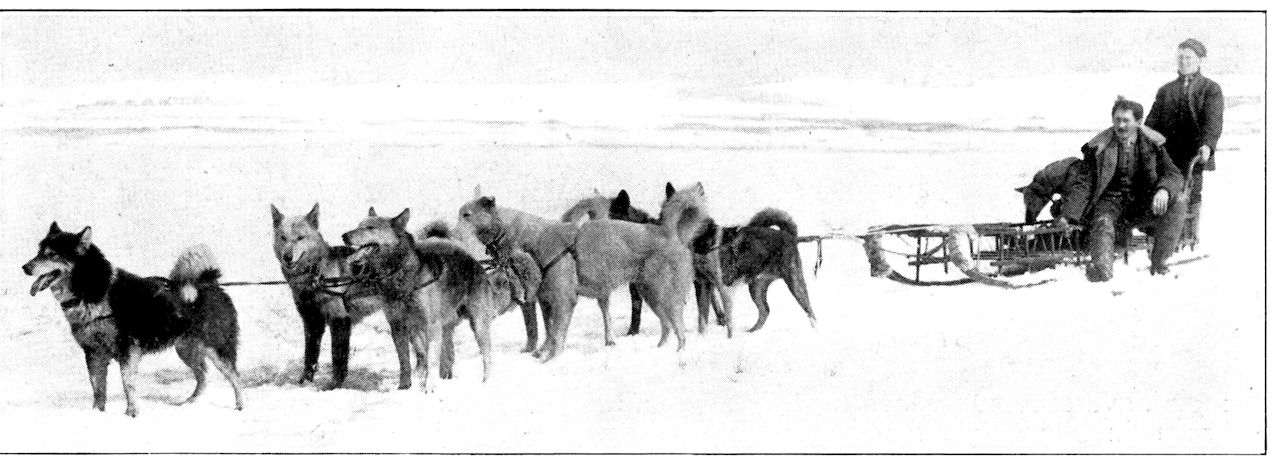
Dogs Sledging in the Icefields of the Northern Latitudes.
FINNISH POM
Color: Foxy-red or yellow-red,
often with a white
patch on chest, feet and tip
of tail.
Height: 18 in.
Weight: 56 lbs.
A cobbily-built dog with
an intrepid and audacious
appearance. The head of
medium size, lean, not too
round, and stop well defined.
Eyes are obliquely
set in the head, giving him
a mild, lively and intelligent
expression, and are
dark or light brown in
color. The ears are set on
high, carried erect, very
mobile, and of moderate
size. Has muscular neck,
chest deep but not too
broad, and body straight,
broad and short. The tail
is thick at the root, profusely
covered with long hair,
and carried curled over the
back. His coat is smooth
on head and forelegs, but long, dense and perfectly straight on the body with a dense
and fluffy undercoat. It should be very abundant around the neck, forming a frill.
91
FINNISH HOUND
Color: Red-brown, shade of yellow on muzzle and legs; white patches permissible.
Height: 23 in.
Weight: 65 lbs.
A proportionately built dog with long, broad muzzle, light brown eyes, deep chest,
muscular loins, rather high on leg in proportion to his body, medium length tail, carried
like a saber. His coat is flat, smooth though rather coarse on the back.
NORWEGIAN ELKHOUND
Color: Grizzle in all
its shade; grizzle-brown,
grizzle-brown
and black. A white
patch on the chest and
feet is permissible. The
undercoat should be
pale brown.
Height: 20 in.
Weight: 60 lbs.
In stature this dog
is rather short, but he
has much strength and
temerity. The head is
carried high, is large
and square, broad between
the ears, with
“stop” well defined.
Eyes should be dark
brown or yellow-brown
and convey an
active and courageous
expression. The ears
are pointed, carried
erect and very mobile.
The body is short, and
the chest broad and
deep. The stern is of
medium length, thick
and heavy and carried
curled over the back.
His coat is short and
flat on the head but
hard, coarse and rather
long on the body.
92
SWEDIAN HOUND
Color: Black—the head, chest and legs being tan or dark yellow. White
patches on the head, chest, feet and tip of tail are permissible. Also tan or dark
yellow with large white patches.
Height: 33 in.
Weight: 65 lbs.
This is a well-built dog with a noble head, which is long and lean. The eyes
are bright and for preference are dark in color. Chest deep and straight and
broad in the back. Stern of medium length, strong at the root, and carried with
a slight curve. His coat is thick, hard, dense and glossy.
NORWEGIAN HOUND
Color: Iron gray patches and spots on blue background; so-called “trout”
color with brown-brindle in patches, tan markings; blue-merle; black with tan or
brown markings; tan with white patches. Iron-gray with tan markings is not
desirable.
Height: 20 in.
Weight: 60 lbs.
This is a strongly built dog rather long in body, and with a grave and intelligent
expression. The head is large, of medium breadth, not domed and with
distinct “stop.” Eyes are brown. Blue-merle dogs have “China” ears. Ears set
on rather high, of medium length and breadth, and hang close to the head. The
chest is broad rather than deep. Stern of medium length, carried rather high.
The coat is thick and glossy.
93
ICELAND DOG
Color: Brownish or gray, sometimes dirty white or dirty yellow, and is frequently
seen with black on the back.
Height: 14 in.
Weight: 45 lbs.
This is a lightly built dog with a “game” temperament. The head is large
in proportion to his body, with broad domed skull, and rather short, snipy
muzzle. The ears are large at the base, pointed and carried erect, though sometimes
semi-erect. He is large and deep in chest, short in body, with bushy tail
carried over the back. His coat is hard, of medium length, flat and shorter on
the head and legs.
DOG OF NOORLAND
Color: All shades of grizzle
with black or darker
tips. The under coat should
be as white as possible. A
yellow undercoat is a fault.
Height: 22 in.
Weight: 65 lbs.
A strong and well-built
dog on rather cobby lines;
the head is rather small,
slightly arched and without
“stop.” Eyes should be
dark brown, bright and intelligent.
Ears small, very
mobile, carried erect and set
high on the head. Chest
deep and broad. The tail is
strong, medium length, and
curled over the back. The
coat is short and thick on
the head, legs and feet, and
more abundant on the body.
94
LAPLAND SHEEPDOG
Color: Black,
rusty black, grizzle
with white feet.
White dogs with
reddish brown
patches and self-colored
yellow-brown
ones are
highly appreciated,
but all white is a
fault.
Height: 20 in.
Weight: 56 lbs.
This dog has a
rather long body,
which is well covered
with thick,
abundant coat. The
skull is broad and
domed; ears erect;
eyes large, brown
and intelligent;
chest narrow and deep. His tail is sometimes docked, but when not is well
coated and curled over the back. The coat on the head is short, but on the body
should be long, thick and dense, and never wavy, and he should have a very dense
undercoat and a distinct frill.
ESQUIMAU
Color: Black or rusty black with white patches, and white chest. Sometimes
brown with gray patches and all white.
Height: 16 in.
Weight: 56 lbs.
This is a medium-sized, well-boned dog, with broad domed skull, rather snipy
muzzle, with well defined “stop.” The ears are broad, pointed and carried erect, and
the insides should be well coated. The eyes are small, dark in color, and of intelligent
expression. The chest is broad rather than deep and the tail long, bushy and carried
over the back. His coat is dense, flat, hard and long, especially on the back, with dense,
woolly undercoat.
95
United States of America Breeds
Boston Terrier
American Bloodhound
Chesapeake
American Foxhound
BOSTON TERRIER
Color: Brindle with even
white markings.
Weight: Not exceeding
27 lbs., divided into three
classes, as follows: A. under
17 lbs.; B. 17 to 22 lbs.;
C. 22 to 27 lbs.
The general appearance
of the Boston Terrier should
be that of a lively, highly
intelligent, smooth-coated,
short headed, compactly
built, short tailed, well
balanced dog. The head
should indicate a high degree
of intelligence, the
body rather short and well
knit, limbs strong and
neatly turned. This dog
should convey an appearance
of determination,
strength and activity, with easy, graceful carriage. Color and even white markings
are given particular consideration in the matter of general appearance.
The skull is square, flat, free from wrinkles, abrupt brow, eyes wide apart, large and
round, and dark in color. The muzzle is short, square, wide and deep, and free from
wrinkles, and the ears should be small and thin. The body is deep with wide chest,
and well sprung ribs. The tail is set on low, straight or screw, short, fine and tapering,
and the coat is short, smooth and of fine texture.
AMERICAN BLOODHOUND
Color: Tan, black and tan. The black and
tan must be well defined; white is not allowed
except a small spot on the breast. Height: 28
in. Weight: 60 lbs.
A dog showing much hound character, but
is smaller and lighter in muzzle and bone than
the English Bloodhound. The skull should be
rounded crossways with the occiput slightly
prominent. The eyes are piercing with hound
expression and hazel in color. The ears should
reach to end of muzzle and as much longer as
possible; they are thin, covered with a soft
silky coat, and low set. The neck should be
clean and of good length without throatiness.
Back broad, strong and short and hind quarters
very strong and muscular. The stern is
not very strong in bone at the root and of medium
length. The coat is not rough, nor so
fine as to be silky, wiry or shaggy.
96
CHESAPEAKE
Color: Nearly resembling wet sedge grass or discolored coat of the Buffalo.
Height: 24 in.
Weight: 65 lbs.
A symmetrical and well built dog with a head somewhat broad, yellow eyes, small
ears placed well upon the head, of lively and intelligent expression. Powerfully built,
with a somewhat coarse coat which has a tendency to waviness over the shoulders.
His skin is protected from the water by a short woolly and dense undercoat.
AMERICAN FOXHOUND
Color: Not material, but usually black and tan and white. Height: Males, 24 in.
Weight: 60 lbs.
The American Foxhound is a strong, clean-limbed dog, built on lighter lines than
his English brother and resembles him in all other essentials.
97
Mexican Breeds
Mexican Hairless
Chihuahua
MEXICAN HAIRLESS
Color: Generally color of elephant’s hide. The skin always feels cold and is
often mottled with flesh-colored, pink or grizzle patches. Weight: From 8 to 20 lbs.
In body properties they somewhat resemble the black and tan “Manchester”
terrier. The “points” of this breed are not sufficiently well known to have enabled
breeders to formulate a standard.
CHIHUAHUA
Color: Reddish black and fawn. Weight: From 1½ to 4 lbs.
This dog is strictly of Mexican origin, though it is also found in the state of Texas.
It is the most diminutive of all breeds. Is remarkably game and exclusive in its
affections. His legs are very slender and toe nails very long and strong, features
which seem to justify the belief that in early days they inhabited the dense forests of
northern Mexico. The head is round with sharp pointed nose, and large erect ears.
This breed is famous as a performing dog, being very intelligent and agile.
98
Japanese Breed
JAPANESE SPANIEL
Color: Black and white, or red and white. The term red includes all shades of
sable, brindle, lemon and orange, but the brighter and clearer the red the better. The
white should be clear white and whatever color the patches are they should be evenly
distributed over the body, cheeks and ears.
This is a lively, highly bred little dog, of dainty, smart appearance, compact carriage,
profuse coat, and very stylish in movement. The head should be large, broad,
and slightly rounded, with strong and wide muzzle, very short from eyes to nose. The
under-jaw should be slightly turned up, but the teeth should not be shown. The
nose should be wide and open, and must be the color of the dog’s markings. The
eyes are large, dark, lustrous, prominent and set wide apart. Ears small, nicely
feathered and set high on the head. The body is very compact and squarely built with
short cobby back. In fact the length of the dog should be about equal to his total
height. The tail is carried in a tight curl over the back and should be profusely
feathered, so as to give the appearance of a beautiful plume.
During the last thirty years the popular taste for the Japanese Spaniel has called
for smaller and smaller specimens, until now the more diminutive they are the more
valuable have they become. In Japan they are affected by the ladies as “sleeve” dogs,
such being almost priceless. It is not now uncommon to find them 2½ lbs. weight,
though fully matured. These small specimens are now also freely bred in England,
the climate of which country appears to suit them very well.
99
Chinese Breeds
Pekingese Spaniel
Happa
Chow-Chow
Pug
Chinese Crested
Little Lion Dog
PEKINGESE
Color: All colors are allowable—red, fawn, black, black and tan, sable, brindle,
white and parti-colors. Those with black masks and “spectacles” around the eyes and
lines to ears are the most appreciated.
Weight: A. 10 to 18 lbs.; B. Under 10 lbs.
This is probably the most fashionable pet dog now in vogue. His character is full
of dignity and consummate pride, and disgust for anything menial or common. His
head is massive, broad, wide and flat between the ears and eyes. The eyes should
be large, dark, prominent, round and lustrous. “Stop” deep. Ears heart-shaped,
drooping and well feathered. Muzzle very short, broad and wrinkled. He has a heavy-fronted
body and light hind quarters, and the great coat on the frill and neck give him
a lion-like appearance. The coat should be long, straight and flat, with dense undercoat
and well feathered on thighs, legs, tail and toes.
HAPPA
The Happa is identical in every respect with the Pekingese Spaniel, except that his
coat is short and smooth.
100
CHOW-CHOW
Colors: Black, red, yellow, blue, white. All self-colors.
Height: 20 in.
Weight:
50 lbs.
A lively, compact, short-bodied dog with well-knit frame, and tail curled well over
the back. The skull is flat and broad, well filled out under the eyes, and broad at the
snout. His tongue should be black, eyes dark and small, though in the blue shades
a lighter colored eye is permissible. The ears are small, pointed and erect, and should
be placed well forward over the eyes, a feature which gives the dog a characteristic
expression or “scowl” peculiar to the breed. The chest is broad and deep; back short,
straight and strong, and his coat in the rough variety should be abundant, dense,
straight, coarse in texture, with a soft woolly undercoat. Smooth-coated Chows are
identically the same as above, except that the coat should be smooth, short and dense.
PUG
Color: Silver fawn, apricot
fawn, black.
Height: 12 in.
Weight: 17 lbs.
This is a square and cobby
dog, short in body, and wide
in chest. His compactness
of form and hardness of developed
muscle are his chief
characteristics. The head is
large, massive and round,
muzzle short, blunt and
square, and he should have
large and deep wrinkles. The
eyes are very large, dark,
bold and prominent, with a
soft and solicitous expression,
and when excited be
full of “fire.” The ears are
thin, small and soft and of
two varieties as regards carriage—“rose”
and “button.” The tail is curled as tightly as possible over the hip; a
double curl is considered perfection. His coat is fine, smooth, soft, short and glossy,
neither too hard nor too woolly.
101
CHINESE CRESTED DOG
Height: 12 in.
Weight: 20 lbs.
This is a hairless breed, except that he has a silky top-knot or crest, and some
feathering or tuft at the root of the tail, which feature is considered very typical of
the breed. It is difficult to assign its origin, but they are found freely in the South and
Central American States, Mexico, South Africa and China. The ears should be carried
erect and are never cut. The conformation of the body is like that of the black and tan
terrier, but the head is shorter and the skull more rounded. The skin always feels
cold and is of the color of the hide of an elephant. Some are mottled with flesh-colored patches, and sometimes the skin is of a pink color with grizzle patches.
LITTLE LION DOG
Color: All colors, self-colored or parti-colors. The most preferable being the
self-colored white, black and lemon.
Height: 14 in.
Weight: 9 lbs.
This is a small ladies’ pet dog, very active and intelligent, generally with one-third
of his body clipped or shaved, which gives him the appearance of a lion in miniature.
The head is short and broad; eyes large, round and intelligent, and dark in color, and
his well feathered ears are long and hanging. The tail is of medium length, is clipped at
the root, and well feathered at the tip. The coat is long and wavy, but not curly.
102
Various Greyhounds
Balearic (Spain)
Phu-Quoc (Siam)
Persian
Portuguese
Arabian
In addition to the above named varieties of the Greyhound, there are others known
as Greyhounds of Crimea, of Caucasus, of Circassia, of Tartary, of Kurdistan, and of
Anatoly. None of these, however, have any adopted “points,” but are rather the result
of crossings between the Borzoi and the different Asiatic greyhounds which are portrayed
in other parts of this work.
As a general rule these dogs are used for hunting various kinds of fleet-footed
game, sometimes in the interest of sport, but more frequently in the protection of the
homestead against wolves and other kinds of wild beasts.
BALEARIC GREYHOUND
Color: Red fawn or fawn with white patches.
Height: 25 in.
Weight: 66 lbs.
This is a lean-looking dog and by no means elegant. The skull is slightly domed,
narrow and long, and the jaws are long and powerful. His almond-shaped, brown
eyes convey a sour expression. The ears are pointed, erect, set on high, turned outwards,
and very movable. The head is lean and straight, neck straight and rather short,
with short and powerful loins. The coat is short, hard and fairly long on the back, neck
and tail.
103
PHU-QUOC GREYHOUND
Color: Reddish fawn with black muzzle and with dark strip down the back.
Height: 21 in.
Weight: 40 lbs.
This is a heavy kind of greyhound with a long, slightly domed skull, broad muzzle,
jaw is long and powerful, lips and tongue black and with reddish eyes giving him a
savage expression. The ears are carried erect, shell shaped and somewhat pointed.
He is coarse in body, very long and flexible in neck, with broad and strong loins.
The tail is short, very movable and carried curled over the back. The coat on the body
and legs is very short and dense, and this dog is peculiar and different from any other
kind in that the hair on the back grows the wrong way, and is much longer and harder
there than on the rest of his body.
PORTUGUESE GREYHOUND
Color: Reddish-roe, dark yellow, mouse grey, or black, with small white patch
only on the chest.
Height: 29 in.
Weight About 56 lbs.
A muscular and well-built dog, but rather coarse for a greyhound. The head is
narrow and pointed, jaws long, strong and powerful, and his hazel-brown eyes convey
a lively expression. The ears are large, carried erect, sometimes semi-erect, pointed
and set on not too high. The back is long and slightly arched, with muscular and
rather coarse body, tail long and fine, carried upwards in a slight curve. Coat is
smooth and in others wire-haired or broken.
104
PERSIAN GREYHOUND
Color: Black, various
shades of fawn and
sometimes a dirty white.
Height: 28 in.
Weight: 70 lbs.
This is a rather big
dog, but delicate and elegant
in outline. His
head is fine, light, lean
and bony, with a slightly
domed skull. The eyes
are mild, intelligent and
dark brown. The ears
hang close to the head,
are long and well feathered
with wavy hair.
The neck is arched, elegant
and slender. Chest
deep and back straight, long and strong. He is moderately long in tail, which is carried
hanging like a sabre. The coat is smooth and very soft, but is much longer on the
ears and tail, where it is silky and wavy.
ARABIAN GREYHOUND
Color: Light yellow sand color with black mask and black eyelids.
Height: 28 in.
Weight: 65 lbs.
This is a dog of lean, elegant and alert appearance. He is higher on the leg and
shorter in the body than the English Greyhound. He is not as long in the head but
more domed in the skull than the English dog, and seen in profile the head has some
resemblance to that of the Jackal. The eyes are large, dark amber in color, and intelligent
in expression. He is rather large in ears, which are folded well down on the
neck. He is strong and muscular in neck with hind quarters well developed. The tail
is fairly long, fine and carried curved downwards. The coat is smooth, dense and fine.
105
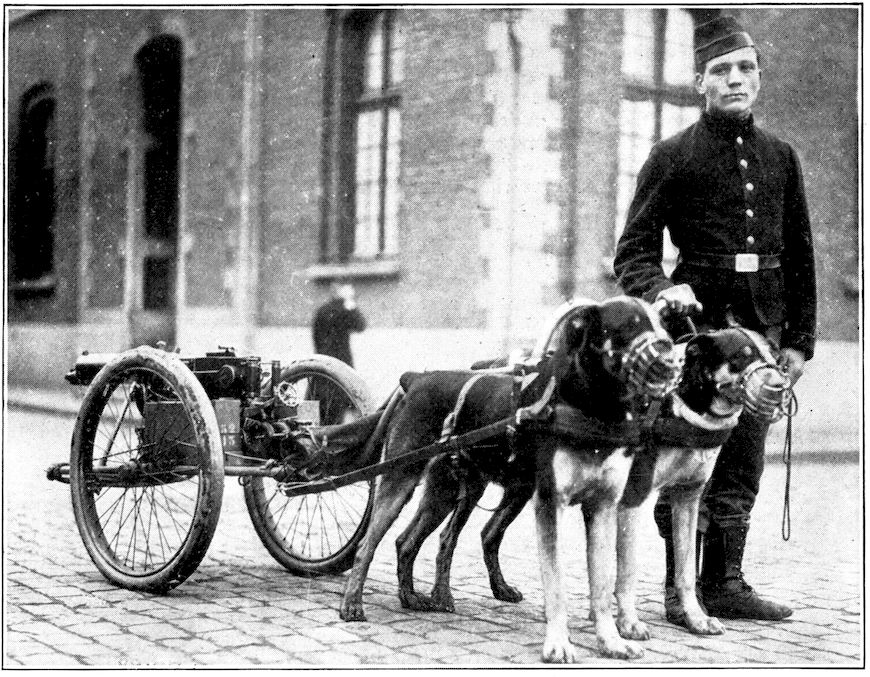
Belgian Dogs trained to draw quick-firing guns
Dogs in Warfare
“Cry Havoc! and let slip the dogs of war”
However trite may be the saying that history repeats itself, it is unquestionably
apposite in regard to the employment of dogs in warfare. Great hounds were
used to guard the camps of Rome. In even more primitive times they were
formidable adversaries in hand-to-hand conflicts, while to come to more modern days
Frederick the Great and Napoleon—two of the greatest soldiers the world has ever
seen—held a very high opinion of the value of canine sentries. Napoleon, in fact,
is said to have urged Marmont to fasten dogs to stakes around the circuit of the walls
of Alexandria to keep guard.
Recent wars have served to emphasize the advantages which may be gained by the
use of the peculiar qualities of scent and hearing which dogs possess. Their sense
of scent we human beings lack almost entirely, while they not only hear audible things
more quickly than we do, but also hear things which are quite inaudible to us. Is it
to be wondered at, therefore, that military experts have not been slow to recognize
such potential properties?
What They Have Done
The present-day tendency consequently is to bring dogs more and more into the
foreground in warfare. During the Russo-Japanese War the whole of the Manchurian
Railway line was guarded by dogs, who gave the alarm, and on several occasions prevented
the Japanese crossing the line. Those which were sent out from England with
the Abor Expedition, N. W. Frontier, more than once prevented the sentries from
being rushed during night duty, owing to their keener sense of hearing. In the Tripoli
campaign their value was frequently demonstrated, while the dogs belonging to Major
Richardson, the famous English trainer of war dogs, rendered yeoman service to the
Bulgarians at the siege of Adrianople, where they were able to give warning of attempted
sorties by the Turks. Some of Major Richardson’s well-trained animals were
also used in the Spanish trenches in Morocco, being responsible for the finding of
hundreds of wounded men who would otherwise have been left to their fate.
106
Used by Great Armies
At the present moment most of the modern armies employ dogs, although naturally
opinions differ as to the most suitable type of dog. The Russians have adopted the
Caucasian dog; Austria, Dalmatians; Turkey, Asiatic Sheepdogs; France and Belgium,
the smugglers’ dogs of the Belgium frontier; while Germany uses Collies, Pointers and
Airedales. So far the British Army has ignored the value of trained dogs, though the
Admiralty some five years ago instituted a scheme for the use of dogs in naval stations
ashore. Major Richardson believes that the only really useful dogs are the Airedale,
Sheepdog, and Bloodhound.
What part dogs will play in the present great conflict time only will show, but that
it will probably be a large one may be gathered from the fact that the German army
alone possesses over 6,000.
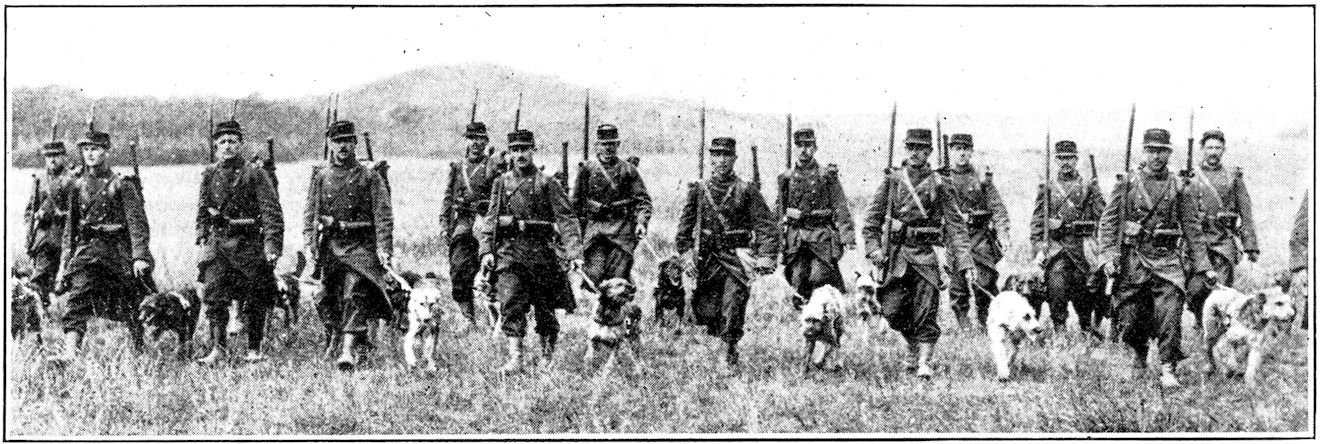
The importance of determining some efficient and economical form of traction for
Infantry machine guns had been under consideration in Belgium before the war. Up
till recently, pack-horse transport had been considered the most satisfactory system.
Exhaustive trials between this method and that of wheel traction by a pair of dogs of
a breed known in that country as the Belgian Mastiff, have, however, resulted in favour
of the latter, and the final adoption of this mode of transport for the Machine Gun
Units of the Belgium Army. This form of traction is not novel in Belgium in civil
life. According to the Journal of the Royal Artillery the breeding of dogs for light
draught purposes has long been in vogue in that country, for the purpose of conveying
farm produce from the country into the towns. Dog traction is employed by the
country people—milkmen, bakers, greengrocers, and many artisans with light carts—in conducting their trade and business. There are reckoned to be 50,000 dogs available
for this purpose in Belgium, of which 10,000 are in Brussels alone. They are found
to be admirably suited for the purpose. Their bodies are thick-set, loins strong, and
they have deep chests, and muscular limbs. A dog of 110 lbs. weight is capable of
drawing on a good road a load of 880 lbs., and a horse 1,100 to 1,300 lbs. (or ten times
and upwards the weight of one of these dogs), cannot draw much more than the
equivalent increase of his weight. With an average load of 660 lbs. behind the team on
good roads, a dog can keep up for long distances a pace of 4 or 5 miles an hour; for
several hundred yards he can attain a speed of from 6 to 7 miles an hour.
The price of a pack-horse is not less than £40, and his daily forage may be reckoned
to cost about ¼–½ a day, without taking into consideration the construction and upkeep
of his stable. The pack-saddle costs about £15, whereas dog harness can be purchased
for the pair of dogs for something less than £4. A male dog costs £4, and his
food per day amounts to about 4½d. Finally, the small carriage for the machine gun
or ammunition cart costs about £8, and the net cost for construction and upkeep of
kennels is something small. Moreover, as the dog does not require shoes, lameness
is rare, which we well know from the enormous distances he can go when hunting.
He is intelligent and docile, and puts all his heart into serving his master faithfully
under all circumstances. The length of his military service may be taken at from
eight to nine years. The discipline of the trained dog is such that an untrained dog,
harnessed with him, would be compelled to submit to all the movements of the former.
On the march, and under fire, one can rely on his working till absolutely exhausted
or mortally wounded. These are the qualities which can be developed in the breeding
kennel, and in his subsequent training. The four wheels of the little gun carriage
107are made of tubes of steel, light, low and stable, and fitted with pneumatic tires. The
carriage complete does not weigh more than 220 lbs., and is easily dragged by the
team of two dogs, or eventually carried by the four members of the detachment. Its
height and breadth are each about 31 inches. The trials were carried out to test the
following: Visibility, mobility on roads and across country, overcoming obstacles,
and resistance to fatigue. They lasted three weeks in bad weather, during which a
distance of 250 miles was covered. The six pack-horses were wither-galled, and had
to be successively replaced but not so the dogs. On the march across country,
or commons, of from 1½ to 3 miles, where the ground presented obstacles or was
broken up, the dogs gained without doubt in mobility and speed over the horses,
especially when ditches, hedges and low walls had to be negotiated. The teams
crossed with ease ploughed land and crops, copses and banks. Assisted by the detachments
they crossed over deep ditches and steep slopes. The horses showed signs of
fatigue long before the dogs. The latter were afraid of nothing, and followed perfectly
the member of the detachment charged with leading each team. They lay down or
resumed the order of march on a signal, without even barking, and in perfect order.
The smallest fold in the ground concealed the teams, and at 300 yards distance,
nothing of them could be distinguished. Coming into or out of action was more
rapidly effected than in the case of the pack-horses.
The regiments to which they were attached had three sections, each of 2 guns and
4 ammunition carts, requiring 36 dogs for the 18 vehicles.
In action the dogs gave every satisfaction, and whilst halted in positions of
readiness for often considerable periods, they lay down quietly waiting in their harness.
In coming into action the Nos. 1 had sometimes to creep on in front, accompanied
by the team driver of each gun, in order to choose their positions in actions. At a
signal, the teams moved quickly up into the emplacements when, the detachments having
brought the guns into action, the empty carriages with their drivers proceeded to
the rear and rejoined the ammunition carts under cover.
The trials indeed were so successful that orders were issued to erect, for all
infantry regiments, kennels for a dozen dogs per unit, and at Beverloo a remount and
training establishment for these dogs was to be formed.
It is even reported in the course of the campaign, in Belgium that the war dogs
of the machine guns took a still more active part by “going for” German soldiery.
108
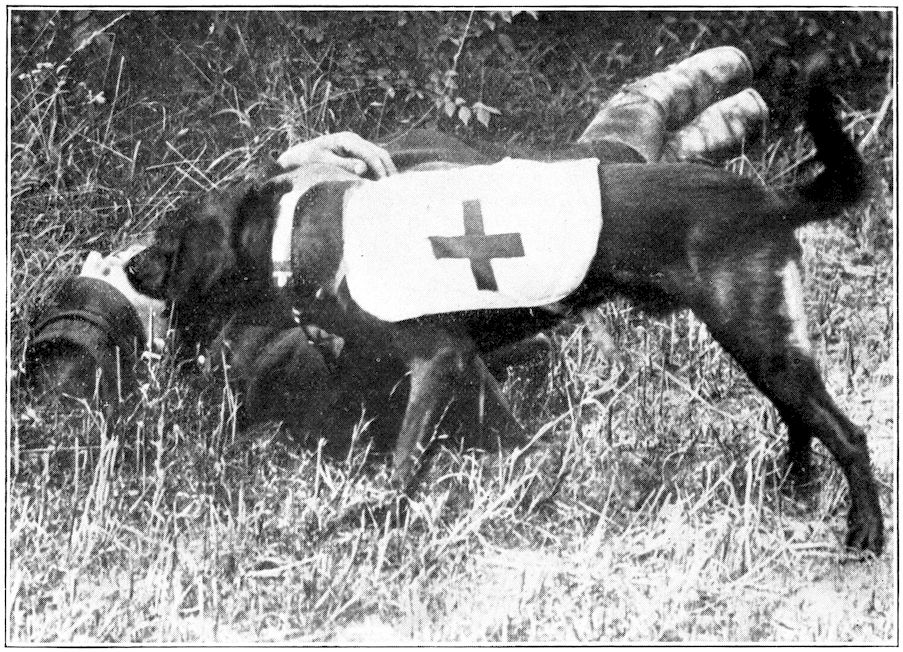
The Ambulance Dog at Work
Ambulance Dogs
Not until the history of the present European war comes to be written will it be
known just how great have been the services of the dog for ambulance work. Shortly
after the outbreak of this, the world’s greatest war, an Association in Germany,
formed about the year 1893, known as the Ambulance Dogs’ Association, greatly
increased its activities.
It has been found by experience that the best breeds for ambulance work are
collies, retrievers, bloodhounds, Airedale terriers, German shepherd dogs and Dobermann
Pinschers. It is absolutely essential that ambulance dogs should be extremely
wiry and hardy, and capable of great hardship and endurance, otherwise they are of
little use.
The manner in which ambulance, dogs are employed is to help the Red Cross men
and doctors to search for wounded within a given area on the battlefield. A dog’s
sense of scent and acute hearing enable him frequently to detect the sound of the
breathing of a wounded man when inaudible to the human ear. Moreover, a puff of
wind often suffices to carry to the dog’s nose the scent of a man lying possibly unconscious
in some concealed place.
Fields of battle nowadays are widely extended, and soldiers have to take advantage
of every possible bit of natural cover. The instinct of the wounded is to use their last
strength in seeking protection from artillery fire, cavalry charges, the wheels of guns,
and the other horrors to which they are exposed. They crawl away into the most
hidden, safest places. The collection of the wounded is usually at night. This accounts
for the large numbers that after each battle are reported as “missing.” In some
instances the missing have been more than half as many as the known total of killed
and wounded.
They are differently equipped in the armies of different countries. The Germans
provide their ambulance dogs with a saddle with pockets in which are bandages and
dressings, while around the neck is a wooden flask of stimulant. The Italians and
French put the flask in a pocket of the saddle. British experts consider bandages and
stimulant unnecessary, as every man has to carry his own first-aid dressing, and the
extra weight hinders the dog’s action. In the English army the dogs wear a very
light saddle with the Geneva cross on each side, and a loud bell hangs from a leather
collar. The Russians provide their ambulance dogs with small lanterns and attach
the bells elsewhere on the collar.
109In some of the European armies the ambulance dog is trained to return to his
master and guide him to the wounded man; in others he is taught to bark and give
the news of his discovery in that way. Still another method is to have the dog on a
long leash and thus lead the searcher in the right direction.
The Japanese also use scouting dogs in this way, and so do many of the European
armies. They are trained to growl at any sudden surprise, their natural temptation
to bark being thwarted by muzzling with a leather strap. In sentry duty the muzzle
is moved. With an upwind blowing these sentry dogs are able to detect the approach
of men and horses an extraordinary distance away.
On the whole, it is found that the speediest method is for the dog to stay beside
his “quarry” when found, and bark until the ambulance arrives, but there is the
drawback that if several dogs are being employed in a restricted area and several bark
simultaneously, it is not always easy to locate whence the barking comes.
The Germans, unlike the French, do not permit their dogs to wear even a collar,
as it is thought that this may hinder him in pushing his way through the thicket
or hedges. It has often happened that the wounded are found adjacent to some hedge
or other cover not easy to search by human aid alone. On the other hand, the French
fasten water bottles around the neck of the dog and train him to search for wounded,
who, if still conscious, eagerly grasps the welcome and ofttimes life-saving beverage.
Constant practice in this, as in other kinds of dog training, is an absolute essential.
As the war proceeds more and more use will be made of the special functions and
gifts of dogs, a resumé of which, when peace again reigns, will surely prove one of the
most interesting phases of the hostilities now taking place in Europe.
In the annals of the French army Mustache is still a celebrity. Mustache was one
of the war dogs in the Italian campaign when Napoleon was first consul. He saved
the French army from a night surprise and annihilation. Later he tracked and
captured a spy who had secured valuable information. But this dog’s crowning achievement
was at the battle of Austerlitz.
The standard bearer of the regiment had just fallen dead. Mustache’s teeth and
an Austrian soldier’s hands grasped the tattered, bloodstained banner simultaneously.
Mustache flew at his enemy’s throat and bore him down. Then, seizing the flag, he
carried it back to the regiment. Napoleon gave Mustache the highest decoration for
valor. He met a soldier’s death not long afterward, racing forward beside the flag,
leading the regiment in a furious charge.
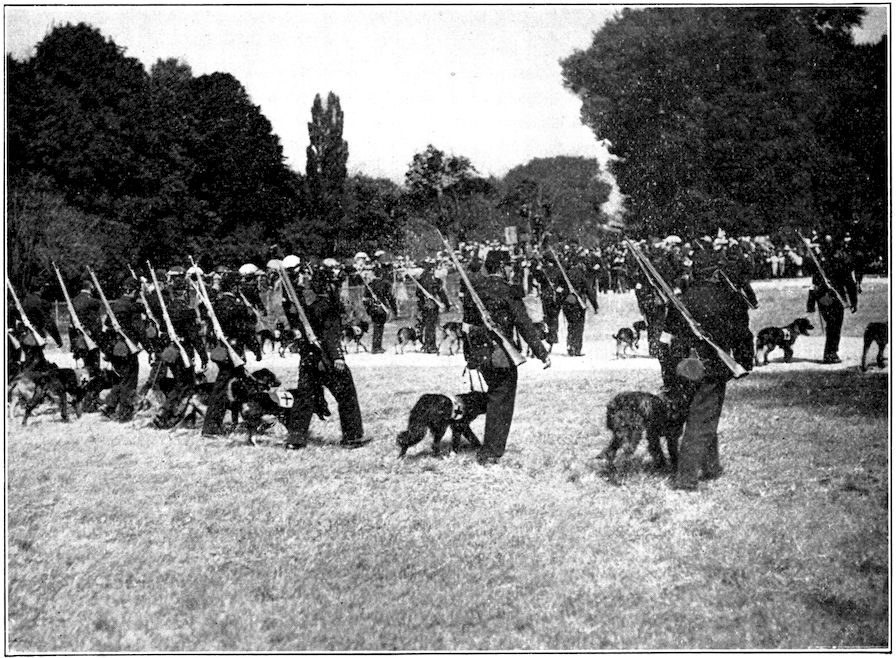
The Canine Ambulance Division of the French Army Off to the Front.
110
British Sheep Dogs
Public trials of working sheep dogs were first introduced by Mr. Lloyd Price,
of Rhiwlas, Bala, North Wales, in 1873. The object for which they were
originally instituted was to promote a better training of sheep dogs amongst
the Welsh farmers.
Strange as it may seem, though the mountainous districts of Wales have been
devoted from time immemorial almost exclusively to sheep rearing, the old-time
farmers took little trouble in the training of dogs to collect and work their sheep. In
fact, previous to the inauguration of the competitions, the duties of the Welsh sheep
dog were confined principally to the task of hunting and chasing sheep back again up
the mountains whenever they strayed down to graze upon the more fertile pastures in
the valley which the farmers reserved for their cattle. This was well enough so long as
the sheep were roaming at will among their native haunts and feeding grounds, but
whenever it was necessary for the farmer to gather his flock together the trouble
began. The hardy little animals are wild and timid creatures that are not easily
induced to leave their mountain home; moreover, when at liberty they are scattered
in small lots over immense tracts of country.
To gather sheep from the mountains with the aid of dogs alone was in those days,
with few exceptions, an utter impossibility, consequently as many as ten or twelve
men had to be employed to scour the mountains, and even then many stragglers were
inevitably left behind. Nowadays all that is changed, one man can with the assistance
of a good sheep dog do the same work much more thoroughly and satisfactorily,
and without hustling or distressing the sheep themselves.
The systematic training of sheep dogs has indeed accomplished for the sheep-rearing
hill farmer almost as much in the way of labor-saving as the adoption of agricultural
machinery has done for the farmer who cultivates the lowlands.
The sagacity displayed by a really good sheepdog gathering sheep upon a mountain
side, often a mile or more away from his master, must be seen to be believed.
When the farmer goes out to gather his flock for shearing or other purposes, far away
upon the bleak hillside, little clusters of white spots are all that are to be seen. The
farmer takes up a position upon some point of vantage, gives a word or whistle or
instruction to his four-footed companion, and the dog bounds away in response till he
seems no more than a tiny moving speck occasionally visible in the distance. Sharp
and shrill the farmer’s whistle pierces the keen mountain air, and ever and anon, as
though by magic, the little white dots begin to move and converge towards a common
center. In response to one signal the sound of the dog’s answering bark can be heard;
another signal and he drops as though shot, and is as silent as the grave. In the dim
distance a few small dots can be seen; they are some stragglers that have been overlooked;
a whistle galvanizes them also into motion, but in the wrong direction; a
moment later and they are merged into one motionless white blot upon the dark
mountain side. The blot moves again, not quite in the desired direction; whistle succeeds
whistle in quick succession, and at each one the little moving blot alters its
course, zig-zagging this way and that, until it finally becomes merged in the large
white patch that marks the remainder of the flock, which keeps on the move, drawing
nearer and nearer until the sheep take shape and can be seen coming down steadily
with the dog dodging in their rear, till they are rounded up and brought to a standstill
within reach of the farmer’s stick. Such a sight is common today upon the Welsh
mountain or in the Scottish Highlands, though it is not given to every man to acquire
perfect mastery over his animal; so much depends upon both man and dog. A dog
belonging to a man who takes no interest, or has not the knack and patience necessary
to teach him is worse than useless. The dog often reflects to a great extent his
master’s character. An excitable, hasty-tempered man generally has a headstrong,
willful dog that is hard to control. Some dogs, born of a long line of carefully-trained
sheep dogs, take to working sheep as ducks do to water; a savage, uncontrollable
brute, whose only ambition seems to be to worry and abuse the sheep, and
there are hundreds of such animals, is simply a hindrance and a source of trouble to
its owner, as anyone who is acquainted with sheep and their ways knows full well.
The sheep dog proper must above all things be gentle and patient with its often
cantankerous charges, yet firm and masterful enough to inspire the timid sheep with
sufficient sense of fear to cause them to move away in another direction at its appearance
and approach without creating such a panic-stricken stampede. Such strains of
dogs are scarce and highly prized by their owners, though from the show bench
fancier’s point of view their often nondescript exterior cannot be classified into those
niceties of shape and color in which the judge of show dogs delight. Many a sheep
111dog that would not attract a second glance from a professional dog judge has won
enough in money prizes to turn the whole fraternity green with envy.
Such a dog is, for instance, Mr. J. Moses’ “Old Jem,” not beautiful to look at,
but of sterling quality, which has won for his master over $1,000 in cash quite irrespective
of the value of himself and his progeny.
Sheepdog trials are now held in all parts of the British Empire, Canada, New
Zealand, Australia; in fact, wherever sheep are reared in any quantity.
Perhaps one of the most favorable opportunities the general public has of watching
one of these absorbingly interesting spectacles is during the well-known agricultural
show held each year in Lord Rothchild’s beautiful park at Tring, England. A
description of an actual trial witnessed by the writer in these ideal surroundings will
give an idea of the exciting nature of the tests and high standard of perfection to
which the numerous entries have to be trained before they can compete with the
remotest chance of success.
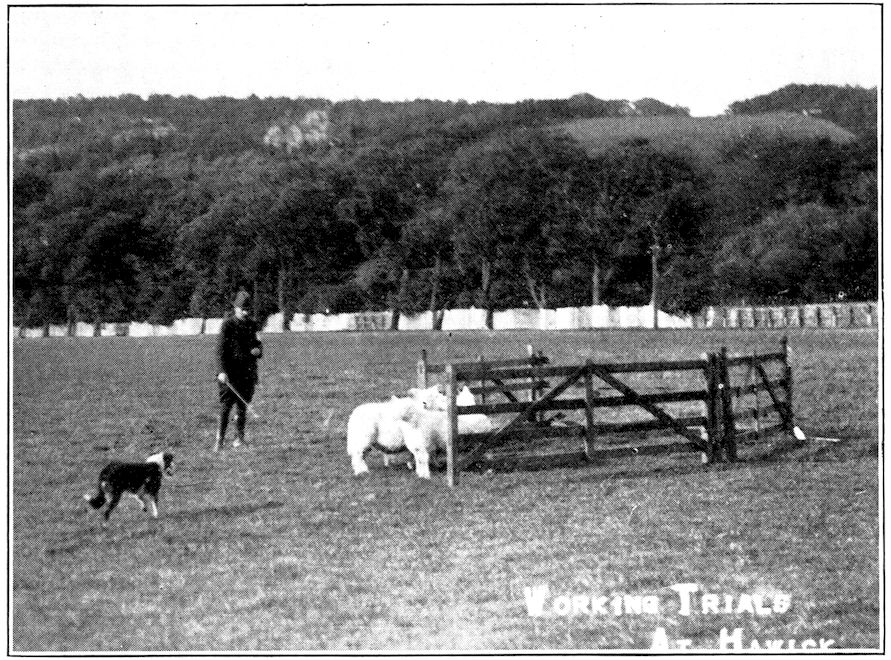
When “Penning,” the Man Is Allowed to Assist the Dog.
A portion of the vast park, some three-quarters of a mile long and about half as
wide, remote from the show ground where the exhibits are localized, is divided off by
a rope fence; this constitutes the course, of which thousands can obtain a full and
uninterrupted view. The competitor takes up his stand near the center with his dog
or dogs, for there are prizes for two dogs working together as well as for single dog
trials. The number of sheep that have to be driven round the course is three only;
this small number greatly increases the difficulties of the subsequent maneuvers. Fresh
sheep are provided for each competitor, usually those of the wild, hardy mountain
variety.
At a given signal the animals are released from a cart that is out of sight in a
clump of trees on a hill some half a mile distant. The dog must then locate the sheep,
the master remaining in the center of the course guiding and directing him by voice or
whistle as he chooses. The obstacles consist of, first, what is termed “a false fence”;
that is to say, two short lines of hurdles so placed as to leave a wide gap through
which the dog must drive the sheep; should he allow them to run round the end of
one of the lines instead of through the center, the sheep must be driven back and
another attempt made. The second obstacle is a flag-post, round which the sheep
must be driven in a circle before being conducted through a V-shaped gap made with
two hurdles.
If the dog has negotiated these obstacles successfully he will have brought his
charges to within about a hundred yards of his master. Having been successful in
bringing the sheep so far, a very different task awaits both dog and master at the
112“Maltese Cross.” At this, and the final “penning up” of the sheep, the master is permitted
by the rules of the trials, to assist his dog personally. The “Maltese Cross”
consists of two lanes intersecting at right angles, each passage being only just sufficiently
wide to permit the sheep to pass in single file. It must not be imagined that
the wild mountain sheep, terrified at their unwonted surroundings and the presence of
a strange dog, submit tamely to being thus driven past alternative openings without
strenuous efforts to break away and bolt in whichever direction their erratic fancy
dictates. The master must be on the alert for these attempts, and be quick and
decisive in giving his dog instruction as to how to frustrate these sudden rushes. It
is upon the promptitude and correctness with which the dog responds to the signals
that success or failure depends. It is at the cross that the innate perversity of the
sheep’s nature asserts itself, with the result that the first animal very frequently turns
down one or other of the cross lanes instead of going straight through. When this
occurs the other two naturally follow, and all three must be induced to negotiate the
passage again. Having driven the sheep through straight in one direction, the dog
and his master must then bring them back and run them through the other lane at
right angles to the original course. Finally, the even more difficult task of “penning
up” awaits the competitors. The final pen is formed of four hurdles with a space
just sufficient to admit one sheep at a time left open. The slightest over-anxiety on the
part of the dog or his master is fatal at this stage of the trial. The difficulty of
exercising the necessary self-restraint will be the more readily realized when one
considers that it is often a matter of working against time, as should a dog have been
a little slow or unfortunate in his previous maneuvers he is extremely liable to exceed
the time limit set for the competition, and thus lose the points awarded for penning.
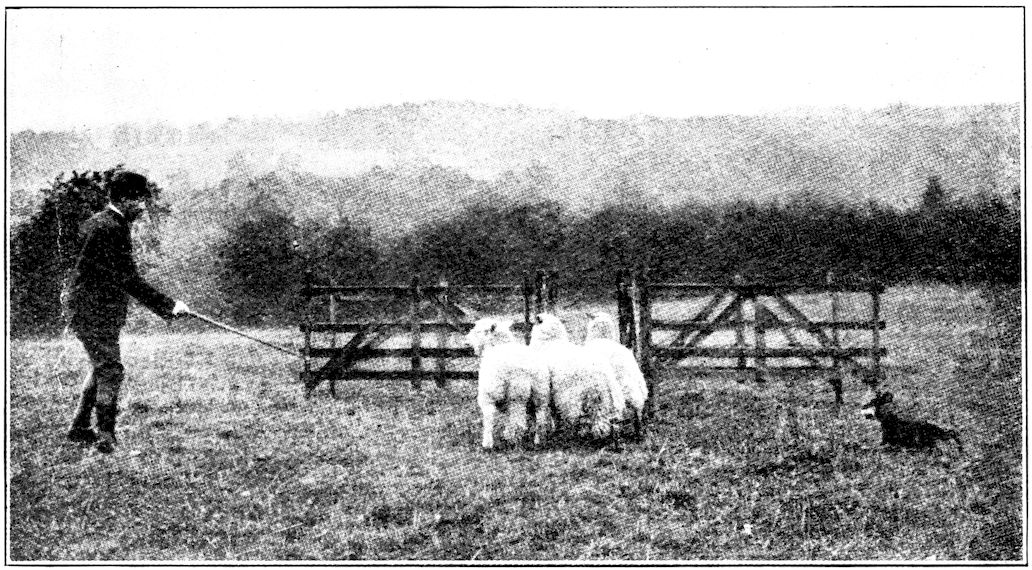
The Sheep Being Driven Through the Maltese Cross.
It cannot be laid down as an infallible rule that the best dog for actual field work
will always win a competition, so much relies on the master and other incidental
details which affect the judge’s decision.
The most important consideration from the competitor’s point of view is the
individuality of the three sheep which the dog is called upon to work. Some, when
released, are found to be extremely wild, and cause the dog a lot of trouble by frantic
efforts to escape. Others often adopt an aggressive attitude towards the dog, and
persist in facing round and charging at him instead of allowing themselves to be
driven. This type of sheep is most exasperating, both to dog and man. Again, many
dogs, more especially young ones, are excitable by the applause of the spectators.
To see sheep dogs work to perfection one should watch them, as the writer has
been privileged to do, being practiced and trained upon their own home ground, where
one can realize more fully the practical utility of a well-trained dog and the amount
of labor which he saves his owner. The north of England and some parts of Scotland
have always been noted for good dogs, the original strain being a cross between the
113smooth collie and the old Scotch bearded collie. These animals are naturally hardy,
fleet-footed and sagacious, and for real skill in working sheep will hold their own
against any dogs in the world.
One of the most prominent and successful trainers is Mr. J. Moses, of Oswestry,
who is manager of Lord Harlech’s Home Farm at Brogyntyn, and the accompanying
photographs show some of his famous dogs at work on the farm. Mr. Moses is a great
advocate of teaching a dog to work entirely by whistle, instead of giving commands in
ordinary language. The great advantage of this system is that the dog can hear and
recognize the signals at a much greater distance, and when once accustomed to them
is much less liable to misinterpret his master’s meaning than is the case when the
command is given vocally. Many people seem to find a difficulty in training their dogs
to work by whistle, but if the system is started at the commencement of a young dog’s
training he will soon learn to appreciate the distinctions of sounds and obey them
more readily.
In order to demonstrate the perfect command that my friend had over the actions
of his dog, even at a great distance, for it must have been over three-quarters of a
mile, Mr. Moses made “Trim” execute a series of maneuvers, instructing the dog to
drive the sheep round a telegraph post, in and out of two trees, take them back again
to the original spot in which they were first located, and finally drive them straight
up to within reach of his master’s stick. Each and every one of these evolutions was
carried out with such skill, intelligence and obedience on the part of the dog that it
seemed hard at first to realize that “Trim” was actually obeying implicitly his master’s
command, and not just driving the sheep about for his own pleasure.
The maneuvering of sheep at a distance is a feature in sheepdog trials for which
more points than are now granted should be given, as it demonstrates unmistakably
the excellence of the training and also the actual utility of a dog for field work. Many
dogs are under perfect control as long as they are within reach of their master’s stick,
but cannot be relied upon implicitly when far away; such a dog is obviously improperly
trained.
Patience and firmness are the keynotes of success in training a sheep dog, though
everything relies, in the first instance, upon the suitability of the dog taken in hand, for
good sheep dogs are born as well as made, and a well-bred puppy will have a natural
instinct for the work, which will reveal itself at an early age.
In the next chapter will be found some useful hints on the training of the working
sheep dog.
Training the Working Shepherd Dog
Certain technical terms are used in the following article which it may be well
to explain for the benefit of those not familiar with the shepherd’s vocabulary.
1. The “run out” means that the dog is sent away to gather the sheep.
“Running out” is the act of going for the sheep.
2. “Hauling” in its widest sense means the dog going out for his sheep, taking
command of them and bringing them to the shepherd. In the narrower sense, however,
the term is confined to the bringing in of the sheep by the dog.
3. “Shedding” means the dividing of a lot of sheep. Supposing, for example, a
shepherd wishes to separate lambs from their mothers, the act of doing so by the
dog is called “shedding.”
4. “Wearing” means keeping a sheep from going in the wrong direction. Supposing,
for example, a sheep bolts up a wrong road, the dog is sent to turn it back.
Turning back is the “wearing.”
5. A “cut” simply refers to a number of sheep. Supposing, for example, a shepherd
herds five or six hundred sheep and goes for forty or fifty to take them to the
market. The number so taken is called a “cut.”
6. “Flying off” means where the dog yields to the sheep instead of facing up to
them. In “wearing” this is best seen. A dog which will not come in close to stubborn
sheep, yields to them when pressed, is said to “fly off.”
7. A “soft-tempered” dog is one which shows little grit when pressed by wild or
stubborn sheep. It won’t stand up to them and shows little fight, and generally
evidence of a soft disposition. The contrary expression is “hard tempered,” which
means a dog that will not yield to wild or stubborn sheep, but will face up to them,
and as a last resort will even grip and show his teeth and other signs of temper and
determination.
Believing that some instruction as to the methods employed in the training of the
working collie will be helpful to those who desire to bring out the best gifts with
114which Nature has endowed this king of all utility dogs, we append a few suggestions
from the curriculum of Mr. T. P. Brown, of Oxton, Berwickshire, Scotland, than
whom no one is more qualified to speak on this important subject.
In the first place, it must be acknowledged that unless the master has himself
studied the subject with the utmost care and keen perception, success in teaching a
dog to work sheep will not fall to his lot. Many a good dog has been spoiled in the
hands of an unthinking and unsympathetic would-be trainer, and, conversely, many a
vicious, timid, or “wild” dog has been converted by the master hand into a brainy,
intelligent servant.
With few exceptions, any collie can be taught to work sheep; therefore, as a
general proposition, it is the man who makes or mars the dog’s natural bent.
To achieve the greatest measure of success the sooner one starts the elementary
first lessons the better. The puppy should be taken in hand when three or four
months old.
The very first step is to teach him to run up to you. Use a thin, low whistle with
the lips, and pat and make a fuss of him when he comes up.
The second lesson is to get him to go down quickly. This is best done by a hiss.
If he does not put his head down, press it gently down with your hand. This has
generally to be repeated a good many times before he does it nicely. Some pups go
down of their own accord when they see the sheep. This is no real drawback, but as
a rule they require a little more training to go down when commanded, instead of
waiting till they get to a place where they want to go down.
After the pup has learned to go down nicely, put him down and walk away, and
see if he will lie still until you give him the whistle to come up, and don’t rest satisfied
until he does so with alacrity.
When he has learned to do this to please you, begin to stop him half-way up, and
always see that he puts his head in the proper position. He should be proficient in
this before he is ever taken to the sheep. No pup should ever be taken to the sheep
until he is under complete control in the run up and lay down. To introduce him to
sheep until he has thoroughly mastered these simple but highly-important commands
has a tendency to spoil him and get him into bad habits. No matter how fast he is
running, if you give him the hiss to stop he should drop like a stone; and, on the
other hand, he should obey the command to come on quickly and without the least
hesitation, and on no account should he rise until told to do so. To fall and rise
when commanded, and only when commanded, is the most important point in the
training of a collie. Having progressed so far, the pup should now be taken to
the sheep.
If he is off a good working strain, he will either circle away round his “quarry”
or he will “set” and crawl forward.
If he circles round and goes down, and the sheep do not come away, he is apt
to lie still, but if you use the call whistle and bring him a little forward, then drop
him. The sheep will most likely come away, and you must take care that he comes
straight behind them, and not too quickly.
Don’t use the call whistle very long at first, just a little to get him to understand
to start the sheep. Get him used to start either with a sheep or a short whistle.
If in running up to the sheep he does not go right round, you must go up to the
sheep and move them in the direction you want them to go. Then use the whistle,
sound or words by which you want to shift him (some trainers say “Keep wide” or
“Keep wide, away out,” but it is better to use only distinctive whistles).
You should thus keep the sheep moving about, making him move to what spot you
want. Others use a combination of whistles and signs (motions of the arms). This
latter method has its advantages when working at a distance and under certain climatic
conditions.
When the dog has become expert in moving about, teach him to “run out.” Don’t
try him too far away at first, and if possible let him see the sheep.
A perfect run out should be in the form of a good wide circle all the way until he
gets well behind the sheep. Then he should double back behind the sheep when he
sees he has them all rounded up, and he should be allowed to move them a little
before you put him down.
In “haulding” them he should come straight behind the sheep, and not too near
them. If they come steadily, he should be allowed to follow them in. When “haulding”
a few sheep, say five, he should bring them in straight; but with a large number
he should “flank” them from side to side in half-moon circles, as by this means he gets
them forward in better time.
By this time the dog should have learned to go down at a distance from the
shepherd, a distance which is only restricted by the impossibility of hearing the whistle.
115In all these processes one requires four different kinds of whistles—one for the
“call,” one to go out, one to stop and lie down, and one to hauld.
To teach a dog “to shed,” get the sheep to pass quietly between yourself and the
dog several times; the dog during this time must lie down.
Then divide the sheep and give him the call whistle to come in to you, and drop
him when he is in between the two lots. Then go behind one of the lots and press
them on to the dog and get him “to wear” and turn them to you.
Repeat this several times, and in giving the call whistle make sure that he never
rises until commanded, for a dog that moves about as the sheep move will never be a
good “shedder,” as he always mixes the sheep up when you are preparing for a “cut.”
Be sure also that he shifts every time you ask him, and that he turns the sheep in to
you, instead of flying off them.
At this stage in his education the dog should be approaching his complete training.
To teach him to come in front of the sheep, draw him to you by the call whistle.
He will think at first that he is to come in to you, but when you see he is far enough
past the sheep to give him plenty of room to work, give him the whistle to go to the
sheep. He will then turn and face the sheep, and as he does so drop him there. After
being several times repeated he will do this as readily as he has learned to go round
behind the sheep.
The next lesson is to teach him to go from one side to the other, passing between
you and the sheep.
Let him go half round the sheep, then get him to go forward on the sheep from
any point he is stopped, by either driving straight from you or from the left side to
the right side. This feat is most necessary for driving away or for pole work at a trial.
The art of wearing a single sheep has not been touched on, because unless the dog
is naturally gifted with this it is almost impossible to make him proficient at it,
though one can help him a little.
Much depends on the nerve and compelling power of the dog’s eye. Leave him
pretty well to his own resources until he has the sheep stopped before you drop him.
Some pups are naturally born with tendencies to wearing single sheep, including
to run too wide or too near, and, worst of all, stopping before they go round the sheep.
Be guarded to immediately check these faults, and remember that command is the
most important lesson of all.
One hears a great deal about bad-tempered dogs and soft-tempered ones, but it is
not so much a display of temper as nervousness. If a dog keeps his eye on the sheep,
no matter how soft he is in the temper, any capable trainer can make him a good dog,
but the one who won’t keep his eye on the sheep can never become proficient in his
service to his lord and master.
Police Dogs
It is admitted on all hands that the dog is capable of training to do his master’s
bidding in a great many different ways.
Other chapters appear in this work detailing with what purpose he is used as an
aid to the hunter, sportsman, courser, for the drawing of quick-firing guns into the
firing line, for ambulance work, for sentry duty, as an indispensable aid in all Arctic
and Antarctic expeditions, to say nothing of the sport certain breeds give us as racing
and performing dogs.
The purport of this chapter is to indicate with what success he is being trained
as a branch of the police force. Thousands of dogs, mostly of the German and Belgian
sheepdog variety, are at this present time enrolled in the widely scattered police and
other municipal forces of America and other countries.
In the training of dogs for this work a special aptitude on the part of the
“handler” or “guide” is essential. Given a reasonable amount of common sense, unlimited
patience and an understanding of a dog’s nature, success is assured in a large
majority of cases.
The police dog trial is an old story so far as Germany, Belgium and Holland are
concerned. Americans are now taking this highly instructive work in hand and the
displays create a tremendous amount of enthusiastic interest. The objects of such
trials are:
1. Obedience exercises.
2. Detective work.
3. Protective work.
The obedience exercises called for are:
1. Heeling on leash.
2. Heeling without leash. The guide turns to right or left. Runs, walks and
stops with the object of confusing the dog.
116
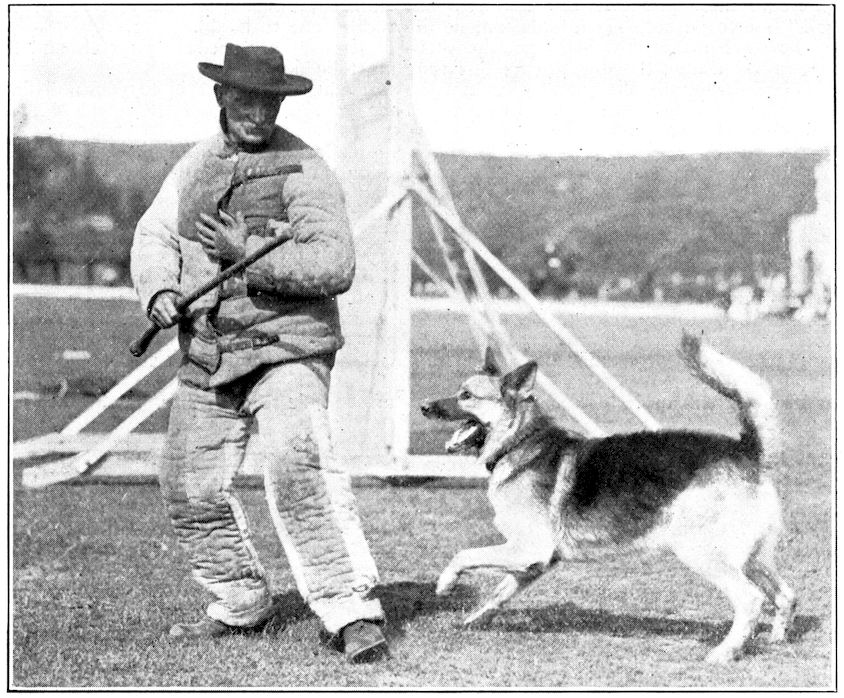
The Police Dog is Trained to Attack on Command
3. Refusing food offered by strangers or thrown or found on the ground. The
dog is made to lie down both free and in the absence of the guide, and he must refuse
bread, meat or other tempting morsels of food. Then a dish of food is placed within
his reach, but he must not touch it under penalty of lost points.
4. Guarding objects. This is considered a most important acquisition. Every
possible effort is made to remove the object by the judge. The dog is chained beside
the object, which is well within his reach, and he is taught to lie down quietly beside
it and not to move or growl or show his teeth until the judge makes an effort to take
the object away quietly. If a vigorous attempt is made to snatch the object then the
dog is to defend it and himself in energetic fashion. Even when the judge threatens
the dog with a stick, or by coaxing, the faithful tyke will be proof against them all.
Bad marks are recorded if he gnaws the object or otherwise misuses it.
5. Giving “tongue” on command. This must be done continuously on command.
It is insufficient for him to bark once and imitation barking by the guide is forbidden.
6. Retrieving objects weighing two pounds. The dog must sit down quietly and
await instructions. Then he must bring it coming over a fence or hedge promptly and
sit down again before his guide until relieved of the object. The varying heights of
the fence or wall provide a number of diverse exercises in the retrieving lesson.
9. Scaling wall.
10. Going ahead. The guide walks across the trial ground with the dog at heel.
On command the dog runs ahead in the direction given to a distance of about 30 yards.
He shall “drop” immediately on command and stay there until told to rise.
11. Lying down. The dog is shown free in this exercise and immediately on
command he must rise and go away.
The detective work is conducted as follows:
1. Searching for objects left by a stranger at the end of a trail of 250 yards long
and half an hour old. The trailer proceeds on a track, directed by the judge, walk
at his natural pace and at the end of the trail stand still for one minute, wipe his feet
well on the ground, place the object between his footprints and then take the shortest
cut to a place again directed by the judge. An interesting variation of this is provided
by the object being placed thirty yards away from the end of trail and at
right angles thereto.
117
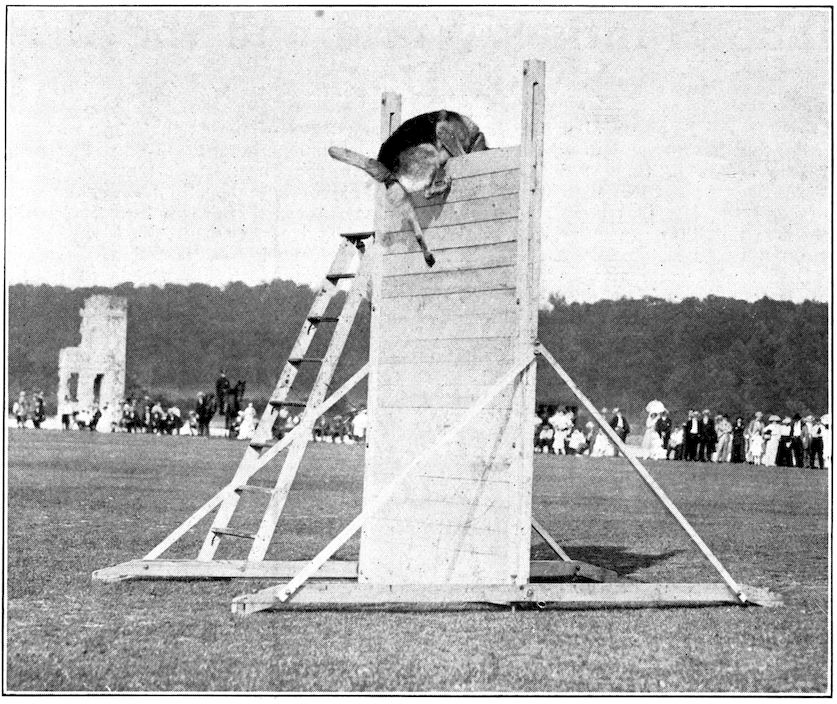
Police Dog Scaling Fence 8 ft. 6 in. High
2. Search for object left by a stranger on a trail 500 yards long, and barking at
the trailer when found. This is done both with the dog free and also when on leash
ten yards long, and it is particularly desirable that the dog be taught to bark on
finding the object or person discovered.
The protective work comprises:
1. Scouting over ground and barking at any large object found. The dog follows
the direction indicated by the guide and covers the ground carefully, searching every
nook and corner not so as to encircle the guide at a short distance. Three hiding
places are provided. As soon as the dog finds the hidden person he is taught to watch
him and by barking attract the guide’s attention.
2. Transporting “prisoner” without nipping. When found, the dog follows behind
the “prisoner” quietly without barking or nipping. Any object dropped inconspicuously
must be picked up at once by the dog and brought to the guide, then continue
the transport without waiting for the command. If the “prisoner” attempts to escape,
or attacks the guide, the dog must attack him immediately, without waiting for command
to do so. During these attacks the “prisoner” shoots twice into the air.
3. Watching the “prisoner” quietly when latter is quiet.
4. Arresting and holding the “prisoner” on attempted flight. The “prisoner”
attempts to drive the dog away with blows or a whip or by throwing pieces of wood
at him. The dog must watch him alone and twice stop an attempted flight. As soon
as the “prisoner” is quiet the dog must leave him alone and watch him until the
guide returns.
A high percentage of points are given for general obedience.
The whole attitude of the dog is taken into consideration especially between the
different exercises if he remains at heel; also how he controls himself between the
exercises toward the “prisoner,” and whether he needs holding in check by the collar
and in other ways indicates that he understands when he is on duty and when he is not.
Unquestionably these trials throw a good deal of light on the training of dogs
used by the Continental nations for war purposes as well as for police work, and it is
hoped that greater facilities will be given for such in other parts of the world.
118
The Hunting World and the Use of Dogs
It is to the Normans that the English-speaking races of the earth today owe their
hunting hounds in all their varieties. The Talbot hound was introduced into
England at the time of the conquest by William the First.
All are not agreed as to the color of these Talbot hounds. Somervile, the great
sporting poet, describes them as “white as Alpine snows.” There is, however, reason
to believe that they are invariably of a reddish tan and often with a black saddle. In
form, color and shape they are very much like the English bloodhound of today; indeed,
that noble animal is supposed to be the bedrock of all the breeds of hunting
hounds that are now in use the world over; and this because of that sentiment and
recognition of the variety as the chief pillar or the stay of several of the most valued
breeds, that the bloodhound is placed first in the stud books of England and America,
and the breed is number one in the catalogues of the all-round dog shows everywhere.
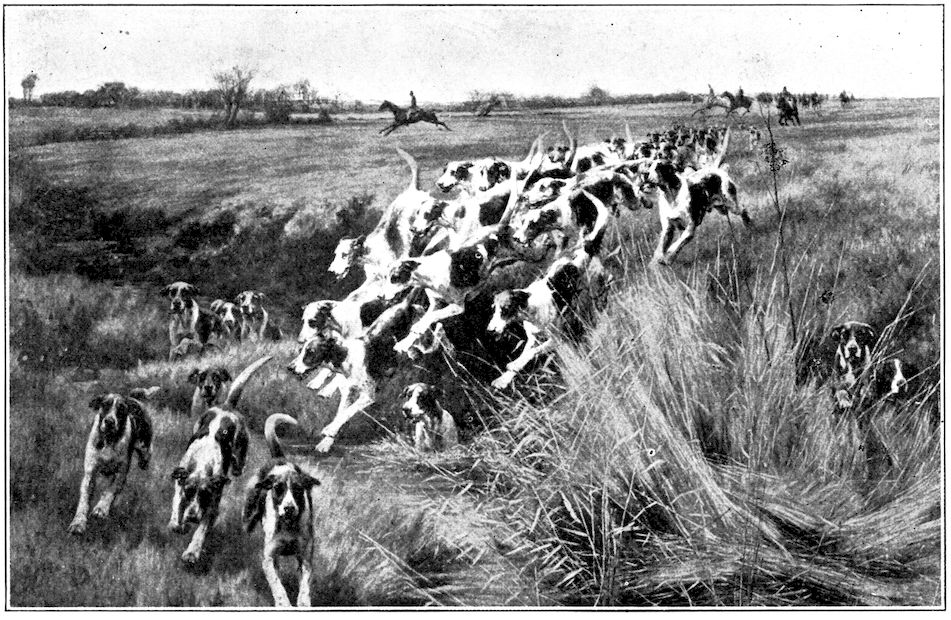
English Foxhounds in Full Cry
It was and is desirable that the head of a hunting hound should be of the above
description—that is, if a close-hunting, unerring hound is required to hunt singly,
rather than in a pack. The formation of the head above described, is one that is
“made” for the purposes of hunting; and in such a head are to be found the highly
developed olfactory nerves which communicate with the brain and actually inform
the hound when he strikes the scent of an animal and whether the effluvium is recent
or old.
It is the gloriousness and health-giving surroundings that have made the chase
so popular with nearly all peoples, and that is the reason hounds are bred with such
care and may generally be found in the ownership of the well-to-do and the high personages
of the world.
In the early days the English pursued the chase on foot, and their objects of pursuit
appear to have been principally the wild boar and the wolf. The Anglo-Normans
might be considered as the more polished, more noble, and more scientific hunters,
and they introduced that powerful and pleasant assistant in the chase—the horse—as
well as a great variety of objects of pursuit. They chased the stag, the roebuck, the fox,
the hare, etc., and hunting the less dangerous animals seems to have constituted their
principal amusements; though the wolf and the boar occasionally occupied their
attention, and in all these branches of the hunt dogs of varying degree were used.
119Every village in England has its beagles, and nothing is more enjoyable than an
old-fashioned fox hunting, or chase, where hounds belonging to many owners are
packed together, and, jumping a fox, they run him for hours on end, their glorious
music resounding throughout the woods and delighting the ear of the sportsman. The
American foxhound appears to have more of the old harrier or English southern hound
blood in him than is allowed to remain in the hound of the English. There are some
broad-headed and long-eared and heavy-lipped hounds in the United States which
remind the observer of the hounds of France and other Continental countries—hounds
that still bear a good deal of resemblance to the old Talbot hounds—the hounds of the
Normans. Finer and finer the English bred their hounds as stag hunting gave way to
fox hunting. The old staghound was only one remove from the Talbot, and he was
a big and picturesque creature and these hounds are to be found in France today.
Hunting is a foremost sport all over the world, and there can be little wonder that
the spirit and standing of the peoples may be gauged from the quality of their hounds.
The panoply of the chase is among the more glorious sights of the world, and in the
pursuance of the various sports connected with hounds, large and small, a vast amount
of money is spent, and a large number of persons employed, in the piping times of
peace.
The beagle should be 15 inches or under, measured across the withers. If he is
ever that height he becomes a harrier; and a harrier over 19 inches becomes a foxhound,
and a foxhound standing 24 inches at the shoulders and 30 inches round his
girth is indeed a splendid creature and a beautifully proportioned one to boot. The
hound is indeed a beauty and a joy forever!
In England alone there are more than 800 packs of hunting dogs. Roughly, there
are 326 owners of hunts or hunting establishments in France. Some of these hunts
have 50 or 60 couples. In Belgium foxhounds are kept, and the chief packs of hounds
in Germany are the Royal Hounds, at Potsdam, and the Hanover Hounds. They both
hunt the drag and the boar. The conditions of hunting in Austria and Hungary are
much better than in Germany. It is a good wild country and full of foxes. The
Roman hounds are world renowned. Fox hunting was introduced into Italy by Lord
Chesterfield in 1842, and the sport has flourished ever since. In Spain the Calpa foxhounds
show much sport in the vicinity of Gibraltar.
In the United States there are about forty well-known and properly established
packs of foxhounds. Throughout the Indian Empire there are numerous packs, many
of them being of the bobbery or mixed kind. The jackal is the most frequently hunted
animal. The Bombay Hounds are the chief pack in India.
In South Africa the jackal is hunted with foxhounds, and a single hound is used
to drive buck to the rifle or gun. American foxhounds have recently been introduced
to British East Africa for the purposes of hunting lion. These hounds have been of
great use in bagging such large and dangerous game, and in the case of cheetah and
other tree-climbing animals, the American foxhounds have not had the slightest difficulty
in driving their quarry at such a pace and with so much persistence that the large
cat is glad to see the supposed shelter of a thorn or other tree standing out like
a sentinel on the vast expanse of plains.
The foxhound, the harrier and the beagle are also of great use in Africa for
driving certain of the antelope, which keep in the bush, to the gun, and a good deal
of sport may be had in some of the rivers otter hunting, and when otter hunting, a
monitor, or huge lizard-like creature, is often started in a swamp, and the reptile,
taking to the water like an otter, he will provide a good deal of sport. The otters in
the Eastern province of South Africa are plentiful and of good size. The rivers are
very huntable, for they are not deep and there is no great width or volume of water at
certain seasons of the year. There is much sport to be had on the Mooi River, in
Natal, where a pack of pure-bred otter hounds is kept. And these hounds will not
only hunt the water dog but the aforesaid African monitor. Everywhere the hound
is useful and especially is this the case in a big and open country like Africa, where a
dog is required to be not only a hunter, but a guard and a friend.
In Australia there is a good deal of hunting and the Melbourne hunt is a well-organized
institution. Australia is a country in which all animal life increases and multiplies
rapidly. In 1864 one dog fox and two vixens were imported from England. There
soon became enough foxes in Victoria to last the colony, now the province, forever. But
red deer and kangaroos are sometimes hunted with foxhounds, and in Western Australia,
in the neighborhoods of Freemantle, Perth and Kalgoorlie, there has been much
sport experienced in hunting the brush-tailed kangaroos. This form of hunting was
introduced by Mr. Cairns Candy in the late nineties.
In Tasmania, the island province off the main Australian continent, there is some
hunting with properly constituted and maintained packs of hounds. In this lovely
120country, noted for its apples and the matchless complexions of its pretty women, they
hunt deer and hare. In New Zealand there is a good deal of hunting, and harriers are
principally in use. There is a fine open country, and that in the North Island will
remind the hunting man of some of the shires of England.
The hounds of Europe, Asia, Africa and Australasia have been discussed, and now
we will find ourselves back in America. And this country may well be proud of its
old-fashioned, long-eared, heavy-jawed and deep-throated foxhounds. That American
foxhounds are suitable for hunting American foxes, and where foxes are shot before
hounds, there can be no manner of doubt; but they do not kill many foxes, neither
may this killing quality be placed to the credit of the English foxhounds in this
country. Once a fox is able to sit down and listen to his pursuers, then a foxhound
or a pack of foxhounds have as much chance of overtaking the quarry as a short-winged
hawk has of catching a swallow on the wing. A century ago, it is recorded,
it was not unusual in South Carolina to drive out of one large swamp, deer, wolves,
bears, foxes, wildcats and wild turkeys. The sportsmen were ready to shoot all of
these.
In descriptive poetry of the earliest date, hunting is frequently alluded to; even in
the most important action of the whole Iliad, the death of Hector, the pursuit of him
by Achilles is thus introduced:
“As through the forest, o’er the vale and lawn,
The well-breathed beagle drives the flying fawn,
In vain he tries the coverts of the brakes,
Or deep beneath the trembling thicket shakes,
Sure of the vapor in the tainted dews,
The certain hound his various maze pursues.”
—Pope.
The Gun and Coursing Dogs of the World
If there be one study in connection with dogs more interesting than another, it must
be that which has reference to the gun dogs and the coursing dogs of the
world. Since time immemorial, dogs have been used by man for certain purposes
and those which he has bred, maintained and improved for his services, have kept time
with the ever-changing methods whereby the human is able to obtain and have for
himself the beasts of the field and the birds of the air. The first men who went after
game hunted it for food; and they very soon found out the most suitable dogs for their
purposes and they bred and produced dogs for different kinds of work. It is fair to
write that no domestic animals are better represented throughout the world than are
thoroughbred dogs of one kind or another. The pure-breeds are to be found in countries
that are foreign to their varieties, and what is more, they are highly and justly
prized by their owners and even the very community in which the imported dog has its
new being. For let it be known, there are less distinctions than owning a superior
dog, and as these dogs are capable of reproducing themselves, and both the males and
females are prolific breeders, there is almost at once, or within one year, established
in the kennel of the new land the high-blooded and moreover most useful dogs of other
nations. And that is the reason that wherever we may go we shall probably find the
particularly good gun dogs of Great Britain. These consist of the pointer, the English,
Irish and Gordon setters, the retrievers and the Labrador or Lesser Newfoundland
dogs, and the various spaniels, which have all been practically made perfect in the
British Isles and distributed to the four corners of the earth. Dogs have been produced
that will hunt as well in one country as another; but one can generally find that
dogs—gun dogs and coursing dogs—are mostly chosen with an eye to the environment
in which they will have to hunt.
121
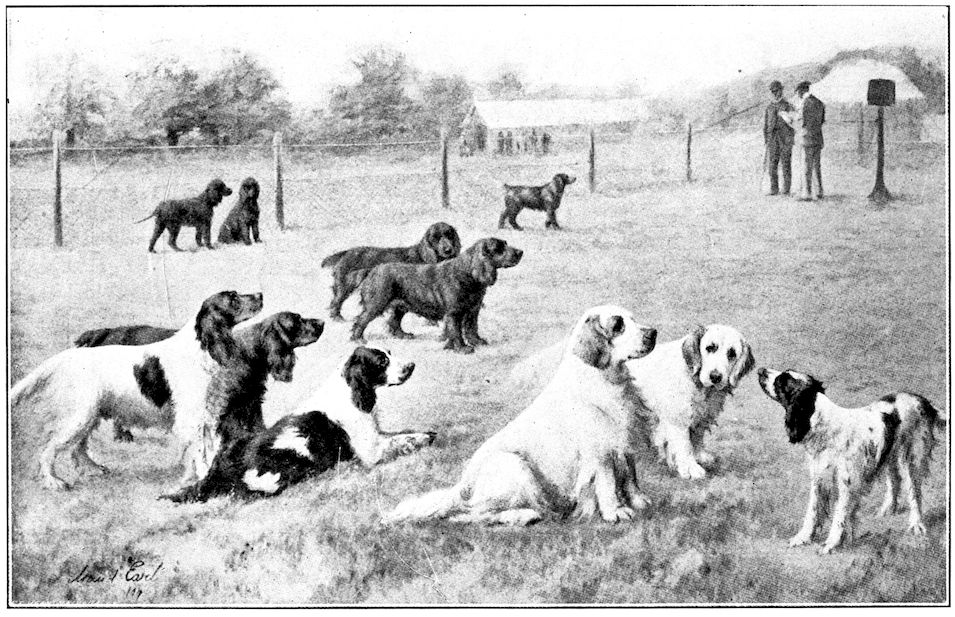
A Fine Group of Gun Dogs.
122
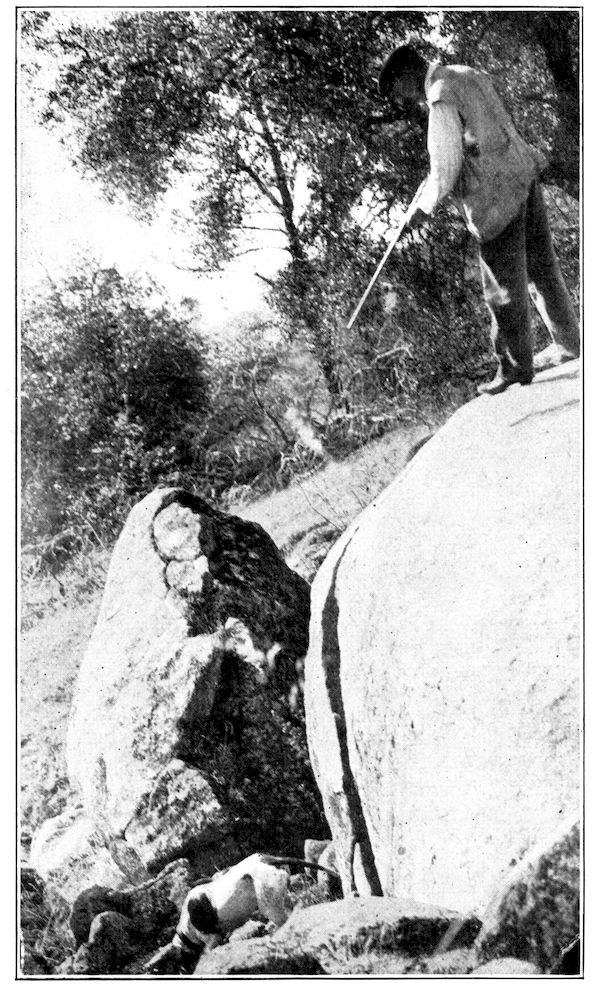
Both the pointer and the spaniel originally came from Spain, so it is said. But the
original Spanish pointer was too heavy and slow in his pace for the English gunner,
so he was crossed with the lighter foxhound, and it is even said with the greyhound,
so that he should be more active and able to cover his ground better. Furthermore, the
heavy-headed Spanish pointer had the kind of head and lips that proclaim a hunting
dog that is inclined to keep his nose to the ground, rather than carry it highly and thus
better obtain the body scent of birds and other game in the distance. The setter was
originally the large spaniel, and was taught to “set” or sit down when he had come
upon birds, so that the game could be encompassed by the fall-net, or the hawk or
falcon might have the better opportunity to fly at her quarry. When the small pellets
of lead were invented and the shotgun first used then the setters of the netters and
falconers became gun dogs, and as such we will find pointers, setters, retrievers and
spaniels of English origin in every country where the sportsman may be found. Gun
and coursing dogs are not only imported into America as workers but as show dogs,
and in the great majority of cases these dogs are thoroughly broken or trained as well
as being good to look upon. Then these gun dogs may compete at the various field
trials now run off all over Europe, the United States and Canada, or even South Africa,
or at the coursing meetings in every country of the world. The coursing dog is found
most useful in Canada, especially in the prairie provinces, where coyotes are destructive
and a curse to the sheepman and even the horse breeder, for a pack of prairie wolves
will attack and kill a foal. As a part and parcel of the farm, the ranch, the station and
estancia the gun dog and the coursing dogs are invaluable. Pointers, setters, spaniels
and retrievers are useful under all circumstances, and they perform the same work in
all climates and under the various and dissimilar conditions. In some countries pointers
are preferred to setters; but, on inquiry, it will generally be found that the alleged
fitness of one variety of dog over the other, is merely a matter of taste or “fancy.” A
man who owns setters prefers setters; the individual who possesses pointers has a
123preference for pointers. ’Tis his fancy—his hobby, and that gentle leaning towards
one breed often means the fellow’s antipathy to another breed.
In a land or country that has been indifferently cultivated or is wild, there are
several kinds of burrs that inconveniently fall at the very time when the hunting or
shooting season begins. Some say that the pointer, because of his short coat, will not
be so troubled with these prickles as will the long-coated setter, which is feathered on
the legs and picks up the burrs wherever he may go. On the other hand, the setter
admirer avows that the feathered and better protected foot of the setter saves him from
being lamed so often as the clean and unprotected footed pointer. So it will be seen
that these preferences are mostly imaginary and may be traced to fancy.
On the Continent of Europe we find many kinds of most useful dogs; but both the
pointers and setters are only modifications of the old hunting dogs that came from
Spain. There are rough-haired and smooth-coated pointers in Germany, and they are
very handsome animals with excellent formation and with hunting qualities of the
highest order. The griffons of France, Holland and Belgium are particularly good
dogs; rough and ready in appearance, with excellent brains and great scenting powers.
In him we will recognize a lot of hound blood which may have come from the otterhound
or the hounds of Vendée. But they are just the sort of dogs that a man wants
for rough-shooting in the woods or swamps. The griffon is an active dog, does not
throw his tongue when immediately close to game or in sight of it, as does the hound.
The griffon makes a good woodcock, “partridge” and duck dog; and as such he has
been found of the greatest use in America. The griffon is a good dog in the water as
well as on land, and in this way he proves himself a thoroughly serviceable all-round
sporting dog. The wolf-hounds of Russia are most useful dogs, and as their name
foretells, they are used as wolf-coursing dogs. Three are slipped to the wolf after he
has been driven from cover by foxhounds or beaters. When they come up with their
game they bump into the quarry and at the right moment lay hold of the beast by the
neck and hold him until the hunter arrives and either dispatches the game with a
pistol or knife, or placing a stick in the wolf’s jaws, twists a rope around the muzzle
and neck, and thus preventing him from accomplishing any harm, captures the creature
alive and practically uninjured. The Russian wolf-hound is the best killer of any of
the coursing dogs. Like a bulldog, he holds on to what he seizes; his jaws are very
powerful, and it is because of this tenacity that the Russian wolf-hound, or borzoi, as
he is frequently called, is used for crossing purposes on the English greyhound and the
Scottish deerhound or on the progeny of these two breeds, for the purpose of producing
what is known as the “long dog” of the Canadian prairies, where he is used principally
for coursing and killing the coyote. The Russian wolf-hound has also been
successfully crossed on to the deerhound in Australia, either for straight out kangaroo
dogs or dingo killers. The Russian wolf-hound goes to the throat of his enemy, and
such a dog is required for the prompt killing of dingoes. The long and strong limbs
of the kangaroo are means of defense, both as propelling powers in his long and swift
bounds or jumps and for fighting when it comes to the more serious defense as against
dingoes or the domesticated dogs, hence the kangaroo dog is taught to attack from
behind.
The slugi or greyhounds of Arabia, Persia and Egypt may be noticed. In these
we will find small examples of the Russian wolf-hound, but they have down or setterlike
ears as opposed to the half-cocked or fully pricked ears of the Northern dogs.
The dogs of the near East have generally long feet and these are feathered, as are
their ears, legs and tails. They are used to course antelopes and hares, and one of the
most ancient of sports is to not only course the antelope with these slugi, but at the
same time fly hawks at the fleeing buck, which has the advantage over the dogs in
sandy places and over stony or rocky ground. The big and somewhat picturesque
greyhounds of Afghanistan are large dogs much after the form of the near Eastern
dogs; they are used for the same purposes, and because of their surroundings in high
altitudes, they grow large and woolly coats to aid them against the vicissitudes of the
cold climate. In India, indeed, all over Asia, the different gun dogs generally associated
with the British Isles are used and they cannot very well be done without on the
small feathered game which is plentiful. In Japan and China the pheasant shooting is
very good, and Americans who have gone over to shoot in those countries have taken
their dogs from this country with them and have found them to accomplish all that
was required of them.
If we leave Asia and continue our wanderings and huntings to the South, and
reach Africa, we will find plenty of work for our hunting hounds, our coursing dogs
and gun dogs. The slugi or greyhounds were the most valued dogs of the Pharoahs.
In the ancient monuments the dogs’ places are at the sides of some great personage.
It would appear that the tastes of the Egyptians of old were exactly those of the
124ancient Britons, for there is an old Welsh saying which states that “a gentleman is
known by his horse, his hawk and his greyhound.” The slugi in its native or home
state is now principally to be found in its purity among the Bedouin Arabs. They
place the greatest value on these dogs, and they are as difficult to obtain from the wandering
Arabs as are their thoroughbred horses. Furthermore, there is an Arab saying
that the most valued of all things among the highest of these nomads and hunters are
“his horse, his slugi and his wife’s earrings.” The Arabian greyhounds are primarily
valuable for coursing antelope in sandy countries and where the sun is felt with all his
power. They also thrive in temperate climates.
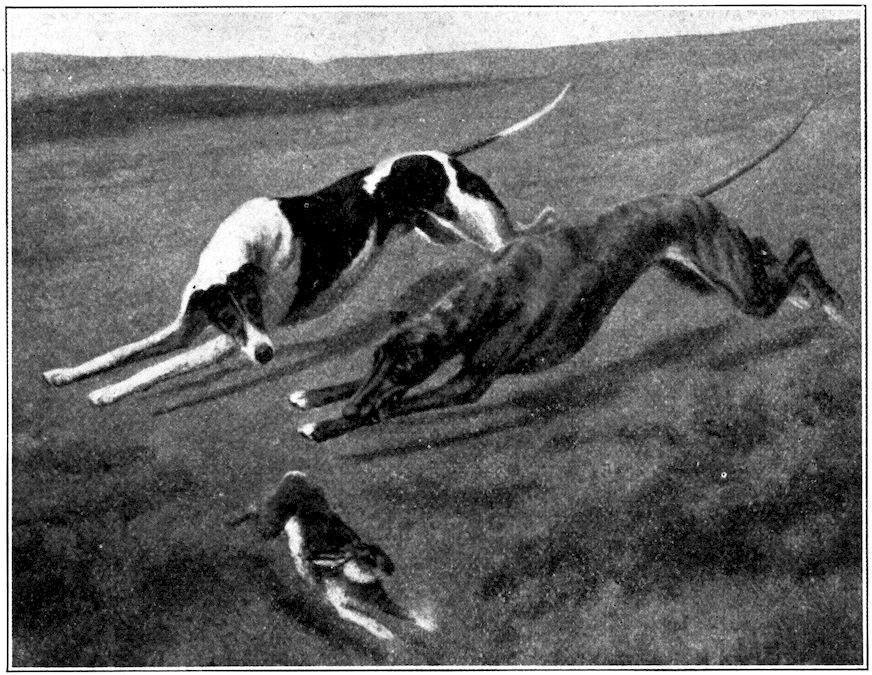
Incident in a Waterloo Coursing Meeting
Our old friends the pointers and setters are used in Northern Africa, as they are
in the South and the East, the West and Central of that enormous and game-holding
country. American foxhounds have been found most useful running on the trail of
the lion; furthermore, they have the good sense to keep away from the great cat when
it comes to close quarters. These hounds will soon tree a cheetah and the rifles or
the arrows of the natives will accomplish the rest. In Africa, generally, there is
much bird life, as that term applies to partridges, snipe, quail, etc. In that country
there are several small and dangerous snakes; but it has been found that the dogs’
sagacity has been such that they, of their own initiation, immediately become alive to
the dangerous natures of these reptiles and that they will return to the shooter when
they get near a snake, either in the grass or on a branch overhead. Greyhounds are
used in Africa for coursing the smaller bucks and hares, and such dogs, fleet of foot
and able to run down an antelope, may be bartered “up-country” for produce of great
value, the natives, especially the chiefs of powerful tribes—practically nations—having
been known to give mining and other concessions where first class dogs have been
given as presents.
There is a great deal of variety in the Australian shooting and the bush life of that
lovely country is entrancing for the lover of nature and the observer of mammals and
birds. Pointers and setters are used in just the same way as they are anywhere else.
Quail are plentiful and the varieties of numbers of wild fowl are beautiful and often
countless. As for hares, in some places they are almost as common as the rabbits; and
hares are three times more prolific in that balmy country than they are in climes north
of the equator in Europe and America. Coursing is a great sport there and is a
means of much speculating or wagering among Australians and New Zealanders. New
Zealand in many climatic instances and country surroundings is very much like England,
and game has been imported and the different societies and clubs have done much to
acclimatize, breed and protect game. Here is a country where springer spaniels could
125be more in evidence and worked with advantage. A good trade should spring up
between New Zealand and California for gun dogs and greyhounds. The passage is
one of less than three weeks, and the freight inconsiderate. All over South America
gun dogs and greyhounds are required. There is some shooting in New Guinea, but
the bush is very dense and the natives not always agreeable to the visitation of
the man with a gun. Some very nice dogs are to be found in the Hawaiian
Islands, notably at ever-glorious and salubrious Honolulu, the Paradise of the
Pacific. And within a few days’ hail is the Golden Gate and the ever-bountiful
lands that slope down to the North Pacific and the longed-for port by the voyagers
from the far East and the farther South. Here, of course, we will find gun dogs in
great variety, and many greyhounds. Some years ago several of the best running dogs
in England were imported by sportsmen in California. And that stock is in the Golden
State now. Gun dogs are not only esteemed as gun dogs or for their work, but also
for their good looks. The English setter is bred in all his attractive loveliness and
usefulness all the way up the Pacific Coast as far as British Columbia. And it is in
the last mentioned province that some of the most beautiful of the blue-ticked, long
and silver silk-like coated setting dogs have been bred. Taking the whole of the North
American Continent we will find it one abiding place for gun dogs of the highest merit;
and as it is well known, Americans and Canadians have always been circumspect and
generous in their importations of gun dogs from Europe, and, consequently, have
possessed themselves of specimens that are not only good to look upon, but easy to
train and delightful to shoot over.
Whippet Dogs and Whippet Racing
The whippet is a greyhound-like dog, and is the fastest of all dogs at his weight or
height. In some instances they have been crossed with Italian greyhounds, but
these alliances are apt to bring about inferior whippets for racing or catching
rabbits, either on their own ground or at rabbit-coursing or snap-dog matches. In
rabbit-coursing, where the rabbits have previously been caught and turned down on
unknown ground (to the rabbit) before a brace of whippets, it is the dog that catches
the rabbit that wins the course, and the winner of the majority of a given number of
courses wins the wager for its owner or connections. Snap-dog coursing—that is,
running rabbits down with whippets in small and enclosed places, the rabbit being
given little “law,” is not considered a sportsmanlike action, and is practiced only as a
means of gambling. Whippets have long been declared a pure breed, and this dog was
first recognized as such by the English Kennel Club.
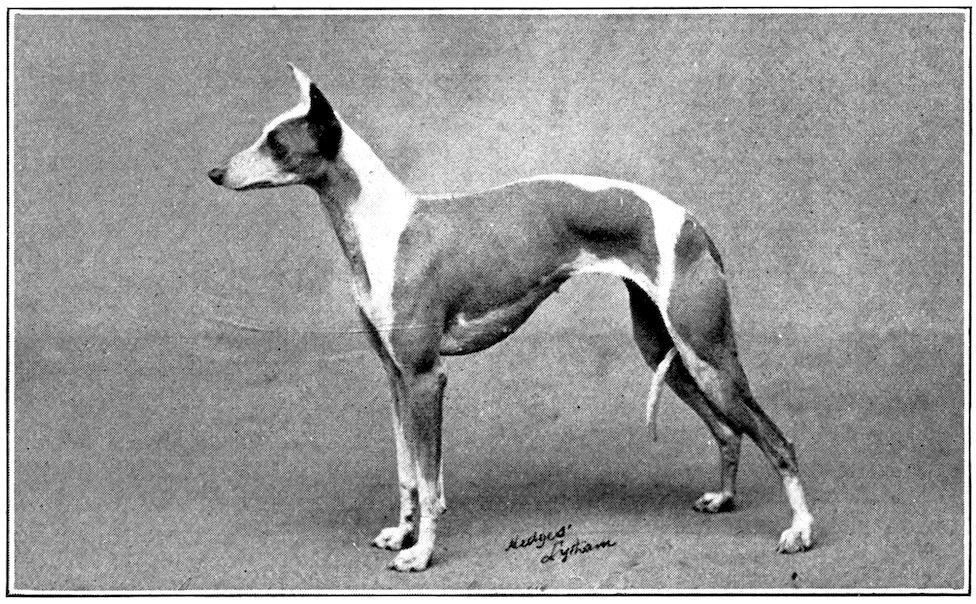
Whippet racing is an old sport and the pastime of working men in England. He
has been called the poor man’s race-horse, as indeed he is, the dog providing sport and
a means of speculation for men of slender means. Whippet racing is carried on right
through the year in the Northwest and North of England. Of late years it has become
126a great sport in London and its suburbs, the principal handicaps being run off every
other Sunday forenoons at Walthamstow. Whippet racing was patronized by the late
King Edward VII of England, at the Ranelagh Club grounds, London, and the leading
“country club” of its kind in the United Kingdom. Whippet racing has long been a
sport in Belgium, France and Germany. Dog racing was also introduced into South
Africa during the end of the last century, and valuable handicaps are run off on the
diamond and gold fields. Whippet racing was first favored in the United States by
the English operatives in the cotton mills in New England, especially in Massachusetts.
The sport has been well and continuously conducted at country clubs around Boston
and Philadelphia, which has put the pastime on a society basis. There is no cruelty
in whippet racing. The dog is held on his mark by the neck and root of tail, and,
starting off at pistol fire, the object of his run of 200 yards or less being a towel held
by the runner-up—usually someone he knows—who stands, holloas and waves the
“rag,” as it is called, 10 yards beyond the winning line or mark. The dogs are handicapped
according to their weight or height. The latter is not a popular mode and it is
the weight of a dog that is considered practically everywhere. Roughly, it can be
reckoned that a dog of say 16 pounds is 2½ to 3 yards faster than a 15–pound dog. A
bitch is keener than a dog. The handicap scale given in this description of the whippet
was arranged by Freeman Lloyd and is largely in use throughout the world.
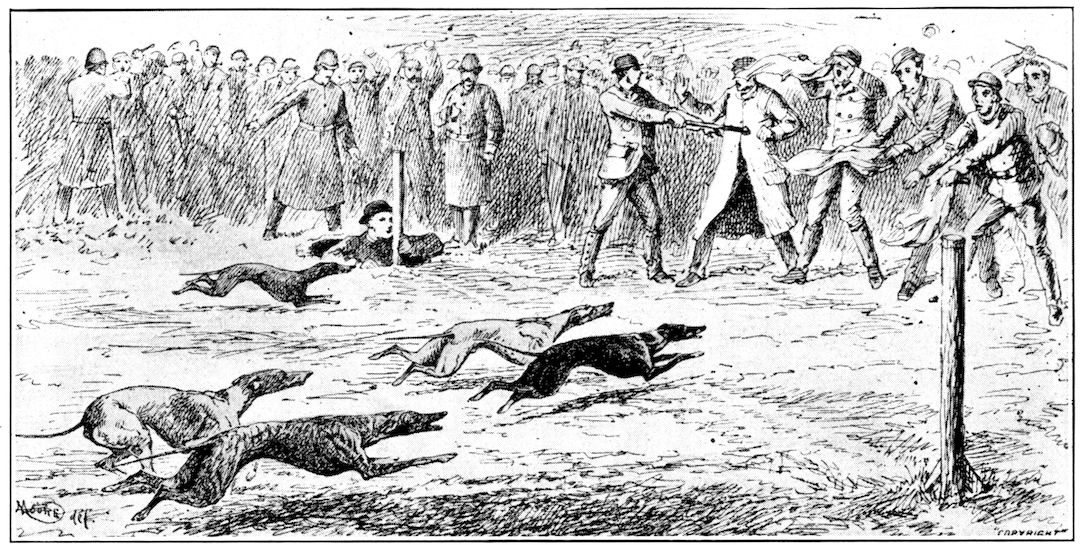
Finish in an Old-time Whippet Race Meeting
A whippet track may be easily laid out on grass, race track, show or fair ground.
It must be 220 yards straight. If it is over, so much the better. The further the
onlookers are kept off the track the more they can see, and they will not interfere with
the dogs running. The whippets are entered, their names, weights, colors and owners
being given. Each owner pays an entry fee for each dog and these fees are generally
made a sweepstake and the purse divided between the first, second and third dogs in
the final heat. The dogs must be weighed before they run and an allowance is made
of 4 ounces or 8 ounces either way in their stated weight. The handicap is run off in
heats, the number of dogs in each heat varying according to the entry and the duration
of the racing. Heats may be run off like clockwork, one lot of dogs starting off as the
others are finishing; or it may be delayed when the number of dogs is limited. If 40
dogs are entered and an afternoon’s sport desired they can be run off in heats of four
dogs each. There would be then 10 winners of heats to run off in the semi-finals,
which could be either two heats of five each or, better still, three heats with two fours
and one of three dogs. The two winners, or the three winners of the semi-finals, must
be run off in the final. Taking the three semi-finals for choice, there would be run off
altogether 14 races, which would occupy about two hours. The owner of the second
may challenge the weight of the winner, immediately after the final is run. The dog
is then allowed 6 ounces to the usual allowance made before the running of its first
heat.
127Here is a plan of a track. If possible, the dogs should run so that the sun shall
not be in their faces.

The dogs run in colors, strips of narrow ribbon being tied around their necks.
These are of red, white, blue, yellow, green and black. On the race card the shade
of the dog’s racing color is noted in the preliminary heats. In the semi-final and final
heats the back or scratch dog wears the red collar, the next the white, the next the
blue, and so on. If the red dog is first over the winning line, where the judge stands,
the judge raises a red flag. Whatever color wins so is a flag of the same color held
aloft by the official whose ruling is final. Each “runner-up” must be behind the over
or trig mark before his dog crosses the winning line. If dogs start when the cap is
fired, but there is no powder explosion, it is no start. But if all dogs go fairly away,
it is a start. Dead heats must be run off excepting in the final, where owners may agree
to divide. If a dog is disqualified, the second dog takes his place in the records. No
live bait allowed with the runner-up, and all dogs are subject to inspection by the
officials. It is recommended that only whippets of 25 pounds or under be raced. The
bigger dogs are often given to savaging or “slapping,” and appear ungainly among a
lot of small dogs. The back dog in every heat must run the whole of the 200 yards, or
whatever smaller course is used.
Starts for Dogs and Bitches of Different Weights in 200 Yards Handicap.
When a dog wins at a handicap he must be penalized according to the judgment
of the handicapper. The following handicap would put each dog or bitch on equal
terms, providing all the dogs were exactly of the same calibre or of equal racing
powers—barring their weights:
| Wt. of Dog or Bitch—Lbs. |
Start for Dogs, Yd. |
Start for Bitches, Yd. |
| 28 |
1 |
0 |
| 27 |
2 |
1 |
| 26 |
3 |
2 |
| 25 |
4 |
3 |
| 21 |
5 |
4 |
| 23 |
6 |
5 |
| 22 |
7 |
6 |
| 21 |
8 |
7 |
| 20 |
9½ |
7½ |
| 19 |
11 |
8 |
| 18 |
12½ |
9½ |
| 17 |
14 |
11 |
| 16 |
16 |
13 |
| 15 |
18½ |
14½ |
| 14 |
21½ |
17 |
| 13 |
24½ |
20 |
| 12 |
27½ |
23½ |
| 11 |
31 |
26½ |
| 10 |
35 |
30 |
| 9 |
39 |
34 |
| 8 |
43 |
38 |
| 7 |
47 |
43 |
| 6 |
52 |
48 |
| 5 |
58 |
54 |
A dog covering 200 yards in 12 seconds gallops at the rate of 16 yards 24 inches a
second; in 13 seconds, 15 yards 14 inches, and in 14 seconds, 14 yards 10⅓ inches.
The Sled Dogs of Alaska
Between the laborer who earns his daily bread by the sweat of his brow, and the
spoiled favorite of fortune who neither toils nor spins, there is not more difference than
between the workers of the North—the Sled Dogs of Alaska—and the pampered, fur-coated,
jewel-hung dogs “in society”; dogs who have their silk-lined baskets, their
gold-mounted toilet articles, and the exclusive services of a personal attendant. But
“Dogs is Dogs,” and the unhappy accident of birth that gives to such a dog the humiliating
experience of having his teeth brushed by a maid, or a massage of cold cream after
a bath in a silver-plated tub, should not be held against him—for he may still retain
some of his admirable, lovable canine qualities through the human veneer.
A dog’s intelligence and his faithful, affectionate nature are his chief assets in his
association with man; and if he preserves these in spite of his artificial surroundings as
a mere toy, his development along those lines is almost unlimited when he becomes a
co-worker with his master, and a devoted comrade through adversity and peril.
128
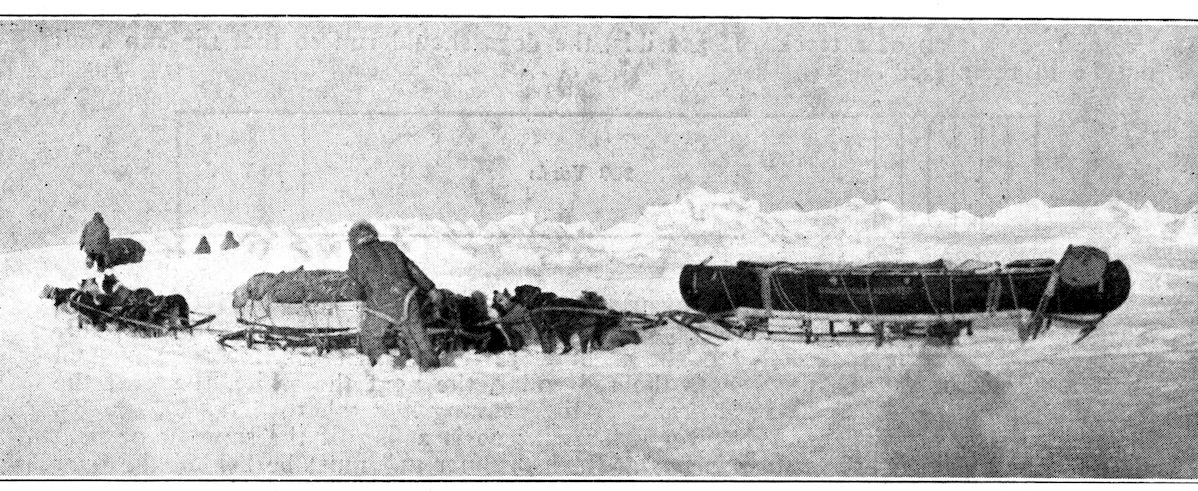
Incident in the Ziegler Polar Expedition, 1903–5
Mr. Anthony Fiala with His Dog Teams—Lat. 82° N.
Far beyond the Aleutian Islands, which stretch a grim barrier between the North
Pacific and Bering Sea, almost to the bleak coast of Siberia, there lies that part of
Alaska not familiar to the average tourist. The Alaska of primeval forests, of great,
almost unknown rivers, of vast areas of snow and ice that reach to the desolate shore
of the Arctic—the Alaska of the Dogs; and here in the “Land that God forgot,” the
dog holds a unique place as an indispensable factor in the settlement of the country.
He discovered the North Pole with Peary; he discovered the South Pole and the
Northwest Passage, too, with Amundsen; and he played a pathetic yet heroic part in
the brave, if futile, efforts of Captain Scott to reach his goal; just as he has ever
played well his role of support to those who have sought to penetrate the trackless
wastes at the ends of the earth.
Late in October, usually under leaden skies, nearly the entire population of Nome
stands upon a dreary beach watching the last boat of the open season, the “Victoria,”
steam slowly out through a sea already heavy with young ice, and disappear in the misty
grayness of the horizon. The parting salute of the ship’s siren has been answered by
all of the town whistles; and then as if to add the fitting climax to the gloom of the
occasion, it seems that every dog within hearing raises his voice to join in a mournful
farewell chorus—a blood-curdling wail that is characteristic of these Northern dogs
with their strong wolf strain.
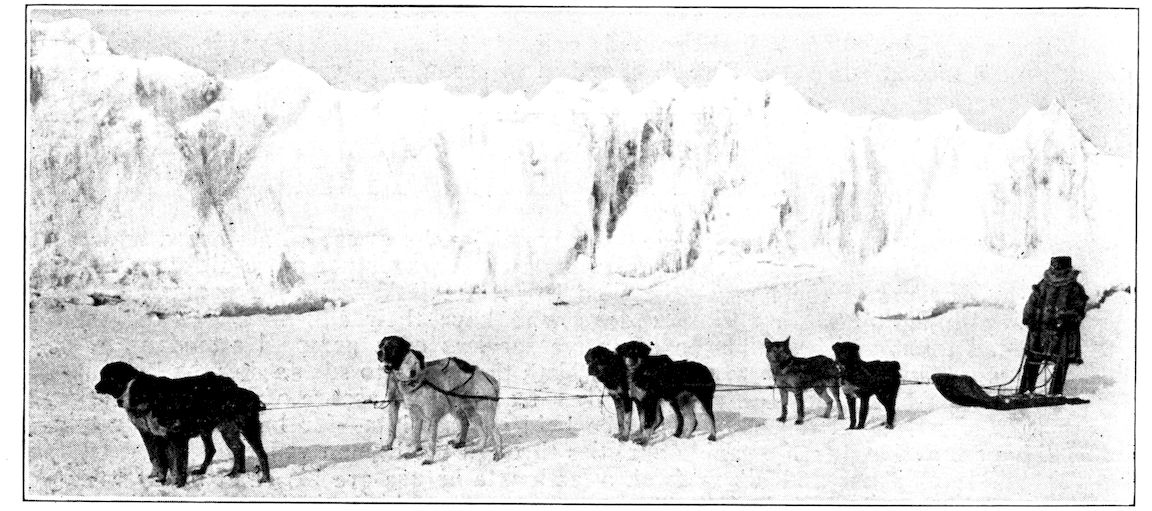
A Typical Scene in the Arctic Regions
But the people look with kindly eyes upon them, and even listen with kindly ears—for
they know that every letter, paper, and magazine from now till the middle of June,
will be brought in over fifteen hundred miles of ice and snow and frozen sea, by the
United States Government Dog Team Mail; and that, except for the wireless system,
all of the news from the great world “outside,” from family and friends, depends upon
129these Postmen of the Silent Trails. They go where soft snow and other conditions
make it impossible to use horses. No service is too lowly, no mission too high. They
pull the baby in his tiny sled, are the means of delivery for the merchant, and they carry
the doctor and priest to the bedside of the sick or dying in some lonely, distant cabin.
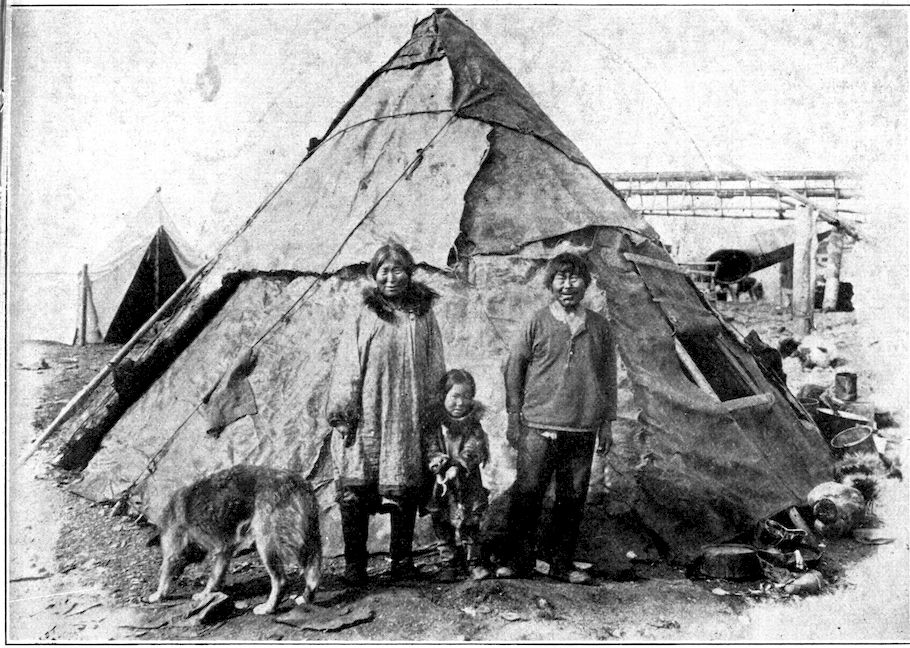
Eskimo family and malamute—At Home.
Owing to the prohibitive tax rate on railroads which traverse practically uninhabited
districts in Seward Peninsula—a tax which has only been abolished within the past few
months—dogs have become the motive power instead of engines; and in place of the
“toot-toot” of the locomotive as it takes a freight train out to the mines with supplies,
there is the “bow-wow” of the dog team “Kougarok Limited” or the “Little Creek
Express” as it starts down the track with a loaded flat car.
As to “joy riding,” the “Pupmobile” has every automobile completely outclassed
when it comes to the maximum of joy, and the minimum of danger. Given a winter
night when the frosty air brings the tingling blood to cheek and finger tip, when the
glittering stars seem close above one’s head in the clear sky, and when the trail glistens
like a silver ribbon in the ghostly radiance of the Northern Lights, it is a phlegmatic
person indeed who does not feel the thrill of excitement and delight that animates the
dogs as they strain in their harness to be away for a spin across the snows.
Then there is the famous All Alaska Sweepstakes race each April from Nome on
Bering Sea, to Candle on the Arctic Ocean and return, a distance of 408 miles; and the
dogs as well as the men who have won their laurels in this contest are the sort of men
and dogs who are making the History of Alaska—who are creating an Empire from a
Wilderness.
There are two types of dogs used in the race. The Siberians, small, prick-eared,
with bushy tails curled up over their backs, and with apparently decided traces of the
fox; and the Alaskans who are of mixed breeds—setters, pointers, collies, hounds or
what not—with a more or less pronounced wolf strain inherited from the McKenzie
River Huskie or coast Malamute.
Both types have their staunch supporters, and for excellent reasons—for both
possess wonderful qualities that endear them to dog users and dog lovers. The
Siberians have not the speed, and many claim not the responsiveness and intelligence
of the Alaskans—but they are gentle, tractable, easy to handle and are able to travel
more steadily and with less rest than the others.
130
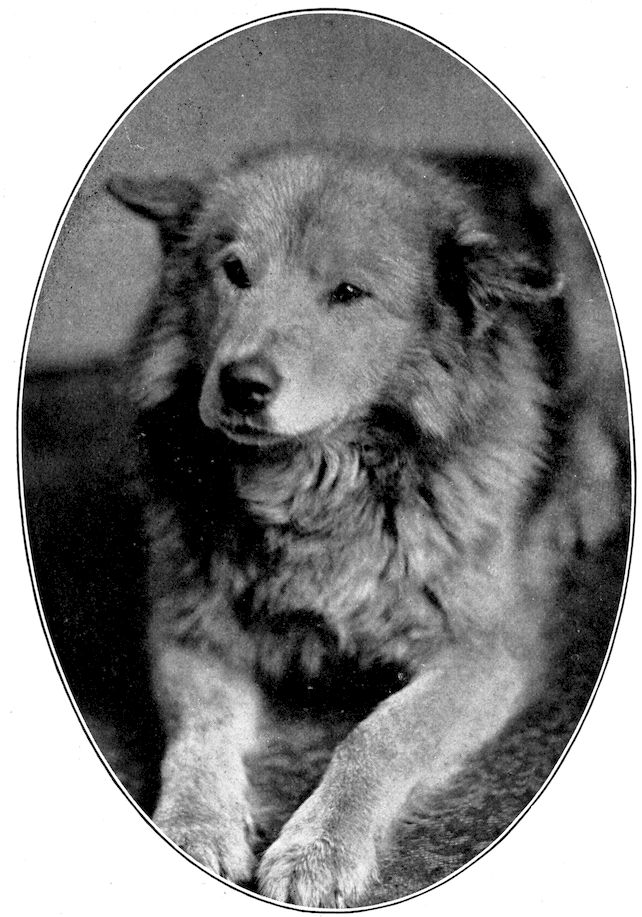
Dubby, a McKenzie River huskie, of the Allan and Darling Kennel, whose wonderful intelligence, and a record of over thirty thousand miles in harness, established his reputation as one of the greatest leaders Alaska has ever known.
The amount of rest in the race is a question of judgment with the driver, who must
decide how much he can afford to take himself, and give his dogs without the unnecessary
loss of a moment; but as he must return with every dog—dead or alive—with
which he started, it is to his greatest advantage to keep them in the very best of condition.
At every road-house and relay camp where they stop for food and sleep, it is
“Dogs First,” no driver thinking of himself till his team is fed, rubbed, and bedded.
When they are tired or foot-sore, they ride in turn upon the sled, recuperating quickly
in this way. Little moccasins of canton flannel are carried to be used on hard trails,
and veils of black or green mosquito netting are placed over the dogs’ eyes if the glare
of the sun is too dazzling.
In the Sweepstakes of 1910, John Johnson, a Russian Finn, driving a team of
Siberians entered by Colonel Charles Ramsay of London, came in first. The weather
had been ideal, the trail perfect, and they had broken all records—covering the 408 miles
in but little more than seventy-four hours. Closely following them was Charles Fox-Maule
Ramsay, nephew of Colonel Ramsay, and younger brother of the Earl of Dalhousie,
driving his own team of Siberians; and it certainly seemed that the day of the
Siberians had come. But in 1911 and 1912, through terrible blizzards and over miserable
trails, the Allan and Darling team of Alaskans, driven by “Scotty” Allan, were the
131winners; and in 1913, Fay Dalzene, with the Bowen-Dalzene dogs, was first, also using
the Alaskan type. So that out of the seven great races that have been held under the
auspices of the Nome Kennel Club since it was organized in 1908, five victories have
fallen to the Alaskans, and the breaking of the record to the Siberians.
In short distances some of the dogs are remarkably fast, travelling at the rate of
fifteen or sixteen miles an hour. Irish, one of the Allan and Darling team, a beautiful
setter with some huskie blood, can pace a mile in three minutes; and Spot, a cross-bred
pointer and huskie, after leading the team thirty miles over a heavy trail, covered four
miles in thirteen minutes and twenty-five seconds without breaking.
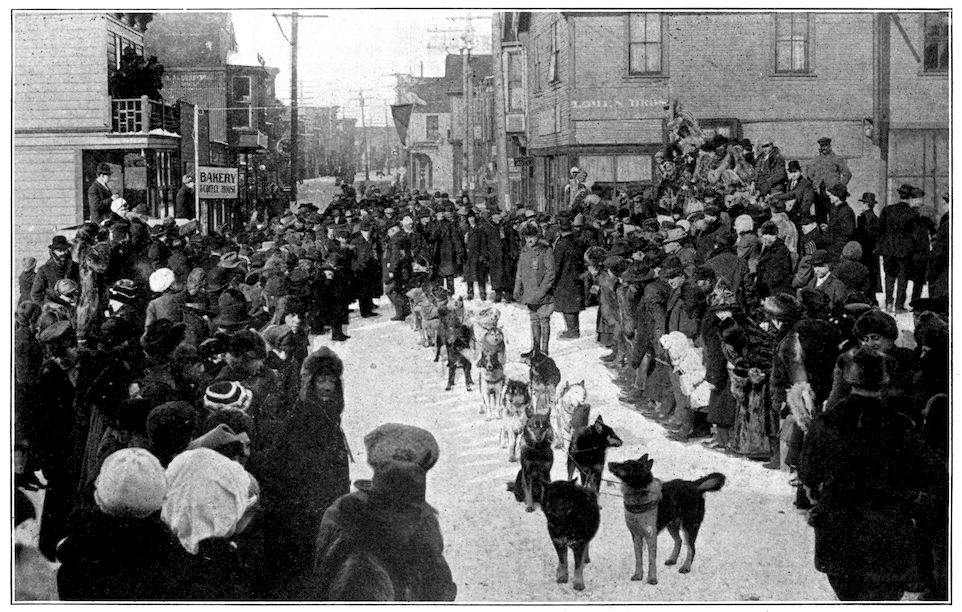
The starting of John Johnson’s team of Siberians in one of the All Alaska Sweepstakes Races in Nome, Alaska.
As dog teams are not driven with reins, but by word of mouth, there must be in
every team a particularly intelligent dog who is the leader. He must understand not
only the simple orders “Mush” (go on), “Gee” (to the right), “Haw” (to the left), and
“Stop,” but he must have exceptionally quick instincts, a definite acknowledged mastery
over the other dogs, and a sort of canine good judgment which tells him the right thing
to do in difficulties and emergencies.
132The stories of the marvellous sagacity of certain leaders are easy of belief to “the
men that know the North” as Service calls them, but they would appear to be gross
exaggerations or absolute untruths to those who have never seen dogs work in harness
on the trail.
A leader has certain privileges, such as getting into the sled when the driver is not
at the handle bars, and reposing in comfort and dignity on the furs while the rest of the
dogs lie in the snow; and other perquisites which may occasion bitter jealousy and
make necessary the utmost precaution in guarding him from the attacks of his envious
team-mates. Sometimes an old leader, discarded or pensioned, will craftily wait for a
chance to kill his successor—this chance generally occurring when the new aspirant for
honors is tied and at a disadvantage. Some leaders, however, through wonderful
strength and other superior qualities, become more or less exempt from this ill feeling,
and their leadership is freely and pleasantly accepted both in and out of “business
hours.” Of these, Dubby, a magnificent specimen of the McKenzie River huskie,
brought down from Dawson by “Scotty” Allan, was one of the most prominent. Dubby
lived to be twelve years old, but was pensioned on his ninth birthday, while still in
perfect condition and well able to enjoy the rewards of his faithful service. He had a
record of over thirty thousand miles, in harness, to his credit, and the anecdotes of his
intelligence are legion. He was often driven “loose,” running ahead of the team instead
of being hooked up with them; and he was so efficient as a “general manager” that
the loss of his pulling power was of small moment compared to his ability to find and
keep an obliterated trail, and his capacity for doing the many clever and helpful things
that his active mind found to do. A mere hint that some dog was not working was
enough, and Dubby would rush back to critically examine them all till the shirker was
located by a slack tow line or traces not held taut. The culprit received a warning
nip on the ear or flank, which was a threat of worse punishment if he did not mend his
laggard habits; then Dub would dash off to give some other evidence of his real generalship.
Perhaps it would be to decide that the ice on the river was not thick enough
to bear the weight of the heavily loaded sled—for some strange instinct enabled him to
know that fact, when an experienced Musher could be readily deceived; or he would
choose the correct trail where many met and crossed, in spite of the efforts of an
exasperated driver to convince him of the error of his ways. “You stubborn old
Siwash (an insult indeed to apply the name of the most shiftless of Indians to a self-respecting
huskie), I’ll wager you’re wrong; but do as you please, keep us all out here
in thirty below weather, tired and hungry, and then maybe next time you’ll listen to
reason.” But Dubby never did make the predicted mistake, and many a comfortable
night’s rest in shelter and warmth was the result of his unerring confidence in his own
ability which no argument could disturb. He would politely wag his stump of a tail
while he listened tolerantly to your opinion, but he ignored it with the same amiable
disregard one would show toward the foolish suggestions of a babbling child.
The tragedies of the Arctic wastes are many, and would be more but for the
faithful dogs; the list of canine heroes is long, and would be much longer were all of
their brave deeds recorded. They have never, like some of whom we read, attended an
“Acadamie pour Chiens,” and acquired, with a diploma, such unnatural refinements
and useless accomplishments as are displayed by “dogs in society.” If invited to
attend a luncheon of chicken à la Maryland, served on a decorated table, with Fifi and
Bijou as fellow guests, they would not only demolish the chicken in short order, but
also the decorations, and possibly Fifi and Bijou as well—classing them with cats and
other legitimate prey.
There is no downy cushion before the blazing fire, no chosen corner of the
limousine, no tooth brush or manicure set for the work dog of the North; yet they are
probably happier than their kin of the governess and college education. They have
no time for ennui—there are duties to be done, and it is rare indeed to find a sled
dog who does not take pride in his task, show delight at the sight of his harness, and
eagerly welcome the preparations for a good long mush.
Perhaps one of the most striking features of the races is the pleasure that the dogs
manifest not only in the preliminary training, but in the contest itself. One frequently
sees a team of dogs, old in the knowledge of racing, perfectly familiar with the hardships
before them, waiting for the signal to leave, and so eager to be off, that three or
four men are barely able to restrain them till the dip of the flag starts them on their
dash to the Arctic. So, too, it is not unusual for a Mail Team, becoming impatient of
the delay in unloading the mail, to run away after having carried a thousand pounds of
mail for a distance of two or three hundred miles.
In summer when the dogs are not being used they often spend the time about
mining camps where they are fed; or if in town they select one or more houses to which
they make daily visits at meal hours if they find the inmates hospitably inclined. In
many districts the dogs are virtually turned out to forage for themselves, when the
133wild strain in them asserts itself to an astonishing degree; but this is not true of Nome
where dogs are held in high esteem, and where they are given the proper care at all
seasons. And each year when the last boat of the summer sails from Nome, there is a
long list of dog passengers. To a fancier they would seem undoubtedly a collection not
worth their transportation; to my Lady of the Lap Dog they would cause shudders of
disgust; there would be no place at the Bench Show for such as these. They are
without pedigree, or beauty perhaps—mongrels if you will—but one never knows what a
wealth of fidelity may be hidden beneath a rough exterior. Many a story that touches
the heart may be extracted from the prospector going outside accompanied by some
favorite dog who has shared his solitude and his hardships; who has helped to bear his
burdens, and who is now to enjoy with him what they have earned together.
Perhaps that blind old huskie has guided his bewildered driver along the right
trail to safety, true to the instincts of the wild, when the whirling snow and icy sleet
cut like stinging whip lashes into the face and eyes, making sight impossible.
Perhaps this ragged, ungroomed malamute with his wolf head and his human heart,
dragged himself with patient, bleeding feet, half starved and nearly frozen, to some
remote camp with the warning that his unconscious master, caught unprepared in a
sudden storm, needed help.
Perhaps—but after all, each tale is only another variation of the same theme: dog’s
loyalty to man. And as pampered pets, or as valued assistants, in society or out of it,
this loyalty justifies the attention and regard they receive. It is the one thing all dogs
have in common, and whether in their veins runs the blue blood of generations of prize
winners, or the humble strain of some obscure street waif, it is to You, and not to
what you possess, not for what you can offer him, that the dog gives his steadfast
allegiance.
Sometimes when life has gone wrong with you
And the world seems a dreary place,
Has your dog ever silently crept to your feet,
His yearning eyes turned to your face—
Has he made you feel that he understands,
And all that he asks of you
Is to share your lot, be it good or ill,
With a chance to be loyal and true?
Are you branded a failure? He does not know—
A sinner? He does not care—
You’re Master to him—that’s all that counts—
A word, and his day is fair.
Your birth and your station are nothing to him;
A Palace and Hut are the same;
And his love is yours in honor and peace,
As it’s yours through disaster and shame.
Though others forget you and pass you by,
He is ever your Faithful Friend,—
Ready to give you the best that is his,
Unselfishly, unto the End.
Esther Birdsall Darling.
134
INDEX
| Breed. |
Nationality. |
Page. |
| Bloodhound |
English |
7 |
| Bulldog |
„ |
8 |
| Bulldog (Miniature) |
„ |
8 |
| Foxhound |
„ |
9 |
| Trailhound |
„ |
9 |
| Harrier |
„ |
10 |
| Beagle |
„ |
10 |
| Collie (Rough-Coated) |
„ |
11 |
| Collie (Smooth-Coated) |
„ |
11 |
| Retriever (Flat-Coated) |
„ |
12 |
| Retriever (Curly-Coated) |
„ |
12 |
| Pointer |
„ |
13 |
| Setter |
„ |
13 |
| Spaniel (Clumber) |
„ |
14 |
| Spaniel (English Springer) |
„ |
15 |
| Spaniel (Sussex) |
„ |
15 |
| Spaniel (Field) |
„ |
16 |
| Spaniel (Cocker) |
„ |
16 |
| Fox Terrier (Smooth-Coated) |
„ |
17 |
| Fox Terrier (Wire-Haired) |
„ |
17 |
| Greyhound |
„ |
18 |
| Whippet |
„ |
18 |
| Bull Terrier |
„ |
19 |
| Bull Terrier (Toy) |
„ |
19 |
| Airedale |
„ |
20 |
| Bedlington |
„ |
20 |
| Manchester Terrier |
„ |
21 |
| Manchester Terrier (Toy) |
„ |
21 |
| Mastiff |
„ |
22 |
| White English Terrier |
„ |
22 |
| Old English Sheepdog |
„ |
23 |
| White English Toy Terrier |
„ |
23 |
| Otterhound |
„ |
24 |
| Yorkshire Terrier |
„ |
24 |
| Toy Spaniel |
„ |
25 |
| Irish Wolfhound |
Irish |
26 |
| Irish Terrier |
„ |
27 |
| Kerry Beagle |
„ |
27 |
| Irish Setter |
„ |
28 |
| Irish Water Spaniel |
„ |
28 |
| Skye Terrier (Prick-Eared) |
Scottish |
29 |
| Skye Terrier (Drop-Eared) |
„ |
29 |
| West Highland White Terrier |
„ |
30 |
| Scottish Terrier |
„ |
30 |
| Deerhound |
„ |
31 |
| Shetland Sheepdog |
„ |
31 |
| Dandie Dinmont |
„ |
32 |
| Cairn Terrier |
„ |
32 |
| Gordon Setter |
„ |
33 |
| Bearded Collie |
„ |
33 |
| Welsh Terrier |
Welsh |
34 |
| Sealyham Terrier |
„ |
34 |
| Welsh Springer |
„ |
35 |
| Welsh Hound |
„ |
35 |
| Gazelle Hound |
Indian |
36 |
| Lhassa Terrier |
„ |
37 |
| Tibetan Mastiff |
„ |
37 |
| Rampur Greyhound |
„ |
38 |
| Banjara |
„ |
38 |
| Barb |
Australian |
39 |
| Australian Terrier |
„ |
39 |
| Kangaroo Greyhound |
„ |
40 |
| 135Maltese Terrier |
Malta |
40 |
| Newfoundland (Black) |
Newfoundland |
41 |
| Newfoundland (Black and White) |
„ |
42 |
| Huskie |
Canadian |
42 |
| Labrador Retriever |
„ |
42 |
| Pyrenean Sheepdog |
French |
43 |
| French Sheepdog |
„ |
44 |
| Barbet |
„ |
44 |
| Smooth-Coated French Basset |
„ |
45 |
| Rough-Coated French Basset |
„ |
45 |
| Rough-Coated Basset of Brittany |
„ |
46 |
| Basset of the Ardennes |
„ |
46 |
| Rough-Coated Basset of Vendée |
„ |
47 |
| Blue Basset of Gascogne |
„ |
47 |
| French Pointer |
„ |
48 |
| Dupuy Pointer |
„ |
48 |
| Pointer of Ariege |
„ |
49 |
| Pointer of Saint-Germain |
„ |
49 |
| Pointer Bourbonnais |
„ |
50 |
| Blue Pointer of Auvergne |
„ |
50 |
| French Setter |
„ |
51 |
| Setter of Picardie |
„ |
51 |
| Setter of Pont-Audemer |
„ |
51 |
| Griffon Boulet |
„ |
52 |
| Griffon Guerlain |
„ |
52 |
| Griffon Nivernais |
„ |
53 |
| Griffon Fauve de Bretagne |
„ |
53 |
| Griffon Vendeen |
„ |
54 |
| French Bulldog |
„ |
54 |
| Poodle (Corded) |
„ |
55 |
| Poodle (Non-Corded) |
„ |
55 |
| Poodle (Toy) |
„ |
56 |
| Bordeaux |
„ |
56 |
| Hound of Vendée |
„ |
57 |
| Poitevin Hound |
„ |
57 |
| Poitou Hound |
„ |
58 |
| Normand Dog |
„ |
58 |
| Saintonge |
„ |
59 |
| Gascogne |
„ |
59 |
| Franche-Comté |
„ |
60 |
| Artois |
„ |
60 |
| Virelade |
„ |
61 |
| Gris de Saint-Louis |
„ |
61 |
| Great Dane |
German |
62 |
| Dachshund |
„ |
63 |
| Pomeranian |
„ |
64 |
| Pomeranian (Miniature) |
„ |
64 |
| Dobermann Pinscher |
„ |
65 |
| Affenpinscher |
„ |
65 |
| German Shepherd Dog |
„ |
66 |
| German Hound |
„ |
66 |
| Wire-Coated German Terrier |
„ |
67 |
| Smooth-Coated German Terrier |
„ |
67 |
| Smooth-Coated German Pointer |
„ |
68 |
| Rough-Coated German Pointer |
„ |
68 |
| Pointer of Wurtemberg |
„ |
69 |
| Pointer of Weimar |
„ |
69 |
| German Setter |
„ |
70 |
| Wachtelhund |
„ |
70 |
| Griffon-Korthals |
„ |
71 |
| Boxer |
„ |
71 |
| Hanovrian Limer |
„ |
72 |
| Bavarian Limer |
„ |
72 |
| Italian Sheepdog |
Italian |
73 |
| Sheepdog of Abruzzes |
„ |
73 |
| Italian Greyhound |
„ |
74 |
| Italian Griffon |
„ |
74 |
| 136Italian Pointer |
Italian |
75 |
| Bolognese |
„ |
75 |
| Draught Dog |
Belgian |
76 |
| Brussels Griffon |
„ |
77 |
| Toy Brabantine |
„ |
77 |
| Belgian Sheepdog |
„ |
78 |
| Schipperke |
„ |
78 |
| Papillon |
„ |
79 |
| Wire-Haired Dutch Terrier |
Dutch |
79 |
| Dutch Sheepdog |
„ |
80 |
| Danish Pointer |
Denmark |
80 |
| Austrian Hound |
Austrian |
81 |
| Hungarian Sheepdog |
Hungarian |
81 |
| Bosnian Hound |
Bosnian |
82 |
| Dalmatian |
Dalmatian |
82 |
| Spanish Pointer |
Spanish |
83 |
| Medelan |
„ |
83 |
| St. Bernard |
Swiss |
84 |
| Swiss Setter |
„ |
85 |
| Lucern Hound |
„ |
85 |
| Bern Hound |
„ |
86 |
| Swiss Hound |
„ |
86 |
| Borzoi |
Russian |
87 |
| Russian Yellow Retriever |
„ |
88 |
| Russian Hound |
„ |
88 |
| Owtchar |
„ |
89 |
| Samoyed |
„ |
89 |
| Finnish Pom |
Finland |
90 |
| Finnish Hound |
„ |
91 |
| Norwegian Elkhound |
Norwegian |
91 |
| Swedian Hound |
Swedian |
92 |
| Norwegian Hound |
Norwegian |
92 |
| Iceland Dog |
Iceland |
93 |
| Dog of Noorland |
Noorland |
93 |
| Lapland Sheepdog |
Lapland |
94 |
| Esquimau |
Greenland |
94 |
| Boston Terrier |
American |
95 |
| American Bloodhound |
„ |
95 |
| Chesapeake |
„ |
96 |
| American Foxhound |
„ |
96 |
| Mexican Hairless |
Mexican |
97 |
| Chihuahua |
„ |
97 |
| Japanese Spaniel |
Japanese |
98 |
| Pekingese Spaniel |
Chinese |
99 |
| Happa |
„ |
99 |
| Chow-Chow |
„ |
100 |
| Pug |
„ |
100 |
| Chinese Crested Dog |
„ |
101 |
| Little Lion Dog |
„ |
101 |
| Balearic Greyhound |
Spanish |
102 |
| Phu-Quoc Greyhound |
Siamese |
103 |
| Portuguese Greyhound |
Portuguese |
103 |
| Persian Greyhound |
Persian |
104 |
| Arabian Greyhound |
Arabian |
104 |
| |
|
|
| |
|
|
| CHAPTERS. |
| |
|
|
| Dogs of Warfare |
|
105 |
| British Sheepdogs |
|
110 |
| Training the Shepherd Dog |
|
113 |
| Police Dogs |
|
115 |
| The Hunting World and the Use of Dogs |
|
118 |
| The Gun and Coursing Dogs of the World |
|
120 |
| Whippet Dogs and Whippet Racing |
|
125 |
| The Sled Dogs of Alaska |
|
127 |
137
“DOGS
OF ALL
NATIONS”
will give special displays on the
Panama-Pacific International Exposition
Track and Polo Grounds
on SUNDAY afternoons and
other special occasions featuring
the following UTILITY DOGS:
SHEEP DOG TRIALS
POLICE DOG TRIALS
WAR DOG MANEUVERS
AMBULANCE DOG DRILL
ARCTIC SLED DOGS
WHIPPET RACING
PERFORMING DOGS
PARADE of the WORLD’S
CHAMPION BENCH DOGS
Dates and other information will be announced
later.
138
With eyes upraised, his master’s face to scan;
The joy, the solace, and the aid of man;
The rich man’s guardian, the poor man’s friend;
The only creature faithful to the end.
My twenty-five years’ experience as breeder, exhibitor, trainer
and judge of dogs is at the service of anyone requiring specimens
either for the show bench, for work in the field or for society.
Absolute satisfaction guaranteed.
Dogs from my kennels are constantly taking leading show
bench honors in England, France, Germany, Australia, New
Zealand, South Africa, Canada, and every State in North America.
All sales effected during the Exposition must be made through
the office in the “Dogs of All Nations” building, for which an
official receipt will be given.
Specimens purchased from the collection comprising the “Dogs
of All Nations” exhibit may be either shipped by express in
suitable traveling crate or taken away on lead, in which event a
special pass-out permit will be required.
References will be supplied, on request, to hundreds of satisfied
clients who have honored me with their patronage.
Banking references as follows:
Crocker National Bank, San Francisco, Cal.
New Netherlands Bank, New York, N. Y.
Ridgewood Trust Co., Ridgewood, N. J.
London County & Westminster Bank, Woking, Eng.
Bank of Liverpool, Southport, Eng.
Address all communications during 1915
W. E. MASON
“DOGS OF ALL NATIONS”
Exposition Grounds
San Francisco, Cal.
Phones: Fillmore 7000—Local 175
EUROPEAN OFFICE
407 Lord Street, Southport, Eng.
139MOORE’S TOXIN
(Bacterin)
FOR CANINE DISTEMPER
Cures and Prevents
This is the original distemper bacterin
and nothing else has been produced that
gets the same results in the same way.
It has been thoroughly tested on both
sides of the Atlantic for NINE YEARS.
We are proud of the verdict of those
who use it.
Manufactured by
Middle Mass. Chemical Co.
Palmer, Mass., U. S. A.
European Agent
W. E. MASON
407 Lord St., Southport, England
Canadian Agents
E. G. WEST & CO.
80 George St., Toronto, Ont.
140
“FOR YOUR DOG’S SAKE”
DR. DELANEY’S
VERMILAX
SUPREME DOG REMEDIES
USED AND RECOMMENDED BY
THE BEST KENNELS IN THE WORLD
FOR
HUNTING
DRAUGHT
RACING
WATCH
SHOW
PET
DOGS
“Dogs of All Nations”
AND
Dogs of Every Age and Breed
| Blood Purifying Tablets |
$0.50 |
| Cankered Ear Lotion |
.50 |
| Chorea Tablets |
.50 |
| Condition Tablets |
.50 |
| Cough Syrup |
.50 |
| Diarrhoea Tablets |
.50 |
| Digestive Tablets |
.50 |
| Disinfectant and Germicide |
.50 |
| Distemper Remedy |
1.00 |
| Eye Lotion |
.50 |
| Fever Tablets |
.50 |
| Flea Powder |
.25 |
| Gum Set (For Loose Teeth) |
.25 |
| Kidney Tablets |
.50 |
| Liniment |
.50 |
| Mange Remedy (Stainless) |
1.00 |
| Mange Remedy (Standard) |
1.00 |
| Mouth Wash |
.50 |
| Rheumatic Tablets |
.50 |
| Shampoo—“Veno” (For Toy Dogs and Puppies) |
.50 |
| Shampoo—Deodorizing (For Large Dogs) |
.50 |
| Skin Cleansing Cream (For Toy Dogs and Puppies) |
.50 |
| Skin Cleanser (For Large Dogs) |
.50 |
| Soap—Special Cake (For Toy Dogs and Puppies) |
.25 |
| Soap—Cake (For Large Dogs and All Animals) |
.25 |
| Tonic Tablets |
.50 |
| VERMILAX (The Supreme Worm Remedy) |
.50 |
| VERMILAX (The Supreme Worm Remedy) |
1.00 |
VERMILAX SUPREME DOG REMEDIES
ARE ABSOLUTELY UNSURPASSED
Sold during the Exposition at the “VERMILAX” Exhibit in the Liberal Arts Building
also at the “DOGS OF ALL NATIONS” Exhibit and by Leading Drug and Department
Stores, Sporting Goods Houses and Pet Shops Everywhere.
VERMILAX CO., Inc.
Dept. D. N., 220 W. 42d St., New York
(Send for Dr. Delaney’s Valuable FREE Book on Dogs)
141
Toyon
Southport St. Patrick
Farm raised puppies from the best imported stock usually For Sale.
TOYON KENNELS
LOS ALTOS, CALIFORNIA
142
FOR WORMS GIVE
CLAYTON’S VERMIFUGE
Either in Liquid form, Soft Capsules or Pills
The peculiar virtue of Clayton’s Vermifuge
is recognized by all dog fanciers. There is
no other vermifuge like it.
CLAYTON’S VERMIFUGE (Liquid)
is equally good for dogs of all ages and
breeds, and is especially adapted for very
young puppies. The treatment for
worms in puppies should be commenced
at 10 days old, as they have worms soon
after birth. (Can be administered in
capsules.)
CLAYTON’S VERMIFUGE (Soft) CAPSULES are intended for
puppies after they are six weeks old and for grown dogs.
Where a pill is more easily administered there is nothing better than
Clayton’s Worm Pills. For puppies 6 weeks old and for grown dogs.
Rid your puppies of worms and give them a chance to grow strong
and healthy.
CLAYTON’S MANGE REMEDY AND CLAYTON’S SKIN LOTION
Are for every form of Skin Disease. They are to destroy all parasites,
heal the skin and promote the growth of the hair.
CLAYTON’S DISTEMPERINE AND CLAYTON’S DISTEMPERINE TABLETS
Are for all forms of Distemper. You need not fear Distemper when you
have Clayton’s Distemperine or Clayton’s Distemperine Tablets.
CLAYTON’S CONDITION PILLS WITH PEPSIN
Are a reliable remedy for all run-down conditions of the nervous system,
or after any constitutional disease. They are especially useful when
convalescing from distemper. They are to make your dog eat and grow
strong and healthy.
USE CLAYTON’S COOLING DOG WASH AND DISINFECTANT
For Washing your Dog and to Disinfect your Kennel. It is an excellent
disinfectant, deodorizer and germicide.
| FULL LIST OF CLAYTON’S DOG REMEDIES |
|---|
| |
|
|
| Clayton’s |
Price |
Postpaid |
| Mange Remedy |
$0.50 |
$0.75 |
| Skin Lotion |
50 |
75 |
| Distemperine |
50 |
60 |
| Distemperine Tablets |
50 |
50 |
| Condition Pills, Pepsin |
50 |
50 |
| Blood Purifying and Cooling Pills |
50 |
50 |
| Digestive Tablets |
50 |
50 |
| Laxative Pills |
50 |
50 |
| Worm Pills |
50 |
50 |
| Tape Worm Expeller |
50 |
50 |
| Vermifuge (Liquid) |
50 |
60 |
| Vermifuge (Soft Capsules) |
50 |
50 |
| Canker Lotion |
50 |
60 |
| Canker Lotion Tablets |
50 |
50 |
| Eye Lotion |
50 |
60 |
| Eye Lotion Tablets |
50 |
50 |
| Fit Remedy |
50 |
60 |
| Fit Tablets |
50 |
50 |
| Cough Remedy |
50 |
60 |
| Sulphur Tablets |
50 |
50 |
| Puppy Tonic |
50 |
60 |
| Rheumatic Tablets |
50 |
50 |
| Diarrhoea Remedy |
50 |
60 |
| Diarrhoea Tablets |
50 |
50 |
| Cholera Tablets |
50 |
50 |
| Goitre Remedy |
1.00 |
1.00 |
| Ceoline Dog Wash and Disinfectant |
25 |
35 |
| Shampoo |
25 |
30 |
| Kilflea Soap |
25 |
30 |
| Dog Soap |
20 |
25 |
| Ceoline Dog Soap |
10 |
15 |
| Kilflea Powder |
25 |
35 |
Clayton’s Remedies are for sale by all Sporting Goods Houses, Drug
Stores and Bird Stores. Send 2c. stamp for Dr. Clayton’s Treatise on the
Dog, or ask your dealer for one.
Manufactured By
Dr. Geo. W. Clayton, 1810 Wabash Ave., Chicago
143
GLOVER’S IMPERIAL DOG REMEDIES
THE PIONEER AMERICAN DOG MEDICINES
The Result of
35 Years’
Experience in the
Treatment of
Sick Dogs
Sold by
Druggists
and
Sporting Goods
Dealers
| COMPLETE LIST |
|---|
| |
|
| Distemper Remedy |
$1.00 |
| Mange Remedy |
.50 |
| Vermifuge |
.50 |
| Canker Wash |
.50 |
| Blood Purifier |
.50 |
| Tonic |
.50 |
| Cough Mixture |
.50 |
| Fit Remedy |
.50 |
| Eye Lotion |
.50 |
| Black Tongue Remedy |
.50 |
| Condition Pills |
.50 |
| Digestive Pills |
.50 |
| Liver Pills |
.50 |
| Comp. Sulphur Tablets |
.50 |
| Worm Capsules |
.50 |
| Tape Worm Capsules |
.50 |
| Diarrhoea Remedy |
.50 |
| Liniment |
.50 |
| Sore Foot Remedy |
.50 |
| Kennel and Stable Soap |
.25 |
REFUSE WORTHLESS SUBSTITUTES
Book on “DOG DISEASES AND HOW TO FEED,” Free on Application
H. CLAY GLOVER, V. S.
25 Years Veterinarian to the Westminster Kennel Club
118 West 31st Street New York City, U. S. A.
were accepted by the proprietor of
the “Dogs of All Nations” Exhibit
at the Panama-Pacific International
Exposition, because of their well
known qualities as Hunters, Protectors,
Companions and Winners. For
years they have been produced Only
from Educated and Winning stock
of Fashionable blood lines. They
Win, Work and Please invariably.
HY-BORN KENNELS
Bettis Airedales Exclusively
R. L. BETTIS, Owner FRESNO, CALIF.
144
“PITTSBURGH PERFECT” LAWN FENCES
The most distinctive lawn fence
fabric made. Supplied in styles and
sizes specially adapted to enclose
Lawns, Gardens, Estates, Deer
Parks, Cemeteries, etc. Made of
tough, strong, durable Open Hearth
Wire genuinely double galvanized.
All wires electrically welded at the
joints. The strongest, toughest,
most durable and economical fence
you can buy. In use all over the
world. Sold by dealers everywhere.
Write for Catalogue.
PITTSBURGH STEEL COMPANY
PITTSBURGH, PA.
BRANCH OFFICES:
New York Chicago Memphis Duluth San Francisco Dallas
The largest independent plant in the world manufacturing Nails, Wire and Fencing
AT STUD
The Imported Airedale Terrier
“Clonmel Master Nobbler”
A High Class Dog for High Class Bitches
Airedale puppies for sale. Combining the most
classical blood lines of England and America.
TOPCLIFFE KENNELS
Property of Miss Edith Chesebrough
BURLINGAME, CALIFORNIA
145
A Friendly Warning
TO OWNER OF DOGS
Guard against the substitution of inferior
foods, said to be “Just as good as Spratt’s”
by insisting upon our name appearing on
every package you purchase. The success
of the genuine production has given rise to
a number of imitations—but there are no
real substitutes.
NOTHING CAN TAKE THE PLACE OF
SPRATT’S FOODS
for Dogs, Cats, Poultry, Birds, etc., and in
the interest of the health and well being of
your pet, it will pay you to ask for, and
insist on having “SPRATT’S.”
SEND STAMP FOR “DOG CULTURE?”
SPRATT’S PATENT LTD.
Main office and factories
NEWARK, NEW JERSEY
Pacific Coast Depot
No. 60 Federal Street, San Francisco, Cal.
DEPOTS AT
St. Louis, Mo.
Cleveland, Ohio
Chicago, Ill.
Boston, Mass.
Montreal, Canada
London, England
Berlin, Germany
- Silently corrected obvious typographical errors and variations in spelling.
- Retained archaic, non-standard, and uncertain spellings as printed.
*** END OF THE PROJECT GUTENBERG EBOOK DOGS OF ALL NATIONS ***
Updated editions will replace the previous one—the old editions will
be renamed.
Creating the works from print editions not protected by U.S. copyright
law means that no one owns a United States copyright in these works,
so the Foundation (and you!) can copy and distribute it in the United
States without permission and without paying copyright
royalties. Special rules, set forth in the General Terms of Use part
of this license, apply to copying and distributing Project
Gutenberg™ electronic works to protect the PROJECT GUTENBERG™
concept and trademark. Project Gutenberg is a registered trademark,
and may not be used if you charge for an eBook, except by following
the terms of the trademark license, including paying royalties for use
of the Project Gutenberg trademark. If you do not charge anything for
copies of this eBook, complying with the trademark license is very
easy. You may use this eBook for nearly any purpose such as creation
of derivative works, reports, performances and research. Project
Gutenberg eBooks may be modified and printed and given away—you may
do practically ANYTHING in the United States with eBooks not protected
by U.S. copyright law. Redistribution is subject to the trademark
license, especially commercial redistribution.
START: FULL LICENSE
THE FULL PROJECT GUTENBERG LICENSE
PLEASE READ THIS BEFORE YOU DISTRIBUTE OR USE THIS WORK
To protect the Project Gutenberg™ mission of promoting the free
distribution of electronic works, by using or distributing this work
(or any other work associated in any way with the phrase “Project
Gutenberg”), you agree to comply with all the terms of the Full
Project Gutenberg™ License available with this file or online at
www.gutenberg.org/license.
Section 1. General Terms of Use and Redistributing Project Gutenberg™ electronic works
1.A. By reading or using any part of this Project Gutenberg™
electronic work, you indicate that you have read, understand, agree to
and accept all the terms of this license and intellectual property
(trademark/copyright) agreement. If you do not agree to abide by all
the terms of this agreement, you must cease using and return or
destroy all copies of Project Gutenberg™ electronic works in your
possession. If you paid a fee for obtaining a copy of or access to a
Project Gutenberg™ electronic work and you do not agree to be bound
by the terms of this agreement, you may obtain a refund from the person
or entity to whom you paid the fee as set forth in paragraph 1.E.8.
1.B. “Project Gutenberg” is a registered trademark. It may only be
used on or associated in any way with an electronic work by people who
agree to be bound by the terms of this agreement. There are a few
things that you can do with most Project Gutenberg™ electronic works
even without complying with the full terms of this agreement. See
paragraph 1.C below. There are a lot of things you can do with Project
Gutenberg™ electronic works if you follow the terms of this
agreement and help preserve free future access to Project Gutenberg™
electronic works. See paragraph 1.E below.
1.C. The Project Gutenberg Literary Archive Foundation (“the
Foundation” or PGLAF), owns a compilation copyright in the collection
of Project Gutenberg™ electronic works. Nearly all the individual
works in the collection are in the public domain in the United
States. If an individual work is unprotected by copyright law in the
United States and you are located in the United States, we do not
claim a right to prevent you from copying, distributing, performing,
displaying or creating derivative works based on the work as long as
all references to Project Gutenberg are removed. Of course, we hope
that you will support the Project Gutenberg™ mission of promoting
free access to electronic works by freely sharing Project Gutenberg™
works in compliance with the terms of this agreement for keeping the
Project Gutenberg™ name associated with the work. You can easily
comply with the terms of this agreement by keeping this work in the
same format with its attached full Project Gutenberg™ License when
you share it without charge with others.
1.D. The copyright laws of the place where you are located also govern
what you can do with this work. Copyright laws in most countries are
in a constant state of change. If you are outside the United States,
check the laws of your country in addition to the terms of this
agreement before downloading, copying, displaying, performing,
distributing or creating derivative works based on this work or any
other Project Gutenberg™ work. The Foundation makes no
representations concerning the copyright status of any work in any
country other than the United States.
1.E. Unless you have removed all references to Project Gutenberg:
1.E.1. The following sentence, with active links to, or other
immediate access to, the full Project Gutenberg™ License must appear
prominently whenever any copy of a Project Gutenberg™ work (any work
on which the phrase “Project Gutenberg” appears, or with which the
phrase “Project Gutenberg” is associated) is accessed, displayed,
performed, viewed, copied or distributed:
This eBook is for the use of anyone anywhere in the United States and most
other parts of the world at no cost and with almost no restrictions
whatsoever. You may copy it, give it away or re-use it under the terms
of the Project Gutenberg License included with this eBook or online
at
www.gutenberg.org. If you
are not located in the United States, you will have to check the laws
of the country where you are located before using this eBook.
1.E.2. If an individual Project Gutenberg™ electronic work is
derived from texts not protected by U.S. copyright law (does not
contain a notice indicating that it is posted with permission of the
copyright holder), the work can be copied and distributed to anyone in
the United States without paying any fees or charges. If you are
redistributing or providing access to a work with the phrase “Project
Gutenberg” associated with or appearing on the work, you must comply
either with the requirements of paragraphs 1.E.1 through 1.E.7 or
obtain permission for the use of the work and the Project Gutenberg™
trademark as set forth in paragraphs 1.E.8 or 1.E.9.
1.E.3. If an individual Project Gutenberg™ electronic work is posted
with the permission of the copyright holder, your use and distribution
must comply with both paragraphs 1.E.1 through 1.E.7 and any
additional terms imposed by the copyright holder. Additional terms
will be linked to the Project Gutenberg™ License for all works
posted with the permission of the copyright holder found at the
beginning of this work.
1.E.4. Do not unlink or detach or remove the full Project Gutenberg™
License terms from this work, or any files containing a part of this
work or any other work associated with Project Gutenberg™.
1.E.5. Do not copy, display, perform, distribute or redistribute this
electronic work, or any part of this electronic work, without
prominently displaying the sentence set forth in paragraph 1.E.1 with
active links or immediate access to the full terms of the Project
Gutenberg™ License.
1.E.6. You may convert to and distribute this work in any binary,
compressed, marked up, nonproprietary or proprietary form, including
any word processing or hypertext form. However, if you provide access
to or distribute copies of a Project Gutenberg™ work in a format
other than “Plain Vanilla ASCII” or other format used in the official
version posted on the official Project Gutenberg™ website
(www.gutenberg.org), you must, at no additional cost, fee or expense
to the user, provide a copy, a means of exporting a copy, or a means
of obtaining a copy upon request, of the work in its original “Plain
Vanilla ASCII” or other form. Any alternate format must include the
full Project Gutenberg™ License as specified in paragraph 1.E.1.
1.E.7. Do not charge a fee for access to, viewing, displaying,
performing, copying or distributing any Project Gutenberg™ works
unless you comply with paragraph 1.E.8 or 1.E.9.
1.E.8. You may charge a reasonable fee for copies of or providing
access to or distributing Project Gutenberg™ electronic works
provided that:
• You pay a royalty fee of 20% of the gross profits you derive from
the use of Project Gutenberg™ works calculated using the method
you already use to calculate your applicable taxes. The fee is owed
to the owner of the Project Gutenberg™ trademark, but he has
agreed to donate royalties under this paragraph to the Project
Gutenberg Literary Archive Foundation. Royalty payments must be paid
within 60 days following each date on which you prepare (or are
legally required to prepare) your periodic tax returns. Royalty
payments should be clearly marked as such and sent to the Project
Gutenberg Literary Archive Foundation at the address specified in
Section 4, “Information about donations to the Project Gutenberg
Literary Archive Foundation.”
• You provide a full refund of any money paid by a user who notifies
you in writing (or by e-mail) within 30 days of receipt that s/he
does not agree to the terms of the full Project Gutenberg™
License. You must require such a user to return or destroy all
copies of the works possessed in a physical medium and discontinue
all use of and all access to other copies of Project Gutenberg™
works.
• You provide, in accordance with paragraph 1.F.3, a full refund of
any money paid for a work or a replacement copy, if a defect in the
electronic work is discovered and reported to you within 90 days of
receipt of the work.
• You comply with all other terms of this agreement for free
distribution of Project Gutenberg™ works.
1.E.9. If you wish to charge a fee or distribute a Project
Gutenberg™ electronic work or group of works on different terms than
are set forth in this agreement, you must obtain permission in writing
from the Project Gutenberg Literary Archive Foundation, the manager of
the Project Gutenberg™ trademark. Contact the Foundation as set
forth in Section 3 below.
1.F.
1.F.1. Project Gutenberg volunteers and employees expend considerable
effort to identify, do copyright research on, transcribe and proofread
works not protected by U.S. copyright law in creating the Project
Gutenberg™ collection. Despite these efforts, Project Gutenberg™
electronic works, and the medium on which they may be stored, may
contain “Defects,” such as, but not limited to, incomplete, inaccurate
or corrupt data, transcription errors, a copyright or other
intellectual property infringement, a defective or damaged disk or
other medium, a computer virus, or computer codes that damage or
cannot be read by your equipment.
1.F.2. LIMITED WARRANTY, DISCLAIMER OF DAMAGES - Except for the “Right
of Replacement or Refund” described in paragraph 1.F.3, the Project
Gutenberg Literary Archive Foundation, the owner of the Project
Gutenberg™ trademark, and any other party distributing a Project
Gutenberg™ electronic work under this agreement, disclaim all
liability to you for damages, costs and expenses, including legal
fees. YOU AGREE THAT YOU HAVE NO REMEDIES FOR NEGLIGENCE, STRICT
LIABILITY, BREACH OF WARRANTY OR BREACH OF CONTRACT EXCEPT THOSE
PROVIDED IN PARAGRAPH 1.F.3. YOU AGREE THAT THE FOUNDATION, THE
TRADEMARK OWNER, AND ANY DISTRIBUTOR UNDER THIS AGREEMENT WILL NOT BE
LIABLE TO YOU FOR ACTUAL, DIRECT, INDIRECT, CONSEQUENTIAL, PUNITIVE OR
INCIDENTAL DAMAGES EVEN IF YOU GIVE NOTICE OF THE POSSIBILITY OF SUCH
DAMAGE.
1.F.3. LIMITED RIGHT OF REPLACEMENT OR REFUND - If you discover a
defect in this electronic work within 90 days of receiving it, you can
receive a refund of the money (if any) you paid for it by sending a
written explanation to the person you received the work from. If you
received the work on a physical medium, you must return the medium
with your written explanation. The person or entity that provided you
with the defective work may elect to provide a replacement copy in
lieu of a refund. If you received the work electronically, the person
or entity providing it to you may choose to give you a second
opportunity to receive the work electronically in lieu of a refund. If
the second copy is also defective, you may demand a refund in writing
without further opportunities to fix the problem.
1.F.4. Except for the limited right of replacement or refund set forth
in paragraph 1.F.3, this work is provided to you ‘AS-IS’, WITH NO
OTHER WARRANTIES OF ANY KIND, EXPRESS OR IMPLIED, INCLUDING BUT NOT
LIMITED TO WARRANTIES OF MERCHANTABILITY OR FITNESS FOR ANY PURPOSE.
1.F.5. Some states do not allow disclaimers of certain implied
warranties or the exclusion or limitation of certain types of
damages. If any disclaimer or limitation set forth in this agreement
violates the law of the state applicable to this agreement, the
agreement shall be interpreted to make the maximum disclaimer or
limitation permitted by the applicable state law. The invalidity or
unenforceability of any provision of this agreement shall not void the
remaining provisions.
1.F.6. INDEMNITY - You agree to indemnify and hold the Foundation, the
trademark owner, any agent or employee of the Foundation, anyone
providing copies of Project Gutenberg™ electronic works in
accordance with this agreement, and any volunteers associated with the
production, promotion and distribution of Project Gutenberg™
electronic works, harmless from all liability, costs and expenses,
including legal fees, that arise directly or indirectly from any of
the following which you do or cause to occur: (a) distribution of this
or any Project Gutenberg™ work, (b) alteration, modification, or
additions or deletions to any Project Gutenberg™ work, and (c) any
Defect you cause.
Section 2. Information about the Mission of Project Gutenberg™
Project Gutenberg™ is synonymous with the free distribution of
electronic works in formats readable by the widest variety of
computers including obsolete, old, middle-aged and new computers. It
exists because of the efforts of hundreds of volunteers and donations
from people in all walks of life.
Volunteers and financial support to provide volunteers with the
assistance they need are critical to reaching Project Gutenberg™’s
goals and ensuring that the Project Gutenberg™ collection will
remain freely available for generations to come. In 2001, the Project
Gutenberg Literary Archive Foundation was created to provide a secure
and permanent future for Project Gutenberg™ and future
generations. To learn more about the Project Gutenberg Literary
Archive Foundation and how your efforts and donations can help, see
Sections 3 and 4 and the Foundation information page at www.gutenberg.org.
Section 3. Information about the Project Gutenberg Literary Archive Foundation
The Project Gutenberg Literary Archive Foundation is a non-profit
501(c)(3) educational corporation organized under the laws of the
state of Mississippi and granted tax exempt status by the Internal
Revenue Service. The Foundation’s EIN or federal tax identification
number is 64-6221541. Contributions to the Project Gutenberg Literary
Archive Foundation are tax deductible to the full extent permitted by
U.S. federal laws and your state’s laws.
The Foundation’s business office is located at 809 North 1500 West,
Salt Lake City, UT 84116, (801) 596-1887. Email contact links and up
to date contact information can be found at the Foundation’s website
and official page at www.gutenberg.org/contact
Section 4. Information about Donations to the Project Gutenberg Literary Archive Foundation
Project Gutenberg™ depends upon and cannot survive without widespread
public support and donations to carry out its mission of
increasing the number of public domain and licensed works that can be
freely distributed in machine-readable form accessible by the widest
array of equipment including outdated equipment. Many small donations
($1 to $5,000) are particularly important to maintaining tax exempt
status with the IRS.
The Foundation is committed to complying with the laws regulating
charities and charitable donations in all 50 states of the United
States. Compliance requirements are not uniform and it takes a
considerable effort, much paperwork and many fees to meet and keep up
with these requirements. We do not solicit donations in locations
where we have not received written confirmation of compliance. To SEND
DONATIONS or determine the status of compliance for any particular state
visit
www.gutenberg.org/donate.
While we cannot and do not solicit contributions from states where we
have not met the solicitation requirements, we know of no prohibition
against accepting unsolicited donations from donors in such states who
approach us with offers to donate.
International donations are gratefully accepted, but we cannot make
any statements concerning tax treatment of donations received from
outside the United States. U.S. laws alone swamp our small staff.
Please check the Project Gutenberg web pages for current donation
methods and addresses. Donations are accepted in a number of other
ways including checks, online payments and credit card donations. To
donate, please visit: www.gutenberg.org/donate
Section 5. General Information About Project Gutenberg™ electronic works
Professor Michael S. Hart was the originator of the Project
Gutenberg™ concept of a library of electronic works that could be
freely shared with anyone. For forty years, he produced and
distributed Project Gutenberg™ eBooks with only a loose network of
volunteer support.
Project Gutenberg™ eBooks are often created from several printed
editions, all of which are confirmed as not protected by copyright in
the U.S. unless a copyright notice is included. Thus, we do not
necessarily keep eBooks in compliance with any particular paper
edition.
Most people start at our website which has the main PG search
facility:
www.gutenberg.org.
This website includes information about Project Gutenberg™,
including how to make donations to the Project Gutenberg Literary
Archive Foundation, how to help produce our new eBooks, and how to
subscribe to our email newsletter to hear about new eBooks.


